![]()
Misconception
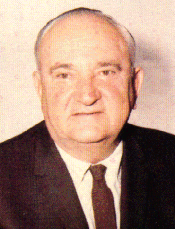 Adolph Rupp was the biggest racist on the planet. He was the end all and be all of evil in college basketball. He had the audacity to coach a Kentucky team that didn't have a single black player against Texas Western which had five black starters. He deserved to lose that game and all his collegiate wins are tarnished because he's so filled with hate.
Adolph Rupp was the biggest racist on the planet. He was the end all and be all of evil in college basketball. He had the audacity to coach a Kentucky team that didn't have a single black player against Texas Western which had five black starters. He deserved to lose that game and all his collegiate wins are tarnished because he's so filled with hate.
![]()
The Facts
Adolph Rupp coached the Kentucky Wildcats from 1930 to 1972. During that time, he won an unprecedented 876 victories, winning four national championships, twenty-seven SEC championships (82.2% winning) and turning Kentucky into one of the greatest collegiate basketball programs of all time.
One of the most memorable and important games during Rupp's career was the 1966 championship game against Texas Western (now University of Texas-El Paso). That game marked the first occurrence that an all-white starting five (Kentucky) played an all-black starting five (Texas Western) in the championship game. Texas Western won the game in a hard-fought victory, 72-65. This was especially significant as it came at a time when the civil rights movement came into full swing around the country.
In 1969 Rupp signed Tom Payne, an athletic 7'-2" center out of Louisville. This ended the aspect of all-white Kentucky teams forever and marked a new era with black Kentucky basketball legends including Jack Givens, Sam Bowie, Kenny Walker, Jamal Mashburn and Tayshaun Prince.
![]()
| Introduction | Why Basketball? Why Kentucky? Why Rupp? | Early Pioneers | The Game | Fall-out from the Game | Media Spin after the Game | Motivations for Perpetuating the Charge | Poor Journalism | The Evidence Against Rupp | Player Case Studies | The Evidence for Rupp | Reading List |
![]()
Adolph Rupp was a coach over a span of time when the society in America made dramatic changes.
In the spring of 1966 the nation was about midway between the assassinations of John F. Kennedy and Martin Luther King. It had watched Watts burn and witnessed the backlash against integration in Mississippi and elsewhere. - by Pat Forde, USA Today, "Legacy of Rupp Slow to Recede Repercussions of 1966 Title Game Still Echo in Many Ears," April 2, 1996.
Many basketball teams in the South did not have black players on their rosters or admit black students into their institutions. The Southeastern Conference especially had many member schools so opposed to integration that some schools refused to compete against other schools with black players. Mississippi State at one time had to sneak out of town under the cover of darkness to play in the NCAA Tournament. (This, after ignoring bids in earlier years.)
During that time, Rupp was playing all comers around the country, white or black. He often took his team to Chicago or New York to play against some of the powerhouse collegiate teams with black players. He recruited black players (at least fifteen - Lexington Herald Leader, March 31, 1990.), including Wes Unseld, Butch Beard and Jim McDaniels, but it was a difficult undertaking to convince a black player to come to Kentucky. Doing so, he would be the focal point in college basketball, as at that time Kentucky was the premier basketball dynasty. A black player would be subjected to the worst taunts and slurs imaginable during road games at places such as Oxford and Starkville Mississippi, Athens Georgia, Baton Rouge Louisiana etc. (Not to mention the aspect of arranging lodging and meals in the segregated South.) Nevertheless, there were a number of people who claimed that Rupp did not recruit these players or when he did, Rupp didn't recruit them hard enough.
When Rupp finally did sign Tom Payne in 1969, Kentucky was one of the early SEC schools (starting with Vanderbilt with Perry Wallace, followed by Auburn with Henry Harris, Alabama with Wendell Hudson) to sign a black player (*). Football players Darryl Bishop and Elmore Stephens joined the UK team in the 1971-72 season for a short time, Rupp's last season as coach. (by John McGill, Lexington Herald Leader, "Kentucky a Leader in Integrating SEC Sports," March 31, 1990.)
It is difficult to assess the attitude of a man who is long since dead, especially the Baron who was only well known by those few close to him. A large amount of anecdotal evidence suggests that Rupp showed few signs of being racist and in fact supported blacks while a few specific quotes attributed to him suggest he was indeed racist. So was Rupp racist or not? The information at hand is too contradictory to say for certain. Most likely he was to an extent, just as the majority of white men his age living in the South at the time would be judged racist by today's standards. There are two explicit instances where Rupp, while angry, made derogatory comments about blacks to people in confidence. Was he overtly racist? The evidence does not show any public statements or acts to suggest so.
"To put 1997 standards on Coach Rupp during the time that he coached -- in the 1930s, 40s, 50s, 60s and a couple of years in the 70s -- is totally unfair." - C.M. Newton, CNNSI, "New Era in Lexington," October 30, 1997.
"I know there have been a lot of people who thought he was a racist. But I think the times can dictate how people act -- where you're brought up, how you're brought up. If he was a racist, he wasn't alone in this country. I'm never going to judge anybody. . . . That's a long time ago, too . . . You learn from the past, and you go on." - Orlando "Tubby" Smith, Chicago Tribune, "New Face Leads Kentucky These Days," November 30, 1997.
The following information is intended to present the evidence at hand, both pro and con, so people can make an informed decision for themselves. Granted, much of the information is contradictory but that's what can happen when you try to understand a real person rather than a stereotype.
Warning and Note - This page is an extremely long and often rambling piece. If you are pressed for time and are only interested in the topic of Adolph Rupp and the evidence of whether he was racist or not, I would suggest you read the evidence against Rupp and the evidence for Rupp sections. If you are interested in the history of the championship game and its ramifications, I would suggest you read the game, fall-out from the game and media spin after the game sections. If you are interested in stories of some of the black pioneers who integrated basketball in the south, I would suggest you read the early pioneers and the player case studies sections.
Despite what some may assume, the major point of this entire page revolves around the media and how they have done a poor job reporting and discussing this topic. If you are interested in how the media has distorted and shaped this topic through the years, please be sure to read the media spin after the game, motivations for perpetuating the charge and examples of poor journalism
Please note that the page itself contains links to numerous other pages, photographs, reprints of newspaper articles etc. There are a few companion pieces to this page that are referred to on this page and which are linked directly below.
Return to top
![]()
Why Basketball? Why Kentucky? Why Rupp?
Why Basketball?
It may be useful to consider why it became an important issue that Adolph Rupp integrate his teams. Sports has always been an important tool in bringing together people of different races, economic levels, educational levels and interests. Basketball in particular was a high-profile sport where the players are easily recognizable (in comparison to football for instance) and work together closely as one unit.
"I think that in terms of race relations, athletics in general have contributed immeasurably to reducing tensions and putting people on a common ground." - William Winter on the impact of integrated athletics on the South, by Ed Hinton, Atlanta Journal and Constitution, "Run for Respect," September 7, 1986.
Many recognized that integrating sports teams was a quick way to gain acceptance and to bring about integration throughout society. Adolph Rupp was not the best example when it comes to integration, but he is also certainly not the worst. Perhaps people hoped UK would start signing black players so that other, more conservative schools could have the "excuse" to integrate their team (and in effect university) under the pretext of being able to compete.
Why Kentucky?
History shows that, while there were other factors, not until after Kentucky and Vanderbilt, in particular, began to integrate their track, football and basketball teams did other Southeastern Conference teams follow suit. The Southeastern, Southwest and Atlantic Coast Conferences were lagging behind the rest of the country when it came to integration in the 1960's. Kentucky was a entrance-way into breaking down the more conservative schools to its south. As a border state, Kentucky often had more in common with its midwestern neighbors to the north, Ohio, Illinois and Indiana than with states like Mississippi, Alabama and Louisiana.
"'With the location and the circumstances that existed in the high school programs [already integrated], it was only natural that the University of Kentucky would initiate it [integration],' says Charley Bradshaw, the former Kentucky coach who signed the SEC's first black players" - by Ed Hinton, Atlanta Journal and Constitution, "Run for Respect," September 7, 1986.
Secondly, the population of Kentucky was more diverse. While a large part of the state was rural, there was also a large midwestern influence in cities such as Louisville and Lexington. The result being that the political climate was more moderate than might be found further in the south. (Kentucky, after all, was not even part of the confederacy during the Civil War.)
The fact that the University of Kentucky basketball team was the preeminent basketball program at the time made it a prime target for those looking to break down barriers. For one, Kentucky was a high-profile team which travelled around the country and earned media attention. To many in the North, Kentucky basketball was the South, simply because none of Kentucky's neighbors had the desire to travel (due in part because many didn't want to play against integrated teams but most likely also because not enough support or interest was given to basketball at these other schools to allow them to travel any substantial distances) to such places as New York City or Chicago. Therefore, Kentucky received the lions share of the scrutiny for why Southern schools were using all-white teams. Secondly, because of Kentucky's stature, it was felt that integrating the squad would have dramatic effects on the rest of the league. Having the hated UK come to town with black players could only hasten the rest of the league into recruiting their own. Ideally, coaches and athletic directors could tell their boosters and fans that "UK is signing blacks, we have to do the same or we'll never win."
"Kentucky's pursuit of [Butch] Beard means that the SEC has a new gentleman's agreement to forget the old one [to not recruit blacks] and thus the last major-conference color bar has quietly fallen. This does not mean that every southern school is out chasing Negro athletes. But the pressure on those that are holding out for sporting segregation is likely to become irresistible as soon as they are regularly whupped by their integrated neighbors" - by Frank Deford, Sports Illustrated, "The Negro Athlete is Invited Home," June 14, 1965, pp. 26-27.
The hypothesis that people, both inside and outside UK, wanted UK to integrate its teams because that would mean more rapid integration throughout the South is supported by this item from Butch Beard's recruitment.
"Practically every day his senior year, Beard said, 'some Kentucky alum' came by his home. 'They wanted Kentucky to be the first to integrate the SEC. They said if Adolph did it, everybody would.'" - by Dave Kindred, Atlanta Journal and Constitution, "Facts Belie Stereotype of Racist Rupp at UK," May 11, 1997.
Why Rupp?
There are a number of reasons behind the eventual denunciation of Rupp, and in some ways it may seem inevitable. Rupp came from the obscurity of the Kansas plain, the son of hard-working Mennonite German immigrants. He went on to not only build a basketball dynasty where none had existed before but to play a hand in the shaping of the modern game. He was brash and arrogant when it came to his coaching ability and didn't mince words. His domination over teams in his own conference can only be described as ruthless. Rupp not only demolished his SEC foes, he didn't hide his disdain for these schools who put all their emphasis on football.
The coaches at both schools [Georgia Tech and Georgia] still taught physical education classes, or were football assistants filling in between seasons; they got a bonus for taking on basketball. It was a practice so obsolete the Adolph Rupp was insulted that his Kentucky teams had to play them." - by Furman Bisher, Atlanta Journal and Constitution, "Oh, If Adolph Rupp Could See the Football State Now," February 10, 1985.
"Because the other schools were unwilling to make such a commitment to a sport [basketball] that couldn't show a profit, the SEC was so weak as a league that Kentucky had to depend on non-conference games for quality competition. Rupp, not known for subtlety, told the rest of the SEC it had better improve or 'we'll bury you.'" - by Tony Barnhart, The Atlanta Journal and Constitution, "Basketball Revolution Comes to the South: Once the Stepchild of Most Athletic Programs,: The Game has Taken Hold in the SEC, Thanks to Integration . . .: and an Old Man in a Brown Suit," November 22, 1987.
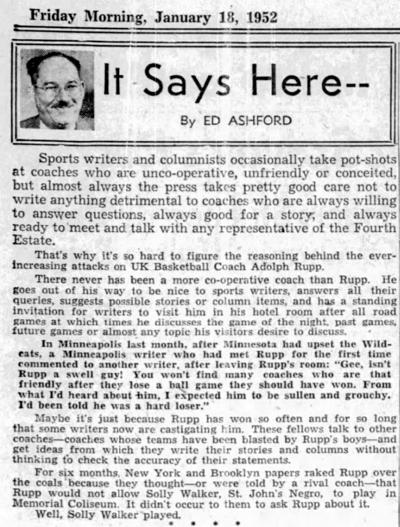 |
"I know I have plenty of enemies," he [Rupp] once said, "but I'd rather be the most hated winning coach in the country than the most popular losing one." - by Joe Gergen, Sporting News Final Four Archive, "1951, Kentucky is Top 'Cat Again."
"Defeat and failure to me are enemies. Without victory, basketball has little meaning. I would not give one iota to make the trip from the cradle to the grave unless I could live in a competitive world." Adolph Rupp after gaining his fourth NCAA title, - by Jim Savage, The Encyclopedia of the NCAA Basketball Tournament, Dell Publishing, 1990, pg. 705.
Rupp was also obsessed with not only winning but with perfection from his teams.
Once the Fabulous Five ran up a 38-4 halftime lead, but Rupp was furious - a single player had scored all the opponent's points, and the Baron wanted him stopped. "Somebody guard that man," Rupp bellowed. "Why, he's running wild !" - by Jim Savage, The Encyclopedia of the NCAA Basketball Tournament, Dell Publishing, 1990, pg. 706.
When asked to compare his current 50-51 team which went on to win a national championship to the Fabulous Five team of 47-48, Rupp said, "They [the Fabulous Five] liked to crush everybody early and get it over with. This bunch is tender-hearted - the only one they're killing is me." - by Associated Press, "Rupp Says Fletcher Caused Most Trouble," Lexington Herald, March 25, 1951.
While Rupp enjoyed the limelight, media relations or sensitivity was not his strong suit. It seems apparent that Rupp was consumed with coaching basketball and was mostly likely oblivious to most other things in life, including civil rights.
"He (Rupp) probably misjudged the power and impact and rightness of the civil-rights movement because, to tell the truth, Rupp never seemed interested in much except himself and basketball." - by Billy Read, Lexington Herald Leader, March 1997.
"I concede one thing to Sports Illustrated and George Will. Rupp probably never cared that his teams had no black players. All that mattered to him was winning and he won without them," - by Dave Kindred, Lexington Herald Leader, "Calling Rupp a Racist Just Doesn't Ring True," December 22, 1991.
It should also be noted that Rupp's personality wasn't the most sociable, off the court or on, and this has hurt him in the eyes of history.
"Rupp was unique," said Bill Spivey, a Kentucky star in the 1950s. "He wanted everybody to hate him and he succeeded. He called us names some of us had never heard before." - by Dave Kindred, Atlanta Journal and Constitution "The Baron Made Basketball Important," March 16, 1997.
"Adolph would never allow himself to get close to the players," [former player Tommy] Kron said. "He was a tough, gruff kind of guy who would verbally abuse his players to get them to play harder." by Jo-Ann Barnas, Detroit Free Press, "They Changed the Game: Texas Western," March 29, 1996.
Harry Lancaster relates one of Rupp's favorite jokes about himself.
While he [Rupp] was still coaching he liked to tell the story about a coach in the Southeastern Conference who had heard that Adolph was dead. The coach went to his athletic director to get funds to make the trip to Lexington for the funeral. "What a nice gesture," the athletic director told him "What a nice thing to do to pay honor to Coach Rupp." "Honor hell," the coach shouted, "I want to go up there just to make damn sure he's in that box." - by Harry Lancaster, Adolph Rupp As I Knew Him, Lexington Productions, 1979, pg. 119
Return to top
![]()
Sidebar: The Kentucky Day Law The Kentucky Day Law was proposed by state Representative Carl Day of Breathitt County. It was signed into law March 1904, and took effect in July 1904. The intention of the law was to prohibit black and white students from attending the same school. In addition, black students were not allowed to attend schools located less than 25-miles from a whites-only school. This law was aimed directly at Berea College, which had begun to co-educate blacks and whites together. The law's passing resulted in a lawsuit between Berea and the Commonwealth of Kentucky that made it to the U.S. Supreme Court. In 1908, the Justices upheld the Law when they determined to extend the 1896 opinion of Plessy versus Ferguson to include state institutions of higher learning. This was later overturned as part of the Brown versus Board of Education, Topeka ruling in 1954.
|
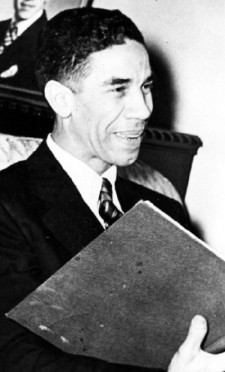 |
In 1954, the undergraduate school was opened to blacks and twenty enrolled. (Lexington Herald Leader, "History of Blacks in Lexington," February 21, 1988.) This occurred after the United State Supreme Court in June 1954 struck down the Day Law as part of the famous "Brown vs. Board of Education" ruling and mandated that integration occur "with all deliberate speed." The decision was met with approval from Kentucky's governor, Lawrence Wetherby, state senators Earle Clements and John Sherman Cooper, all of whom expressed their support of the ruling.
In 1965, Joseph Walter Scott joined the sociology department and became the first black full-time faculty member at the University. (Lexington Herald Leader, "'49 Lawsuit Started UK on Path to Diversity," April 14, 1996.)
One important factor that should not be overlooked when considering integration of athletics in the South was the timing of passage of the Civil Rights Act of 1964, which president Lyndon Johnson signed in law on July 2, 1964.
The heart of the law dealt with public accommodations, saying that blacks no longer could be excluded from restaurants, hotels and other public facilities. For an integrated athletic team travelling in the South, these were exactly the types of accommodations relied upon during such a road trip. This law didn't change practices in the South overnight, but it did give those who were willing to defy segregation the power of courts and in theory the federal government behind them. Prior to this time, defying segregation was an extremely dangerous proposition (not that it wasn't even after the law went into effect.) This reality is one which some critics in the past have either underestimated or overlooked completely.
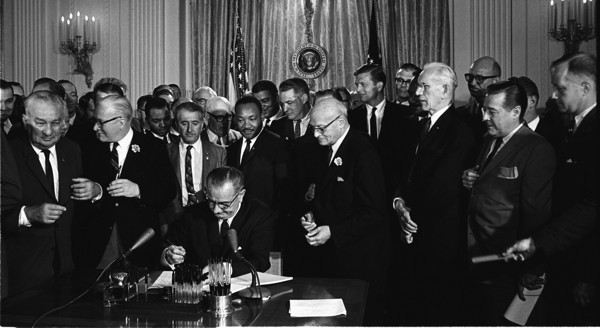 |
Athletics - Basketball
The first black basketball player in the SEC was Perry Wallace (from Nashville and valedictorian of his senior class at all-black Pearl High School) at Vanderbilt, who was also recruited by Kentucky.
"He [Wallace] had been the ideal candidate for the Grand Experiment. He was a class valedictorian who would have no trouble getting through school. He came from a stable family, he was well-spoken, a Nashville native and a local son; Wallace's presence put a lot of pressure on Vanderbilt to recruit him. A couple of other SEC teams talked to him, all to Wallace's surprise. He had had no intention of becoming a pioneer." - by Los Angeles Times Service, Reprinted in Philadelphia Inquirer, "In the South, Blacks were Pioneers on Sports Frontier," March 21, 1983.
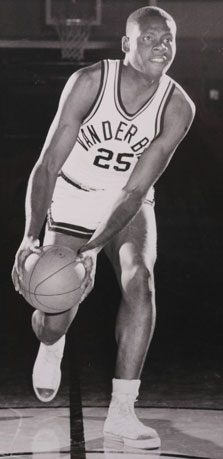 |
"I saw athletes, particularly black athletes, who were illiterate," he said. "I saw seniors who hadn't grown culturally. I called these schools the new plantation. I was scared away, even though they were in the North, the land of the exodus." - by Los Angeles Times Service, Reprinted in Philadelphia Inquirer, "In the South, Blacks were Pioneers on Sports Frontier," March 21, 1983.
Pressure from the local community and a desire to break stereotypes led him to make his decision to break the SEC color barrier in basketball.
"I wanted to be an example of what black people could produce," he said. I wanted to show that we weren't just colored people on the wrong side of the track, who hadn't developed good values, who weren't intelligent or productive. . . I was always conscious of not reinforcing the negative images of black players," he said. "It inhibited me . . . I played a cautious, conservative game." - by Los Angeles Times Service, Reprinted in Philadelphia Inquirer, "In the South, Blacks were Pioneers on Sports Frontier," March 21, 1983.
With Wallace on the freshman team was Godfrey Dillard (from Detroit, MI). The two had to put up with opposing fans who "shouted racist slogans, spat at them, threw soft drinks and even threatened to lynch the two young strangers in black and gold trunks." (Joseph Stroud, Lexington Herald Leader, "Breaking the Color Barrier," March 1 1992.) (JPS Note: Here is an article which interviews Wallace during his freshman year.)
When Wallace would go on the road with Vanderbilt, especially at Mississippi or Auburn, the fans would call him every racial name imaginable. They would threaten to castrate him. In some places, it was said, cheerleaders would lead racial cheers against him. School officials, meanwhile, sat silent. Wallace said he was concerned for his life at times. He figured he could be shot. "This was the South," he said. "At that time in the South, a time of social upheaval, anything could happen." - by Los Angeles Times Service, Reprinted in Philadelphia Inquirer, "In the South, Blacks were Pioneers on Sports Frontier," March 21, 1983.
"It was just a chilling, scary situation. The trips to the south, the crowd was just awful, calling you all kinds of names, all kinds of racial epitaphs. They threatened you, and they hoped above all that you would fail." - Perry Wallace, "Glory in Black and White," CBS, April 2002.
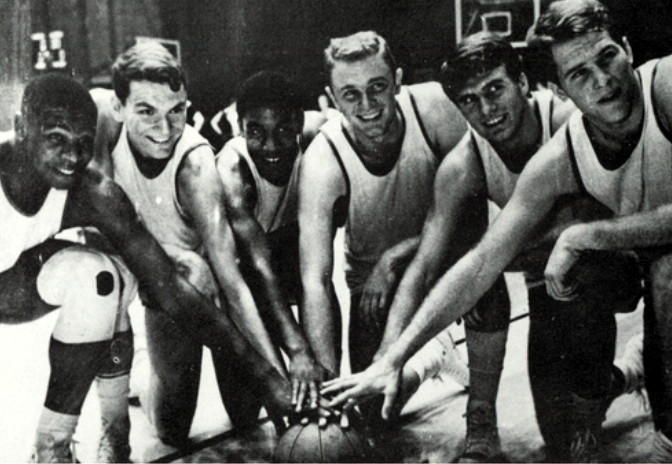 |
After injuring his knee and becoming involved with the campus "Afro-American Society" and local and campus politics, Dillard was unceremoniously dropped from the team and never got to play varsity basketball for Vanderbilt. Wallace went on to be named captain and earn second team All-SEC honors as a senior but his journey was anything but easy.
"I almost had a nervous breakdown," he [Wallace] said of his college days. "They weren't the worst four years any black person had ever encountered, but they were difficult years. I had to figure out how I was going to deal with the pain, the confusion. It took some time." - by Los Angeles Times Service, Reprinted in Philadelphia Inquirer, "In the South, Blacks were Pioneers on Sports Frontier," March 21, 1983.
"Would I ever do it again?" wonders Wallace. "I don't know. Probably not. But a son of mine? God, no. Never. I'd never put him through something like that." - by Los Angeles Times Service, Reprinted in Philadelphia Inquirer, "In the South, Blacks were Pioneers on Sports Frontier," March 21, 1983.
The fate of many of these pioneers was tragic.
Henry Harris, the first Auburn player, jumped off a New York (sic, actually Milwaukee) building and killed himself a few years later. Tom Payne, the first at Kentucky, is in a California prison on his fourth rape conviction. Both Wallace and Dillard say they know why. "In some ways, being in that position puts you on a fence, where you fall on one side or the other," Wallace said. "And that was clear to me -- it was clear which side I need to fall on. And I had to fight to do it and to find the strength to do it." - by Joseph Stroud, Lexington Herald Leader, "Breaking the Color Barrier," March 1 1992.
The fourth black player in the SEC was Wendell Hudson at Alabama in 1969. He described his experience as "It was a difficult experience, at times, but a positive one," said Hudson, an assistant basketball coach at Rice. "I'm a better person for having done it. If I had to do it over again, I would, without a doubt." - by Los Angeles Times Service, Reprinted in Philadelphia Inquirer, "In the South, Blacks were Pioneers on Sports Frontier," March 21, 1983.
The Atlantic Coast Conference didn't get off to a rousing start either when beginning to admit black players in the early 1960s. One problem the ACC had was that in response to a point shaving scandal, the league 'voluntarily' increased their admission standards for scholarship athletes. This made it even more difficult to find a black athlete who was adept both on the basketball court and in the classroom. A great high school talent, Lou Hudson of all-black Dudley High School in North Carolina shunned the league and instead opted to enroll at Minnesota where he became an All-American for the Golden Gophers.
"The only ACC school that showed any interest in me was N.C. State," Hudson says. "They invited me to a game against Villanova in the Greensboro Coliseum. Villanova had a black player named Hubie White, and he drew jeers from the crowd....I never actually met Everett Case, but it was suggested that if I enrolled as a student, the booster club would cover my expenses. It seemed to me like a chicken way to operate. They obviously were covering their backs.... I figured, if you can't swim, why walk on thin ice? Times were beginning to change, but I came along a couple of years too early. They weren't ready for me, and I wasn't ready to be a pioneer under those conditions." - Lou Hudson by Larry Keech in Greensboro News & Record, "One March Night 30 Year Ago Changed the Face of Basketball Today," March 7, 1996.
Billy Jones was the first black varsity basketball player in the ACC, playing for the Maryland Terrapins in 1965-66. (Note that his teammate Julius "Pete" Johnson was in his same class but redshirted his sophomore season.) Jones related his experiences growing up in Maryland
"I'm the only one [of his black friends and teammates in Baltimore] who attended a major school. We would get tons of letters from college recruiters. The minute they found out you were black, the communication stopped."
"I remember playing lacrosse for Towson, and someone putting their stick in my groin with the intent to injure. We had an upset win in basketball at Dundalk. The crowd rocked our bus as we were trying to get off the parking lot." - by Paul McMullen, Baltimore Sun, "History in Black, White -- and Gray," December 10, 1999.
The transition to college for the black player was not as harsh as it was for the SEC pioneers, although there were still obstacles.
When Darryl Hill played for Maryland [in football] in 1963, there was speculation that Clemson and South Carolina, then a member, would pull out of the ACC, but both stayed. Brought in by Bud Millikan, Jones remembers the ovation he received when he entered his first ACC tournament game, at Reynolds Coliseum in Raleigh, N.C.
"Some basketball people appreciated what I was doing," Jones said. "You've got to remember, South Carolina had a bunch of players from New York, and they were used to dealing with people like me. I do remember one instance at South Carolina, when I was going for a ball rolling into the corner, and somebody in the stands called me [a racial epithet]."
"As much as possible, we [the team members] did things together, but [current Maryland coach] Gary Williams and the rest of the guys were welcome in places where I was not. You're captain of the basketball team as a senior, and you get no offers to join a fraternity? I understood. I wasn't even irritated."
All above quotes by Paul McMullen, Baltimore Sun, "History in Black, White -- and Gray," December 10, 1999.
JPS Note - It is interesting to note that Jones was in attendance at the championship game in Cole Field House. He was entertaining a recruit and was sitting a few rows behind the Kentucky bench.
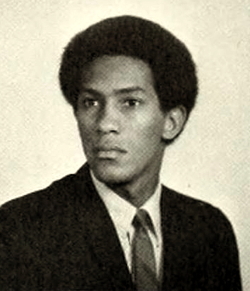 |
"I wasn't hell-bent to be a pioneer in ACC basketball," Claiborne says now. "Deep down, I still probably would have preferred to play at (North Carolina) A & T. But that would have been a selfish decision on my part. Going to a school with Duke's academic reputation and playing in the ACC were the kinds of opportunities that raised the expectations of the (black) community in a small town like Danville." - C.B. Claiborne by Larry Keech in Greensboro News & Record, "One March Night 30 Year Ago Changed the Face of Basketball Today," March 7, 1996.
Claiborne still encountered racial problems during his stay at Duke, both on and off the court.
"I can remember hearing racial slurs and seeing Confederate flags when we played against Alabama in Tuscaloosa, Ala.," Claiborne says. "When I went to the foul line, I gritted my teeth and told myself, 'If I never make another free throw, I'm going to make this one.'"
"I could sense that there was a group of (Duke) alumni who didn't want me involved," he says. "They would never say anything to my face. But you can read some things from body language, like a certain kind of expression or when somebody turns their back on you...I can remember not being invited to a team awards banquet at Hope Valley Country Club because it was segregated." - C.B. Claiborne by Larry Keech in Greensboro News & Record, "One March Night 30 Year Ago Changed the Face of Basketball Today," March 7, 1996.
Below is a listing of the first black athletes to play basketball in ACC, SEC and the old Southwest Conference schools.
JPS Note - Some will attempt to claim that because one school signed players a few years before another that this makes one school morally superior than the other. I personally tend to think that all the schools were lagging and this listing indicts every single school.
| School | Initial Varsity Season* | Player | Career Summary |
|---|---|---|---|
| Houston | 65-66 | Don Chaney Elvin Hayes | Chaney, an All-America as a senior, averaged 12.6 ppg in three seasons and was a member of the Final Four teams in 1967 and 1968. Hayes, a three-time All America, averaged 31 ppg and 17.2 rpg in three seasons. The Hall of Famer led the Cougars in scoring and rebounding all three years. |
| Maryland | 65-66 | Billy Jones | Averaged 8.9 ppg and 4.5 rpg in three seasons. He was the Terrapins' third-leading scorer and rebounder as both a junior and senior. |
| Duke | 66-67 | C.B. Claiborne | Averaged 4.1 ppg in three seasons |
| Texas Christian | 66-67 | James Cash | Averaged 13.9 ppg and 11.6 rpg in three seasons. All-SWC selection as a senior when he led the Horned Frogs in scoring (16.3 ppg) and rebounding (11.6 rpg). He had six games with at least 20 rebounds. |
| Baylor | 67-68 | Tommy Bowman | Led the Bears in scoring (13.5 ppg) and rebounding (9.4 rpg) in his first varsity season. All-Southwest Conference choice in '67-68 and '68-69. |
| North Carolina | 67-68 | Charlie Scott | Averaged 22.1 ppg and 7.1 rpg in three seasons. He was a consensus second-team All-America choice in his last two years. |
| Vanderbilt | 67-68 | Perry Wallace | Averaged 12.9 ppg and 11.5 rpg in three varsity seasons. He was the Commodores' leading rebounder as a junior (10.2 rpg) and leading scorer as a senior (13.4 ppg). |
| Wake Forest | 67-68 | Norwood Todmann | Averaged 10.5 ppg and 4.1 rpg in three seasons, including 13.3 ppg as a sophomore. |
| Arkansas | 68-69 | Thomas Johnson | Averaged 15.5 ppg for 1967-68 freshman squad |
| North Carolina State | 68-69 | Al Heartley | Averaged 4.8 ppg in three seasons. |
| Texas | 68-69 | Sam Bradley | Averaged 6.5 ppg in his only varsity season. |
| Auburn | 69-70 | Henry Harris | Averaged 11.8 ppg, 6.7 rpg and 2.5 apg in three-year varsity career. Standout defensive player was captain of Auburn's team as a senior. |
| Rice | 69-70 | Leroy Marion | Averaged 5.6 ppg and 3.3 rpg in a three-year varsity career marred by a knee injury. |
| Texas Tech | 69-70 | Gene Knolle Greg Lowery | Knolle, a two-time All-SWC selection, averaged 21.5 ppg and 8.4 rpg in two seasons. Lowery, who averaged 19.7 ppg in his three-year career, was first-team All-SWC as a sophomore and senior and a second-team choice as a junior en route to finishing as the school's career scoring leader (1476 points). |
| Alabama | 70-71 | Wendell Hudson | Averaged 19.2 ppg and 12 rpg in his career, finishing as Alabama's fourth-leading scorer and second-leading rebounder. The two-time first-team All-SEC selection was a Helms All-America choice as a senior in 1972-73. |
| Clemson | 70-71 | Craig Mobley | Played sparingly in his only season. |
| Georgia | 70-71 | Ronnie Hogue | Finished three-year varsity career as the second-leading scorer in school history (17.8 ppg). He was an All-SEC choice with 20.5 ppg as a junior, when he set the school single-game scoring record with 46 points vs. LSU. |
| Kentucky | 70-71 | Tom Payne | Led the Wildcats in rebounding (10.1 rpg) and was their second-leading scorer (16.9 ppg) in his only varsity season before turing pro. He had a 39-point, 19-rebound performance vs. LSU |
| South Carolina | 70-71 | Casey Manning | Averaged 2.6 ppg and 1.8 rpg in three seasons. |
| Florida | 71-72 | Malcolm Weeks Steve Williams | Meeks played sparingly in two seasons. Williams, who averaged 8 ppg and 5.2 rpg in three varsity seasons, was the Gators' second-leading scorer as a sophomore (12.8 ppg). |
| Georgia Tech | 71-72 | Karl Binns | He was the leading rebounder (6.5 rpg) and fourth-leading scorer (8.8 ppg) in his only season with the Yellow Jackets. |
| Louisiana State | 71-72 | Collis Temple | Averaged 10.1 ppg and 8.1 rpg in three seasons. Ranked second in the SEC in rebounding (11.1 rpg) and seventh in field-goal shooting (54.9%) as a senior. |
| Mississippi | 71-72 | Coolidge Ball | Two-time All-SEC selection (sophomore and junior years) averaged 14.1 ppg and 9.9 rpg in three seasons. He led the Rebels in scoring (16.8 ppg) and was second in rebounding (10.3 rpg) as a sophomore. |
| Tennessee | 71-72 | Larry Robinson | Averaged 10.9 ppg and 8.8 rpg in two seasons. Led the Volunteers in rebounding and field-goal shooting both years. |
| Texas A & M | 71-72 | Mario Brown | Averaged 13 ppg and 4.3 apg in two seasons, leading the team in assists both years. |
| Virginia | 71-72 | Al Drummond | Averaged 5.2 ppg in three varsity seasons. |
| Mississippi State | 72-73 | Larry Fry Jerry Jenkins | Fry averaged 13.8 ppg and 8.1 rpg in three seasons. Jenkins, an All-SEC selection as a junior and senior when he was the Bulldogs' leading scorer each year, averaged 19.3 ppg and 7 rpg in three seasons. |
* - Note that during this era freshmen were ineligible for varsity. This table only lists the first black player at the respective schools to play varsity. There were some cases where black players participated on freshmen teams but did not end up playing varsity, for various reasons, and subsequently are not listed above. In addition in not all cases did these players receive a scholarship from the school. | |||
Athletics - Football
The first black athlete to receive a grant-in-aid and play varsity for a SEC school was Nat Northington (from Thomas Jefferson High School in Louisville) for the University of Kentucky football team in the fall of 1967. (Lexington Herald Leader "History of Blacks in Lexington," February 21, 1988). Greg Page (from Middlesboro, KY) was also on the team and was awarded a scholarship. (Letter to the Editor, by Edward Breathitt, Chairman, Board of Trustees, University of Kentucky, Lexington Herald Leader "New Coach Fits Well with Kentucky Goals and Legacy," May 13, 1997.) Jim Green was also signed by Kentucky to join the Wildcat track team.
The New York Times, December 20, 1965 pg. 56. LEXINGTON, Ky., Dec. 19 (AP) - For the first time the University of Kentucky has given an athletic grant-in-aid to a Negro. He is Nat Northington, a star back and an "A" student at Thomas Jefferson high School in Louisville. The university president, John Oswald, said today: "Northington is an outstanding young man who will be a great credit to the university and its football program." Kentucky had tried unsuccessfully for two years to sign Negroes to grants-in-aid, including two basketball players and a football player who went elsewhere. |
"By August 1967, indications were strong that the historic role of the first black to participate in a Southeastern Conference football game would belong to Greg Page, defensive end. He was outgoing, talented, and by preseason practice that year was listed on the depth chart second only to the team leader, starting defensive end Jeff Van Note, who would spend 18 years with the Atlanta Falcons. Then came the 'pursuit drill' . . . Greg Page got to the ball-carrier first. Piling in behind Page came every other defensive player. . . . When the play was over, Greg Page lay on the ground. 'We knew he was hurt,' says Van Note, . . .'but not how badly he was hurt.'" - by Ed Hinton, Atlanta Journal and Constitution, "Run for Respect," September 7, 1986.
 |
After much soul searching themselves, the freshman stuck it out to play the next year on the varsity. The decision was not an easy one though. "When Hackett went home, his friends and neighbors admonished him: 'They killed Greg up there [Lexington], man. What are you doing still up there?'. After thinking it over, Hackett and Hogg followed Northington's advice to stick it out. "We decided to stay," says Hackett. "And it was rough."
(All above quotes from "Run for Respect," by Ed Hinton, Atlanta Journal and Constitution, September 7, 1986.)
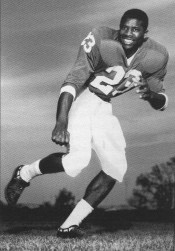 |
"Yeah, Daddy, he's still quite a UK fan. He's still very, very active. He follows them everywhere. In fact, he was in New York when they won their national championship [in 1996]. He retired from GE, I think about eight or 10 years ago, and now his life is his grandkids and his kids and UK. And I mean he is one of those born-again UK fans." Wilbur Hackett Jr., by John Filiatreau, Louisville Magazine Web Edition, "Boys of Summer," April 1997.
Along with Hackett, Houston Hogg (Daviess County) and Albert Johnson (Thomas Jefferson, Louisville) made up the black recruiting class that year. The decision to come to UK was still a big step filled with potential dangers, real and imagined.
"There were a lot of things said about it, by family and friends alike," recalls Hackett's mother Olive. "But all the schools were having problems with race at that time. Everybody always mentioned Adolph Rupp, but to me, there was an Adolph Rupp at every school." - by John Filiatreau, Louisville Magazine Web Edition, "Boys of Summer," April 1997.
After the injury to Page and the loss of Northington (and Johnson who got injured and also left), Hogg and Hackett went on to face the SEC alone. [No team in the SEC had a black player at the time save Tennessee with one (Lester McClain).]
"I had some very tough times. I mean, you're talking about George Wallace standing in front of the doors at the University of Alabama. You're talking about going to Mississippi for the first time as a 17- or 18-year old kid, traveling the South. This was at the time of the Freedom Riders. You're talking about racial strife that really intensified; you're talking about the riots. I had some incidents, racial incidents, that I will always remember. But overall, I enjoyed it. UK was good to me. I met a lot of good people there; I still have good contacts with people at UK. If I have something that I regret, it's that I never managed to finish my degree." - by John Filiatreau, Louisville Magazine Web Edition, "Boys of Summer," April 1997.
Hackett carved out a respectable collegiate career, despite playing on outmanned UK football teams. His junior year, he was elected captain of the team, making him to first black to be so recognized on an SEC team, an honor which was repeated his senior season.
"I had a good junior year, made honorable mention All-SEC, and after that we started to get more blacks," Hackett says. "We recruited about six guys from Louisville, and things began to change." - by John Filiatreau, Louisville Magazine Web Edition, "Boys of Summer," April 1997.
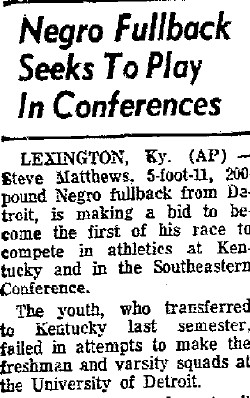 |
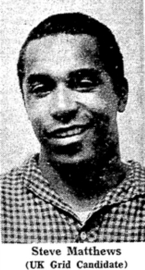 |
Reaction by some coaches included Georgia Tech football coach Bobby Dodd who said "I am not surprised. Since it has been rumored that Kentucky will have a Negro basketball player soon. I am not surprised that they have a Negro player out for football." Said Vanderbilt football coach Jack Green: "That's their business. If they bring him down here we'll play them. We'll go up there and play them. We've played schols in the past with Negro athletes. If a school wants to play a Negro athlete that's their business. We have no objections." (quotes from "Negro is Among 71 UK Hopefuls," by Billy Thompson, Lexington Herald, late March 1964.)
JPS Note - The article did not interview football coaches from less urban schools like those in Alabama and Mississippi.
Matthews, who was fifth on the depth chart at fullback knew that he faced long odds at making the squad, especially since he admitted at the outset that he was not in great shape at the start of the training camp. He did not end up making the team, but he did achieve a Southeastern Conference milestone for his efforts.
Return to top
![]()
The game between Kentucky and Texas Western didn't hold the importance at the time that it received in later years. Western won 72-65 in what many concede was a sloppy ball-game. Kentucky, despite not having any starter taller than 6-5, steadily improved over the year and formed into a fine-tuned machine, relying on the shooting of their two stars Pat Riley and Louie Dampier. Kentucky was impressive during the tournament in dispatching Dayton 86-79 and the Cazzie Russell-led Michigan Wolverines 84-77. In the semifinals, Kentucky outlasted Duke 83-79, in a game where players from both sides were battling the flu. Texas Western came into the tournament with a 23-1 record and a ranking of #3 in both wire-service polls. Despite this, they were largely an unknown commodity to most of the nation, no doubt due in large part to their remote location in El Paso. They were led by a young Don Haskins, who ground into his team a strong dedication to tough defense. Their road to the final four was rocky, surviving an overtime victory over Cincinnati and a double overtime contest with Kansas.
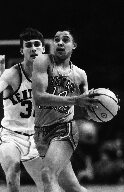 | The title game was a close, hard-fought affair which upon reflection actually turned early in the game. Haskins used a three-guard lineup (by starting 5-6 Willie Worsley) to counteract Kentucky's speed and ball-handling. With the score 10-9, Western, Bobby Joe Hill stole the ball at midcourt from Tommy Kron and sprinted down for the lay-up. The next play, Hill again stole the ball, this time from Dampier, and scored. That was the turning point.
I wish I could forget those two steals," Dampier said. "I wish I could say that he fouled me, but he didn't. I was changing directions, dribbling with my left hand . . .and then it was gone. I can never forget it, either, because my wife has an 8-by-10 picture of it hanging on our wall." by Jo-Ann Barnas, Detroit Free Press, "They Changed the Game Texas Western," March 29, 1996. |
The insertion of Worsley gave Kentucky a height advantage at that position. He was assigned to guard Larry Conley who was nine inches taller than the Texas Western player. UK tried to take advantage of the mismatch on the offensive end,
Rupp continually called plays for Conley to get the ball on the blocks and shoot over Worsley, but that strategy failed when Conley - like the rest of his Wildcat teammates - couldn't get his shots to fall. - by Anthony Holden, CBS SportsLine, "Texas Western Stuns Kentucky," 1999.
Kentucky would make some rallies as the game progressed but the strong inside play of David Lattin and the consistent ball-handling and solid free-throw shooting of the Western guards ensured the victory.
"We had no idea what we were getting into," [Pat] Riley said. "In those days, players didn't dunk. I hadn't seen anyone dunk. Guys barely jumped high enough to stick a dollar bill under their shoes. But these guys came out, and after they had dunked on me about three times, I knew they had a lot more to accomplish than we did." - by Jere Longman, Philadelphia Inquirer, "Forget the Glitter, Riley is a Coach of Substance," June 8, 1987.
- Saturday, March 19 1966 -
NCAA Championship (at College Park, MD)
Kentucky - 65 (Head Coach:Adolph Rupp) - [Final Rank 1st by AP and 1st by UPI ]
| Player | Min | FG | FGA | FT | FTA | Reb | PF | Ast | TO | Pts |
|---|---|---|---|---|---|---|---|---|---|---|
| Louie Dampier | 40 | 7 | 18 | 5 | 5 | 9 | 4 | 1 | 6 | 19 |
| Tommy Kron | 33 | 3 | 6 | 0 | 0 | 7 | 2 | 3 | 5 | 6 |
| Larry Conley | 35 | 4 | 9 | 2 | 2 | 8 | 5 | 1 | 0 | 10 |
| Pat Riley | 40 | 8 | 22 | 3 | 4 | 4 | 4 | 1 | 2 | 19 |
| Thad Jaracz | 28 | 3 | 8 | 1 | 2 | 5 | 5 | 0 | 2 | 7 |
| Cliff Berger | 12 | 2 | 3 | 0 | 0 | 0 | 0 | 0 | 0 | 4 |
| Gary Gamble | 2 | 0 | 0 | 0 | 0 | 0 | 1 | 0 | 0 | 0 |
| Jim LeMaster | 3 | 0 | 1 | 0 | 0 | 0 | 1 | 0 | 0 | 0 |
| Bob Tallent | 7 | 0 | 3 | 0 | 0 | 0 | 1 | 0 | 1 | 0 |
| Totals | 200 | 27 | 70 | 11 | 13 | 33 | 23 | 6 | 16 | 65 |
Texas Western - 72 (Head Coach: Don Haskins) - [Final Rank 3rd by AP and 3rd by UPI]
| Player | Min | FG | FGA | FT | FTA | Reb | PF | Ast | TO | Pts |
|---|---|---|---|---|---|---|---|---|---|---|
| Bobby Joe Hill | 40 | 7 | 17 | 6 | 9 | 3 | 3 | 3 | 6 | 20 |
| Orsten Artis | 40 | 5 | 13 | 5 | 5 | 8 | 1 | 0 | 1 | 15 |
| Nevil Shed | 12 | 1 | 1 | 1 | 1 | 3 | 1 | 0 | 2 | 3 |
| David Lattin | 32 | 5 | 10 | 6 | 6 | 9 | 4 | 0 | 0 | 16 |
| Willie Cager | 30 | 1 | 3 | 6 | 7 | 6 | 3 | 0 | 3 | 8 |
| Harry Flournoy | 6 | 1 | 1 | 0 | 0 | 2 | 0 | 0 | 0 | 2 |
| Willie Worsley | 40 | 2 | 4 | 4 | 6 | 4 | 0 | 1 | 6 | 8 |
| Totals | 200 | 22 | 49 | 28 | 34 | 35 | 12 | 4 | 18 | 72 |
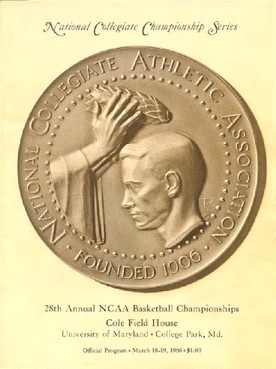 |
| 1966 NCAA Finals Program |
Preceding the game, there was knowledge that the contest would be special because of the unique racial make-up of the teams, however it was not of the proportions which are often accorded it today.
"All seven of the Texas Western regulars are Negroes, hardly a startling fact nowadays but one that becomes noteworthy because of the likely meeting with Kentucky or Duke. Both those teams are all-white. It is unfortunate -- but it is a fact -- that some Ethniks, both white and Negro, already are referring to the prospective national final as not just a game but a contest for racial honors. More than anything else, however, all four finalists demonstrate that their players are brothers under their recruited skins." - by Frank Deford, Sports Illustrated, "Now There are Four," March 21, 1966.
The players themselves were concentrating on the game at hand.
"We didn't see this as a black-white thing -- we just loved to play ball," - Bobby Joe "Slop" Hill, Texas Western Guard, Bergen Record, March 3, 1996.
"For us, I honestly don't think it was a black-white thing. It was Texas Western going up against Kentucky, who's been there before." - Nevil "The Shadow" Shed, by Jack Wilkinson, Atlanta Journal and Constitution, April 1, 1991.
"It just happened that we had five black starters, and Kentucky had five white starters. We were never coached like that. We weren't into black-white. There weren't any racial slurs. We never heard Pat Riley, Louie Dampier, those great Kentucky players, say a word." - David Lattin, by Dave Kindred The Sporting News, "Haskins truly put his heart into game. Winner of 719 games, national title had his share of suffering," August 31, 1999.
"To us it was a pride game," said Texas Western's Harry Flournoy. "It was just simply an opportunity to show the nation what we had. We didn't say, 'We're going to go out there and whip those white players' butts.'" - by Pat Forde, USA Today, "Legacy of Rupp Slow to Recede Repercussions of 1966 Title Game Still Echo in Many Ears," April 2, 1996.
"That part [black-white] never crossed our minds," say former Texas Western guard Orsten Artis. - by Curry Kirkpatrick, Sports Illustrated, "The Night They Drove Old Dixie Down," April 1, 1991.
"At the time we were a group of college kids trying to win a national championship," - Kentucky center Thad Jaracz, by Pat Forde, USA Today, "Legacy of Rupp Slow to Recede Repercussions of 1966 Title Game Still Echo in Many Ears," April 2, 1996.
"We didn't even know they had five black starters, for one thing. And there was nothing said about it. We had a lot of calls because, last year, because it was 30 years since that game. And I had calls from L.A., Detroit, all over the country asking me that very question and it was like they were disappointed when I said 'no we weren't thinking about the black-white thing.' And they keep trying to put words into my mouth they say 'well what did you think when you went out to warm-up and saw all those black guys at the other end?' And I was like, 'well they weren't all black.' And besides that, in the final of the regions, we beat Michigan. And they started at least three black guys, if not four." - Louie Dampier in an interview with D.G. Fitzmaurice, Wildcat Legends.
"We didn't think of them as black players, we just thought of them as players. People forget that we beat a Michigan team the week before that had four black starters," - Larry Conley, by John Clay, Lexington Herald Leader, "The Runts: Still Special After All These Years," February 9, 1991.
"I've had a lot of chances to consider this over the last thirty years," said [Larry] Conley, a senior on that Kentucky team, "and it's something that really never entered our minds. We were playing another basketball team. That they started five blacks was inconsequential. All the racial overtones developed much later. We were kids, nineteen, twenty, twenty-one, trying to play a game. I've had several black writers ask me about that since then and I always say, 'Let me tell you something, I wanted to kick their ass all the way back to El Paso.'" - by Frank Fitzpatrick, And the Walls Came Tumbling Down, Simon & Schuster, 1999, pg. 41.
"We didn't know we were going to take part in the Emancipation Proclamation of 1966," [Pat] Riley was to remark jokingly later. - by Ray Sanchez, Basketball's Biggest Upset, Mesa Publishing, 1991, pg. 126-127.
"The only thing that bothers me is that some people think we were motivated by that," Kron said, "by playing an all-black team. That was certainly not the case at all. To me, that's ignorance, and we didn't deserve that. All we cared about was winning the game." - Kentucky guard Tommy Kron, by John Clay, Lexington Herald Leader, "The Runts: Still Special After All These Years," February 9, 1991.
One contradiction to the above was given by Harry Flournoy
"Kentucky was playing for a commemorative wristwatch and the right to say they were national champions," says Flournoy, who averaged 8.3 points and 10.7 rebounds that season. "We were out to prove that it didn't matter what color a person's skin was." - by B.J. Schecter, Sports Illustrated, "Catching Up With . . . Harry Flournoy, Texas Western forward," April 6, 1998.
One interesting aspect of the game was that Haskins only played his seven black players, leaving the remaining five, who happened to be white or hispanic, on the bench. This included Jerry Armstrong, who was Texas Western's most effective defender against Utah's Jerry Chambers in the semifinal game.
JPS Note - Although it should be pointed out that those seven were the top seven players for the Miners that year. Over 94% of the Miners' scoring for that year came from those seven players.
"I just played the five best players, that's all. That's what a coach is supposed to do, isn't it, give your team its best chance?" - Don Haskins, by Dave Kindred The Sporting News, "Haskins truly put his heart into game. Winner of 719 games, national title had his share of suffering," August 31, 1999.
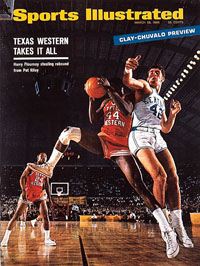 |
No doubt that the 66 title game underscored the important emergence of the black athlete in college basketball."
"In retrospect, that was a historic game. It told everyone, in case the point had been missed, that the game had changed, never to be the same again. The five black starters for Texas Western were too quick for Rupp's all-white team." - by Billy Reed, Louisville Courier-Journal, March 2, 1982.
"You guys got a lot of black kids scholarships around this country," Miners coach Don Haskins said in an emotional address at the [25th Anniversary] reunion. "You can be proud of that. I guess you helped change the world a little bit." - by Jack Wilkinson, Atlanta Journal and Constitution, April 1, 1991.
"I understand why it comes up. They beat them. A team starting all blacks, against a team that started whites. The fact that they were all black made a significant impact." - Tubby Smith, in article by Robyn Norwood, Los Angeles Times (Reprinted in The Sporting News) "At Kentucky, Victories Have No Color," January 14, 1998.
"I didn't get it [the national title] because we played a team that was really prepared to play us," said Conley. "That's all that mattered. Whatever was created, was created without us being involved. We were simply the pawns. We were the pawns of the game. If the African-American community wants to use that as something to better their cause, I don't have a problem with that. If that is a watershed in their history, something vitally important to them, then they can use that. That's fine." - by Frank Fitzpatrick, And the Walls Came Tumbling Down, Simon & Schuster, 1999, pg. 219.
"I don't know that people see us as bad guys," Conley said. "I think they see the game as representative of change. I've talked to a lot of African-American leaders, politicians, coaches of a certain age, and they saw the game as part of social change, a turning point. The Voting Rights Act (federal legislation that struck down barriers to voting for African-Americans in the South) passed in 1964. It was a turbulent time, there was a lot going on. Let's face it, there were a lot of things in society then that needed to change. I think people see that game as part of the change." - Larry Conley, by Mark Story, Lexington Herald Leader, "Winning, Not Race, on Mind of Runts in '66, Conley Says," August 29, 1999.
Reflecting on the game, Kentucky guard Tommy Kron doesn't see symbolism as much as the strategic reality of his team's segregation. "We could've used Wes Unseld." - by Pat Forde, USA Today, "Legacy of Rupp Slow to Recede Repercussions of 1966 Title Game Still Echo in Many Ears," April 2, 1996.
"Only I think years later, can you really take a look at it, and say you know maybe they were playing for something a hell of a lot more significant. And if they were, then the right team won." - Pat Riley, "Glory in Black and White," CBS, April 2002.
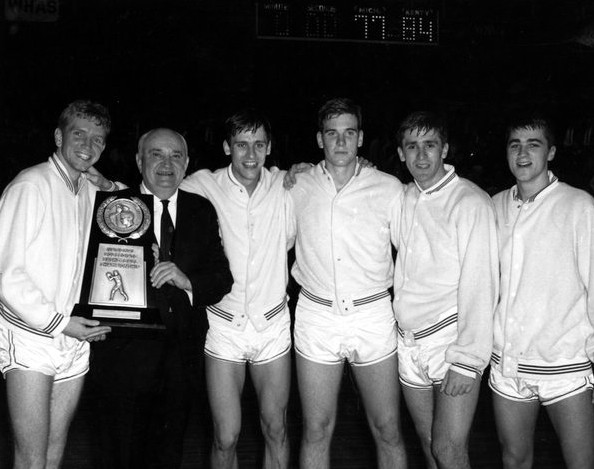
Return to top
![]()
Fall-out from the Western Game
Rupp took the loss to Texas Western hard. After the game in which Kentucky shot 27 for 70 from the field, Rupp said "Hell, they just whipped us. That's the story of the game." But, Rupp added, "I'll coach until they haul me away. I hope to be back here again sometime." - by Frank Hyland, Atlanta Journal and Constitution, "Flashback: 1966: Adolph Rupp's last hurrah,"March 24, 1985 pp B/26.
JPS Note - Although many writers have portrayed Rupp as downbeat immediately after the game [some have suggested that he didn't shake hands with Texas Western coach Don Haskins, a claim which will be discussed in detail and debunked later in this article], it is interesting to contrast that with an actual audio clip from an interview after the game. (Link). In the audio, Rupp does appear concerned about the free throw differential (later in his life, Rupp wondered why UK was called for so many fouls when they were playing a zone while Texas Western was playing an aggressive man-to-man) but overall, he seems upbeat and even has the presence of mind to start talking about the upcoming summer, and joking with interviewer Claude Sullivan about helping him broadcast baseball games (Sullivan was also an announcer for the Cincinnati Reds). In addition, I have yet to see any of the national writers acknowledge what Bob Ingram mentioned in an column (March 26, 1966 - El Paso Herald-Post) that Rupp sent Haskins and Texas Western George McCarty a letter stating: "Your boys played a truly championship game and deserved to win."
Beyond that, not everyone claimed Rupp was downbeat at all. Bob Ingram, sports editor of the El Paso Herald-Post described Rupp in an article after the game as "relaxed, agreeable, jovial and seemingly happy although just a few minutes before the Kentucky team he was reported to have more affection for than any of the teams he ever coached was beaten for the national title."
Despite evidence to the contrary immediately after the game, most national sportswriters in later years ignored that and told the story of a beaten, regretful man.
"The old man really wanted to win it," [Frank] Deford remembered. "He was jealous of [John] Wooden and knew [Lew] Alcindor was on the way." - by John Clay, Lexington Herald Leader "The Runts: Still Special After All These Years," February 9, 1991.
In the end, the administration at Kentucky did have to haul Rupp away from the coach's seat. He never returned to the title game. "That loss to Texas Western hurt me more than you can imagine," Rupp was quoted as saying after his retirement. "Years later I was wondering what I could have done to win that game."
"He [Rupp] dearly wanted to win the 1966 national championship game. He was 64 years old. He might never get that close again. He loved that team, 'Rupp's Runts.' It hurt to lose that one, whether to unknown Texas Western or to another blueblood such as Duke. The coach later told me Texas Western used a player it had gotten out of prison. Well, he no more believed that than he believed Louie Dampier was born in a manger. And he said it knowing I wouldn't believe it, either. He just needed to feel he hadn't been beaten fairly or it wasn't his fault anyway -- a feeling he tried to engender every time Kentucky lost a game to anyone. For 42 years it was his way of dealing with defeat. Acerbic, arrogant, defiant, Adolph Rupp won 875 games and lost none. It was his players who lost those 190." - by Dave Kindred, Lexington Herald Leader, "Calling Rupp a Racist Just Doesn't Ring True," December 22, 1991.
JPS Note - The belief that Texas Western had a former convict was a gross exaggeration based on some rumors which the media at the time of the game allowed to propagate. David Lattin had enrolled at Tennessee A & I (a school, not a prison) in 1963 but dropped out shortly thereafter. There had been a minor disciplinary problem while at the school, but one which was serious enough to cause the Dean of the school to write that Lattin not be readmitted until the matter had been cleared up. Lattin later enrolled at Texas Western. If he had been dismissed from Tennessee A & I, then Lattin would have had to sit out two years before becoming eligible to play basketball. This, however, had not happened and thus Lattin was eligible. - based on a passage from Basketball's Biggest Upset by Ray Sanchez, Mesa Publishing, 1991, pg. 117-118.
This stubbornness to rarely admit defeat most-likely led to a few of the remarks below which Rupp reportedly said and which didn't help Rupp in the eyes of people looking to UK to integrate. The first remark is also unfortunate since Kentucky HAD been recruiting black athletes since 1964, many of them of good academic standing.
In a column by Bill Conlin in the Philadelphia News titled "The Baron Has His Boundaries," Rupp is reported to have replied to the question of whether he should start recruiting blacks. Rupp said, "Humph. I don't think Duke and Kentucky had to apologize to anybody for the way we played without 'em . . . So far we haven't found a boy who meets our scholastic qualifications. It's got to be a Kentucky boy or from a neighbor state. We can't go raid some schoolyard . . . I hate to see those boys from Texas Western win it. Not because of race or anything like that but because of the type of recruiting it represents. Hell, don't you think I could put together a championship team if I went out and got every kid who could jam a ball through a hoop?" - by Ray Sanchez, Basketball's Biggest Upset, Mesa Publishing, 1991, pg. 3.
Adding fuel to the fire, Texas Western SID Eddie Mullens reported that he overheard someone ask Rupp about the play of Bobby Joe Hill, the Western guard who scored twenty points and made the two critical steals. Rupp reportedly said, "He's a good little boy, but there's a lot of good little boys around this year." (by Jo-Ann Barnas Detroit Free Press, "They Changed the Game Texas Western," March 29, 1996.)
Despite the bickering with Rupp, Don Haskins really had bigger worries after the game.
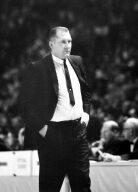 |
"Winning the title focused national attention on the school, and what was discovered embarrassed Haskins. Most of the Texas Western players were either failing academically, or worse, being carried by the school to keep them eligible. Haskins was publicly accused of exploiting his Black recruits for his own glory. For the first time the question of the intellectual cost of athletic integration was being raised. Yes, a basketball scholarship got these brothers into college. But what good did it do them if they made no progress to a degree?" - by Nelson George, Elevating the Game, Harper Collins, 1992, pg. 137.
One of the prime forces behind the questioning of Texas Western was an article by Sports Illustrated in the summer of 1968. Jack Olsen was writing a four-part series on the black athlete and chose UTEP as a case study of a school which had been an early-to-integrate Southern school. (July 15, 1968) Olsen found a school with a wide gulf of misunderstanding separating the white administrators who brought black athletes into the program and the athletes themselves. For example, these school officials continued to use the term "nigger" repeatedly despite direct requests by the black athletes to have them stop. The article went on to reveal how athletes were lured to the Texas El-Paso campus for athletics but then were abandoned from an enriching social or academic life which should expected of a college atmosphere. For example, very few available black women were living in the vicinity yet the reach of the athletic department and coaches was strict in prohibiting interracial dating, leading on a few occasions to athletes being run out of town. In effect, many of the football, basketball and track athletes interviewed for the story felt they were in many ways no better than prisoners.
"They told me that college would be a rewarding experience,"says Fred Carr. "They said I'd meet people, I'd travel. Well, I did, but I still call college the time of my greatest suffering. I came to college and discovered prejudice."
"There is not a thing that goes on here that I like," says Bob Wallace. "We don't have nowhere to go. After every game we are supposed to stay around the dorm playing cards. Nothing to do. Nothing to do. These are supposed to be the best years of our lives, and it turns out to be a drag."
"It's a funny place," says Dave Lattin, now one year removed from the campus. "On the basketball court you're groovy people, but off the court you're animals. Even the Mexicans look down on you."
Above quotes by Jack Olsen, "The Black Athlete," Sports Illustrated, July 15, 1968, pp. 30-43.
JPS Note - This article should be required reading for anyone under the illusion that Texas Western was "enlightened" compared to other programs at the time when it came to the black athlete.
Return to top
![]()
Perhaps the most interesting aspect of this entire subject is the role that the media plays in shaping people's attitudes. The modern media, I believe, has done a very poor job dealing with this subject. It seems they either haven't taken the time to realize that this subject is not as clear cut as they've been led to believe, or they choose to ignore the evidence or to understand the time and place that the events occurred in order to make a more entertaining story. Sports Illustrated in particular, has gone beyond lazy journalism and seems to be the prime force driving this characterization of Rupp. Today, these characterizations continue to spread and have become more exaggerated, not based on any new evidence or research but the "common knowledge" based on earlier articles coupled with shoddy journalism.
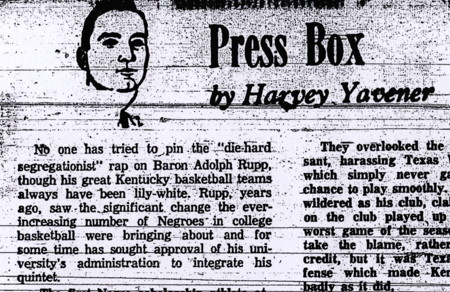 |
Yavener's article was not only a useful reality check of race relations in the sports world circa 1966, it was nearly prescient in terms of recognizing that those who aren't familiar with the facts might fall into the trap of making simple-minded and incorrect accusations against Rupp.
I would argue that since Yavener's column was published two days after the national final was completed on Saturday night (The Trentonian didn't have a Sunday edition), that over the course of nearly 50 years, media coverage of this game and in particular its comprehension of the issues and the facts have gone downhill since that time. Maybe someday we (collectively) as a society will get back to the same level of knowledge and understanding that Yavener exhibited in March of 1966, but frankly there's a long way to go and we're not very close. This is largely due to the ignorance and various agendas of those in the media, who have consistently undervalued the full set of facts and failed to provide their readers with fair and comprehensive coverage of this issue. If anything, they've moved knowledge of the issues in the wrong direction.
The belief that Rupp is racist is an alluring one, not only because it demeans the accomplishments of the man who so thoroughly dominated his profession but also because it adds drama to the game in 1966 against Texas Western. The mere spectacle of five whites competing against five blacks on a national stage in the 1960's, both vying for the crown could have been dramatic enough, but the story is made even more interesting if sportswriters can somehow paint Rupp as an evil man, a symbol of the segregation and injustice against blacks, and thus make the loss more fitting. As a sports columnist wrote,
"So visible was The Baron, and so racist were his views, that he was the predominant reason why Texas Western's 83-79 victory is remembered a watershed moment in sports history." - by Dave D'Alessandro, Bergen Record, March 3,1996.
"In this racial drama, a perfect morality play for the decade's heightened social consciousness, Rupp and Haskins were cast perfectly. Rupp, the snarling epitome of an unyielding establishment, made a compelling villain. Haskins, the laconic loner who rode in from the West, was an appealing American hero." - by Frank Fitzpatrick, And the Walls Came Tumbling Down, Simon & Schuster, 1999, pg. 36.
"The script for this tidy little morality play called for a colossus of a coach, a legend who had hung four NCAA title banners in his gym, a stubborn man who showed little inclination to change with the times. Every morality play calls for a villain. Although Rupp wasn't that so much as an old man anchored in the past, he would do splendidly." - by Pat Forde, USA Today, "Legacy of Rupp Slow to Recede Repercussions of 1966 Title Game Still Echo in Many Ears," April 2, 1996.
"Basketball's racial evolution simply moved in step with the nation's. One game changed nothing. Still, Sports Illustrated had a case to make, and make it the magazine damn well would. The first thing you need in such a racial case is a villain, preferably one wearing white sheets. So the magazine, using flimsy evidence and unsupported characterizations, portrayed Rupp as a 'charming p.r. rogue' whose politics 'learned toward the KKK.'" - by Dave Kindred, Lexington Herald Leader, "Calling Rupp a Racist Just Doesn't Ring True," December 22, 1991.
"To read and hear the most irresponsible rhetoric, you would have thought that Rupp conducted his practices not in starched khaki shirt and pants but in a white hood and a sheet. You would have thought that, compared with Rupp, George Wallace was a civil-rights advocate. . . Never mind that most of this stuff comes from individuals who never met Rupp nor saw one of his teams play. They have no clue about what Rupp was really like and, frankly, they don't care to find out." - by Billy Reed, Lexington Herald Leader, "Criticism of Rupp Went Way Overboard," March 1997.
"Coach Rupp is made to symbolize the demon, and the demon was much bigger than he was." - Perry Wallace, "Glory in Black and White," CBS, April 2002.
It's very wrong to put that burden on Adolph Rupp. Adolph Rupp was not responsible for discrimination. Our society was responsible for creating an environment which was conducive to accept that. - John Thompson, "Glory in Black and White," CBS, April 2002.
After Rupp died in the middle-1970s, and was not in the position to refute his critics, the racist spin on the game began to make its rounds and it has continued to grow on its own.
"That belief (Kentucky is overtly racist) was given life by a Sports Illustrated article on the 25th anniversary of the 1966 NCAA Championship game ... With no evidence beyond gossip, the magazine indicted the Kentucky coach, Adolph Rupp, accusing him of politics leaning to the Ku Klux Klan. Rupp-as-racist stories now have been so embellished that the average basketball fan can be forgiven for imagining Rupp burning a cross in the yard of any black player who dared think of playing at Kentucky. That image is a lie." - by Dave Kindred, Atlanta Journal and Constitution, "Facts Belie Stereotype of Racist Rupp at UK," May 11, 1997.
"Rupp after his death, became a racist. The media decided that he was a bogey man that we could pin this on now. The 66 game, the Texas Western game set that in the minds of a lot of sportswriters, and other media, who weren't there, who didn't know Adolph, who had never been around him in any situation. But it became a model, a symbol really of the black arrival in basketball. It became a convenient historical point." - Dave Kindred, "Basketball in Kentucky - Great Balls of Fire", WKET, 2002.The story by Sports Illustrated prompted political columnist George Will to call Rupp "a great coach and a bad man." (George Will, Philadelphia Inquirer, "Basketball, The Team Game That Can be Practiced Alone, Has its 100th Birthday," December 19, 1991.) These attacks caused Rupp's surviving family to take offense. "How can George Will be that ignorant and dumb?" he [Herky Rupp] say. . . ."I don't see how you can even say what they [SI] say in there," she [granddaughter Farren] tells her mother. "I don't see how you can even say what they say." (Robert Kaiser, Lexington Herald Leader, "Loyal to the Legend, Coach Adolph Rupp's Family Strives to Return Luster to his Reputation," March 14, 1993.)
Curry Kirkpatrick claims in his article "The Night They Drove Old Dixie Down" (Sports Illustrated, April 1, 1991) that the mere fact that five black starters played against a entirely white team was not what was important. What was important was that Rupp lost.
"I always wondered if there would have been all the interest if Texas Western had beaten Duke [Kentucky's NCAA semifinal victim and also all-white] instead of us" says Larry Conley, a Wildcat starter in '65-66.
To which Kirkpatrick replies in the article
"Hardly. This was Texas Western and this was Rupp. Every Quixote needs his windmill. Against the Miners in '66, the Man in the Brown Suit was twirling round and round in a gale."
"But the game was about more than just the obvious. Today, in fact,it's easy to make the argument that it has become more about changes in the media than changes in college basketball or society. The 1960s columnists and commentators who supported segregation or treated it with benign neglect have been replaced by self-appointed moral authorities who are, in their own way, just as narrowminded and prejudiced." - by Billy Reed, "The Revising of Rupp," Basketball Times Vol. 25, No. 5, January 2003.
![]()
Motivations for Perpetuating the Charge
| Recruiting | Comparisons to other Programs | Distractions from Others |
The racist charge still carries weight as fans of other schools can point to it to sway potential players from the school. To this day, players are pulled away from UK by this angle, a recent example being Jason Osborne of Louisville whose grandparents told then-UK coach Rick Pitino that no grandchild of theirs would set foot on the campus of Rupp's university. (Sports Illustrated, "On the Scene," April 1996.)
A report aired by ESPN (May 12, 1997) that explored how receptive Kentucky would be to a black man (Orlando "Tubby" Smith) coaching the UK basketball program helped persuade Bryon Mouton to stay in Louisiana and attend Tulane.
"I don't know Coach Smith that well, but right now at Kentucky, there's a lot of controversy with race involved," Mouton said. "There's big pressure for him to win and, right now, I don't need to go into a situation like that." - by Jerry Tipton, Lexington Herald Leader, "Mouton Chooses Tulane, Near Home," May 16, 1997.
Other fans may only be interested in order to dismiss Rupp's accomplishments on the court in order to favor other coaches or programs legacies.
"And even with his four national championships Rupp will always be viewed in the mirror of the Texas Western game, where he was on the wrong side of history. Rupp never recovered from that. And for many black Americans, neither did Kentucky." - by Tony Kornheiser, Washington Post, "To Tubby: May the Best Man Win," May 15, 1997.
"Dean Smith has been a paragon of grace, integrity and class. That is in stark contrast to the man he replaced as college basketball's alltime winningest coach, Kentucky's Adolph Rupp, who was the game's George Wallace when it came to integrating black players. For most of his career, Rupp fought tooth and nail against the inclusion of blacks into the game. His all-white team's loss to all-black Texas Western in the 1966 NCAA championship games has often been called the Brown v. Board of Education of college basketball. Smith, meanwhile, was at the vanguard of that movement. . . . Garnering win No. 877 was a remarkable achievement for Dean Smith, but in my mind, when it comes to the things that really matter, Dean Smith surpassed Adolph Rupp a long, long time ago." - by Seth Davis, Sports Illustrated, March 1997.
JPS Note - It is interesting to note that the last all-white team to make the Final Four was not Rupp's 1966 squad but Dean Smith's 1967 North Carolina squad.
When Dean Smith retired from coaching just prior to the beginning of the 1997-98 season, he had surpassed Adolph Rupp in all-time career victories with 879. The day after he announced his retirement, noted UK critic John Feinstein couldn't resist the temptation to denounce Rupp.
Host Alex Chadwick: "He [Smith] retired after beating Adolph Rupp's record for wins. Was that an important thing for him?"
Feinstein: "No. If he would have had 875 wins, one short of Rupp, he would have still retired. He was never about numbers. And he was uncomfortable being mentioned in the same sentence with Rupp Because Rupp, of course was a segregationalist. Throughout much his coaching career. He was sort of dragged kicking and screaming to integrate his teams. He [Smith] was never comfortable with that connection." - National Public Radio, October 10, 1997.
USA Today ran a story on November 15, 1996 where they identified college basketball's premier program as Kansas. Although Kansas only holds two NCAA Tournament championships (compared to Kentucky's 6 (at the time) and UCLA's 11) and lags behind in all-time wins and winning percentage (categories Kentucky leads), the newspaper cited criteria such as Tradition, Current Stature, Coaching, Setting etc. in coming to their conclusion. Kentucky is at least the equal or better in those categories with respect to Kansas. So why was the decision made in favor of KU? The paper cited:
JPS Note - Kansas also drew NCAA probation in the 50's and the late 80's for recruiting irregularities so perhaps the charge against Rupp tipped the scales in KU's favor?
It is clear that some have benefitted from the label of the University of Kentucky (or the state) being racist. A look at UK's recruiting failures in the city of Louisville is a visible example. Beyond the use of race as a recruiting tool and instrument for fans to dismiss Kentucky's accomplishments, there is a more insidious reason behind the media attention accorded Kentucky and race. This can be traced to the fact that racism was (and still is) prevalent all over the country and concentrating on one man and one school allows others to point fingers without considering how they, their ancestors, or their school dealt with racism at the time, and even today.
"Everybody stood for (racism)," he [UK Coach Tubby Smith] said. "Everybody in this country. I'm not going to hang it on Rupp. Hang it on everyone in this country." - by Robyn Norwood, Los Angeles Times (reprinted in The Sporting News, "At Kentucky, Victories Have No Color," January 14, 1998.
This does not excuse any racist actions at the time, but it does call into question the motivations behind those who are only interested in denouncing a single person or school. It seems to me that the continual focus on one man and one school, even twenty years after his death, serves to blur the actions and events of other schools and the barriers to integration which were put up by people during those times. Even those schools who were integrated often demonstrated a dismal record in terms of providing their athletes with a true education and preparing them for life after basketball.
Beyond the educational institutions, the role of the press during these times should not be overlooked. Sports Illustrated is an especially poignent example as their writers are some of the prime movers behind the vilification of Rupp and UK during the 1990s. During the time period of the 1966 season (as will be shown later in this page), SI was very complimentary of Rupp and his team, with Frank Deford writing a number of articles that season especially. If there were racial situations or predilections on the part of Kentucky or Rupp, they were not mentioned or condemned at that time. Later that decade, Sports Illustrated wrote a scathing (and to Haskins unfair) article (July 15, 1968) on UTEP which denounced the school's intentions and players academic integrity.
"I don't read Sports Illustrated to this day because of some of the things they wrote," Haskins said. "As a young coach, it kind of destroyed me at the time, because I didn't really understand." by John Smallwood, Philadelphia Inquirer, "Texas Western Win Grows with Years," February 7, 1997.
Twenty years later, Sports Illustrated again tried to assume the moral high ground, but this time against Kentucky.
"The University of Kentucky and Rupp have taken a media beating for their policies of 30 years ago. But this same media has conveniently overlooked the role they played in fostering, perpetuating and supporting those racial policies of 30 years ago. Because they themselves, the bastions of journalism, had their own antiracial agenda, we are not amused nor entertained by their media theatrics of 1996." - by Howie Evans, NCAA News (Reprinted from New York Amsterdam News), "Media Needs Some Racial Introspection," May 1996.
Perhaps if SI is so intent to look back on the period, they might want to consider their own actions and policies.
"Newspaper columnists are the triggermen that TV and readers feed off as they express their opinions on a wide variety of subjects. Thus, it's understandable why there are so very few black sports columnists. The coveted columnist positions are doled out by the sports editors, virtually all of whom are white at every news publication in the country. So for the white-dominated media to look back 30 years ago and exploit the nation's lily-white schools and their racist policies while ignoring their own racial exclusions is, yes, a classic case of bias reporting." - by Howie Evans, NCAA News (Reprinted from New York Amsterdam News), "Media Needs Some Racial Introspection," May 1996.
Unfortunately, racism is a reality in todays world. While sports is an excellent tool for breaking down barriers in society, it is the follow-through into other realms of society that will bring about true equality and freedom in terms of opportunity to succeed for all races. The media has had a field day criticizing the University of Kentucky at a time when the University has reached out to minorities, has many black student-athletes and employs a black head coach for both the men's and women's teams. The fact that these news organizations take liberty to criticize Kentucky today for past events while ignoring current problems and injustices, including those inflicted and propagated by themselves, makes for an extremely hollow and hypocritical situation. As Howie Evans wrote, "As we glance back 30 years ago to 1966 and that marvelous Texas Western victory over Kentucky, the greatest changes have occurred on the basketball court. Changes in coaching, athletics administration and the media certainly have not kept pace."
"Earlier this month, the American Society of Newspaper Editors ran up the white flag on its 20-year old commitment to raise the percentage of minority employees at the nation's daily newspapers to a level comparable to their presence in the population. In doing so, supporters of the decision, which met with some resistance, offered up a mealy-mouthed defense of the action. One newspaper editor called the parity quest 'an unrealistic goal.' " - by DeWayne Wickham, USA Today, "Racism Persists in Pro Sports, News Media," April 14, 1998.
I've started to realize that many people are probably content to forget their own actions (or inaction) during the past and allow Adolph Rupp (and in effect the University of Kentucky) take the blame and deal with the consequences of racism in college basketball in the 1940's, 50's, 60's and beyond. I don't mean to encourage a "witch hunt" of past crimes by others in the era (frankly, I think there are enough problems with race in today's society that need to be addressed.) Travelling back 30 years to point fingers does have some educational value, but to use it as a method for scapegoating or branding a particular institution (sometimes as a method to gain favor over the current team) is a disgrace. I am leery of the focus that the national media has presented on this topic and their efforts to perpetuate it and would hope others, not just Kentucky fans, would be too.
Return to top
![]()
Below are a few examples of what I believe to be poor journalism about the subject. Unfortunately, it seems that journalists are becoming more irresponsible as their claims have become more far-fetched with time.
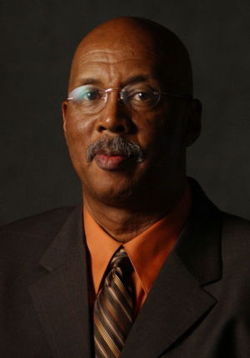 |
"We heard before the game that Mr. Rupp didn't believe that five blacks could beat his team. . .Well, we showed him just how tough five niggers could be. Don't get me wrong, Mr. Rupp was a great coach; he knew his X's and O's, and we respected him for that. But after the game he didn't shake any of our hands, not a one of us, he didn't say a kind word about us. A couple of years later he started recruiting black players, he had to confess . . .I've walked past him plenty of times at coaching clinics, but I've never introduced myself. I've never said a word. Just to myself I said, 'I'm glad I kicked your tail.'"
This is a very important charge, because it was the start of what has become a very long and public demeaning of Rupp's name in the public, a process which has continued today by some in the media along with others. But it's also important because it illustrates how baseless and factually inaccurate claims can take a life of their own.
There were two charges made. First that Rupp 'didn't shake any of our hands' after the game. This is easily refuted by the game video.
After the horn sounded, Texas Western supporters flooded onto the court. The Texas Western players were preoccupied celebrating the victory with cheerleaders and others in the corner near their bench. Rupp immediately got up and walked to center court and waited outside the mob to shake hands. The video shows Texas Western coach Don Haskins initially celebrating with the team, but then after a short delay he noticed Rupp and did come out to shake the Baron's hand.
Don Haskins himself confirmed the handshake when he noted in a 2005 interview with Stephen A. Smith on ESPN's 'Quite Frankly' show: "One thing I want to say is that the Kentucky players could not have been more gracious after the game. Rupp, well I don't know ... but I do know he shook hands."
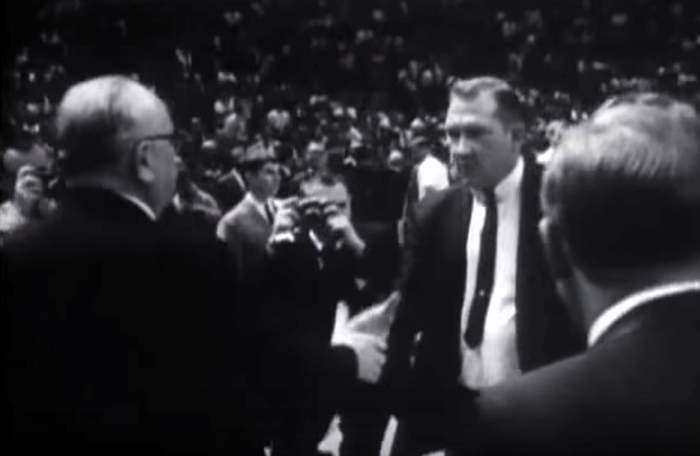 |
JPS Note - Based on the evidence at hand, Rupp was clearly willing and able, and did indeed shake hands with the one Texas Western representative who came out to meet him, which was Don Haskins. The other Texas Western players and representatives had the opportunity but were preoccupied in their celebration, which is understandable. It's not clear what happened subsequently as the video coverage did not include that part, although the video coverage available along with photographic evidence suggests that the Kentucky players remained on their bench waiting for the awards ceremony, in which both the Texas Western and Kentucky teams were award a trophy, so there could have been additional opportunities for congratulations.
If Shed and other Texas Western players want to claim that Rupp or the Kentucky players refused to shake hands, they should probably be more specific as to exactly when and how this is supposed to have occurred, or even that the Texas Western players themselves made an effort to shake hands, which they failed to do immediately after the game was completed.
BTW, a similar claim has sometimes been made that Rupp didn't visit the winner's lockerroom to offer congratulations. While it is generally customary for opposing teams and coaches to shake hands after a game (something based on the video evidence only Rupp was actually attempting to do after the gaem), I don't know if it is customary or even expected for the teams to greet each other in the winner locker room after the game. I know it's happened before but I doubt that it is expected. Regardless, it has been reported that some of the Kentucky players went to the Texas Westen locker room to congratulate the winning team. Also, George Vecsey of the New York Times was at the Final Four that year and distinctly remembers Rupp going to the Texas Western locker room after the game. Said Vecsey in a 1985 column, "Some people swear Rupp was furious about losing to a team from the border. I only remember an old gent in a brown suit working the Texas Western clubhouse afterward, shaking hands and putting his arm around sweaty kids and telling them they played a fine game." [New York Times, "A Tale of Two Homes," March 22, 1985.] Vecsey repeats this assertion a number of years later in another article. Vecsey writes, "Even the losing coaches leave memories. I saw Adolph Rupp, the gruff old baron of Kentucky, working the winning locker room in 1966, congratulating the eight black players from Texas Western." [New York Times, "The Coaches Makes Hoops So Special," March 18, 1992]
The second claim made by Shed immediately after Rupp's death, this is that Rupp supposedly said prior to the game something to the effect of 'no five blacks could beat my team'. Since then it's been repeated often, in particular around 1991 which marked the 25th anniversary and 1996 which marked the 30th anniversary of the game:
Haskins heard that Rupp had said "no five blacks are going to beat Kentucky" after which Haskins informed his team. - by Curry Kirkpatrick, Sports Illustrated, April 1, 1991.
"Rupp reportedly told Western coach Don Haskins before the game that he (Rupp) would not allow five black kids to beat him, which Haskins promptly informed his team of during the pregame" - Bergen Record, March 3, 1996.)
"He [Haskins] had heard before the game -- not directly from Rupp, though -- that Rupp had said something along the lines of, 'There's no way I'm going to let five black players beat my Kentucky team.' - by Jo-Ann Barnas, Detroit Free Press, "They Changed the Game: Texas Western," March 29, 1996.
"Some in the Texas Western party had heard that Rupp had boasted on a Kentucky radio station that week that five blacks would never beat his Wildcats. Haskins, recognizing some potentially useful motivation, tucked the comment away. Earlier, just before the Miners left their locker room, he had called aside some of his black players and told them how the opposing coach felt. 'We felt it was just talk,' said Lattin." - by Frank Fitzpatrick, And the Walls Came Tumbling Down, Simon & Schuster, 1999, pg. 205.
JPS Note - It is noteworthy that Rupp generally was not boastful about his team's chances prior to a game. He may have done this in a few instances but more generally he was extremely superstitious and usually tried to play up the abilities of teams they were to face, rather than minimize them. So saying this would be out of character to begin with.
The other interesting thing in these claims (of which only a few are noted above) is the wide variety of ways that Rupp is supposed to have made it. Some claim Haskins overheard it, some claim that Texas Western assistant overheard it, some claim is was mentioned by Rupp in a radio interview, some suggest that Rupp had made the claim during the pre-game press conference etc.
The fact of the matter is that while numerous journalists have repeated this claim, none have actually provided any evidence whatsoever that Rupp actually ever said it in the first place.
One thing does seem apparent, is that Haskins did try to use the claim to his advantage:
Before the Miners left their hotel for Cole Fieldhouse, Texas Western coach Don Haskins brought the black players together in the room of center David "Big Daddy D" Lattin. Haskins said Rupp had been telling people there was no way five blacks could beat five whites. . . . Recalled Lattin: "Haskins said, 'I heard him say it, and I couldn't believe he said it. It's up to you to do something about it.'" - by Pat Forde, USA Today, "Legacy of Rupp Slow to Recede Repercussions of 1966 Title Game Still Echo in Many Ears," April 2, 1996.
"The day of the game, Coach Haskins assembled the black players that were going to play in the game that night and told us that Coach Rupp had just mentioned in a press conference that five black players could not defeat five white players... Coach Haskins said, 'Hey it's up to you.' He walked out of the room." - Dave Lattin, "Glory in Black and White," CBS, April 2002.
"Coach Haskins before the game quoted Rupp ...that he had never played five black guys before and that five black guys would never beat his team," said Flournoy. "And we kind of thought that Coach Haskins was just trying to hype us up, you know. And we weren't sure if he said that or if it was just Coach Haskins talking." - by Frank Fitzpatrick, And the Walls Came Tumbling Down, Simon & Schuster, 1999, pg. 205.
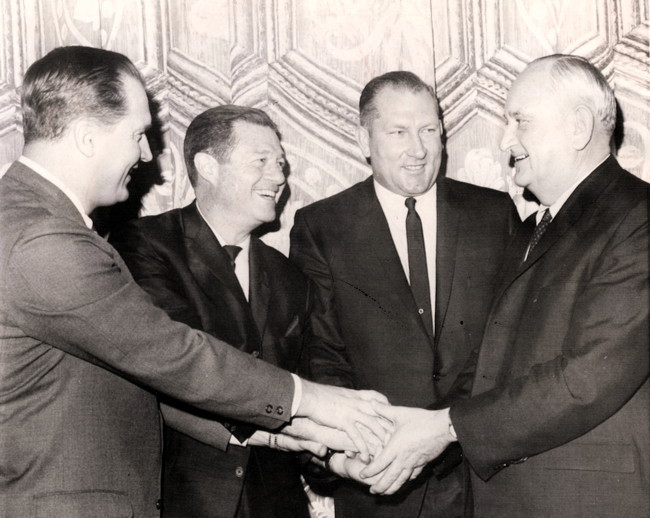 |
More recently, Haskins in his book with Dan Wetzel (Glory Road, Hyperion, 2006) seems to back off Lattin's claims about a press conference (note that although CBS, in their special on the game "Glory in Black and White", went to the trouble to show video clips of Rupp at a press conference, however there was no audio with the clips and there has been no evidence whatsoever (reported at the time by the news media or first-hand claims of someone hearing it) that Rupp ever said these things, at a press conference or otherwise.) Haskins also doesn't repeat Fitzpatrick's claim about a radio program.
What Haskins does reveal is this: "I also have to admit that I may have used race as a motivating factor. By this point the media was talking about it anyway and there was no way it hadn't entered my guys' thinking. Beside I was told Rupp had told some people privately that there was no way a black team would beat him. It got back to me that he was tellin' a joke, 'What does TWC stand for? Two white coaches.' I was a little pissed off about that. I didn't know if that was true, but during one of my meetings with the team on the afternoon of the day of the championship game, I mentioned to the players I had heard some rumors that Rupp had said that he 'ain't losin' to a team of black players.' I was trying to fire up their asses."
JPS Note - What can be surmised from the above jumble of stories is that Haskins, by his own admission, told his team that Rupp made the remark before the game, even if the details of exactly how Rupp was supposed to have made the remark varies widely and Haskins himself admits he didn't hear it first-hand.
Another take on this may be (and what Haskins leaves open with his comments is) that Haskins or someone in his group fabricated the remark to get his team psyched for the game. (What I know of Haskins now, I don't believe he would have done this, but it's possible at that stage of his career and under those circumstances, just as it's possible that Rupp said something to his players if he thought it would fire them up win the game.)
In Ray Sanchez's book on the game, he hints that what Haskins tells his players before games isn't always necessarily true.
In the dressing room prior to the game, Haskins told his players he'd heard Rupp had claimed no five blacks could beat Kentucky. "Otherwise, he told us the usual stuff," Hill says with a smile. "He told us we were playing the best team in the country and that there was no way we could stop them. We'd heard it all many times before." - by Ray Sanchez, Basketball's Biggest Upset, Mesa Publishing, 1991, pg. 127.
At least one journalist has considered this aspect.
"Whether he really heard Rupp say that [no five blacks could beat five whites] or just figured that he probably said it is unknown, but no coach ever lets facts get in the way of pregame motivation." - by Pat Forde, USA Today, "Legacy of Rupp Slow to Recede Repercussions of 1966 Title Game Still Echo in Many Ears," April 2, 1996.
JPS Note - No such consideration has been afforded Rupp by the media.
The effect of Haskins' speech seemed to energize the players.
"From that point on," [Harry] Flournoy says, "Kentucky had as much chance of winning that game as a snowball had of surviving in hell." - by B.J. Schecter, Sports Illustrated, "Catching Up With . . . Harry Flournoy, Texas Western forward," April 6, 1998.
"Until Rupp made that statement, I never really thought about it that much. We were just playing basketball. Rupp made that statement, and I couldn't understand why he would put his team in a situation like that. Pat Riley said that we were focused and we were driven, and when the game started, he had no idea what he was getting himself into. It wasn't a regular game - we were so driven to win." - David Lattin in article by Angel Verdejo, Dallas-Fort Worth Star-Telegram, "Lattin Aware Now of Impact," March 10, 2006.
Unfortunately, although Kirkpatrick, Sanchez and Fitzpatrick etc. reported the incident decades later and cited Haskins telling his players in pregame, all of them failed to get Haskins himself on the record about the incident, even though Haskins was interviewed extensively for the respective pieces.
Again, these are basketball coaches in what is arguably the biggest game in either man's career, so it's not out of the question that they used every advantage they could. It should however, also be noted that the games were played on consecutive nights. Therefore, there was precious little time for a boast on the part of Rupp's to have been made and to have filtered through coaching circles to Haskins. If the remark was indeed made by Rupp, it should be relatively easy to determine when and where the remark occurred, something which has not been attempted by any journalist or historian to my knowledge.
To hold coaches to what they may or may not have said during pregame and halftime conversations with their teams, and then to equate it to a public pronouncement of their beliefs [ie calling Rupp the George Wallace [or Bull Connor] of basketball] as if they were civil servants, would seemingly stretch the limits of what even the most unscrupulous reporter should use to assess facts.
"Interlude 1: There's poetry that Dean Smith will break Rupp's record. Rupp was an avowed segregationist. For all of Rupp's victories, Rupp's most famous game is one he lost -- the 1966 NCAA championship, the Brown vs. Board of Education game, when Rupp's all-white Kentucky team was beaten by Texas Western, which started five black players. Smith was the antithesis of Rupp on issues of race. In fact, Smith had the courage to sit-in at lunch counters. Okay, back to the game." - by Tony Kornheiser, Washington Post, "On Smith's Ocean, Relation Ships," March 13 1997; Page C01.
JPS Note - While Dean Smith's stand against racism is admirable, this is the first reference to him "sitting-in" at lunch counters. It is well documented that on one occasion in the late-50s, Smith was invited by a minister in his church to join a black seminary student to lunch at The Pines in Chapel Hill, thus forcing the segregated establishment to serve a black person. To bring Smith [UNC-CH assistant coach at the time] was a successful maneuver because the manager of the restaurant was there and knew he couldn't risk offending Smith because he relied on business from the UNC team. To Smith's credit, he went along with the scheme and continued to support integration of Chapel Hill in various ways.
So it's true the restaurant was integrated for an hour or so, but it did not remain this way. In fact a number of years later during the Winter of 1963=64 four demonstrators were arrested at the very same restaurant, The Pines, which led to a series of demonstrations, sit-ins and arrests in Chapel Hill. Demonstrators were attacked by store owners with bleach and ammonia and were urinated on etc.
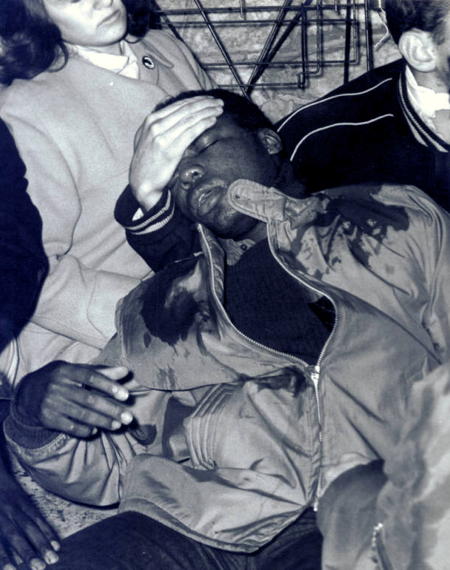
As far as the claim by Kornheiser that Smith actively demonstrated, that seems to be stretching the truth as there's no evidence of this happening. The fact is that it took even a progressive thinker like Smith a number of years before he integrated the UNC team by recruiting and signing Charlie Scott in 1966 (after Rupp had unsuccessfully recruited Wes Unseld). This only supports the contention that the South was not so easily integrated. In fact, it's been reported that Smith's recruitment of black players benefitted from the Texas Western game as Bob McAdoo has stated that they didn't consider playing for a southern University such as UNC until he was inspired by Texas Western. As for Rupp, "avowed" means to "declare openly, bluntly and without shame." Again, there is no evidence to support this claim against Rupp.
Around the time of the national semifinal game against Minnesota and their coach Clem Haskins (who Rupp did not recruit), there was a strange new spin on the story which began to make its rounds and claimed that Rupp did not recruit any black players before he signed Tom Payne in 1969. This claim picked up steam with the subsequent hiring of Orlando Smith. This claim is completely incorrect which is discussed in detail later. It's a clear fact that Rupp not only recruited (starting with Wes Unseld in 1964) but signed black players throughout remainder of the 1960's.
JPS Note - This is a classic case of how inattentive journalism has turned, within a relatively short time, a bogus claim into something which is considered "common knowledge" by the casual basketball fan.
"Had (Clem) Haskins played for perennial power Kentucky he might have reached the Final Four as a player. But those were the days when the Wildcats were coached by Adolph Rupp, who didn't believe in recruiting African-American athletes, no matter how skilled they were. When Joe B. Hall succeeded Rupp, Kentucky's recruiting policy changed dramatically. Haskins' younger brother, Merion, played for Hall and was the captain of the 1976-77 team." - Reprinted from Milwaukee Journal Sentinel by Raleigh News and Observer, March 28, 1997.
"The old coach (Rupp) recruited but one black player, seven-foot-one Tom Payne from Louisville, who played one year in 1970 at the tail end of Rupp's career. And the Baron was forced to do that. Ghosts from Rupp's past haunt Lexington still." - by Curry Kirkpatrick, ESPN cover story, "Mr. Smith Goes to Lexington," May 12, 1997.
"Legendary coach Adolph Rupp, like many colleagues of his time, did not recruit black players until the 1970s." - by Eric Gregory, Lexington Herald Leader, "Color might be issue, but fans put stress on winning," May 10 1997.
"Adolph Rupp, who held the helm from 1930 to 1972, was attacked for refusing to integrate his program in the 1960's, especially with Kentucky high schools producing such black stars as Butch Beard, Clem Haskins and Wes Unseld." - by Neil Schmidt, The Cincinnati Enquirer, "UK Downplays Historic Nature of Smith's Hire," May 12, 1997.
"Smith becomes the first African-American coach at Kentucky. Rupp refused to recruit African-American players for many years before relenting in the late 1960s." - Reuters, "Former Asst. Smith Takes Head Kentucky Job," May 13, 1997.
"In his 42 years on the Kentucky bench, Adolph Rupp recruited only one black player -- center Tom Payne -- who played for only one season (1970-71) before turning pro. " - by Mark Story, Lexington Herald Leader, "Rupp would've wanted Smith at UK, son says," May 13 1997.
"Texas Western, today known as Texas-El Paso, had five black starters. Kentucky, under coach Adolph Rupp, had never even recruited a black player." - by Tom Weir, USA Today, "This Day in Sports," March 19, 1999.
"Rupp, a bigot who refused to have black players on his teams and presided over a corrupt program that was eventually shut down for having been involved in a point-shaving scandal, is actually admired by few people to the left of David Duke. Feinstein reports that Smith danced around [Andrea] Joyce's question and praises Smith for being 'too honest' to say he admired Rupp. One wonders whether a more honest, or at least more commendable, response might have been: 'No, I did not admire Rupp. He was a racist who used payoffs to recruit his players. There are more important things in intercollegiate sports than winning.' " - by Andrew Zimbalist in his review of John Feinstein's book A March to Madness, Washington Post, January 18, 1998.
JPS Note - Zimbalist bites off a lot in the above paragraph which I'm not going to take the time or effort to refute point by point here. Suffice to say that this author must be carrying around a pretty big anti-UK chip to include this on a book review about the Atlantic Coast Conference during the 1997 season.
"And in Kentucky, there was no room for African-American players as Rupp, considered by many to be a racist, refused to recruit anyone but whites." - by Anthony Holden, CBS SportsLine, "Texas Western Stuns Kentucky," 1999.
JPS Note - This claim is especially sad to see by someone who claims to be a CBS SportsLine Historian.
Another point made by critics of Rupp was that for most of his career, he played against all-white teams from the Southeastern conference. They claim that because of this and because most of his teams were all-white, that this somehow gave him an unfair advantage over other coaches legacies. To an extent, this is true and certainly helped lead to Rupp's gaudy won-lost record. But little mention is made by these writers that Rupp then had to take his team to compete against the other national powers, many of them integrated, where his team performed admirably [Afterall, winning the national championship (as Rupp did four times), should remove any qualifications about the strength of the regular season conference the team plays in.] Some writers incorrectly assume that Rupp did not play against these national and integrated teams which only shows how ill-informed these writers actually are. Also, nowhere have I seen it mentioned that Rupp was actually at a disadvantage in these early contests because he didn't have black players on his team to help compete against his opponents with talented black players.
[Winston Salem State coach Clarence "Big House"] Gaines has said that Rupp's record ought to have an asterisk next to it, like Roger Maris' 61 home runs, because Rupp built it against Southeastern Conference schools that took fanatic interest in football and relegated basketball games to arenas built for rodeos. "I guess I shouldn't have said that about the asterisk," Gaines said. "It wasn't his fault if the other guys were too stupid or lazy to get off their butts and go pick up some basketball players." - by Jere Longman, Philadelphia Inquirer, "How 'Big House' Built His Success; Coach Smashed Barriers on Way to 800 Wins," February 11, 1990.
"Perhaps their (CCNY) most impressive victory was an 89-50 demolition of Adolph Rupp's Kentucky squad in the NCAA semifinals. Not only were the Wildcats two-time defending NCAA champs, but Rupp had always gone out of his way to avoid playing teams with African-Americans." - by Nelson George, Elevating the Game, Harper Collins (1992) pg. 80.
JPS Note - Again, the statement is wrong. Rupp did not go out of his way to avoid playing integrated teams. Quite the opposite in fact, as Rupp was noted for often taking his teams to New York (beginning in 1935 and up until the scandal in the early 50's) and to Chicago (among other big cities) where he played against the best teams. It should not be underestimated how much of a forward step this was in the days of poor travel conditions and the fact that most every university still played a largely regional schedule. (Not to mention the prospect of obtaining the necessary funds during the depression era.) Also overlooked is the fact that at that time, the style of play and the way games were called by the officials was very different in different regions of the country. Kentucky often had to adjust their style of play in these games depending on the area of the country. Rupp actually was an important catalyst in making basketball a truly national game by introducing many parts of the country to his brand of basketball which included such innovations as the fast break and the interior screen.
From the perspective of a Kentucky fan, it is interesting to read the reaction by "city" fans and sportswriters to Adolph Rupp bringing his teams up to the major northern cities to play basketball. It seems many of them considered Rupp's teams to be "The South." With the exception of a small few, Kentucky was regularly coming up to compete against all-comers, whether integrated or not. It seems possible to me that while Rupp was intent on taking his team and beating the world, his opponents were interested in more than a basketball game.
"It was not a basketball game. It was a cultural war. It was a religious war. It was City College's way of saying.....forgive me but, 'Screw you Adolph Rupp.' We are also part of this country. It's not just yours, it's ours too." - Marvin Kalb, CCNY 1951, HBO Original (Black Canyon Productions), "City Dump, the Story of the 1951 CCNY Basketball Scandal," 1998.
Poor Journalism: Example V
When Orlando "Tubby" Smith became the first black head [mens] basketball coach at Kentucky in 1997, many in the media took the occasion to take a swipe at Rupp rather than view it as a natural accomplishment by Smith and the school. Some of the observations, besides being completely unsubstantiated and often incorrect were simply mean-spirited.
"Smith becomes the first African-American coach of the Wildcats, sitting in the seat once owned by Adolph Rupp. If Rupp had his way, basketball would be an all-white sport." - by Ed Sherman, Chicago Tribune, May 12, 1997.
"During his 42 years coaching Kentucky, Rupp flaunted his reputation as a racist by not signing a black player until just before his retirement in 1972." - by Terence Moore, Atlanta Journal and Constitution, May 18, 1997.
"For with all of the efforts past and present to cover his picture in positive varnish, the reality is that Rupp was a racist from endline to endline." - by Ron Yengich, Salt Lake Weekly, "The Ghost of Adolph Rupp" May 22, 1997.
"Rupp resisted integration of basketball with a virulent racist fervor far in excess of the commitment one would assume from a New York [sic] native." - by Ron Yengich, Salt Lake Weekly, "The Ghost of Adolph Rupp" May 22, 1997.
"I heard one commentator say that [Tubby] Smith should worry about the ghost of Adolph Rupp sitting on top of the backboards and swatting away Kentucky's players' shots. As a theological proposition, I disagree. Because if there is a higher authority, Adolph Rupp is far too busy shoveling coal to be concerned about goal tending." - by Ron Yengich, Salt Lake Weekly, "The Ghost of Adolph Rupp" May 22, 1997.
"There is a hue and cry in Lexington, Ky., about hiring a black coach. A lady in the local paper urged Tubby to turn the job down because of the school's history of racism, dating back to Adolph Rupp, the former coach, whose favorite color besides his traditional brown suit was a white Klan sheet." - by Paul Finebaum, Birmingham Post-Herald, "In Perfect World, UK Would Lose," March 31, 1998.
One alarming trend I've begun to notice is the use of Adolph Rupp's name in the same context as Adolf Hitler. To date, the only evidence presented to support this charge is that his given birth name is similar. I'm not even going to dignify such an outrageous and shameless remark with a response other than to remind the reader that Rupp had a number of Jewish players on his teams, starting with Bernard Opper in the 1930s, despite the fact that his main recruiting areas (Kentucky, Ohio, Indiana) did not have a high Jewish population density. A few other tidbits include 1.) Rupp made his way from Kansas to New York City where he earned a master's degree at Columbia University 2.) Rupp took his team to Tel Aviv Israel for the World Universities Tournament in the summer of 1966 and 3.) One of Rupp's players Sid Cohen won the Van Raalte Cup in 1959 for being the nation's most outstanding Jewish athlete. Critics should probably explain these apparent discrepancies before carrying on with this baseless charge.
"They also have the Kentucky 'tude, which means they think they have a divine right to win the national championship. This was instilled in Kentucky players and fans by Adolph Rupp, considered history's second-nastiest Adolph. Rupp was a racist; Tubby Smith is black." - by Michael Ventre, MSNBC, "And then . . .there were four," March 1998.
"Adolph Rupp, Adolfff Rupp, shortly after World War II. Adolph Rupp was coming into town. And coming into a town filled with Jews, and was about to play a basketball team filled with Jews. And Nat Holman, a Jew, aware of all of this and being very smart and playing psychology, said to the team before that game, "You know, I think it would be a very good thing if you guys just tried to shake their hands.... before..... yeah, just kinda sportsmanlike. I watched as Floyd Lane put his hand out and this tall, blonde, gorgeous giant turned away from Floyd, which is exactly what Holman wanted...... to get Floyd very upset..... to get all of the other players upset. And Floyd hissed out at the guy, 'You gonna be picking cotton in the morning, man!'" - Marvin Kalb, CCNY 1951, HBO Original (Black Canyon Productions), "City Dump, the Story of the 1951 CCNY Basketball Scandal," 1998.
JPS Note - Maybe someday, Holman's tactic of playing up racial/ethnic differences to inspire his team for a basketball game will itself be considered racist rather than being applauded by the likes of HBO (and Sports Illustrated with regards to the pre-game comments by Don Haskins). Kalb's reference to 'blonde, gorgeous giant' seems to itself be a racial reference to Aryans. As shown in the photo below, there actually weren't many blonde players on that UK team.
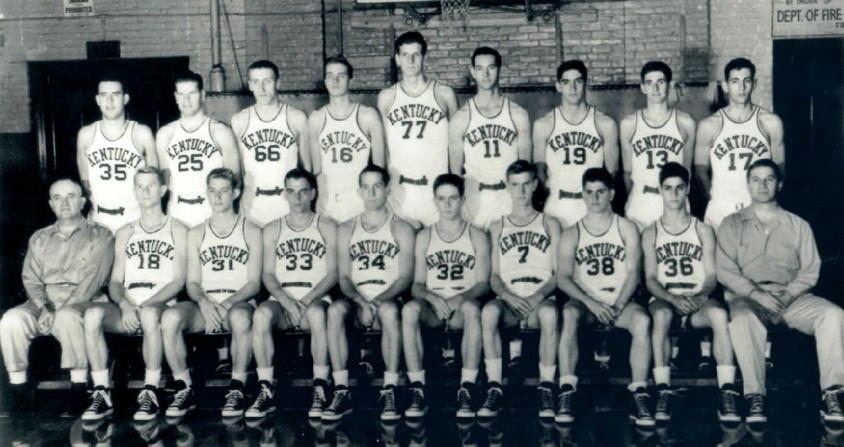
Another interesting tidbit is that when New York City native Bernard Opper decided he wanted to leave the city to play basketball for Rupp at Kentucky, he wrote Rupp a letter in which he included letters of recommendation from Clair Bee of LIU and none other than Nat Holman of CCNY. (Russell Rice, The Cats Pause, "Rupp Nixed Idea of Players Taking Collection to Keep Star," June 1998.) Opper had an outstanding career at Kentucky where he was named All-American in 1939.
A few years later after he had graduated Opper wrote a letter to Rupp recommending he sign another great Jewish high school player from New York City, center Harry Boykoff. According to a newspaper article (Knoxville News-Sentinel, January 17, 1943) Rupp was all set to have Boykoff join the Wildcat team, however after the war broke out Boykoff promised his mother he'd stay closer to home and signed with St. Johns instead. Boykoff went on to become an All-American for the Johnnies and later a successful professional player.
Rupp was asked about some of the "all-time" coaches he's competed against in the past by the New York press and Rupp mentioned many (included in the list were Nat Holman, Joe Lapchick and Clair Bee) from New York. "Most of them worked with Jewish ballplayers in those days," Rupp said. "They were all very smart ball-handlers, the best I've ever seen. Now the game's complexion has changed, and I'm not talking in terms of color. I mean in style. We have all the smart coaches in Ohio and Indiana and Kentucky now." (The New York Times, "Kentucky's Baron Still Holding Court," by Gerald Eskenazi, March 14, 1976)
The HBO special is so one-sided and the claims by the CCNY players so fantastic (ie "Ed Warner was the Michael Jordan of his generation") and romanticized that it is difficult to take seriously much of what they say. An impartial reviewer of the HBO documentary noticed this too, mentioning that some of the narrative was "gaudier than a Dennis Rodman dye job." Kalb's narrative was specifically mentioned by the reviewer along with the Hitler comparison noted "Kalb is still eager to express his manifest distaste for Rupp, spitting out his name as though he were Adolf Hitler," but beyond that, Kalb's screen time was described as "Marvin Kalb, a 1951 City College of New York grad, is not generally known for dynamism. But he's Damon Runyon on a coffee jag when talking about CCNY's storied 1949-50 team." - (Quotes by Ed Bark, Knight Ridder News Service, reprinted in The Wichita Eagle, "HBO Shoots, Scores with Documentaries on College Hoops," March 24, 1998.)
BTW, while I haven't had the pleasure to see films from that era, according to Charley Rosen in his book Scandals of '51, Warner wasn't even the best player in the city at the time, much less his generation. That distinction belonged to LIU's Sherman White.
Update (April 28, 2013)
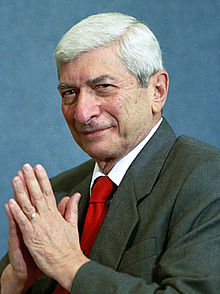 |
In his article, Kalb repeated the claim about the Kentucky players not shaking hands but gave some slightly different details:
"Holman, probably the only one in the Garden who thought "my boys" could beat Kentucky, engaged in his style of psychological warfare. He gathered his players around him. "Let's shake hands with each of them," he whispered, pointing to the Kentucky players across the court. "Let's show these boys how polite we New Yorkers can be." If the City players thought their coach had lost his mind, they disguised their feelings behind nods and grunts of approval. "Sure, Coach, sure," they said.
"After the teams took their positions on the court, seconds before game time, I kept my eyes on Layne, as he extended his hand to Kentucky's top scorer. The other City College players did the same thing, their hands extended in faux friendship. In full view of 18,000 fans, not a single Kentucky player returned the gesture. In fact, they all turned their backs on the City players. I heard Layne hiss, "You gonna be pickin' cotton in the morning, man."
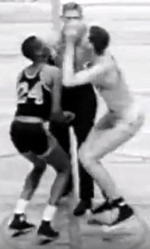 |
Finally if this had happened before 18,000 people, surely it would have been commented on at the time by someone? (Especially if as Kalb claims he was able to overhear such chatter on the court just prior to the tip-off.) Although I haven't thoroughly searched for this aspect of the game, to date, I haven't seen anything written at the time which noted such an odd and public occurrence. Kalb obviously was plugged into the CCNY coaching staff as he relates what the coaches told the players prior to the game, too bad it doesn't appear that Kalb talked to the Kentucky players about it afterwards.
Despite what the boxscore from the game says, from the short video clip of the game film that is available (see 39:35 on film or 4:49 on Youtube time) and shows the tip-off and at least the first play of the game, it appears that the UK starters were Bill Spivey (#77) who jumped center, Shelby Linville (#11), Leonard Pearson (#31), Dale Barnstable (#18) and maybe Walt Hirsch. It's already noted that Spivey tipped off against Leroy Watkins, and it appears that Shelby Linville was paired with Ed Warner and likely Leonard Pearson was paired with Floyd Layne. [So if Kalb's account is accurate then it would be Pearson (who indeed was blond at the time) who Layne talked to.] Barnstable, by the way, had been a GI in World War II fighting Germans when he helped liberate Jews at the Gunskirchen Lager Concentration Camp near Lambach, Austria.
In summary, Kalb's version of events lead to more questions than it answers. BTW, the photo shown above is an actual still taken from a highlight video (which includes footage of warm-ups before the game), so presumably there is video of this supposed incident somewhere (although the seconds just before the tip seem not to have made it into the final edited highlight film). For anyone with access to old sportsreel film, that may be worth digging into.
Beyond the handshake claim, Kalb goes beyond that to make a further and incendiary claim against Rupp:
"Kentucky players, all white and all-American, strutted into town, cocky and confident. Their coach, Adolph Rupp, arrogant, successful and wealthy, nicknamed the Blue Grass Baron, once boasted that he would never allow a "black" or a "kike" to play on his team. He knew that three Jews and two blacks started for City College"
JPS Note - I will discuss below that a rash of claims were made suggesting Rupp claimed no 'black' player would ever play for him (although nearly every claim occurred in the 1990's and were based on each other without any evidence pre-dating this time that Rupp actually said it.) But the claim here by Kalb is noteworthy because Kalb ups the ante by now claiming that Rupp said no Jewish players (or using Kalb's term 'kikes') would ever play for him, in addition to the claim about black players.
This new claim by Kalb makes absolutely no sense as Rupp indeed had already coached black players (both with his high school team in Illinois in the late 1920's and Don Barksdale in 1948 as part of the US Olympic team) and had a number of Jewish players, including as mentioned previously Bernie Opper who was an All-American at UK in the late 1930's, well before the CCNY game.
I publicly challenged Kalb to provide the citation for where Rupp supposedly made these comments. Kalb has to date been unable (or unwilling) to provide any answer. Unfortunately, it appears Kalb has fallen into the old 'common knowledge' trap of stating something as fact something he has absolutely no direct evidence to support, only presumptions based on his own ignorance and the echo chamber of bad journalists. This is a sad testament to someone, who ironically hosts a show (The Kalb Report) which is supposed to deal with "media ethics and responsibility" of all things.
Another trend among unthinking journalists is to indict Rupp's former players and suggest that they are racist, simply because they played under him. The players from the '66 title game are very much alive and are more than capable of refuting such nonsense.
"There were no racial issues on our team, not with the players. The Adolph situation, there's a lot of conjecturing because he didn't recruit black athletes. If he had a problem, no one knows. Was he racist or just ignorant of the world? I don't know." - Tommy Kron, by Jo-Ann Barnas, Detroit Free Press, "They Changed the Game, Texas Western," March 29, 1996.
Already there are signs to suggest that the seeds are being sown that somehow Rupp's players were racist. Of course, much like Rupp himself, I wouldn't expect any type of strong accusation by a clueless reporter until after they are long dead and can no longer defend themselves. Some early signs that this will occur include the below examples:
Cameron Mills, a white player from Lexington, made two monster three-pointers Monday night [in the 1998 National Championship]. Mills' father, Terry, once played basketball for Rupp. The weirdness of this didn't mean anything to Cameron Mills, and you know what? That's a good thing. "Coach [Tubby] Smith is the best, nothing but the best," he said. "When my dad played, it was another time. He loves Coach Smith, too. Who wouldn't?" - by Diane Pucin, Philadelphia Inquirer, "Kentucky Buries Bigotry of the Past," April 1, 1998.
JPS Note Pucin attempts to praise Cameron Mills in this instance but in doing so, she reveals her own prejudices, not any on the part of Cameron or his father Terry. She assumes that because Terry played for Rupp that somehow he might not support the current Kentucky coach because he is black. This is a ridiculously low level of thought on the part of Pucin.
"While Kentucky had not won a championship since 1958, it was still the monarch of Southern basketball. And Rupp, known as The Baron, had declared that he would never let a black player wear Kentucky blue [sic]. UCLA had begun its dynasty run, and Maryland had begun to integrate the Atlantic Coast Conference by signing Bill Jones in 1964. But in '66, Rupp's Runts, featuring Pat Riley, Louie Dampier and Larry Conley - were top-ranked and primed to set things right." - by John Smallwood, Philadelphia Daily News, "Texas Western Win Grows with Years," February 7, 1997.
JPS Note This piece is valid if Smallwood means by setting things right in the Kentucky player's minds that Kentucky regain the national title. But with all the racial overtones of the text, it almost seems like the author is implying that setting things right means that an all-white team wins the championship.
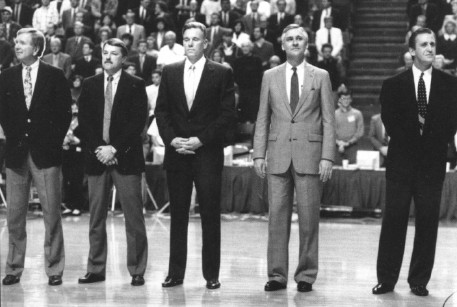
A troubling example of inept journalism comes from the otherwise solid writer and basketball researcher Mike Douchant, author of Inside Sports: College Basketball. He claims in his section on the 1951-52 season an outright fallacy concerning Rupp with respect to a game played between St. John's and Kentucky in December. A black player, Solly Walker played in the game and this was one of the first occurrences of a black player travelling to a traditionally white southern state school to play an official basketball game. Douchant first claims that Rupp protested the playing of Walker (which as demonstrated later on in this page is incorrect. The Associated Press ran a story where Rupp specifically discussed Walker's appearance in Lexington, and mentioned that Kentucky had already set up accommodations for the entire team.)
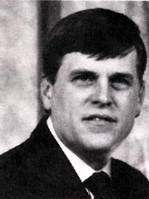 |
JPS Note Looking at Walker's career statistics (as listed in the St. John's media guide), he only missed one game his entire career. By no means three weeks as Douchant suggests. I also checked the UK-St. John's NCAA Tournament game later that season on the chance that Douchant was actually talking about that game, however that did not happen either. Walker played in the NCAA game against Kentucky and afterwards played the following game against Illinois.
The level of false detail attributed to Rupp in an apparent on-going effort to vilify the man is pretty pathetic in this case. The claims by Douchant are even more odd because his 1994 version of the same book did not mention this issue at all. (I've been told that his 1997 version does have it however.)
An appropriate question to ask would seem to be what motivated Douchant to feel it was so vital between the years of 1994 and 1997 to edit a narrative on the 1951-52 season, adding outright lies (and apparently flushing his journalistic integrity down the drain.) I have been able to contact and question Douchant on this discrepancy in his book. After a number of years, he is still currently 'looking into it' although he has yet to admit it was even a mistake and certainly didn't say on what basis he made the claim. It will be interesting to see how the next edition of this book reads.
JPS Update: Doing a search of USA Today Newspaper archives the source of this erroneous claim may have come from columnist Tom Weir, who in an article (McGuire, Lewboy: Common Legacies", USA Today, October 14, 1994) made this exact claim when Weir wrote: "That '85 Final Four was in Lexington, Ky., where McGuire also had been the first coach to put a black player on the floor at the University of Kentucky, over coach Adolph Rupp's protests. 'St. John's is a Catholic school, and it's open to everyone,' McGuire told Rupp. So Solly Walker played, but only for a few minutes before he took a hit sidelining him for three weeks. St. John's lost but got revenge later when it knocked Kentucky out of the 1952 NCAA tournament."
Looking over Weir's body of work at USA Today he clearly had a bone to pick with Rupp, making a number of spurious claims. The Solly Walker game is discussed in more detail later in this page.
During the 2009-10 NCAA Tournament, Kentucky faced Cornell in the Sweet 16 in Syracuse, NY. The clash brought about great media interest, due to the differences in the two programs.
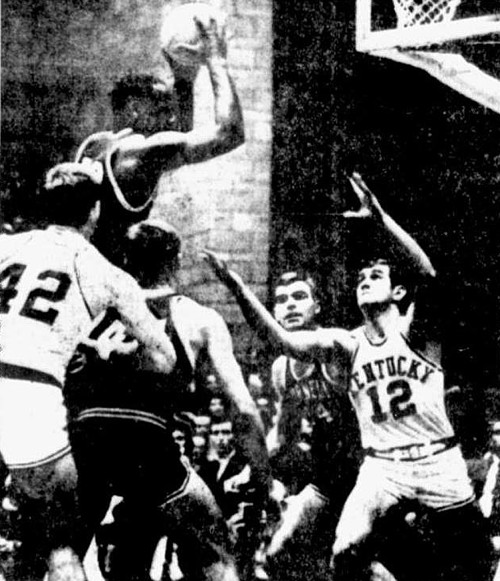 |
A few sportswriters took the opportunity to track down some of the former Cornell players and interviewed them about the game. They decided to include a few barbs at Kentucky and Rupp, even though the players admitted they didn't experience any racism at the time.
The date was Dec. 28, 1966. The score was Cornell 92, Kentucky 77.
"I can't say we were going in expecting we might win," [Cornell player Gregg] Morris told The Post. "We were going in convinced we weren't going to do anything stupid."
Rupp had suffered the ignominy of losing the 1966 national championship to the all-black underdogs from Texas Western. Now here came Morris, a 6-foot guard from Mount Carmel High School in Chicago whose skin color would have prohibited him at that time from playing for Rupp, and the Big Red.
. . .
"We didn't run into any insults or anything like that before the game, during the game, after the game," Morris recalled, "and we hit all the redneck bars and there was nothing. Everybody knew who we were. It was like they were shocked we were able to do it."
("Former Player is Living Proof: Cornell Can Beat Kentucky," by Steve Serby New York Post March 24, 2010.)
Fast-forward to that December night. Another black player -- Cornell's Greggory Morris -- torched Rupp and his all-white team, much to Rupp's regret. Morris had the game of his life with 37 points and 11 rebounds.
"I don't remember much racism from the crowd that night," [former Cornell player Gabby] Durkac, then a senior who had 14 points and eight rebounds and now, 64, a farm-animals veterinarian in Kittanning. "But I do know Rupp was a racist. I'm sure that really bugged him. I can see him jumping up and down, yelling at his guys."
("Cornell vs. Kentucky Has Some History," by Ron Cook Pittsburgh Post-Gazette March 24, 2010.)
JPS Note Serby's claim that Gregg Morris would have been prohibited from playing for Rupp at that time (December 1966) is sheer ignorance on the part of the writer. As this page will illustrate in later sections, the University of Kentucky publicly announced that their athletic programs were open to black players in late Spring of 1963 and Rupp first offered a scholarship to a black player in 1964 (Wes Unseld). Kentucky was actively recruiting black players in basketball and other sports and those that chose to accept were playing for UK at the time. Serby's claim is factually inaccurate and does not square with reality, and is illustrative of poor and lazy journalism.
As for the quote in Ron Cook's article from Gabriel Durkac, it's hard to take this as very authoritative. Presumably if Rupp had actually said or did something to Durkac that demonstrated him as a racist, he would have mentioned it in the article. As it was, Durkac admitted there wasn't anything notable concerning race while at UK.
I contacted and asked Cook whether there was an actual basis for Durkac's claim or whether this is just the same 'common knowledge' that a lot of people believe, based on what they presume from the media etc. (which as illustrated on this page has been substandard to say the least). I'm currently waiting for his reply and will update this page when I do.
I think it's noteworthy in this case to remind readers that Cornell came to play in Lexington with an integrated team, and found no noticeable racism, even though they convincingly beat the Wildcats. It's noteworthy because during this time, Kentucky was one of very few schools in the South that regularly invited integrated teams onto their campus, in fact they had been doing so since 1951.
It probably never occurred to these sportswriters that the very fact that they played in the South during that turbulent period at all, without incident, can be traced to the fact that Kentucky invited numerous integrated teams to play there. In fact, a large number of black players playing college basketball during the 1950's and 1960's who ventured into the South, their ONLY game came against Kentucky. Of course that's not the tact they took, instead trying to further their simplistic agendas by making inaccurate derogatory claims against Kentucky and Rupp, based solely on their OWN ignorance.
Another claim concering Rupp came from Spencer Haywood, who came out of Detroit Pershing High School in 1967. Haywood was heavily recruited, reportedly by over 200 colleges, when he signed a letter of intent with the University of Tennessee in May, 1967. By signing with the Vols, Haywood would become that school's first black signee.
Tennessee brought him down to Knoxville during the summer where they set him up with a no-work job, a complimentary car and plenty of cash for clothes and spending money. According to Haywood's book (Spencer Haywood: Rise, Fall, and Recovery (Turtleback Books, 1994)): "A big selling point for Tennessee was that unlike most of the schools that recruited me, Tennessee said it wouldn't be necessary for me to attend junior college for a year. I didn't pass Tennessee's entrance exam, but I was told that was no problem. The school would bring Wiley Davis and me to Knoxville for the summer, get us nice jobs, and set me up with tutors to prep me for another shot at the test."
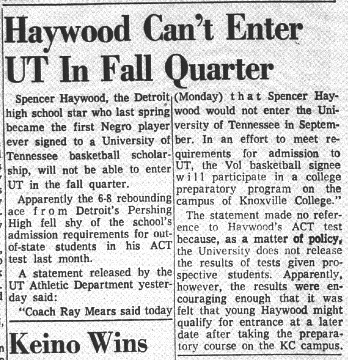 |
Instead, Haywood chose to leave Knoxville in the dead of night. With the help of his high school coach, Will Robinson, Haywood soon ended up at Trinidad Junior College in Colorado and eventually returned to Detroit to star for the University of Detroit Titans.
In Haywood's autobiogaphy published in 1972, below is how Haywood described the decision to leave Tennessee:
| "I finally decided to go to Tennessee. That sounds crazy, I know, and [Will] Robinson was dead against it. He figured they just wanted to use me, and he was probably right. But I had met a chick in Knoxville when they brought me to the campus for a visit and I really dug this sister; and even though there sure weren't many blacks in school, there were a lot of them in town, and a lot of sisters I thought I could deal with in the black part of town, and I thought I'd have fun there. It's just a chancy thing, you know, why a guy makes up his mind that he likes this place or that place or wants to go here or there, and a sympathetic sister is as good a reason as any. Ray Mears, the coach, seemed like a nice man. And there was a lot of talk of me breaking the black barrier, blazing a trail in basketball for blacks to follow me in that school and all southern schools. I liked the idea of being a pioneer. So I enrolled. But when I took the entrance exam, I flunked it. I did my best, but I wasn't ready for it and I didn't make it. And the NCAA ruled I couldn't play ball there because of that. So I dropped out."
"Robinson had wanted me to go to New Mexico, where he'd sent Mel Daniels and Ira Harge and had a good arrangement, or Detroit, where he hoped he'd be the next coach. Because of flunking the Tennessee test, I guess, I couldn't get right into a college, but had to go to a junior college first. Bob King, the New Mexico coach, gave me a pretty good rush and arranged for me to prep at Trinidad Junior College in Colorado, and I gave in to him. He sneaked me out by plane in a helluva hurry, as though guys were on my tail, and I guess the recruiters were coming round, and I found myself at good old Trinidad JC." (Stand Up for Something: The Spencer Haywood story by Bill Libby and Spencer Haywood, Grosset & Dunlap, 1972, pg. 36-37.) |
JPS Note: The above description is all well and good, and is consistent with the facts at the time.
Tennessee coach Ray Mears himself when describing Haywood noted:
"We were one of the first schools in the south to integrate when we got Spencer Haywood. But we lost one of the best basketball players in the nation. Even though he was a three-point student in high school he just couldn't read fast enough for the tests." - by Steve Swift, Kentucky Kernel, "Integrated Athletics: A Progressive Cooling Off Period", May 3, 1973.
However, years later in another autobiography, the story began to change, in ways which diverted the blame for his failure at Tennessee away from his own doing, and onto a more convenient target, Adolph Rupp. I say convenient because these new claims came many years after Rupp was dead (and thus obviously not in a position to refute Haywood's claim), and the various anti-Rupp claims in the media echo-chamber were gaining legs.
It seemed to me that Tennessee was reneging. The people in town and at the school, for the most part, had been very nice to us. Coach Mears seemed like an honest man. But they had made it sound so easy, and now there was a major kink in the original plan. I wanted to call off the whole deal, try out one of the other 338 schools that had recruited me, but the Tennessee people told me that would not be possible. "We've invested a lot of time and money in you, Spencer," they told me. "You can't leave us now." I figured I could. Wiley and I called UTEP to see if those people were still interested in me,and naturally they were. When Robinson found out about that plan, he phoned us and really ripped into us. "Oh, now you're negotiating deals for Spencer, eh?" Will said to Wiley. "Look, I warned you about Tennessee, and if you guys want out of there, I'll find a place for you." . . . The hard part would be getting out of Knoxville. I knew the Tennessee people would not be happy to see their new superstar splitting town, so Wiley and I figured it would be best if they didn't see us splitting town. We knew there might be trouble, angry confrontations, and who knows what else. Threats? Intimidation? When you're raised in the South, your imagination can really take off on stuff like this." We were afraid that if we tried to reason or negotiate our way out of town, we might not get out. We plotted our escape. Coach King arranged a midnight flight from Knoxville to Denver. He wanted to get us to Trinidad as quickly as possible, ahead of the rival recruiters who would be circling like buzzards once word got out that I was fleeing Tennessee. Late one night Wiley and I jammed our luggage in the trunk of the yellow Cutlass I was driving at the time and headed for the airport. But we ran out of gas on the way, so we left the keys in the car, grabbed our bags, and ran the last two miles to the airport, looking over our shoulders all the way. We were scared as hell until the plane got into the air, and then we laughed like little kids. We imagined the newscasts. "Spencer Haywood has disappeared! Police found his car abandoned airport, and there are no clues to his whereabouts." We were relieved to be leaving the South, but all we knew about our next destination was that it was somewhere in the West. Trinidad. Sounded exotic, like something in the Caribbean. (Spencer Haywood's Rise, Fall and Recovery by Spencer Haywood and Scott Ostler, Turtleback Books, 1994, pg. 70.) |
As the years went on, the narrative became more streamlined. Instead of the issue being Haywood and his own inability to make a minimal academic standard, it was blamed on Rupp exclusively.
Unfortunately, a few gullible sportswriters were naive enough to actually repeat Haywood's claims as fact. In a 2006 article on Haywood, Dan Raley of the Seattle Post-Intelligencer interviewed Haywood and wrote: "A Misssissippi native raised as a teen in Detroit, Haywood accepted a scholarship offer from Tennessee, supposedly making him the Southeastern Conference's first black basketball player. When Kentucky's Adolph Rupp interceded, suggesting his program would decide when and where the league became integrated, Haywood fled to Trinidad State Junior College near the Colorado-New Mexico border, where he averaged 28.2 points and 22.1 rebounds." ("Where Are They Now? Spencer Haywood, the Stylish Star" by Dan Raley, Seattle Post-Intelligencer, November 22, 2006.)
JPS Note: First of all, even if Haywood had made the grades and enrolled at Tennessee, he would not have been the first black basketball player in the Southeastern Conference. As mentioned earlier, Perry Wallace and Godfrey Dillard had preceded him by a year, with Wallace ready to play varsity for Vanderbilt in the coming 1967-68 season. This faux pas demonstrates the extent of Raley's 'fact checking' efforts, along with Haywood's delusions of grandeur.
Secondly, although I shouldn't have to mention this, I will for completeness sake note that a search of the newspaper archives from 1967 show no evidence whatsoever of Rupp taking exception with Tennessee's signing of Spencer Haywood.
If Rupp had tried such a thing, there's no doubt that Tennessee's Coach Ray Mears (no fan of Rupp) would have cried bloody murder. Beyond that, it defies logic as to how Kentucky would have any say whatsoever who Tennessee signs, much less that they have magical powers to cause a player to renege on a signed letter-of-intent and run away under the cover of darkness to Colorado. Raley's version of events is complete nonsense.
In late September of 2009, a particularly damaging claim against Rupp was made in the New York Times, a claim which seemingly came out of nowhere.
The article interviewed former Georgia and pro basketball player Tim Bassett, who currently works as the general manager of a Manhattan bar, and was reportedly working on a book about his life. Bassett was interviewed about his times as a former player, in particular his travails as a racial pioneer, given that he and teammate Ronnie Hogue were the first black players to suit up for the Georgia Bulldogs. (Hogue had started playing varsity in 1970-71 season while Bassett came to Athens a year later, as a junior college transfer).
In the article Bassett makes two strong claims against Kentucky coach Adolph Rupp. Wrote the New York Times author, Chris Hine:
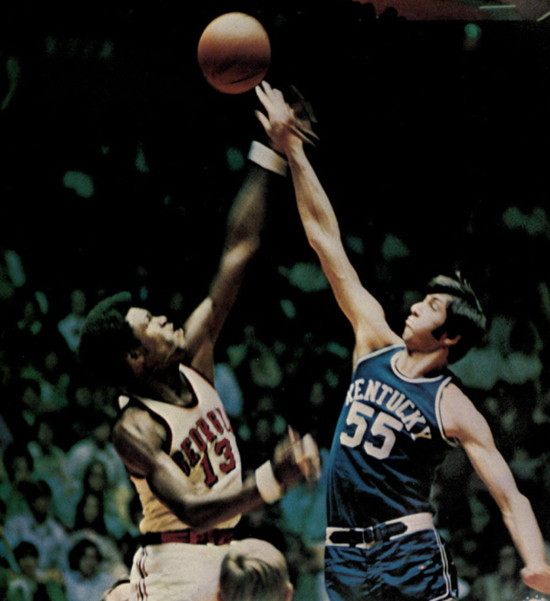 |
"He said I didn't belong in the Southeast Conference, and he said, 'We'll get you back when you come to Lexington,'" Bassett said.
When the Bulldogs went to Lexington a month later, they entered the gym to find Bassett hanging in effigy from the ceiling. Stunned, Bassett's teammaes offered not to play the game if Bassett were too uncomfortable there. A motivated Bassett played anyway and had 17 points and 17 rebounds, but Georgia lost, 87-63.
After the game, Bassett wanted to let Rupp know just how he felt about Rupp's allowing the effigy in Kentucky's gym. He went searching for Rupp's office but was stopped before he could get there.
"I just wanted to let him know that I was a man, and I was trying to figure why he felt it was O.K. to disrespect anybody in that way," Bassett said. "What was his mind-set? This is a leader of men, you know, all these years, and for him to allow that, it just didn't make sense."
Bassett never had the chance to speak his mind to Rupp. That was the final time Bassett faced Rupp's Wildcats. Rupp retired after that season.
JPS Response: These claims are very damaging to Rupp, if true. It is correct that Bassett had a great game against the Wildcats in Athens, which was the first time Georgia had beaten UK at home since 1967 (and only the eighth time ever, home or away). And it is true that Rupp was not happy with the loss (he never was) and in particular the efforts of his All-SEC center Jim Andrews, who was primarily matched against Bassett in the game.
After the game, Bassett bragged about how he dominated Andrews, who had been held to eight-points. Boasted Bassett "I knew I could take Andrews to the basket. That was our plan . . . he's slow and he's not a good defensive player. He hurts them on defense." (Atlanta Journal, February 22, 1972).
The veracity of the initial claim about Rupp having more than a few-second discussion with Bassett after the game seems odd, but who's to disagree, since presumably this was a conversation between two people, one of whom is dead.
I should note that if this conversation indeed happened, it's not a given that Rupp was referring to Bassett's race, as much as his academic standing. I don't know the state of Bassett's academic standing at the time but the mere fact he took a JUCO route to Georgia suggests it probably wasn't stellar. If someone wants to claim it was based on race, then that makes very little sense, given that SEC varsity basketball had been integrated since Vanderbilt's Perry Wallace in 1967-68 and subsequently many SEC programs had already integrated their varsity programs (including Kentucky and Georgia the year previously to go along with Vanderbilt, Alabama and Auburn and that season Florida, LSU, Mississippi & Tennessee). In other words by the time this conversation is supposed to have occurred nearly the entire SEC was already integrated. Beyond that, if the comment was race related it would be even more bizarre because at the very time Rupp was supposed to be saying this to Bassett, Kentucky was integrated as black players Darryl Bishop and Elmore Stephens were on the Wildcat team.
It is true that Rupp did prepare his team the second time around for the Bulldogs, an opponent which Rupp claimed was the best Georgia team he could remember. In particular Andrews, who had an outstanding game in Lexington scoring 32 points in the return game while holding Bassett to 17 points, as part of a 24-point Kentucky victory. Said Rupp "We had Andrews primed for this one. . . When you start riding a guy about his defense, that usually wakes him up." [JPS Note: Although it's not clear if Rupp was referring to himself or to Bassett's quotes who had ridden Andrews about his defense.]
Where Bassett's story falls apart, however, is in the description of the 'effigy' that he claims was hung 'from the ceiling.' For starters, the ceiling in Memorial Coliseum is suspended so high off the floor that there is no realistic way that someone could hang something from it, without the use of a high-reach or in a few spots a large ladder. Neither is it clear how an effigy would be hung, given that the ceiling of Memorial is flat (i.e. there's no accessible rafters etc. to hang something from.)
JPS Note: I think it's noteworthy that although Memorial Coliseum was considered one of the better gymnasiums in the South at the time, it wasn't THAT large. For example there's no second deck to speak of and all parts of the arena are readily accessible from the floor. If there was something amiss anywhere inside the arena, it wouldn't take more than a half-a-minute to investigate.
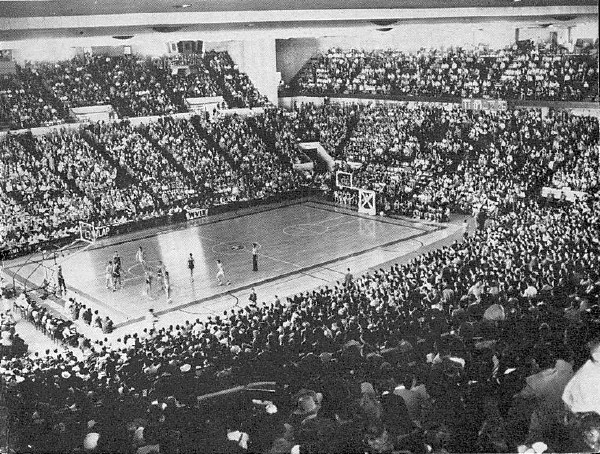 |
The other critical problem is that there is absolutely no record or recollection of this incident happening from anyone else.
For the record, I did talk with Mr. Bassett himself about his claim. He did still maintain that he saw 'something', albeit for a brief time. But he didn't provide any specific details as to what it was, where specifically it was located within Memorial Coliseum or why he thought Rupp was behind it.
Beyond talking with Mr. Bassett, I questioned administrators and support staff who were at the University of Kentucky at the time, including then-sports information director Russell Rice, and they all completely deny that such an event happened. In fact they were offended that the claim was even made and annoyed it was taken seriously by others.
University of Georgia officials, who were also at the school during that time period, also don't recall such an event occurring. Numerous players and support personnel for both teams were questioned about this and none recall this incident. More critically, of a handful of Bassett's own teammates, not only don't they remember seeing an effigy, but none remember something as memorable as offering to sit out a game to support their teammates over what would seem such a controversial event.
Beyond all of this, looking back through the newspaper articles which covered the games (including the The Atlanta Journal, The Atlanta Constitution and UGa's student newspaper The Red and Black), none mention or even hint that something had been amiss before, during or after the game. One would think that if an incident had indeed occurred that someone would have mentioned it somewhere?
Or surely at least the coach of Georgia would know about it and be incensed? But again there's no hint of animosity. It is noteworthy that by all indications UGa Coach Ken Rosemond and Rupp were on good terms prior to these games. More germane to the issue at hand, soon after these two UK-UGa games in 1972, Rosemond wrote to Rupp asking for a letter of recommendation to be considered for the head coaching position at Duke; so it appears that Rosemond and Rupp stayed on a good terms. [JPS Note: Unfortunately, Ken Rosemond died in 1993 and thus is not available for comment on these particular claims.]
So where does this leave us? Frankly a lot more questions than answers at this point. For example, even if such a thing happened, what makes Bassett so sure that Rupp was even aware of it, much less condoned it? For that matter, what exactly was hung, and where, and when? (important questions since the claim made in the New York Times that it hung from the ceiling, while probably not physically impossible, would be very difficult and conspicuous for one to hang given the architecture of Memorial Coliseum.) And most importantly, why can't anyone verify such a memorable incident occurred, and why is there no hint or mention of it in the record of the day?
Strangely, the year before this article appeared, the book Across the Line by Barry Jacobs was published about the struggles that black basketball pioneers in the ACC and SEC experienced. Both Bassett and Hogue were interviewed extensively for this book. A complete 23-page chapter was devoted to their time at the University of Georgia and covered a number of racial incidents and topics, yet this particular incident wasn't mentioned at all. Maybe someday Bassett's own book will solve this mystery?
As far as The New York Times, this is where things actually get interesting. After talking directly with the author of the article (Chris Hine), the sports editor (Tom Jolly) and the managing editor at the paper, it was clear that this particular claim in the article should never have been published in the first place.
According to Hine, who was an intern and had since left the paper to take a more permanent position in Chicago, he had many of the same questions about Bassett's story as I did. Hine claimed he left the passage in the story as a draft with the intention of verifying it with a second source (or failing that removing it completely) at a later time, which he was never able to do. Apparently, the newspaper went ahead and published the draft version without his knowledge or consent, and more importantly proceeded to publish without ever verifying what were very serious claims with any substantiation or second source. (Journalism 101!)
When I brought the issue up to the editor, Tom Jolly, he refused to make a retraction until he could 'find the truth', although Jolly struggled to make any headway on his own. After providing him as much help as I could, including providing direct contact information to sources, he never got back to me and presumably was as ineffective as Hine and myself were at independently verifying any of these claims.
Postscript: Later on, Jolly was reassigned to another section of the paper, in large part due to the way the New York Times sports department, under his direction at the time, mishandled the Duke Lacrosse story, among other issues which revealed a serious lack of journalistic integrity and professionalism at the paper.
There are many other examples of poor journalism where a sportswriter disparages Rupp without any detail, references, or evidence to support their claim. Despite the lack of support, some of these claims may be true. Likewise, they may have been made up. Whatever the case, they are irresponsible as provided and should require more substantial backing.
Rick Cantu reports in his story about Don Haskins that "The Wildcats were coached by the legendary Adolph Rupp, who once declared he would never let a black player wear Kentucky blue." (Rick Cantu, New York Times News Service (Reprinted in Wichita Eagle), "Breaking College Basketball's Color Barrier; Haskins' Squad Changed Race Relations in '66 Title Game," March 9, 1997.)
This charge was also mentioned in an article by John Smallwood, "And Rupp, known as The Baron, had declared that he would never let a black player wear Kentucky Blue." (John Smallwood, Philadelphia Inquirer, "Texas Western Win Grows with Years," February 7, 1997.)
The charge was repeated in 1999 by Bruce Jenkins when describing the New York City basketball scene in the late 1940's, "At a time when Kentucky coach Adolph Rupp publicly announced that he wanted no black players, CCNY had two blacks and three Jewish players in its 1950 starting lineup." - by Bruce Jenkins, A Good Man: The Pete Newell Story, Frog, Ltd., 1999 pg. 29.
JPS Note: Mr. Jenkins was contacted and asked the source of this claim. Jenkins admitted he did not have an original reference backing up the claim, and provided no other source. Instead he cited 'common knowledge.'
Two examples where opposing players repeated this charge appear over a 40-year time span.
"Adolph Rupp, the coach of Kentucky who had said publicly he would never have a black player on his team. (He) Represented the southern tradition, the all-white tradition." - Maury Allen, CCNY '53, HBO Original (Black Canyon Productions), "City Dump, the Story of the 1951 CCNY Basketball Scandal," 1998.
This assertion was repeated by Chris Webber for an interview on Kentucky's hiring of Orlando Smith. (Roy Firestone, ESPN, November 1997.)
JPS Note: Although this charge has been repeated often, I have yet to find any evidence to substantiate it. It does make for a good sound bite and thus may have stuck to Rupp simply because it's memorable. (Or it's possible that a similar remark which Alabama football coach Paul "Bear" Bryant once uttered during a television interview was mistakenly attributed to Rupp.) As a Kentucky fan, it would be useful to find out where Webber learned of his belief. That is, did he learn of it on his own, from the media, from his general manager with the Washington Wizards Wes Unseld, or perhaps from a rival to Kentucky during the recruiting process. Kentucky was desperately recruiting Webber out of high school, with Deron Feldhaus even volunteering to give up his scholarship in order to sign the big man from Michigan. Webber had agreed to visit Kentucky a few times, only to renege at the last moment each time. Webber never visited Lexington and later signed with the University of Michigan. Kentucky later met Michigan in the Final Four where the overachieving UK squad lost to the Webber-led Wolverines. Webber and Michigan went on to lose the national championship to North Carolina.
A variation of this accusation was also repeated in an article that dealt with Mississippi State's history of not attending NCAA Tournaments because of the possibility of playing integrated teams. Rupp jumped at the chance to take the place of SEC teams that decided not to participate. Instead of praise for this, however, Rupp received the following treatment:
"Kentucky's legendary but racist coach, Adolph Rupp, once vowed that he'd never have a black player, but he wasn't stupid enough to let his bigotry keep the Wildcats from winning four national championships during the height of segregation in the South." - by John Smallwood, Philadelphia Daily News, "Bulldogs' Foes: UCLA, and Past Segregated '60s Haunt Miss. State," March 23, 1995.
"That night, Texas Western upset a Kentucky team coached by Adolph Rupp, who refused to call black players by anything but a slur you probably haven't heard in years." - by Skip Bayless, Chicago Tribune, "A Night for Irony -- And History," March 31, 1998.
JPS Note - This is pure speculation on the part of Bayless and doesn't stand up to the evidence presented in this page.
One charge often leveled at Rupp is that he said after the loss "at least we're the Number One white team in the country." This quotation was uttered by the sports editor of the Lexington Herald, Billy Thompson, at a post-season banquet, (by Billy Reed, Lexington Herald Leader, "30 Years Later, A Runt and a Miner Talk Hoops," January 19, 1996.) There is no evidence that Rupp himself ever said this. The statement did not go over so well with the crowd either as "the statement offended the sensibilities not only of anti-racists, but of UK followers who understood the lesson of the Texas Western game." (Billy Reed, Louisville Courier Journal, March 2, 1982.) In fact, Thompson was fired for the comment shortly after the banquet.
"The fact the writer used poor judgement in his comment has nothing to do with my father," Herky Rupp said. "My father was simply a spectator at the banquet just like everybody else." - by Rick Morrissey, Chicago Tribune, "New Face Leads Kentucky These Days," November 30, 1997.
Alexander Wolff tries to paint Rupp as a racist in his book Raw Recruits and comes up with an interesting example.
JPS Note - This is quite a bizarre spin on the facts. Wolff's claims that Rupp was interested in playing against black teams in order to show notions of white supremacy are off-the-wall and completely unsubstantiated. A more accurate spin is also a more simple one. Rupp's teams played in the NCAA Tournament because Rupp was obsessed with winning basketball games. As a professional journalist, Wolff might at least have tried to back up his accusation with some type of facts or supporting evidence but he made no effort to do so.
Curry Kirkpatrick mentions that "Rupp usually was a charming p.r. rogue, brimming with diplomacy and psychology, regrettably, his politics leaned more toward the KKK." - (Curry Kirkpatrick, Sports Illustrated, April 1 1991.) There are no references to substantiate this claim.
Return to top
![]()
Hearsay
Many people claiming Rupp was racist are sportswriters with various loyalties and personal agendas. There are three published accounts which indicates that Rupp was prejudiced against blacks. In both instances, Rupp was talking to people in what he considered to be "in confidence." Also in both cases, Rupp was extremely agitated, in the first instance in the midst of losing a national championship game and the second, being threatened with losing his autonomy over the program which he spent a lifetime building. A third instance occurred when Rupp was drunk and in my mind, actually goes further in confirming a deep-seated prejudice because all the other complications found in the first two cases are not present.
1. Rupp allowed Sports Illustrated writer Frank Deford to stand in the Wildcats' locker room at halftime. Deford said he was stunned by Rupp's racist halftime exhortations.
"He said, 'You've got to beat those coons, ' " Deford said. "He turned to (center) Thad Jaracz. 'You go after that big coon.' . . . He talked that way all the time. . . A chill went through me. I was standing in the back of the room, and I looked around at the players. They all kind of ducked their heads. They were embarrassed. This was clearly the type of thing that went over the line."
This exchange lends direct evidence that suggests Rupp was racist. It is still important to remember, however, the context under which the situation occurred. That is, during the halftime of the national championship game in which Rupp's team was being beaten. I personally don't put a lot of stock into what a person says during the heat of battle or in a time of crisis. Others mileage may vary.
This spectacle left a lasting impression on Deford, who apparently has used the incident to judge Rupp and the program in their entirety. "It was there that Deford first became aware of the virulent racism that still existed in the Kentucky program." (by Michael MacCambridge, The Franchise, Hyperion (1997) pg. 146.) Despite what Deford conceded was adverse reaction by the players and a feeling that this was not normal behavior on the part of Rupp, Deford saw fit to scorn Rupp as a person and the program as a whole for the outburst and view it as a natural part of Kentucky basketball.
"He hated black people," Deford said. "I mean, he was a virulent racist." - by Rick Morrissey, Chicago Tribune, "New Face Leads Kentucky These Days," November 30, 1997.
To my knowledge, Deford never wrote first-hand about the incident. The wrap-up of the championship weekend didn't even hint at any of this. It didn't even mention the fact that Texas Western was all-black (Frank Deford, Sports Illustrated, "Go-Go With Bobby Joe,", March 28, 1966.) although the article the week before, mentioned the fact but tried to downplay it. (see above.)
Even as late as 1991, it seemed Deford was downplaying the effect of the game.
I don't know, I was always surprised at the significance placed on that game," [Frank] Deford said. The Loyola-Chicago team that won it a few years before was virtually all-black. That had been the big fuss. Not much was made of Texas Western being all-black at the time. It was sort of a discovery by the outside world that came a little bit late, as is often the case." - by John Clay, Lexington Herald Leader, "The Runts: Still Special After All These Years," February 9, 1991.
It is unfortunate that he didn't see fit to interview Rupp on the subject or to confront the issue in 1966 in order to support his contention that Rupp was "virulently racist." Deford claimed "he couldn't write about it at the time because he'd gained entry to the locker room for background purposes only, and then only in the event that Kentucky won." - by Michael MacCambridge, The Franchise, Hyperion (1997) pg. 146.
JPS Note: The excuse about not being able to write about the incident could have been easily side-stepped if Deford wanted to follow up and conduct a later interview with Rupp. (Deford, after all, is probably the most eloquent, socially conscious and respected sportswriter of his generation.) Instead, Deford's version of events were leaked twenty-five years after the incident in a vague reference from Curry Kirkpatrick's piece and only after thirty years did he confirm hearing the tirade, all well after Rupp was already dead. This instead of confronting the issue head-on which could possibly have brought integration more rapidly into collegiate athletics. At least Jack Olsen's piece (also in SI) in July of 1968 on UTEP and the black athlete had the courage and integrity to make criticisms at a time when the people had an opportunity to respond and even refute the evidence, and at a time when Olsen's criticisms had a real chance of effecting change.
The fact that Rupp made a deal with Deford beforehand hints that Rupp knew going into the game that he might have to resort to such a tactic if his team was playing poorly. That doesn't make the remark any less wrong, but it does cast doubt whether the things Rupp said were things which he really believed. Perhaps after Rupp died in 1977, Deford felt that since he would never be able to follow up on the story, he would rather leak the information than admit that he was revealing a conversation [a halftime talk] which almost any coach will readily admit is not the appropriate place to take down quotes. Perhaps Deford wasn't interested at the time [the 60's] to address such a vital topic, yet now wants to be portrayed as above the fray. Or perhaps Deford decided to amplify the severity of the accusation (such as in 1997), at a time when people, such as sports columnist Dave Kindred and this web page, have begun to publicly question the conclusions determined by Sports Illustrated. Whatever the reason, the actions by Deford appear to me to be particularly gutless in this case.
The halftime talk was recounted differently in an interview of Thad Jaracz in 1996.
"A lot of other stuff has been piled on top of that game since then . . . Those kinds of issues and those kinds of discussions didn't take place in the locker rooms." - by Pat Forde, USA Today, "Legacy of Rupp Slow to Recede Repercussions of 1966 Title Game Still Echo in Many Ears," April 2, 1996.
In addition, the only two UK players Frank Fitzpatrick interviewed for his book And the Walls Came Tumbling Down (Larry Conley and Tommy Kron) both deny that Rupp said this during the halftime as does his son Herky, who was also present.
"I never heard it, but I know Frank Deford real well and Frank is honest. If he said it happened, it happened," said Kron. "[Rupp] said so many things that was banter. He was not in good health and he was a cantankerous old guy."
"Was he a bigoted or prejudiced man? For a man in his sixties, perhaps he was," said Conley. "I will tell you this. I never heard him utter a derogatory word or a bigoted word in my presence. Never. I'm not going to say he didn't do it, but in my presence, never. Frank may remember that, I don't." - by Frank Fitzgerald, And the Walls Came Tumbling Down, Simon & Schuster, 1999, pg 214.
"In our locker room that night, race was the last thing on our minds. It never came up. All we were thinking about was how to win the game. All we wanted to do is win the national title. That's it. And if people ever portray us any differently, it's just wrong." - Larry Conley, by Mark Story, Lexington Herald Leader, "Winning, Not Race, on Mind of Runts in '66, Conley Says," August 29, 1999.
JPS Note: It's certainly possible that Jaracz, Conley and Kron are simply covering for his former coach. But the fact that everyone present who has been interviewed to date has refuted the incident does bring some questions. Added to that, Deford hasn't exactly helped his credibility by waiting over thirty years to come forward (if you want to call it that) with any type of first-hand account.
2. The second documented racial slur attributed to Rupp is found in a quote from Harry Lancaster, long-time assistant to Rupp, in his book Adolph Rupp As I Knew Him (Lexington Productions, 1979). Rupp said after a meeting with Dr. John Oswald, UK President at the time, "Harry, that son of a bitch is ordering me to get some niggers in here. What am I going to do? He's the boss."
JPS Note - This quote does directly conflict with statements Rupp made early in the 60's concerning his willingness to recruit blacks (see below)
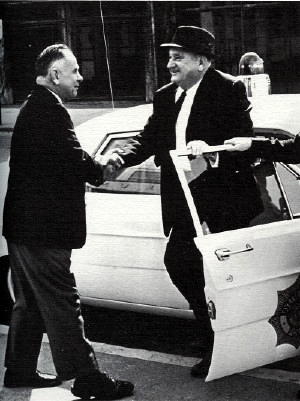 |
Finally, it came time for another conference up there, at the president's office. And we went up there and we really had it. . . . the president [Oswald], I don't think liked it too well, but he said "We'll I'm just going to tell you what I'm going to do. I'm going to demand that you get some colored boys," he says, "you're keeping us, and probably jeopardizing us from getting us all this federal help which amounts to some eleven million dollars" and he said, "if we don't get this through, it's because basketball is the last segregated department that we have here in the University." I says, "Well Doctor if you can help me any, suppose you help me go and recruit then." I said, "It's just that simple. I made an effort." I says "I brought you the list, and told you the times, and we made an effort to go get these boys and we haven't been able to get them." And I said, "I can't get them. I had Bernie Shively go with me and we couldn't get them." I said, "now if you and Bob Johnson can get them," I says "hop to it." I said "it's going to suit me fine." - Adolph Rupp, The Rupp Tape (Audiocassette), WHAS Productions, 1992. (![]() Audio Link
Audio Link![]() )
)
Assuming that this remark sparked the initial comment, this description of the events leading up to the remark seem less damning. Certainly to use the word "nigger" under those circumstances indicates a racist person, however under the circumstances of the conference, it's no longer clear that Rupp was against signing black players. He certainly was against signing players with marginal basketball skills and once again, that only lends credence to the assertion that Rupp was first and foremost a basketball coach, not a politician.
JPS Note - If what Rupp says of the conference is true, i.e. that the president was only interested in putting a black player in uniform for political/financial reasons, Rupp's stand, excepting his prejudiced remark, is IMO laudable.
As for Oswald, while some have given Oswald high marks for attempting to integrate UK athleties, it's not clear exactly what the basis of that is. Per Oswald's own words, while he was supportive of integration, he didn't go out of his way to push integration on the academic side. In a 1987 oral history interview he doesn't remember ever making a public statement in favor of integration during his time at UK (unlike Frank Dickey) and didn't seem to know when UK's faculty was integrated. (When Sociology professor Joseph Scott's name was provided by interviewer Terry Birdwhistell, Oswald could only remark that the name 'rings a bell'. But in the interview Oswald does seem to take great pride in his efforts on the athletic side, which apparently involved two home visits to black recruits early on in his career at UK. Oswald claimed that he went with Harry Lancaster (or Bernie Shively, he couldn't remember for sure) to help recruit Wes Unseld at his home in 1964. Although this apparently wasn't reported in the newspapers. Bizarrely, in the same interview Oswald falsely claimed Rupp never visited a black player's home, when in fact Rupp had visited Wes Unseld in his home in a highly publicized visit which must have occurred around the same time as Oswald's visit. Oswald didn't remember where Unseld ended up going to school and could barely remember that UK recruited Butch Beard the following year. Oswald seems to have taken great pride in his helping the football coaches recruit UK's first black player, Nat Northington, but then later he couldn't remember what happened to Northington after the Greg Page tragedy.
3.One story which does indeed demonstrate that Rupp was prejudiced against blacks is related by Ron Grinker in the book Loose Balls. This book, by Terry Pluto, attempts to harness the flavor of the ABA during its short-lived life. Grinker relates a story when he was escorting the aging college coach down to Memphis for a promotion of the local ABA franchise.
Once, I was on a flight with Rupp and sat with him in the first-class section. He had about six Kentucky bourbons in less than an hour and was about halfway to the wind. I told him that I was an attorney who represented some basketball players. Now, I had never met the man, and the first significant thing he said to me was, "The trouble with the ABA is that there are too many nigger boys in it now." I sat there just stunned. That just killed my image of Adolph Rupp the great coach. Maybe it was because he had too much to drink, but even so... - Loose Balls by Terry Pluto, Simon & Schuster, 1990, pg. 241.
JPS Note - This story, if true, confirms to me that Rupp was prejudiced against blacks deep in his heart and frankly, this is by no means surprising given the time period he grew up and lived. The fact remains, however, that it took a state of inebriation to bring these feelings out in the open. In regular life, Rupp suppressed these feelings and often rebuked them to assist blacks of all walks of life (as will be shown below). In my mind, the mere fact that these feelings are hidden deep within a person doesn't by themselves make them worthy of criticism (society maybe), but how that person can overcome these beliefs and how they conduct themselves in their daily business is what is key. (In fact, I'm quite sure that many of the great social heroes had deep seated beliefs ingrained in them from an early age which they were able to overcome and this experience no doubt left them stronger in their convictions.) I anticipate that some Rupp critics will seize on this example to make their point, but I believe it is generally unfair to use such evidence (i.e. what someone says when drunk) on anyone.
Update: One recent refutation to this claim by Grinker was made the Rupp family itself on the Coach Rupp website, which notes: "Adolph Rupp was president of the Memphis Tams from April 1972 to June 1973. Adolph Rupp had diabetes and lost part of his foot to the disease. He had quit drinking by the late 1960s."
Obviously if that's accurate, then it casts doubt on the truthfulness of Grinker's account. Unfortunately Grinker died in 1997 so it's not possible to get a response from him.
Return to top
![]()
More Evidence Against Rupp
Byond the instance already discussed concerning the second-hand claim that Rupp had said 'no five blacks could beat my team' prior to the 1966 Championship game, there are other instances where Rupp reportedly disparaged blacks, although their authenticity and relevance to this issue in some cases aren't clear. The following is from yet another second-hand source where he reportedly made negative comments about blacks. Added to that is the broad accusations that Rupp didn't recruit black players "hard enough" had a penchant for deriding these players by calling them "boys".
4. Alexander Wolff reported that Rupp called up a young sports reporter (Jimmy Breslin of the New York Journal-American) in New York in the early 60's and asked him to "kindly indicate 'colored' high school players with asterisks so Rupp would know where not to bother to send his recruiters." This was first mentioned in the book Raw Recruits, (Pocket Books, (1991) pg. 102-103) and subsequently has been repeated by Wolff virtually every time he writes about UK. This is a powerful quote but one which is highly dependent on the context of the time and way it was said. Again, stating that this proves Rupp was racist assumes that his remark was a nasty side effect of a racist attitude and not a matter of fact in his recruiting work. It also assumes that the decision to recruit blacks to the University was Rupp's sole decision. It doesn't take into account the influence of others (within the University or SEC offices) on whether the coach was allowed to sign black players. To assume any coach, even one as influential as Rupp, to have unconditional power over who receives a scholarship to the university, regardless of race, in the early 60's is being naive.
Edward R. Breathitt reinforces this idea that the providing of scholarships was not the sole responsibility of the basketball coach.
"In 1966 (sic), UK President John Oswald and Athletic Director Bernie Shively decided that our university should offer athletic scholarships to young men and women who were qualified, without consideration to race, religion or ethnic background . . .Many younger Kentuckians are not aware that this university did the right thing in 1966, and led the way for every other university in the Southeastern Conference to follow suit. I was chairman of the board, and I recall that the Athletic Board and the university and the Board of Trustees unanimously approved this move." - by Edward Breathitt, Letter to the Editor, Lexington Herald Leader, "New Coach Fits Well with Kentucky Goals and Legacy," May 13, 1997.
JPS Note: The year was actually 1963 that UK opened their athletic program and started to offer scholarships. And it wasn't Oswald who initiated it, it was Frank Dickey, although Oswald soon arrived afterwards.
5. A common charge against Adolph Rupp was that he didn't recruit black players "hard enough" during the 60's. Kentucky generally recruited in the state of Kentucky and in border states such as Illinois, Indiana and Ohio. During the mid-60's there were a number of high profile black players in the state including Clem Haskins, Mike Redd, Dwight Smith, Butch Beard, Wes Unseld, Jim McDaniels etc. so it was a perfect time to integrate UK. Rupp, however, seemingly didn't feel the pressure to do so from the community, the league or the media. (Billy Reed, Lexington Herald Leader, "30 Years Later, A Runt and a Miner Talk Hoops,"January 19, 1996.) Probably the only source of pressure to integrate the team at the time came from Dr. John W. Oswald, the president of the University who took this position in 1962. (Billy Reed, Lexington Herald Leader, "Basketball's New Face Part of Runt's Legacy," February 15, 1991.) Rupp did recruit some of these players. Whether he was sincere or not seems irrelevant because he obviously failed to give the impression to these recruits that he was serious about them coming to play for the University.
One aspect that helped to reinforce the image was Rupp's insistence in only recruiting quality players. No doubt he could have taken a mid-level talent and put him on the bench, to play the role of a token black, but Rupp refused to do that.
He [Oswald] says "well get someone, I don't care if he sits on the bench". I says "I'm not going to do that". I said, "I'm not going to get someone and have him sit on the bench". I said "I don't recruit that way. When I recruit, I'm gonna get someone, that can play. The only way I'm going to offer anybody a scholarship is if they can play." - Adolph Rupp, The Rupp Tape (Audiocassette), WHAS Productions, 1992. (![]() Audio Link
Audio Link![]() )
)
Rupp bristled when UK president John Oswald told him to recruit more black players. But that was only the reaction of a strong-minded man who "didn't do anything he didn't want to do," Herky [Rupp] says. "He wanted good players, black or white. He didn't give scholarships for political purposes." - by Robert Kaiser, Lexington Herald Leader, "Loyal to the Legend Coach Adolph Rupp's Family Strive to Return Luster to His Reputation Legacy Fades with Memories of Fans," March 14, 1993.
"I might have the reputation of being mean, but I'm not THAT mean," Rupp told [UK team academic advisor Claude] Vaughan. "I'm not going to put some kid on the end of the bench and hurt his feelings and his parents' feeling just so we can have a token. I'm going to recruit a black kid, and I'm going to recruit one who can play." - article by Ben Roberts, "Adolph Rupp A Disputed Legacy," Kentucky Kernel, March 24, 2005.
Another problem Rupp had was that he was never intimately involved or interested in recruiting. This was a man who, before the NCAA outlawed the practice, used to hold a tryout of high school players during the summer where he would pick the cream of the crop for enrollment at the University, and send the other players throughout the rest of the South to find a roster spot. This was a man who had an All-American [James Jordan from North Carolina] approach him and ask to transfer to Kentucky, despite Rupp telling him he didn't think he was the kind of player suited to the fast-paced style of the Wildcats.
During the latter stages of his career, he had attained his stature within college basketball and wasn't used to having to go out and work for talent. Much of the recruiting work was delegated to his assistants and even his players at time. Rupp has been criticized subsequently by those who are intent on making Rupp's lack of effort in recruiting blacks during the latter stage of his career as evidence of his racist attitude. No doubt Rupp felt somewhat uncomfortable recruiting blacks who he had previously only had minimal contact with. But Rupp did make an effort to recruit. These critics, when studying his recruiting efforts of black athletes, fail to comprehend his recruiting practices of most all athletes.
"Let me assure you that even if you were white and 7 feet, 8 inches tall, and you came in to see Mr. Rupp, he would just sit there and look at you. You wouldn't get any feeling that, 'Boy, you're just terribly important to us.' And we were at a time when these young black athletes needed to be told, 'We want you more than anything else. Here's a sense of the kind of life you'll have on campus.' He just didn't have that." - Quote by Robert Johnson in book by Frank Fitzpatrick, And the Walls Came Tumbling Down, Simon & Schuster, 1999, pg. 146.
"My view of that is I do not subscribe to the group that thinks that Adolph was a racist. I believe that for two reasons. One, he wanted to win too much. And the other reason is Adolph had reached that point where he didn't recruit much of anyone. He was so used to potential All-America coming to him that he just didn't get off his duff to recruit." - Quote by Robert Johnson in book by Frank Fitzpatrick, And the Walls Came Tumbling Down, Simon & Schuster, 1999, pg. 148.
"That spring, Tennessee, Vanderbilt, and even Kentucky were recruiting [Perry] Wallace, the valedictorian of his class of 441 and a high school All-America. No black ever had played basketball at these schools, but that didn't concern him nearly so much as how the representative of these schools chose to approach him. Tennessee's Ray Mears and Vanderbilt's Roy Skinner impressed him during visits to his home. Kentucky sent two assistants, Lancaster and Joe B. Hall. Rupp's absence, as it would for many other black players and their families, sent a clear, negative message." - by Frank Fitzpatrick, And the Walls Came Tumbling Down, Simon & Schuster, 1999, pg. 234.
Another overlooked point is that schools such as Louisville and Western Kentucky were not that far ahead of Kentucky in starting to recruit black players. However, the early successes of these schools naturally led to more serious interest and attention from successive recruits. No doubt the coaches and boosters at these schools used the fact that Kentucky had yet to sign a black player to reinforce the stereotype that Kentucky was not interested in black recruits. (A tradition that continues to this day to an extent, BTW) Western was able to profit immensely in the sixties and Louisville through at least the mid-80's using this in their arsenal when recruiting against Kentucky.
"When I was being recruited, I visited [black stars] Wes Unseld and Butch Beard at Louisville," recalled Vanderbilt's Perry Wallace. "Whatever Louisville had been about in the past, it enthusiastically recruited those guys. All of a sudden they went from saying, 'We don't want you here' to 'We want to recruit you and we want to show you an enthusiastic face.' From a threshold matter, they were saying 'We want you to come here and we want you do well.'" - by Frank Fitzpatrick, And the Walls Came Tumbling Down, Simon & Schuster, 1999, pg. 63.
"Once they [Louisville and Western Kentucky] opened their doors to blacks and the contrast with Rupp's white teams grew more stark, Kentucky's chances of landing minority players diminished enormously." - by Frank Fitzpatrick, And the Walls Came Tumbling Down, Simon & Schuster, 1999, pg. 63.
There was so much misinformation going on back then, and it was easy to paint a picture of a program that had never had a black player as a program that didn't want a black player." - by Frank Fitzpatrick, And the Walls Came Tumbling Down, Simon & Schuster, 1999, pg. 189.
6. A final accusation against Rupp was his use of the word "boy" when referring to black players. Rupp used this term apparently throughout his life to describe all players, regardless of them being white or black, and regardless of whether they were a recruit, a player on his team, an opponent or simply a student. If Rupp should be criticized for this at all, it probably should be because he failed to realize that the term was deemed by society (mainly one or two generations removed) to no longer be appropriate during his later years of life.
Below are some common or famous quotes by Rupp using the term (and all directed towards white players).
"Boy" he would scream at a bumbling Cat, "will you pass that ball to somebody who knows what to do with it?"
Gamblers "couldn't touch my boys with a 10-foot pole"
"When we run up one of those 95- or 97- point totals against a team and there's still a couple of minutes left to play, I'm not going to pull my boys up and have them stand around midcourt and try to hold the score down so we don't humiliate anybody. We'll just keep playing our game right to the last second."
"The man [NCAA director Walter Byers] who said my boys couldn't play will someday have to hand me the NCAA championship trophy."
All quotes from article by William F. Reed, Sports Illustrated, "Legendary coach Adolph Rupp -- Loved by Some, Loathed by Others -- Turned Kentucky Basketball into a Dynasty," April 1996.
Return to top
![]()
| Clem Haskins | Wes Unseld | Butch Beard | Jim McDaniels | Tom Payne |
It may be useful at this point to consider some key recruits for Rupp during the 1960's. Signing and not signing these players played a pivotal role in this issue. Some may read the following and conclude that Rupp was not interested in recruiting blacks and was trying to keep them out, while others may conclude that Rupp was simply being honest and upfront about the issue, which would actually put him above a coach who lied to a recruit about the racial situation just to get him to come and win some games for the old University.
Clem "the Gem" Haskins was a pure shooting guard from Taylor County in 1963. He integrated the school when he transferred from the nearby Durham school, being the lone black student his junior year. He was not recruited by Kentucky at the time and went to Louisville, but soon became homesick and ended up at Western Kentucky [where he broke the basketball color barrier at that school along with Dwight Smith of Princeton Dotson].
"You ought to see the letter I got," [WKU Coach Johnny] Oldham said. "They referred to our team as the 'Blacktoppers.' My life was threatened twice. Some places we played they'd holler the N-word at him. I'd feed the players on the bus because a lot of restaurants wouldn't serve them. Clem handled it." - by Todd Jones, The Kentucky Post, March 25, 1997.
Haskins had an outstanding college and pro career and went on to become the head coach at Western Kentucky and later the Minnesota Golden Gophers, where he faced Kentucky in the 1997 Final Four semifinal game.
Some reporters claim in their articles that while in High School, Haskins would have crawled on his hands and knees to play for Kentucky, but Haskins himself denies this.
Haskins says he had no desire to go to Kentucky. "When I came up, you never thought about going for Kentucky," he said. "You never thought about attending a white institution. That never passed through your mind. I was nonexistent." "It's like Oxford University in England," said Haskins' wife, Yevette. "You know it's there but you never think you'll go there." - by Jim Caple, St. Paul Pioneer Press, "A Powerful Voice," March 29, 1997.
"He [Rupp] might have won 100 more [games] if he had recruited only the great black players from his own state - players such as Clem Haskins, who would have cut off a limb to play for Kentucky." - by Diane Pucin, "Philadelphia Inquirer" "Remember Rupp? No, Better to Remember Bighouse Gaines," March 15, 1997.
JPS Note: Pucin brings up a valid point in that Rupp would have benefitted greatly from having black players on his team. As a Kentucky fan, I have to wonder whether the great UCLA dynasty would have materialized if during the 1960s Rupp was fielding teams consisting of Haskins, Beard, Unseld and other black players who would have followed them to go along with white players such as Pat Riley, Louie Dampier and Dan Issel. But to suggest he would have won 100 more games when the Baron only lost a total of 190 in his entire career seems an exaggeration.
Although Rupp did not recruit Haskins which he should be criticized for, he did let him know that he would have liked him to be on the team.
[Taylor County coach Billy B.] Smith says he remembers that after Haskins was a standout at the annual Kentucky East-West high school All-Star Game, Rupp went up to the player and told him, "I'd like to see you at Kentucky." - by Jim Caple, St. Paul Pioneer Press, "A Powerful Voice," March 29, 1997.
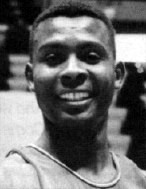 |
Based on the above statements about not considering going to Kentucky when he grew up, along with the statements concerning his later anger at UK, it is certain that a change in perception of UK by Haskins occurred, but it is not clear when this anger developed. Rupp's above statement, trying to console the young high school player may have actually inadvertently awakened Haskins to the realization that he WAS good enough and indeed deserved to play for UK, which would no doubt have eventually led to a feeling of being abandoned. [It's been reported also that UK player Pat Riley once told Haskins that he was the best player in the state. - (Michelle Kaufman, The Miami Herald, March 29, 1997.] Haskins spent a portion of his life resenting Kentucky and their snub of him which he has freely admitted to in recent interviews.
To his credit, Haskins has moved past and put away those feelings. Despite the hard feelings, there must not have been a lingering rift between the Haskins family and UK as Merion did play for UK in the mid-seventies.
"He [Clem] could see it," Merion Haskins said. "Things had changed a lot ... He didn't have any problem with it [Merion coming to UK]. He could see that [Kentucky] was a great college for a young man to go to. In the '50s and '60s, that wasn't necessarily the case." - by Mark Bradley, Atlanta Journal and Constitution, "Haskins' Past in Perspective," March 29, 1997.
Another interesting bit of trivia which confirms that Haskins had matured past any anger is that when Haskins was coach of Western Kentucky in the middle-1980's he recruited Chip Rupp, Adolph Rupp's grandson.
In an article before the national semifinal Haskins was asked if playing against Kentucky brought back bad personal feelings. "I'd probably say that 25 or 30 years ago, yes, it would have made a lot of difference, but over the years I've matured enough, and the things happened back in those days, I'm completely over that and it doesn't really mean anything now." - Reprinted from Milwaukee Journal Sentinel by Raleigh News and Observer, March 28, 1997.
A few weeks later, the Kentucky coaching job became available when Rick Pitino left for the Celtics and Haskins' name appeared on the short list of possible replacements. Coach Haskins said, "I received a call from a prominent Kentucky alumnus asking me if I was interested. I hope to interview for the job." - Minneapolis Star-Tribune, May 7, 1997.
Haskins didn't get the job however, as UK ended up hiring former Pitino assistant Orlando "Tubby" Smith, making him Kentucky's first black head coach of basketball at the school.
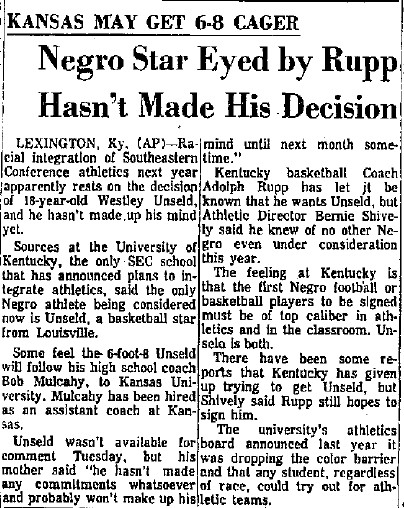 |
WESTLEY UNSELD (6'8") Seneca H.S., Louisville Ky. - Player scouts of the University of Kentucky, which regularly produces top teams, calls rangy, rugged Unseld "the best high school player in the country." - Parade Magazine, Parade's Eight Annual All-America High School Team (1964)
According to an article by Billy Reed (Lexington Herald Leader, February 16, 1999), Unseld conferred at the 1964 State Basketball Tournament in Memorial with "some of Kentucky's recruiting 'inner ring'," who tried to convince the player to come to Lexington.
But the article goes on to suggest that Unseld might not have felt completely comfortable in Lexington.
"I remember being booed," Unseld said in a 1980 interview, "but, at the time, I attributed that to the Breckinridge County people and not the UK fans."
"I also remember that I couldn't eat in the restaurant across the street from our hotel because they didn't serve black people. That sort of bothered me. That sort of thing might have been going on in Louisville at the same time, but I didn't know about it if it was." - by Billy Reed, Lexington Herald Leader, "Unseld, Beard Important in UK Lore," February 16, 1999. (The 1980 reference is not provided by Reed.)
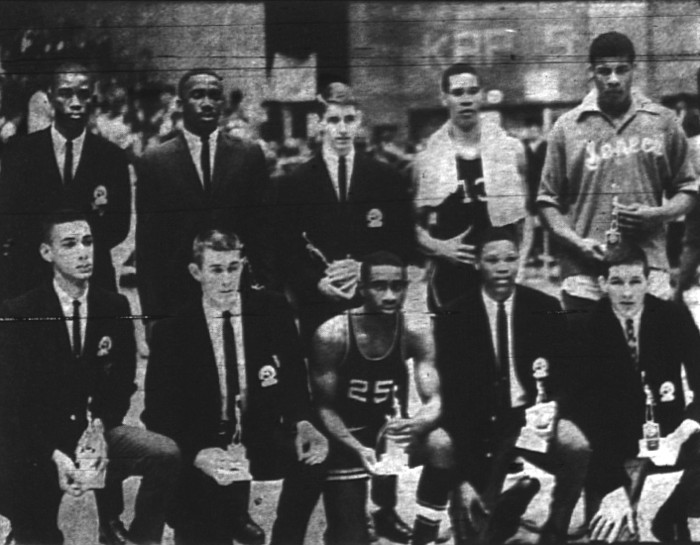 |
Front row (l to r): Greg Smith (Caldwell County), Jim LeMaster (Bourbon County), Leonard Poole (Breckinridge County), Jimmy Rose (Hazard), Norman Weaver (Allen County) Back Row: George Stone (Covington Grant), George Wilson (Lexington Dunbar), Joe Davis (Hazard), Butch Beard (Breckinridge County), Westley Unseld (Louisville Seneca) |
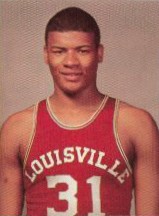 |
"I was speaking - - I'll never forget it -- at LaGrange Reformatory," Unseld said. "That was OK with them. They wanted to speak to my parents. Until the next day when somebody said I didn't have the courtesy to stay at the meeting." - by Jerry Tipton, Lexington Herald Leader, "Spurned by UK in '60s, Wes Unseld to Coach in House that Rupp Built," October 20 1992.
"At that time," said Unseld in a 1980 interview, "Kentucky really wasn't interested. They had to make the offer, I guess, but I never thought Kentucky was interested. Coach Rupp came to my house one time and talked to my parents. Of course he knew at the time that I wouldn't be there." - Lexington Herald Leader, "'63 Tourney Changed the Event Forever," March 16, 1988.
"We tried at that time to get him to set up another date. And, he said that he didn't need to talk to me he wanted to meet with my parents. Which at that time was quite common with college coaches. So, we said that would be great. And I waited, to say hello to him and to introduce him to my mother and father. He went into talk and I left." - Wes Unseld in interview with Dick Gabriel, Adolph Rupp: Myth, Legend and Fact, WKYT, 2005.
"We went down and tried to get ... ah ... this Westley Unseld. We went into his home. We were treated fairly nice by he and his mother and by his father. He came in of course and stood around there for about, oh I'll say five or six minutes, and then his coach came and got him, and they went out to somewhere, I don't know where they went, but we had an appointment with him. But we talked to the mother and father and it didn't get anywhere and we never got anywhere at all with that situation." - Adolph Rupp, The Rupp Tape (Audiocassette), WHAS Productions, 1992. (![]() Audio Link
Audio Link![]() )
)
JPS Note: - One thing to keep in mind is that it was not unusual for Rupp (or other coaches of the era) to spend time meeting exclusively with the parents of a recruit. While it's unclear if this was the intention of that particular visit to Unseld's house, the fact that the recruit ended up not being present wouldn't necessarily affect Rupp's visit to the extent some might assume. There are examples in the past where Rupp visited a recruit's home and spent the time talking exclusively with the parents.
Also I should note that President Oswald is credited with visiting Unseld based on what he later claimed in an audio interview, however I have yet to find any independent evidence verifying when this actually occurred (unlike Rupp's visit which was covered by the media both before and after it occurred.). And frankly in Oswald's audio interviews he seems to have only a vague recollection of the names of recruits and athletes.
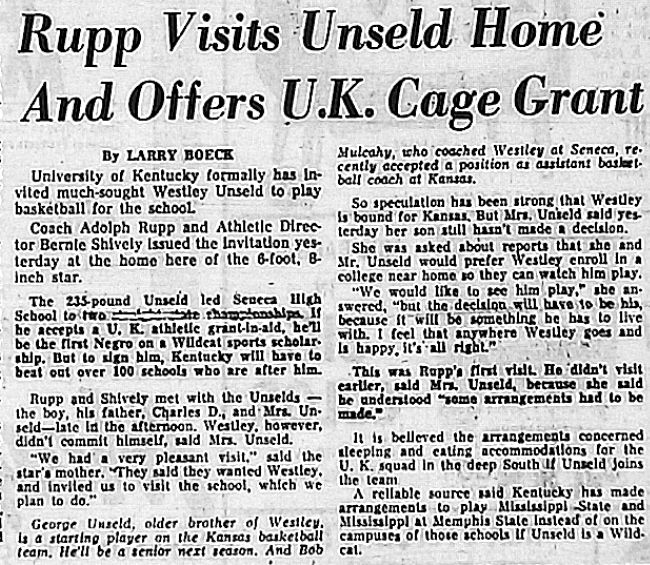 |
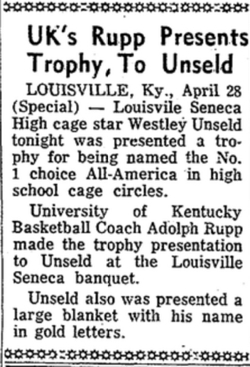 |
JPS Note: - I have searched all the Louisville (Courier-Journal, Times and Defender) and Lexington papers (Herald and Leader) during that time period looking for this article which questioned Unseld, without any luck to date. I'd be interested to see what exactly it said and who wrote it. If anyone can locate the article in question, or let me know where it was published, I'd appreciate if you can let me know.
Another thing to know is that the in-home visit occurred on April 16. Within two weeks Rupp was back in Louisville at the Seneca team banquet awarding Unseld with a trophy for being named the top prep player in the nation, an honor which likely was at least in part due to the influence of Rupp himself. If there truly was an issue that Unseld was concerned about, he had the opportunity to discuss it with Rupp directly at the time.
The issue of race and integration was a major concern at the time, in particular how Unseld would be treated by rival fans on road trips to the deep south. It's noteworthy that at the time of Unseld's recruitment, the 1964 Civil Rights Act had not yet been passed (it would come into law later that summer). This law for the first time ensured (in theory) that hotels and restaurants would be open to blacks.
 |
In the article above (Louisville Courier Journal, April 17, 1964) it states that prior to Kentucky's formal scholarship offer to Unseld, they had contacted schools about securing sleeping and eating accommodations in the Deep South, and in addition had made arrangements with Mississippi and Mississippi State to play their 'home' games in the city of Memphis Tennessee, which would presumably afford an integrated UK team more favorable accommodation options and likely avoid the types of problems which could be expected in the small towns of Oxford and Starkville further to the South.
After Unseld signed with Louisville, the Sports Editor of the local black newspaper (Clarence L. Matthews of The Louisville Defender) wrote a recap of the decision and noted that there were concerns by Unseld's parents over travel, although it noted that Kentucky had tried to work these issues out.
"The athletes parents reportedly weren't easy about the prospects of their son playing before "hostile" audiences in Mississippi, Alabama an Georgia as a member of the U of K team. Officials at the University had assured them however that all the southern schools had written them guaranteeing the safety of the Negro and that he (Unseld) would be treated like the rest of the U of K players." - by Clarence L. Matthews, "Matter of Sports," The Louisville Defender, May 28, 1964
Matthews also noted the work Kentucky had done the year previously (1963) when they polled league members concerning how they would react to an integrated Kentucky squad, prior to announcing their intentions to open UK's athletic programs to black athletes (despite not receiving universal acceptance from their SEC counterparts.)
The importance of Unseld signing for an SEC school was much bigger than just basketball; it would be an important milestone in the struggle for equal rights overall. This was not lost on many in the black community, many of whom lobbied Unseld and his parents to sign with Kentucky.
"Athletically, I was probably the top recruit in the country. So, there was pressure from the black community, and black civil rights leaders, for me to do this - to go to Kentucky, to be the first in the SEC. Most people don't know, but I was also first in the ACC being recruited too." - Wes Unseld in interview with Dick Gabriel, Adolph Rupp: Myth, Legend and Fact, WKYT, 2005.
JPS Note: - Unless Unseld is referring to another ACC school besides the University of South Carolina, he is incorrect about this. It is known that when South Carolina hired Frank McGuire in the spring of 1964, that McGuire expressed an interest in signing Wes Unseld. [McGuire had earlier integrated the St. John's basketball program in the early 1950's with Solly Walker and also coached black players in the pros.] However, McGuire was forced to abandon any interest in Unseld once boosters found out that Unseld was black. This was oddly similar to an earlier encounter in the mid-1950's when McGuire (who was then head coach at the University of North Carolina) had heard about the exploits of a high school player and mentioned how he wanted to sign him. That was until it was found out that the player in question was black and McGuire was forced to quickly drop the matter.
Included in the group of black leaders who wanted to see Unseld sign with UK was the editor of the state's black newspaper of record, The Louisville Defender, Frank Stanley Jr., who stated "We - the people of the community who have the interest of the University of Kentucky at heart and who have a great deal of admiration for Unseld - would like to see him go to Kentucky." (see article to right, Louisville Courier Journal, April 21, 1964.) Stanley was also the chairman of the Allied Organizations for Civil Rights in Kentucky.
Unseld entering the SEC was seen not only as a great step forward at UK but also as a potential break in the dam holding back integration in Southern athletics. Noted Matthews in the article above from the Louisville Defender, "Unseld was also ticketed to be the trailblazer in the S.E.C. Other school particularly in the northern section of the conference in Tennessee reportedly were waiting the results of Unseld's reception in the league to sign Negro players themselves. Some of these S.E.C. schools reportedly had already picked their prospective Negro recruits."
But the pressures which go along with being a trailblazer were high. There were threats made to Unseld to not attend UK but he claims that didn't influence his college choice.
"When you're 17 or 18, 6 foot 8 and 230, not too many things frighten you," Unseld said. "Nowadays, it'd probably scare the hell out of me." - by Jerry Tipton, Lexington Herald Leader, "Spurned by UK in '60s, Wes Unseld to Coach in House that Rupp Built," October 20 1992.
But in the end, it was a burden that Unseld was not particularly looking to embrace.
"I did, in my sophomore year, go down to Louisville to try to get Wes Unseld to come to Kentucky. Wes would have been an ideal guy to break the color line. He was such a class guy. A tremendous player. Wes just didn't want to be the first black player at Kentucky. I understood that." - Larry Conley in book And the Walls Came Tumbling Down by Frank Fitzpatrick, Simon & Schuster, 1999, pg. 189.
"I recruited him . I really tried to get him to come. And he just said to me, he said 'I don't want to be the first one.'" - Larry Conley, "Glory in Black and White," CBS, April 2002.
"I realize that I was probably wasn't the type that would have served everybody's purpose in a situation like that. My mentality was probably a little different in that, if you spit in my face, then I would probably spit back in your face. I don't know if I was the type that would have turned around and walked away." - Wes Unseld in interview with Dick Gabriel, Adolph Rupp: Myth, Legend and Fact, WKYT, 2005.
In late May of 1964, Unseld ended any hopes Kentucky faithful may have held by signing with Louisville. This was a mild surprise to some, who had long considered Kansas to be the front-runner for Unseld's services. However closer to the date it became apparent that Unseld was interested in a college closer to home, and the University of Kentucky, University of Louisville and local Bellarmine College were considered to be the contenders.
As it turned out after the news of his signing broke, Unseld reportedly signed a Missouri Valley Conference letter of intent nearly two weeks earlier, so while the media may have thought he was leaning or considering a wider range of schools, he himself likely had been focused much more narrowly. This early signing prevented other Missouri Valley Conference schools (other than Louisville) from recruiting Unseld. The latter signing of the interconference letter of intent prevented many other schools outside the Missouri Valley Conference (at least those who subscribed to the letter of intent system, which included Kentucky) from signing him .
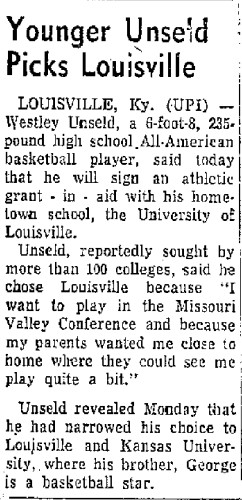 | 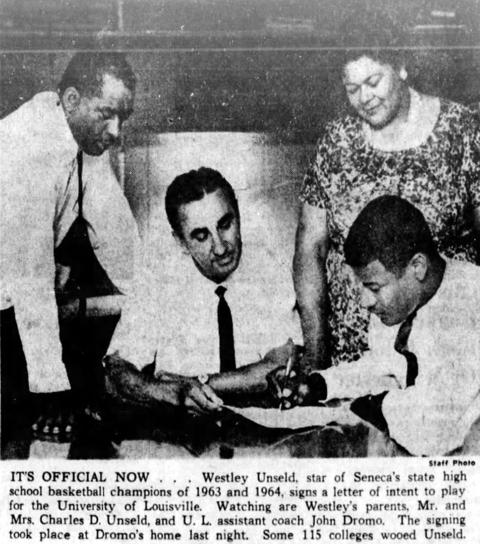 |
By 1974, Unseld was in the midst of his professional NBA career and was interviewed by Pat Putnam for Sports Illustrated. Unseld admitted that he probably wasn't cut out to be a social pioneer.
In subsequent years, Unseld has suggested that Kentucky did not seriously recruit him and was convinced that they didn't really want him. This in contrast to the information at the time along with claims by those close to Kentucky which state that he was an important recruit.
The difference of opinion over Unseld's recruitment by Kentucky is an interesting contrast in perceptions. While some in the media at the time may have thought Kentucky had a legitimate chance at the big man, it seems that those close to the situation (i.e. Rupp and Unseld) thought the chances remote. It's also clear that there was a wide gulf in the perception of how hard Rupp and Kentucky recruited the player from Louisville.
"We got in the car and Mr. Rupp said, 'He's not coming.' I said why? And he said, 'Well, anybody would miss anything to spend some time with me.'" - Assistant Coach Neil Reed retelling a humorous story with Dick Gabriel, Adolph Rupp: Myth, Legend and Fact, WKYT, 2005.
"I don't think that Kentucky had to wait until I came along to have a black player. And, yeah, I get angry when I see people trying to rewrite that. I think with as much power as (Rupp) had, if he wanted someone with as much intelligence and skill as some of those white players, he could have had them long before me. They never seriously recruited me, and those who say they did are not dealing with the facts." - Wes Unseld in article by Judith Egerton, Basketball History: Glory Road, Louisville Courier-Journal.com, January 6, 2006.
"He (Coach Rupp) made more trips to visit Westley Unseld, and tried to convince him to come to the University of Kentucky, than he had any ballplayer prior to that time." - Herky Rupp, "Glory in Black and White," CBS, April 2002.
JPS Note: - Unseld in his comments was not apparently aware that technically Rupp was not allowed to recruit black players prior to him. UK opened their athletic programs to integration in May of 1963. At the time, Rupp had already filled his allotted scholarships for the upcoming 1963-64 season, but targeted Unseld for recruitment the following spring.
Also, one thing that is perhaps not well known about Rupp is that he was a very poor recruiter in terms of actively engaging and trying to convince a recruit to come to the University of Kentucky to play basketball. Rupp rarely travelled to recruit players, recruits typically came to him. In Rupp's view, if a recruit wasn't able to recognize the benefits of playing basketball for what he considered to be the greatest program and greatest coach in the country, then the player wasn't smart enough to play for him anyway. Given Rupp's achievements at the time, it's understandable why he thought this way, although it did handicap him later in his career as other programs put a greater emphasis into basketball recruiting and successfully steered recruits away from Lexington.
It is interesting to contrast the difference of opinion in terms of Rupp's recruiting activities between Unseld (who now claims he wasn't seriously recruited) and Rupp's son (along with others who were there at the time) who claim Rupp put more effort into Unseld's recruitment than any other player. This difference presaged much of Rupp's problems in recruiting late in his career (for both black and white players).
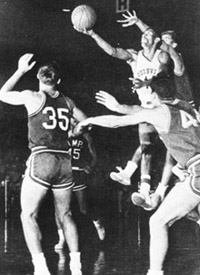 |
Beard signed a letter of intent with the Missouri Valley Conference to attend the University of Louisville. (letter of intents during those days were signed with the conference, not the school) As will be discussed in detail below, soon thereafter Beard had a change of heart and decided to attend Kentucky instead, however the Missouri Valley Conference and the University of Louisville would not release him. The family even hired an attorney to find a way to allow him to attend UK but was unsuccessful.
In the end, Beard honored his earlier commitment and ended up going to the University of Louisville where he became an All-American. After a successful NBA career, he went on to become a head coach, including spending some time coaching in the NBA.
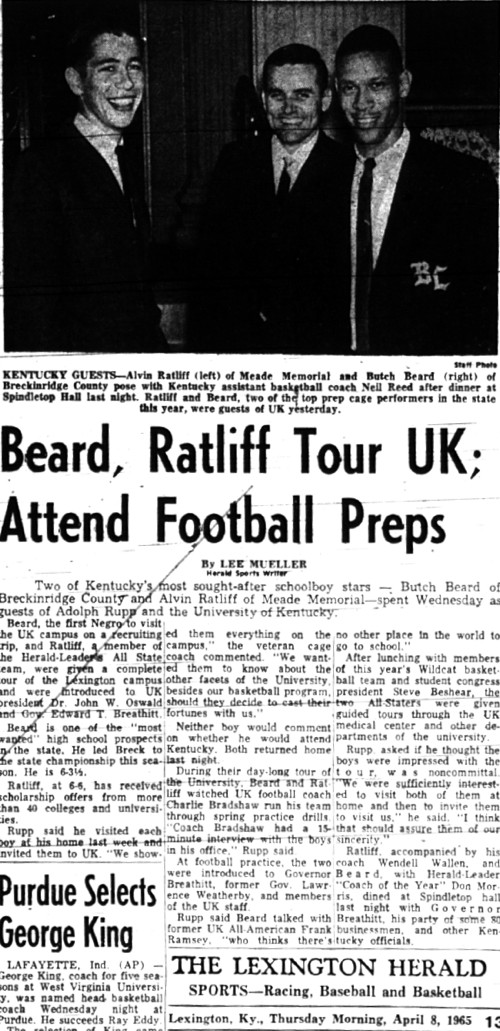 |
"Wes had gone to Louisville, and I was intrigued at the thought of playing with him. I'd gotten to know him during the state tournament [in 1964], because they put all the teams in the same hotel and we roomed across from each other. When I was playing against him, I was thinking, 'What would it be like if we were on the same team?' I thought maybe we could get together and win a championship." - by Alejandro Danois "Hoop Realities," Baltimore City Paper Online, February 19, 2003.
"People would knock on my door and say, 'You gotta be the first [black at Kentucky] !'" he says. "And someone knocked on my door and said, 'Nigger, you better not go to UK, or we'll kill your ass!'" - by Alejandro Danois "Hoop Realities," Baltimore City Paper Online, February 19, 2003.
(Butch) Beard can still see Rupp, the so-called Baron, in his living room, sipping his mother Maybel's iced tea, bragging about how reviled he was in a Southeastern Conference sick of being dominated by his Wildcats.
"He told us how they cursed him in Tennessee and threw bottles at him in Alabama," Beard said. "At one point, my mother asked, 'If that happens to you, then what's going to happen to my son?'"
Rupp, recalled Beard, smiled and said, none too reassuringly, or respectfully, "Miss Beard, A'hm gonna take real good care of yoah boy." - by Harvey Araton, New York Times News Service (reprinted in Lexington Herald Leader), "Before NBA Link, UK Connected Riley, Butch Beard," December 22, 1994.
After Rupp visited Beard in his home, he invited Butch to Lexington to for an all-day visit. Beard's high school coach, Don Morris, accompanied him on the recruiting trip which included another recruit, Alvin Ratliff, an all-state player who played at Meade Memorial.
The two recruits viewed the UK football team practice and the campus. Included in the visit were discussions with the Governor of the state, Edward T. Breathitt, former Governor Lawrence Wetherby, Coach Rupp, football coach Charlie Bradshaw, UK President John W. Oswald, UK student congress president (and future governor of the state) Steve Beshear among others.
Beard and Ratliff ate lunch with UK players and also talked with former UK players Alex Groza and Frank Ramsey.
Said Rupp about the visit: "We showed them everything on campus. . . We wanted them to know about the other facets of the University, besides our basketball program, should they decide to cast their fortunes with us."
According to an article in The Lexington Leader: "Beard listed three qualities he hopes the school he selects will possess: (1) good educational opportunities, (2) a good coach, (3) a good campus environment. How does UK stand up? 'I liked the campus life,' Beard said, 'and it is one of the best universities around. My opinion was upped considerably.'"
In a more recent interview, Beard gives more information about his recruitment.
"He came for a home visit," said Beard, now an assistant coach with the NBA's Dallas Mavericks. "He mentioned what the university could do for me. It was a helluva compliment for him to recruit me when you consider that Kentucky was the No. 1 basketball school in the country."
"Rupp told me, 'Where we're going to play basketball, you'll be a pioneer,' " Beard said. "He said I'd probably have to stay in a separate hotel and eat at separate restaurants. I don't know if he wanted to scare me off or if he was just telling me the truth."
". . . Beard said his mother was frightened . . . Hell, that wasn't for me. I was 18, I didn't want to go through that." - by Dave Kindred, Atlanta Journal and Constitution, "Facts Belie Stereotype of Racist Rupp at UK," May 11, 1997.
"I said, 'Well if I'm going to be the first I need someone there with me. Can I take a teammate of mine along with me?' They were willing to give a teammate of mine a scholarship so we would be together." - Butch Beard, "Glory in Black and White," CBS, April 2002.
However, despite the danger associated with becoming the first black player in the SEC, there were some in Beard's family who wanted him to take the step.
Beard's aunt, Mrs. William McCallum, wife of a Chicago minister and firm civil rights advocate, flew to the scene to advise her nephew. Possibly because she felt Kentucky was a better school academically for Butch, possibly because she would have been proud to see him break the SEC's color line, she soon found herself in the same camp as the longtime lily-white Kentucky athletic department. "Butch." she said, "has the maturity and the gracious manner to make himself acceptable anywhere. He is one of those youngsters, out of a great many others, who has the nature to make an outstanding record. He wouldn't be hard put to find a place at the University of Kentucky. He's going to have his problems racially, but there is no point in making him afraid or putting him on the defensive." - by Frank Deford, Sports Illustrated, "The Negro Athlete is Invited Home," June 14, 1965, pp. 26-27.
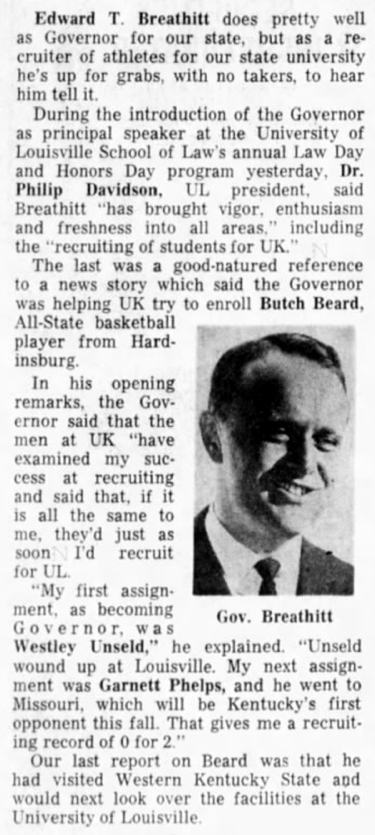 |
Players weren't the only ones called in to assist with Beard's recruitment. Democratic Governor of Kentucky Edward T. Breathitt (UK class of 1948) was sworn into office December 10, 1963 and made efforts to assist his alma mater to attend UK, and other state schools. For the University of Kenucky this included encouraging basektball star Wes Unseld to attend in 1964 and football star Garnett Phelps (see article to right) although neither was successful.
Breathitt was present on the day that Beard visited the UK campus (on April 7, 1965) for "Governor's Day" and encouraged him to attend the school. This support prompted the University of Louisville Student Council to issue a resolution denouncing the governor for helping UK. In an editorial by the Louisville Courier Journal (published April 24, 1965) it was noted the criticism from all sides that the governor encounters no matter what he did. Wrote the editors:
Civil-rights advocats and several newspapers, including the student paper at the University of Kentucky, have been increasingly criticallately of the school's failure to recruit Negro athletes. But when Governor Breathitt took the lead recently in trying to recruit Negro star basketballer Butch Beard for the Wildcats, he was immediately condemned by the Student Countil at the University of Louisville, where Beard is also much wanted.
...
It is true, as critics have said, that as Governor he owes allegieance to all state schools, although he is an alumnus of the U. of K. But he is also chairman of the U. of K. trustees, and as such he has special obigations, and in trying to recruit Beard he has helped to underline a policy and to establish an attitude that will be beneficial to the school. Nor is the school alone involved here. The integration of the athletic teams at the state's university would benefit the image of the entire state as well as the status of its Negro students (it might also prop the sagging record of the U. of K. teams). And in trying to speed this integration, the Governor is excercising the leadership which he owes the entire state."
Despite the potential for violence and despite the outside pressures, the decision was still Beard's to make. Committing to Kentucky would have changed the entire landscape of college basketball in the South, a lot of pressure to put on a high school kid. "I know that a lot of the boosters wanted to see change." said Beard. (CNN/SI, "New Era in Lexington," October 30, 1997.) "The relentless pressures of recruiting confused him so much that his principal, R.F. Peters said that Butch 'appeared to be almost at the breaking point.' " (Sports Illustrated, "The Negro Athlete is Invited Home," June 14, 1965, pp. 26-27.) In the end Beard chose Louisville.
He talked it over with his parents. He consulted Unseld. Then he called Louisville coach Peck Hickman. "We decided that Rupp was under pressure to recruit a black player, but he didn't really want one," Beard said. How did they know? "Believe me," he said, "you know." - by Harvey Araton, New York Times News Service (reprinted in Lexington Herald Leader), "Before NBA Link, UK Connected Riley, Butch Beard," December 22, 1994.
JPS Note: - Just a curious comment, but with Beard consulting the head coach of Louisville and a current player at Louisville [Unseld], is it any shock that Butch came to the conclusion he did?
Beard went on to have a stellar career at Louisville, where he became the third-leading scorer in school history and earned All-American honors at Louisville.
"Nobody knew how big that game would be for college basketballI," Beard says, recalling watching the game with Unseld in the dorm room they shared. "I was a Kentucky kid, a fan, and grew up cheering for the Wildcats. I had every intention of cheering for them to win the championship. When I saw those black players for Texas Western, I started pulling for them to win. And in the back of my mind I thought, 'If me and Wes had gone to Kentucky, would we have made a difference?'" - by Alejandro Danois "Hoop Realities," Baltimore City Paper Online, February 19, 2003.
A Fateful Spring Day Changes Everything
JPS Note:The above outlines a recruitment in many ways similar to that of Wes Unseld. Kentucky attempted to recruit Butch Beard but could not convince him that they truly wanted him and couldn't allay the fears of travelling in the Deep South. But Beard's recruitment did take an unforeseen turn which suggests that Butch was significantly closer to wanting to attend Kentucky than Unseld ever was, as described below.
Unfortunately for Kentucky, the change of heart didn't occur until literally the day Beard is said to have signed with Louisville, which was the first day an interconference Letter of Intent could be signed. This day, May 20 1965, saw Beard reportedly sign the Letter of Intent at 8:01 AM in the morning in the city of Louisville. The time is important because the document clearly states that it cannot be signed prior to 8:00 AM local time on that day.
Soon after that morning, Beard and his teammates at Breckinridge County were picked up at their homes in Hardinsburg by one of his high school coaches, Ginger Wilson, and transported to Lexington for the state track meet. It was there that Beard talked personally with Rupp and apparently had a change of heart.
"We thought we had that boy [Beard]. I don't think ... I had some help here in town and I think these people will come out from their homes and from out of the bushes and tell you that they did everything that they could. This Beard boy WANTED to come here. I'm positive he wanted to come here. He came here one day at a track meet, I was out here at the track with him and he TOLD me that he had decided to come to the University of Kentucky and I says 'fine, let's shake hands on that.' We did. He did NOT come to the University of Kentucky and before the day was over had signed with the University of Louisville." - Adolph Rupp, The Rupp Tape (Audiocassette), WHAS Productions, 1992. (![]() Audio Link
Audio Link![]() )
)
After the track meet, Beard remained on campus in Lexington and was hosted by assistant coach Neil Reed among others. That evening, Reed accompanied Beard to dinner along with many notables and thought he had finally convinced the youngster to come to Kentucky, and he likely did. However the following morning Beard revealed a problem which hit Reed like a bombshell.
| On the first day recruits could sign a national letter of intent, UK hosted Beard and his high school coach, Don Morris, on campus. He was the guest at a dinner at Spindle Top Hall attended by boosters, former UK players and five living governors. He met the Kentucky football and basketball players. The coaches were certain they had their man.
"Saturday I dropped him off at the Phoenix Hotel and I said, 'Well I think you know now that Mr. Rupp and the people of the University, the people of the Commonwealth want you here Butch.' Cause he did have a question, I'm sure, he came from west ....but.... and he started crying and I thought it was tears of joy. I thought it was just tears tears of joy. And he said, 'Coach I signed at Louisville yesterday morning.' And I was in shock." - (former UK assistant Neil Reed to Dick Gabriel, Adolph Rupp: Myth, Legend and Fact, WKYT, 2005.). |
For it's part, Louisville had planned on holding a news conference the following Wednesday evening (May 26) to announce the signing of Beard. However early in the day Beard called to cancel the event. Although Beard gave no explanation for the cancellation of the press conference, according to John Dromo (then U of L assistant coach who was responsible for Beard's recruitment) in a later article about Beard, it appeared that Beard "suddenly lost interest in UL" after attending the track meet in Lexington. ("Beard Switches, Will Attend UK", Louisville Courier Journal, May 30, 1965.)
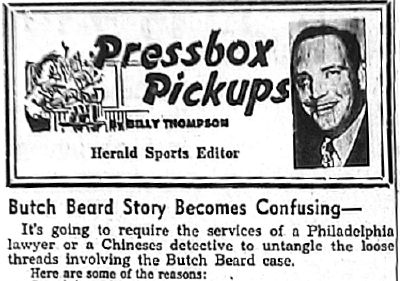 |
According to Thompson's article "Thursday night (May 27), one or more University of Louisville representatives, reportedly visited Beard's home in Hardinsburg. They were met at the door by Beard's father, who reportedly refused them admittance."
The article continues, "Word comes from Hardinsburg that Beard and his father are 'sold' on the University of Kentucky. They both have visited the campus. Beard's mother, though, is worried about her son's safety in the segregated Southeastern Conference. She has not visited the UK campus, but is scheduled to visit it soon - perhaps she will be on the campus with Butch today."
"Some UK basketball players have stated they would be glad to room with Beard if he comes to Kentucky. Homer Gray, a 5-9 guard on Breckinridge's team, reportedly would accompany Beard to school at Kentucky and be his roommate. Beard's parents would prefer that their son not be the only Negro on the team."
The next few days were bedlam at the Beard homestead. "You have no idea what we have gone through the last 48 hours," Beard reportedly said to Louisville Courier Journal Sports Editor Earl Ruby. "Calls, letters, people all over town talking to me. People coming from Lexington and Louisville. I knew it would be bad but I had no idea of anything like this." (from "Ruby's Report", Louisville Courier Journal, May 30, 1965.)
The deliberations brought much interest to the Beard house, from all sides. Kentucky and Louisville officials were on-hand with their lawyers. His aunt, Mrs. W. H. McCallum, had flown in from Chicago to help with the decision. Said Beard about his aunt to Ruby, "I am really glad about one person who is coming. That's my aunt from Chicago. She is real smart. She has a doctor's degree and has been a missionary in Africa. I don't want to make any decisions on where I will got to college until I talk with her."
Beard's family had enlisted the services of an attorney, Robert C. Jackson, and by the end of the weekend he had announced Beard's intention to attend the University of Kentucky.
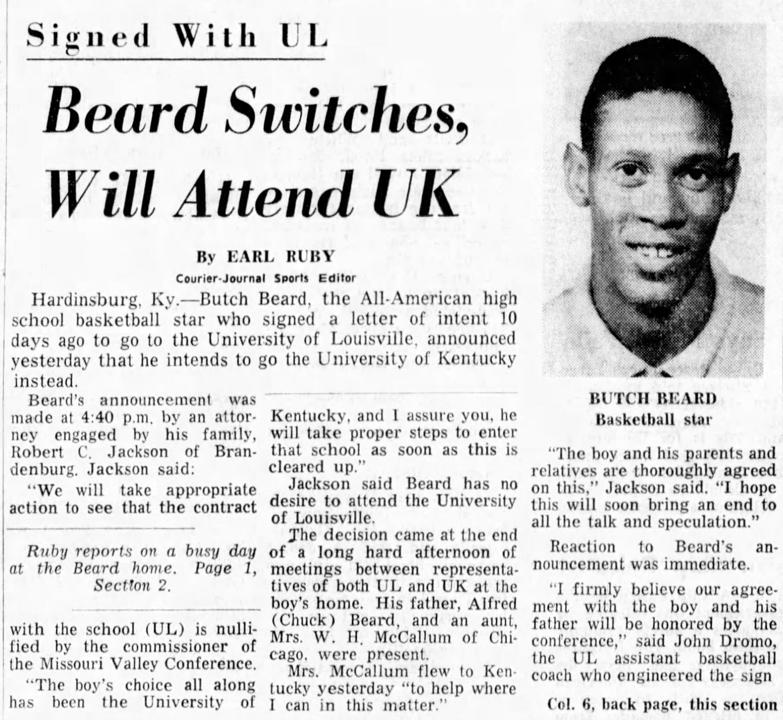 |
According to his attorney's statement, "The boys choice all along has been the University of Kentucky, and I assure you, he will take proper steps to enter that school as soon as this (his letter of intent with the Missouri Valley Conference) is cleared up."
Bernie Shively, Kentucky athletic director said, "This comes as a complete surprise to me. I am glad Butch wants to attend Kentucky. When he is free to sign we will be delighted to welcome him here."
However Louisville assistant coach John Dromo claimed that the letter of intent was binding and there was nothing he could do about it. "We couldn't do that (release Beard) if we wanted to. The paper is on file with the conference. Nobody can void it but the commissioner Norvell Neve," he explained.
Even the governor of the state, Edward T. Breathitt, was dragged into the mess, as rumors suggested he was trying to exert pressure on U of L to release Beard to Kentucky. In response, the governor made a statement that "The only time I encouraged him [Beard] (to go to UK) was when I met him on the UK campus last spring. I'm pleased he has decided to go to school in Kentucky, and I'm pleased he'll go to the University of Kentucky. But I would have been pleased if he had gone to the University of Louisville."
(Note all quotes above from the article, "Beard Switches, Will Attend UK", Louisville Courier Journal, May 30, 1965.)
Illustrative of the debate within the black community, while many within the black community supported UK's efforts, there were others who not only opposed it but went to lengths to erect barriers.
One noteworthy example being that of Lyman T. Johnson, who as mentioned earlier had played an important role in desegregating schools within the state of Kentucky. By 1965, Johnson was the president of the Louisville branch of the National Association for the Advance of Colored People (NAACP), but instead of supporting Beard's desire to attend UK and break down racial barriers along the way, he actually threatened to sue Kentucky preventing it. According to Clarence Matthews of the Louisville Defender: "The NAACP head said there may be a case against the U of K for tieing the boy up in knots. He intimated the Lexington university may have used undue influence on the youngster. He said the boy was probably so confused at this state that he did not know in what direction he was headed." (Louisville Defender, June 10, 1965).
JPS Note: - Johnson the same week resigned from his position as NAACP president. I don't know if his stance on Beard had anything to do with this decision but the timing is certainly curious. It's frankly hard for me to understand the reasoning behind taking the position of erecting barriers to integration (i.e. suing UK for recruiting a black player), from someone who is supposed to represent an organization whose mission it is to break them down.
In the end the issue boiled down to the Letter of Intent that Beard had signed. As noted above, Louisville fell back on this document which had been filed with the Commissioner of the Missouri Valley Conference, Norvell Neve. Kentucky, who subscribed to the Letter of Intent regulations (not all colleges and universities did) was on thin ice by continuing to recruit someone who had signed elsewhere. However UK supporters expressed doubt that the document was valid, suggesting that the document was signed prior to the 8:00 AM start date which would have made the document invalid.
As noted by Billy Thompson in his column on Saturday, May 30.
|
"The rule states that the national letter-of-intent had to be signed after 8 o'clock on Thursday morning, May 20. "University of Louisville officials claim that Beard signed the "letter" at 8:01 a.m. (EST) that morning. Then he and his father drove to Hardinsburg. Ginger Wilson, assistant cage coach and head track mentor at Breckinridge County, picked up Beard at Butch's home at 7:50 a.m. (CST) that morning. And he signed a statement to that effect. "This meant that 49 minutes elapsed between the time of the signing in a Louisville dentist's office and the time that Wilson picked up Beard to bring him to the State track meet at Lexington. "A check of the same path apparently followed from the dentist's office to Hardinsburg was begun at 8:01 o'clock this morning, and the distance could not be covered in 49 minutes to Beard's home. It required over an hour to make the trip. "If Beard actually signed the letter-of-intent at 8:01 a.m. on May 20, the University of Kentucky would have been 'trespassing' if it continued to recruit Beard." (by Billy Thompson, "Attorney Says Beard to Enter UK But Louisville Has His Signature", Lexington Herald, May 30, 1965. See the entire article in the following links: Page 1, Page 2.) |
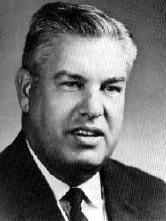 |
Other witnesses to the signing reportedly were Dr. C.J. Reheman of Hardinsburg (the man who is said to have brought Beard and his father to Louisville the previous night) along with his son, Dr. Leo Reherman and daughter-in-law. (according to article by Dave Whitaker, "UL 'Stands On Contract", Louisville Courier Journal, May 31, 1965.)
Said U of L coach Bernard (Peck) Hickman about the Beard situation, "A lot of schools and conferences worked awfully hard to get this inter-conference letter of intent, which is the forerunner of a national letter of intent. We respect other schools' signings, under this letter, and we expect others to respect ours." (in article by Dave Whitaker, "UL 'Stands On Contract", Louisville Courier Journal, May 31, 1965.)
Eventually, the University of Louisville did finally release the signed documents to the media, which the Louisville Courier Journal reprinted in their Sunday (May 31) edition.
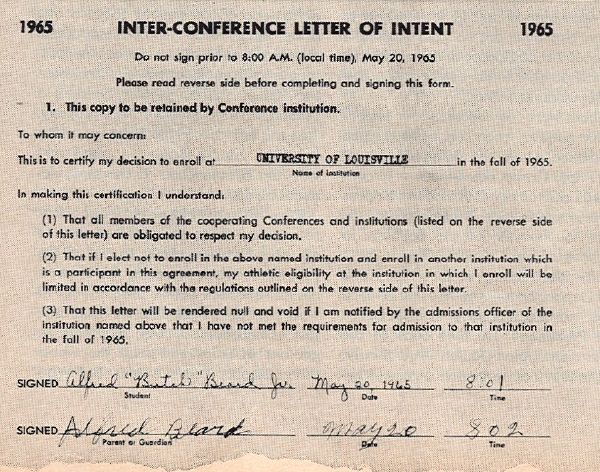 |
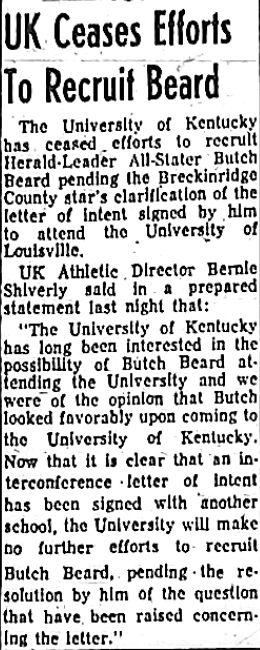 |
On Monday, June 1, the University announced that in light of the information at hand, they were ceasing recruiting efforts of Beard pending the resolution of these issues by Beard and his family. Said UK Athletic Director Bernie Shively:
"The University of Kentucky has long been interested in the possibility of Butch Beard attending the University and we were of the opinion that Butch looked favorably upon coming to the University of Kentucky. Now that it is clear that an interconference letter of intent has been signed with another school, the University will make no further efforts to recruit Butch Beard, pending the resolution by him of the question that have been raised concerning the letter."
(see article to right, "UK Ceases Efforts to Recruit Beard", Lexington Herald, June 1, 1965.)
The following day, June 2, the Editorial Board of the Lexington Herald weighed in on the issue, agreeing with the University of Kentucky's decision to suspend their recruitment of Beard, although recognizing that there were still a number of loose ends and unresolved issues to be dealt with.
Noted the paper, "Kentucky had every right to get into the case after Beard expressed a preference to play the University here. Athletic relations between the two state universities have been good in the past and nothing should be done to alter in any way that situation. However, it must be admitted that the Louisville institution did not come forth immediately with all the facts concerning the signing of Beard and only presented copies of the letters of intent after the matter had gone so far that Beard's family felt the need of engaging an attorney to represent the young man."
Continued the editorial board, "We believe that the next move is up to Beard himself and the members of his family. They might be able to clear up some conflicting stories that have been carried in the press."
. . . If Beard and his father say that they signed the letter of intent with UL representatives - and we have not seen in earlier stories that any members of the UL coaching staff were present -- on May 20, by 8 o'clock or thereafter, then that should end the whole matter. Some claims have been made that the letter actually was signed earlier than the 8 o'clock deadline and the Beards certainly are the ones to clarify this point."
(above quotes from lead editorial "UK Acts Properly in Beard Matter", Lexington Herald, June 2, 1965. (Link 1, Link 2))
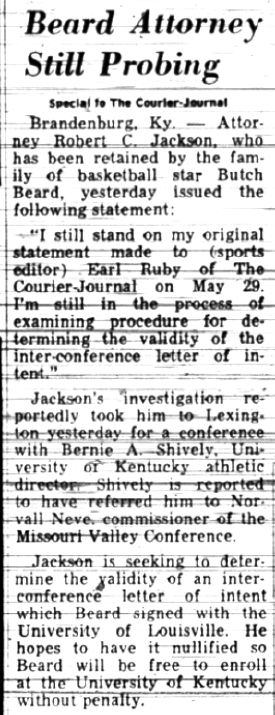 |
But Commissioner Neve held tight, saying "If we don't stick by our guns in this case, we might as well throw the whole machinery on the scrap heap, because it will simply break down." - article by Frank Deford, Sports Illustrated, "The Negro Athlete is Invited Home," June 14, 1965, pp. 26-27.
Said a still-bitter UK Assistant Coach Neil Reed about the situation when asked decades later, "Coach Rupp got on the phone to the Commissioner of the Missouri Valley. He just laughed in Coach Rupp's face and since Coach Rupp was not the most popular guy with the NCAA or anybody else he beat all the time, there was nobody helped him. Nobody helped him. He got no help from the SEC office." - (Adolph Rupp: Myth, Legend and Fact, WKYT, 2005).
As illustrated in the article to the left, the Beards held out hope through the rest of the week exploring options, but finally on June 6, he acquiesced to the original Letter of Intent and confirmed that he would enter Louisville in the fall.
According to an article by Earl Ruby ("Ruby's Report", Louisville Courier Journal, June 6, 1965) the Beard's attorney released a statement by phone. Said Jackson, "Mr. and Mrs. Alfred Beard Sr. have informed me that they do not want me to proceed further in my efforts to determine the validity of the inter-conference letter of intent. In view of this development I will do nothing further unless requested to do so by the family."
Said Beard in the same article, "I hope that will be the start of four good years in Louisville."
Followup
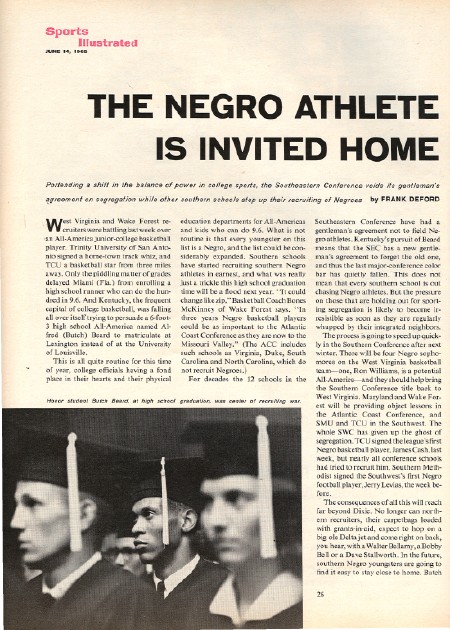 |
Deford noted that while Beard's recruitment to Kentucky was ultimately unsuccessful, it was an important breakthrough in terms of progressing the cause of integration in the South.
Said Deford about the Southeastern Conference: "For decades the 12 schools of the Southeastern Conference have had a gentleman's agreement not to field Negro athletes. Kentucky's pursuit of Beard means that the SEC has a new gentleman's agreement to forget the old one, and thus the last major-conference color bar has quietly fallen. This does not mean that every southern school is out chasing Negro athletes. But the pressure on those that are holding out for sporting segregation is likely to become irresistible as soon as they are regularly whupped by their integrated neighbors."
". . . The consequences of all this will reach far beyond Dixie. No longer can northern recruiters, their carpetbags loaded with grants-in-aid, expect to hop on a big ole Delta jet and come right on back, you hear, with a Walter Bellamy, a Bobby Bell or a Dave Stallworth. In the future southern Negro youngsters are going to find it easy to stay close to home. Butch Beard never even considered any northern schools. His case is perhaps most significant because the SEC includes those symbolic bulwarks of the way that was, Alabama and Mississippi. These schools are now committed to a rotating SEC football schedule, which means effectively, a policy of playing all comers, white or black, and this will make it extremely difficult to argue against playing schools with Negroes outside their league."
Postscript to Beard's Recruitment
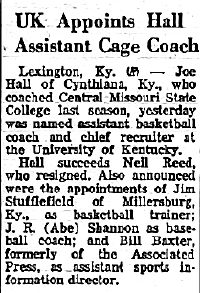 |
The onus to being a racial pioneer in the Southeastern Conference would be left to Perry Wallace of Vanderbilt and select others who followed.
One casualty of the recruitment appears to be UK assistant Neil Reed, who took the loss hard. He resigned after UK stopped their recruitment of Beard and soon was succeeded by Joe Hall, who would be charged with and ultimately (after much hard work and disappointments) was successful in recruiting a player who would integrate the Kentucky squad.
After Kentucky hired Orlando "Tubby" Smith as head coach to replace Rick Pitino, this is what Butch Beard had to say about the hiring.
"It's shown that it doesn't matter the color of your skin or the race. If you're qualified, you get an opportunity to prove yourself and I'm happy that he has the job."
JPS Note: - There are a number of Kentucky fans, this one included, who wish that Beard had seized his opportunity with UK when he had it.
In 2020 speaking on the Jerry Eaves radio show Beard recounted a story he heard from his agent, Bruce Miller:
Can I tell you this? Bruce Miller was my agent. Bruce Miller told me, and this is from Bruce, OK? This was after coach Rupp had passed away. And we were having dinner and Bruce said: "Let me tell you something, Coach Rupp out of the blue, said to me, 'You know I should have tried to recruit them a little bit harder (Wes and Beard)'. And he said 'I think if I could have gotten either one of them, I could have won two, or maybe three more NCAA championships.'" Interesting, huh? - (Butch Beard talking to Jerry Eaves on "Jerry Eaves Sports Radio", iHeartRadio, July 24, 2020.)
Jim McDaniels was a 7-foot center from Scottsville KY. Kentucky recruited him but McDaniels considered it to be half-hearted attempt.
According to letters by Rupp, he felt that Kentucky was doing all they could to recruit the player from Scottsville and thought highly of him as a player. In fact when requested by Coach & Athlete to nominate players for a High School Prep All-American team, Rupp responded that "We have only one outstanding boy here in the state and he is Jim McDaniels of Allen County. He might be the most outstanding boy in the nation."
Concerning Kentucky recruiting efforts of the big man, Rupp wrote in a letter on February 16, 1967 that "We had McDaniel here the other evening for one of our games. He seemed to enjoy himself and made the statement that he would certainly consider the University of Kentucky. I hope that we can land one of these big boys because we certainly need them." The following month Rupp wrote another letter stating "I spent all day Wednesday with Jim McDaniel. He indicates that he is interested in Kentucky and wants to be the first colored boy to play basketball here. Don't worry about our efforts, we are doing everything."
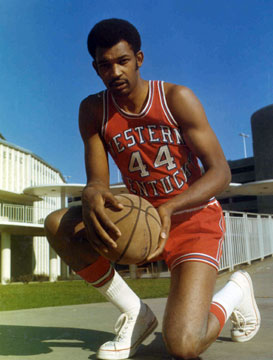 |
Although Rupp did not publicize it in the press, in private letters to fans Rupp indicated that the reason McDaniels and other black players from the state who did not attend Kentucky in favor of Western Kentucky was due to inadequate grades. A few weeks after the above letter where Rupp indicated UK was doing everything they could to recruit McDaniels, the tone turned pessimistic when writing a fan from Baltimore Maryland who had inquired about UK signing black players. Wrote Rupp: "I will make an agreement with you. I will have the boy from Allen County here any day that you can see fit to come to Lexington. I will meet you at the airport and take you to the Registrar's office. I am sure you can get him in. I have not been able to do so." In a letter on June 1, 1967, Rupp wrote "Western has signed three negroes who could not get in the University. By this, I mean they could not get a scholarship according to the Southeastern regulations. They could get in, but would be forced to provide their expenses otherwise." The following year Rupp wrote in another letter "Our negro ball players here who have gone to Western Kentucky and other schools could not qualify academically here at the University. That fact has been established."
Regardless of what led to the hostility between Rupp and McDaniels, it surfaced later in a very public way during McDaniel's career at Western.
The Western team was largely made up of black players from the state, many of them bent on showing up the University of Kentucky and their still all-white teams. Along with McDaniels, this included Clarence Glover of Horse Cave, Jim Rose of Hazard and Jerome Perry of Louisville Manual. Jerry Dunn and Rex Bailey rounded out the other players to see considerable minutes.
Western almost got their chance in 1966 with a team comprised of Clem Haskins, Dwight Smith and Greg Smith along with Wayne Chapman (Rex Chapman's father) and Steve Cunningham, but they fell short in the Mideast region against a strong Michigan team led by senior Cazzie Russell on a controversial call by the official.
"You're darned right we were as good as they were," Chapman said in a phone interview from Owensboro. "If we had played Kentucky, it would have been like playing ourselves in a mirror." - by Billy Reed, Lexington Herald Leader, "Basketball's New Face Part of Runts' Legacy," February 15, 1991.
A second great Western team was denied a shot at Kentucky by Jacksonville in 1970 and was not about to let a second chance slip away when their opportunity came in 1971. After the first game, a dejected McDaniels claimed that "pairing us against Jacksonville in the opposite bracket from Kentucky is just another way of helping Kentucky in the NCAA Tournament." To this, Rupp replied, "I don't doubt the young man said that. But I doubt that he has enough intelligence to comprehend how the NCAA brackets are made. You can quote me as saying that Mr. McDaniels isn't smart enough to know about things like that.". (Quotes from an article by Billy Reed, Lexington Herald Leader, "Hilltoppers Showed UK it was Time to Diversify," February 24, 1998.)
The following year, the Hilltoppers were again given the tough assignment of dispatching a tough Jacksonville team with their imposing center 7-2 Artis Gilmore. The Hilltoppers won 74-72 on a last-second basket by Glover and next faced Kentucky in Athens Georgia for the first time in school history. On paper, the teams looked competitive. But the Western team had years of pent-up frustration over the lack of proper respect accorded the teams in Bowling Green compared to the University of Kentucky along with the slow pace of integration by Rupp on their side.
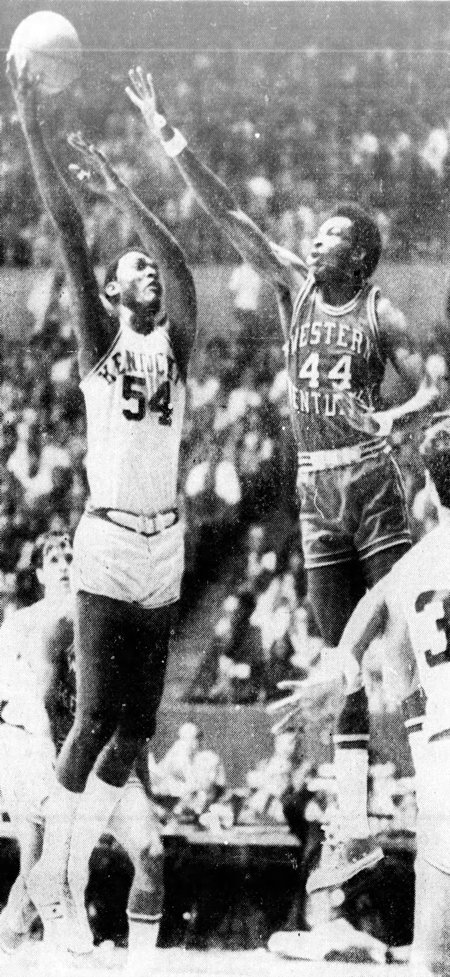 |
After the game, a few Western players came to the Kentucky locker room to find a gracious losing host:
"C'mon in, boys," Kentucky Coach Adolph Rupp said. "this was your night. It wasn't ours. You had quite a game. Now don't let us down." Said assistant coach Joe B. Hall: "We'll be pulling for you." - by Rick Bailey, Lexington Herald Leader, "Thrashing of UK in '71 Was Top of the Hill," December 20, 1990.
As for Western, they went on to the Final Four where they lost a heartbreaker, 92-89 in double overtime to Villanova (who was also led by a former UK-recruit, Howard Porter). It was later found that McDaniels had signed with an agent before his senior season and subsequently, Western's NCAA run was erased from the record books. A two year probation, due to other problems in the program which included payoffs to McDaniels, also were handed down by the NCAA around the same time. The set-back provided a window of opportunity for Southeastern Conference and other teams to sign black athletes en masse instead of the trickle before. By the time Western was back on its feet, they now found themselves in an entirely new recruiting environment and never were able to recover and return back to the level they held during those years in the 1960's and early 1970's.
"We recruited black athletes before anybody in the Southeastern Conference did," [Western coach Johnny] Oldham said. "We pretty much had the pick of the good black athlete. Then Kentucky, Vanderbilt, Tennessee and Louisville all got into recruiting the black athlete. That made it much harder for us. I had good timing, really." - by Rick Bailey, Lexington Herald Leader, "Thrashing of UK in '71 Was Top of the Hill," December 20, 1990.
"Players we used to be able to get no longer came here. They went to UK and U of L. Times changed right in there." - Assistant coach Jim Richards, by Rick Bailey, Lexington Herald Leader, "Thrashing of UK in '71 Was Top of the Hill," December 20, 1990.
It's interesting to note that Rupp did eventually coach McDaniels, although it took some convincing to get McDaniels to agree.
"McDaniels thought so little of Rupp that he had refused to play for him in a charity game between Kentucky and Tennessee in late March. Then he changed his mind, deciding to play for the handicapped and retarded children who would benefit from the game." - by Russell Rice, Adolph Rupp As I Knew Him, Sagamore Publishers, 1994, pg. 196.
McDaniels was eventually convinced and the game went on at Freedom Hall, where he scored 25 points in a 108-94 win.
"McDaniels became the last of 10 Kentucky players to sign. His teammates will be UK's Jim Dinwiddie, Larry Steele and Mike Casey, Western players Clarence Glover and Jim Rose, Georgetown's Kenny Davis, Eastern Kentucky's Carl Greenfield, Morehead State's Jim Day and Bellarmine's John Linneman." - Louisville Courier Journal, "McDaniels will play for Rupp in charity game," March 18, 1971.
Rupp was asked about the Western players by Red Auerbach, then executive vice-president and general manager of the Boston Celtics, who was on-hand to scout for the upcoming NBA draft.
"How about Jim McDaniels?" asked Auerbach. "I think McDaniels is the best basketball player in America today." said Rupp. "And Clarence Glover?" persisted Auerbach. "Glover is the quickest 6-8 man in America," said Rupp. "For God's sake, take him (in the draft). When he gets under that basket, there is no one going to intimidate him. He's going to get that rebound. You guys can teach him how to score." "How good is Jim Rose?" Auerbach wondered. "I put Rose on Jim England (in the Kentucky-Tennessee All-Star game)," said Rupp. "England was one of the best players in our conference, and Rose blanked him. The basket England got was made off somebody else. Some of those UCLA boys wouldn't have scored off Rose either. I think Rose is a great one out in front. Because of these three boys, Western would have beaten UCLA." - by Dean Eagle, Louisville Courier Journal, "Rupp Labels McDaniels Best Player in America," March 30, 1971.
JPS Note: - Rupp's words must have had a positive effect as the Celtics ended up drafting both Glover (in the 1st round) and Rose (in the second round) in the 1971 NBA draft.
A second game was staged April 4 in Nashville, but Western coach John Oldham was the coach. McDaniels scored 32 and former UK player Mike Casey scored 31 in Kentucky's 123-115 win.
JPS Note: - Many Kentucky fans express the wish that Rupp had signed the likes of Clem Haskins, Butch Beard and Wes Unseld. Jim McDaniels, however, is one they're glad got away.
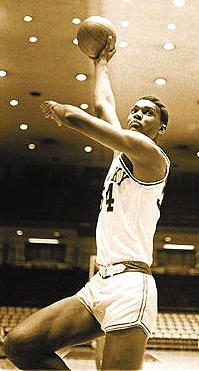 |
The day of his signing, Payne said there were two reasons he signed with Kentucky. "First of all the educational program, I think it was my best bet. I will be going to a big school, but I can get individual attention, I won't be just a number. And I felt Coach Rupp could develop my potential better than any other coach."
Regarding the question of race at UK, Payne did admit that he initially was skeptical, based on what he had been told, but later dismissed those fears based on his experience with the school. "I visited Kentucky three times," he said. "I found out that some of the stuff I had heard wasn't true. I liked what I saw at UK." - quotes in above two paragraphs from Lexington Herald, "Shawnee's Payne Casts Lot With Kentucky," June 10, 1969.
Payne mentioned in a subsequent interview that he didn't consider Louisville due to city rival Henry Bacon signing with the Cardinals and didn't consider Western Kentucky due to the presence of Jim McDaniels. "I wanted to make my own personal trail...I was trying to carve out my own identity." (by Brian Bennett, Louisville Courier Journal, April 4, 2001)
Payne arrived at Kentucky heralded as, maybe, the next [Lew] Alcindor. He was a high-school All-American, he was the tallest player ever at UK, he was the first Negro basketball player at UK. Last night, at times, he showed he may be worthy of all that chatter. - by Dave Kindred, Louisville Courier Journal, "UK Freshman Payne is Bigger, Better and Happier Than Ever," December 28, 1969.
Payne grew up in "a home where responsibility and academics were stressed. His father, now dead, attained the rank of master sergeant in the Army before retiring. His mother has a bachelor's degree in biology. Fourteen college degrees are spread among his eight siblings. He has two sisters in medical school and a brother in law school." - by Peter Kerasotis, Los Angeles Daily News (reprinted by Lexington Herald Leader), "Ex-Wildcat Payne's Troubles Perplexing to Some, April 3, 1986.
Despite a solid family background, Payne's adjustment to college was not a smooth one. His freshman year, rather than playing on the UK freshman team, Payne was academically ineligible due to a low entering test score and played for the local "Jerry's Restaurant" AAU team. The experience was probably more useful to Payne's development.
Payne is playing against tough competition -- "Guys 6-9 and 6-10 who collapse on me and it's helping me improve my moves tremendously." And he's getting more experience, too -- "The freshmen will play 20 or 22 games this season while I can play 45." said Payne. Anyway, his AAU team "runs abut the same plays that the UK varsity does." - by Dean Eagle, Louisville Courier Journal, "AAU Basketball Toughens Payne for UK Varsity Role," December 21, 1969.
JPS Note - The AAU team Payne played on was organized by former UK player Scotty Baesler. Besides Baesler, the team was littered with former Kentucky players such as Phil Argento and Steve Clevenger
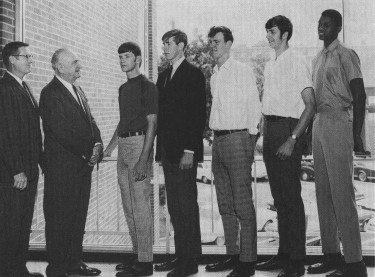 |
Payne regained eligibility to play on the varsity his sophomore year (where he earned All-SEC honors while averaging 17 ppg and 10 rpg). Despite putting up impressive numbers during the season, there were signs of trouble.
"During a mid-December loss to Purdue in the UK Invitational Tournament, Payne was booed. He vowed to transfer. 'That's the kind of abuse I went through,' he said. 'And people think that's not supposed to affect you?'" - by Brian Bennett, "Tom Payne: happy ending a long way off," Louisville Courier Journal April 4, 2001.
"At Knoxville, Payne had flipped [Jim] Woodall head over heels in a battle for a rebound. Payne said it was unintentional, but he drew a flagrant technical foul ... In the rematch, officials again ejected Payne for flagrantly fouling Woodall. . . Payne had also been tossed from a game against Alabama in Lexington when he objected to an official's decision. Payne's temper and gestures were drawing criticism from some UK fans. He irritated them with his victory salute: he would clinch his fists and pump them up and down over his head after a particularly good play. Some fans thought he was giving the 'Black Power' sign. There were scuffles with teammates, especially Larry Stamper, but they were kept quiet. On the road, Payne was a lone warrior, hiding behind sunglasses and keeping his distance from the other players. His classwork was below par; summer school awaited." - by Russell Rice, Adolph Rupp As I Knew Him, Sagamore Publishers, 1994, pg. 196.
"Payne would love to talk to former teammates, especially Jim Andrews. You can feel the anger that he had, admitting being nasty, on purpose. 'You're a white guy. You're getting my position. You don't like me and I don't like you. I took some pot shots at him when I could. If I could elbow him. I'd elbow him.'" - by Alan Cutler, "First Black Player in UK Basketball History, Serving Time for Rape, Talks to LEX 18 Part 1," WLEX 18, November 10, 2004.
After the second Tennessee game, where Payne was ejected for fighting with Woodall, Rupp said,
"Payne claimed Kent Hollenbeck was his only friend on the team. The other players wouldn't throw him the ball." - by Russell Rice, Adolph Rupp As I Knew Him, Sagamore Publishers, 1994, pg. 197-198.
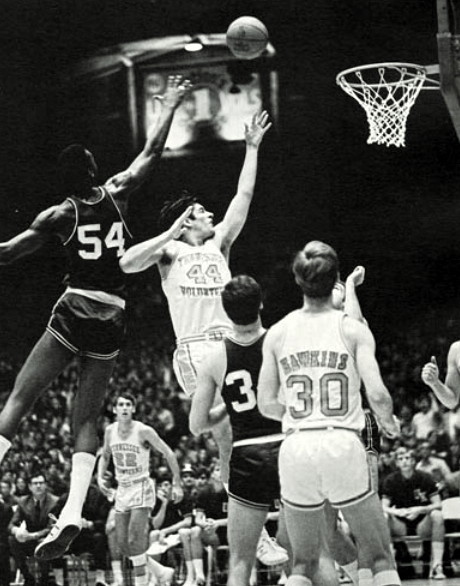 | 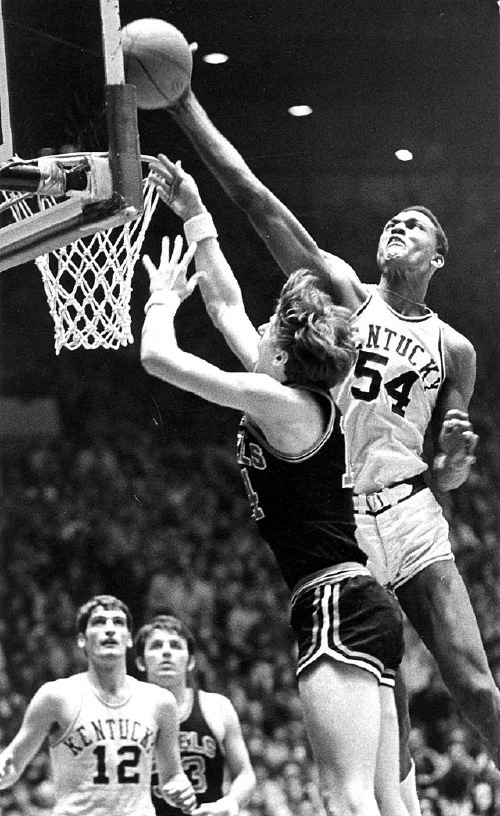 |
Despite these problems, Payne continued to improve over the season and began to dominate opponents. After scoring 34 points against Georgia and 39 points against Louisiana State, Joe Hall stated,
"That's two great ones back to back for Tom," Hall bubbled afterwards. "He doesn't know his own potential - none of us do - but he's come a long way and I think he's gonna continue to do so." - by Dick Fenlon, Louisville Courier Journal,
After Payne scored 30 points in a game against Auburn which clinched the Southeastern Conference regular season title, the future looked bright for the young star,
But the 7-foot-2 sophomore center is far from content with just one title. No, indeed, he's looking ahead to "winning five more games" this season and to winning more championships the next two years. "I know I'm just a sophomore and I'm not comparing myself to anybody," he said after scoring 30 points in UK's 102-83 victory over Auburn. "But UCLA did it three times in a row and I think we can do it, too." He slapped teammate Jim Andrews, the second tallest UK player, on the shoulder and added, "Jim and I will be back for two more years." - by Tev Laudeman, Louisville Courier, March 1, 1971.
As it turned out, the season came to a screeching half when the Wildcat lost to Western Kentucky and fellow big man Jim McDaniels 107-83 in the NCAA Tournament. This had been the first time Western had ever faced Kentucky and the Hilltoppers were primed for the game. McDaniels outscored the younger Payne 35-15.
Said Kentucky great and pro player Dan Issel who was a spectator prior to the NCAA game versus Western Kentucky about Payne: "He's just beginning to scratch the surface with his talents. It's amazing the progress he has made in something like three months. He's just a different player now than when I saw him against Notre Dame back in December. Quite frankly, I think he could be the best big man ever developed at Kentucky. He's got such a good touch and some of the times he is just shooting down into the basket." - Quotes by Mickey McCarthy Atlanta Constitution, "Issel Sees Dogfight in Athens," March 15, 1971.
In the consolation game, UK lost to another rival, Marquette 91-74. Payne only scored one point before fouling out. It was the lowest output of his short career at Kentucky (only four games previously did he fail to score less than double-digits). After the game Rupp seemed not too surprised by the second drubbing in a row: "I knew this was going to happen....When we left the dressing room I just knew we weren't going to play much. Our kids' hearts just weren't in the game. I guess they were somewhere else." - (Philip Case "Rupp Not Surprised Kentucky Not 'Up' for Consolation" Lexington Herald-Leader, March 21, 1971.)
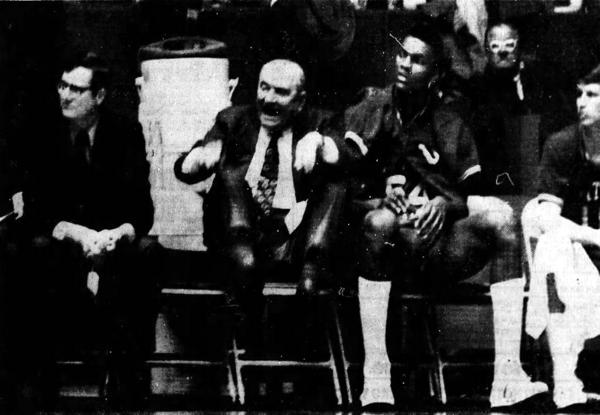 |
With the season ending on a down-note, once the summer came things didn't go any more smoothly and eventually Payne decided to forego his college eligibility for the NBA.
"In August, a state policeman cited Tom Payne for speeding in his new Cadillac. There were other tickets on file, some more than a year old - citations for failing to dim lights, illegal parking, and operating a vehicle with a defective muffler. In September, Payne quit the university and joined thirteen other underclassmen in the National Basketball Association's first supplemental draft." - - by Russell Rice, Adolph Rupp As I Knew Him, Sagamore Publishers, 1994, pg. 197.
What the above doesn't mention is that the car Payne was driving was a Cadillac registered to a Pennsylvania auto dealer. Speculation was that Payne was being courted by professional basketball teams in the NBA and ABA and that the car was a 'gift' from the Pittsburgh Condors of the ABA to apply for the draft. Beyond that, Payne had nine hours worth of incomplete grades that needed to be made up before he could return to school. Even if Payne had wanted to return to Kentucky for his junior season, it's unlikely he would have been eligible.
Payne was drafted in the first round of the NBA 'hard-ship' draft by the Atlanta Hawks. He played in 29 games as a rookie and averaged 4.1 points per game. Payne's NBA career came to a crashing halt in May of 1972, when police in Georgia arrested him after investigating a string of rapes in the Atlanta area. Soon after he was indicted in Kentucky in connection with three sexual assaults (two attempted rapes, one actual rape). Payne was convicted on two counts of rape and one count of aggravated sodomy in 1972 in Atlanta. He served his time in Georgia, which included two and a half years of solitary confinement for participating in a prison riot, but was paroled in 1977 after only five years in prison in Georgia.
Immediately after parole in 1977, Payne was extradited to Kentucky where he was convicted of one count of rape and two counts of attempted rape which had occurred earlier in 1971. After being paroled again in 1983, he attempted a comeback in basketball with the CBA Louisville Catbirds and participated in five boxing bouts in an attempt at a professional boxing career, but then moved to Hollywood and became an actor (once appearing in the TV sitcom Night Court along with McDonalds commercials and music videos). The people who were familiar with him at the time felt he had an excellent future in the entertainment industry.
"In all honesty, he could have made a million dollars this year," said Payne's agent Lyle Baker, vice president of Joe Jackson Productions Inc.
"He was built like a champ - huge, handsome, gorgeous. women just went crazy over him." - Paul Jabara, writer and music producer.
"He's a black Arnold Schwarzenegger" said one detective while his partner described Payne as having "a million-dollar body. It's absolutely remarkable the muscle definition he has, especially for a man his height."
All quotes from article by Peter Kerasotis, Los Angeles Daily News (reprinted by Lexington Herald Leader), "Ex-Wildcat Payne's Troubles Perplexing to Some, April 3, 1986.
Yet, just like his early days with the Hawks, success and a promising future were fleeting for Payne as he self-destructed. On Valentines day of 1986, Payne was caught by Los Angeles Police Department raping a woman and again convicted, which also violated his parole in Kentucky.
After much legal maneuvering to get his sentence reduced in California, Payne was finally released in 2000, and intended to settle down in Cincinnati with his brother. But instead, Payne was immediately transferred to Kentucky where he faced an additional 15 years behind bars for violation of parole stemming from the 1971 charge. He and his family are still battling the system to have his sentence reduced yet again.
Other than not being academically eligible his first year and the minor problems while at UK mentioned above, I have yet to find anything that indicates he was a complete failure while at UK and have found no evidence that any of his problems were caused by Rupp. Payne certainly has a major personal problem, as evidenced by his repeated convictions, but the accusation that Payne's problems were either caused by Rupp or were detected and actively sought out by Rupp prior to recruiting him, all in a scheme to demonstrate an unmentioned but assumed "white supremacy" belief on the part of the Baron is a real stretch IMO. The writers who mention it don't make a convincing argument and fail to provide any evidence to back up their beliefs. Any information about this or about Rupp's purported claims about this issue is appreciated.
"When he [Rupp] was finally forced to do so, it was widely reported that he said if he had to have 'them' come to play for him, he only wanted 'one' and would have to be 'a big one'. Indeed, Tom Payne, an inner-city seven-footer from Louisville, had trouble from the minute he arrived in Lexington because of Rupp's attitude. Payne left without graduating, but Rupp's attitude remained the standard in Lexington, which is and was 80 percent white." - by Ron Yengich, Salt Lake Weekly, "The Ghost of Adolph Rupp" May 22, 1997.
"Seven foot two Tom Payne played only one season before being imprisoned for eleven years on a rape conviction, and to this day there are Kentuckians who believe the Baron specifically picked out Payne as a pioneer so the coach could say, 'I told you so.' " - by Alexander Wolff and Armen Keteyian, Raw Recruits, Pocket Books, pg. 103.
Return to top
![]()
| Early Years | Coaching Clinics | Helping Hand | The 1948 Olympics | Early Games Against Black Players | Scheduling Integrated Teams | Attitudes During the 50's and Early 60's | Testing the Waters | Opening Doors | Turning Point | Attempts at Signing Players | Support from Unexpected Places | Pushback from Unexpected Places | Exhibition Games with Black Players | Darryl Bishop | Tom Payne | Walk-ons During the Final Season | Aftermath | Retirement | Personal Reflections | The Final Word |
There have been a number of examples provided above to combat some of the accusations and criticisms directed against Rupp. Below are more examples of Rupp's actions with regard to race. Some are well referenced while others could still use more research to find the original sources. If anyone can be of assistance in this matter, I appreciate the help. I'd like to express thanks to Dr. J(effrey) Neil Burch who was kind enough to dig up a number of these anecdotes for me (noted with a - JNB) along with others who have sent me information. A number of other references come from the archives of the Lexington Herald Leader Online Library, the NewsLibrary Search Engine, USA Today Archives, the Atlanta Journal-Constitution Archives and NewspaperArchive.com among others. Thanks - JPS
In the late 1920s, when Rupp coached high school basketball in Freeport, Ill. all three of his teams had a black player in a school with only six black students.- by David Perlmutt, Charlotte Observer "Rupp Family Wants His Honor In Tact," March 15, 1997.
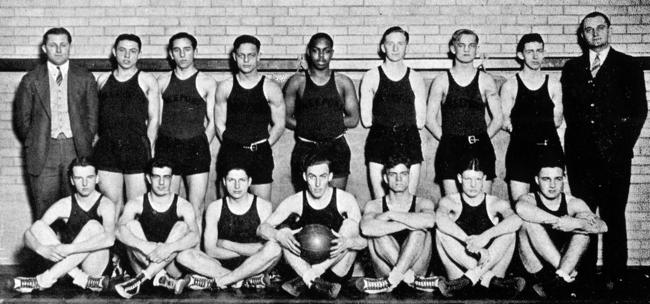
1926-27 Freeport Illinois Basketball Team
Sitting (l to r): R. Dupree, J. Paul, R. Opel, R. Ruthe (Captain), T. Goetz, G. Ralston, H. Perry
Standing (l to r): Assistant Coach Zuelke, F. Bender, K. Fitchner, A. Steffen, W. Moseley, M. Goodrich, R. Criddle, K. Kerlin, Head Coach Rupp
JPS Note - While it is known that Rupp did coach at least one black basketball player while at Freeport (William Moseley in 1927 and 1928), it is not clear that he coached more than that. The Freeport yearbooks from that era give no indication of any black players on his basketball teams in the 1929 or 1930 seasons. Although, in an interview with Rupp (also reprinted later in this page) when asked about his coaching of black players, Rupp mentioned coaching black players (plural) while at Freeport. What Rupp may be referring to is the fact that in 1927 Rupp also coached with George Zuelke the track team (pictured below). On that teams was William Mosely along with another black athlete, David Lipscomb, who was a sophomore that year.
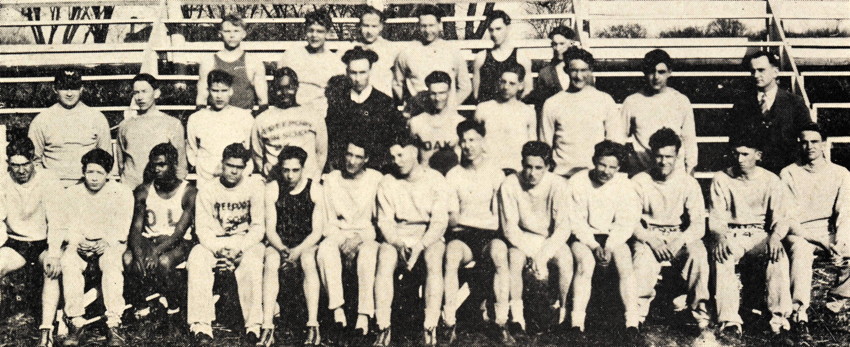
1926-27 Freeport Illinois Track Team
Sitting (l to r): P. Keifer, W. Moore, D. Lipscomb, T. Goetz, F. Derby, I. Gitche, F. Bilker, B. Carlson, J. Thro, R. Minear, J. Taber, C. Rutter, J. Huss
Middle Row (l to r): Coach Zuelke, T. McClarnon, W. Seidel, W. Moseley, R. Ruthe, R. Snyder, L. Langfeldt, A. Rund, H. Smith, Coach Rupp
Back Row (l to r): H. Kratzer, A. Steffen, M. Steinestel, R. Rowley, J. Kerlin, C. Unzicker
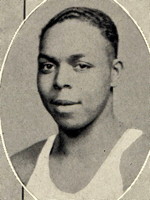 |
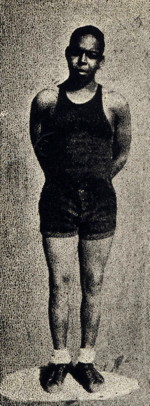 |
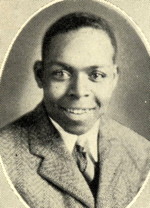 |
The 1927 yearbook shows only three black students enrolled in school (out of approximately 800): Junior William Moseley and sophomores David Lipscomb(e) and Katherine Moseley (presumably William's younger sister).
The previous year (1926, prior to Rupp arriving) Moseley was also listed as a junior and Lipscomb was present as a freshman. (Katherine did not appear). Moseley did not play basketball on the 1926 Pretzel basketball team (which was coached by Glen Holmes and won the Illinois State championship) although Moseley did play intramural basketball after school and football. Neither he nor Lipscomb appear as being on the track team that year either.
JPS Note - One issue which comes up for this season was that despite Moseley being a regular on the team, and in fact was one of only eight players to face rival Rockford (IL) in their final regular season contest, Moseley was not selected to be among the 10 players to represent the school in the District tournament, the winner of which was invited downstate to Champaign-Urbana (IL) for the state tournament in Huff Gymnasium.
Instead Rupp chose the five varsity starters (Ruthe, Perry, Steffen, Criddle and Goetz), Dupee and four players from the "Lightweight" squad. Now it's possible that Moseley simply didn't make the cut as the four lightweight players were thought to be better prospects for the team at the time, however it also raises the question of whether the real reason was due to some sort of prohibition (whether formal or informal) on integrated teams participating in the Illinois state tournament at that time?
It's currently not known how many black players participated in the Illinois state tournament prior to 1927. It's been noted by Illinois basketball historian Taylor Bell that Lynch Conway of Peoria starred on the 1908 Peoria State Championship team, however Conway did not physically appear to be black so perhaps it was more acceptable for him to participate than other African-Americans? Looking only at photos of Illinois High School State Champions (available on the IHSA website), it appears that a clearly integrated team won the state tournament only starting in 1939. If anyone has information about the racial policies (if there were any) in Illinois high school basketball (and in particular the state tournament) during the early part of the 20th century, I'd appreciate if you filled me in.
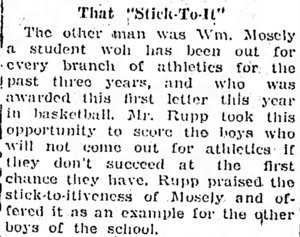 |
JPS Note - The article from May 1927 suggests that Moseley was in his last year at Freeport, although he did end up returning for the 1927-28 academic year so there appears to have been some sort of question over his graduation standing. This would play a role in cutting short his high school sports career as seen shortly.
Moseley returned to school as a senior the follow year (1927-28) and once again played varsity basketball under Rupp. The 1928 yearbook mentions that senior Moseley went by the nickname of "Mose" and participated in Football (2-3-4) (lettered in senior year at halfback), Basketball (3-4) (lettered both junior and senior years), Track (2-3), Glee Club (3-4) and Latin Club (2-3). His senior quote was from Lord Byron "Tho' modest, on his unembarrassed brow nature had written -- 'Gentleman'."
No other black students were apparent in the 1928 yearbook, besides Moseley.
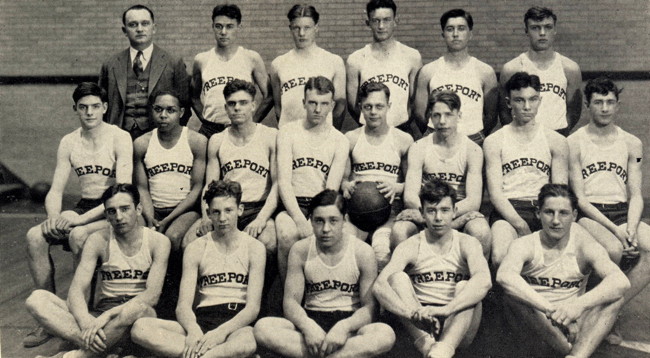
1927-28 Freeport Illinois Basketball Team
Sitting (l to r): Fitchner, Auman, Cheeseman, Keith, Krehl
Middle Row: Cunningham, Moseley, Goetz, Dupee, Steffen (Captain), Sullivan, Brewer, Bolender
Back Row: Coach A.F. Rupp, Tracy, Ralston, Rund, Baker, Schmelzle
During the 1928 season, Freeport starting guard Art Steffen was injured during the first game and lost for the season. Moseley stepped in and assumed one of the starting jobs at guard, until early February when due to a rule prohibiting athletic participation past eight semesters, Moseley himself was sidelined.
Wrote the student newspaper (published in the Freeport Journal-Standard, February 4, 1928) discussing the loss of Moseley to the Pretzel team: "Bill has been out for football, basketball and track, but never has he had a chance to show his stuff like he has in the present basketball season. In the last few games his playing has been miraculous, and his speed and cleverness has always been an asset to the squad. The thing he wanted most to do was to cage at least one basket in the last game played and his wishes were granted, not because the opponents believed in charity, but because he outsmarted the other team."
After the season, Rupp awarded seven school letters to his principal players, including Moseley despite Moseley not playing the entire season. The remaining nine players on the varsity received monograms.
"I never felt, at all, that negros should be barred. In fact, I had a negro on the first high school team that I ever coached when I was at Freeport Illinois. And he was a very capable athlete, he was on the first team, and all I ever thought that we needed was someone that could participate and do it the way ... ah ... it would meet with the approval of everybody that was a spectator. They liked it. And this boy could do it, and so we naturally played him." - Adolph Rupp, The Rupp Tape (Audiocassette), WHAS Productions, 1992. (![]() Audio Link
Audio Link![]() )
)
Some critics have tried to claim that Rupp was unfamiliar with the talent of black players until his team was beaten by Texas Western in 1966. This simply does not square with the facts. For example, they might be surprised to learn that Rupp was in attendance at the very first World Professional Basketball Tournament held in Chicago in 1939. Included in the field were two of the top professional black teams in the nation, the Harlem Globetrotters and the New York Renaissance (the eventual champions). Rupp was present to root along his former player Leroy Edwards who was the star for the Oshkosh All-Stars and met the Rens in the finals. In addition to the professional tournament, Rupp had also attended that week the Indiana State basketball championship in Indianapolis, the National Catholic High School tournament in Chicago and the inaugural NCAA Championship held in Evanston, IL.
Of the black coaches who actually met Rupp, many point to getting to know him at coaching clinics going back as far as the 1930s. During the off-season, Rupp was very active giving speeches and participating in various coaching clinics held around the country and even internationally at times. In some cases this involved on-court demonstration, some classroom and sometimes a mix, including panel discussions among multiple coaches. Many of these events were open to local coaches and integrated. In some cases, the events themselves were organized by and held on the campuses of Historically Black Colleges (HBCUs).
Below is a reference to a talk that Rupp gave at the Kentucky Negro Educational Association (KNEA) convention held in Louisville in April 1938. Per another document from the KNEA, Rupp was paid $20 for the speech. (Kentucky Negro Education Association Journal v. 9 n. 1-3 pg. 35)
Also in 1938 it is reported that Rupp held a basketball clinic on the campus of Kentucky State University, a historically black college in Frankfort KY. This was one of many clinics that Rupp held in the 1930's and 1940's for black coaches and athletes, although locating details of these types of events is difficult. At times, he was known to bring members of the Kentucky team with him as demonstrators.
"In 1938, Adolph Rupp brought his Kentucky Wildcats to KSU [black university Kentucky State University] for a basketball clinic. Among those attending was [former KSU graduate Newton] Thomas, who didn't know a thing about the game. But after the clinic and reading a couple of books, he decided to give coaching a try." - by Dick Burdette, Lexington Herald Leader, "Hall of Fame Inductees from Horse Cave Overcame Adversity on Way to Success," March 13, 1995. JPS Note: Thomas went on to coach Horse Cave Colored School to a number of black state championships, along with coaching Clarence Wilson, who became captain of the Harlem Globetrotters in the 1950s.
In this particular case, it may be that the above quote concerning a clinic at Kentucky State was reported incorrectly and what Thomas is referring to is actually the same clinic Rupp gave at the KNEA convention. Per the information on the right, it describes a two hour clinic that Rupp gave under the direction of chairman Henry A. Kean and held in the Recreation Center, which is consistent with the information at the top so it is likely that Rupp actually gave a clinic as opposed to a speech at the convention. |
| ||||||||
|
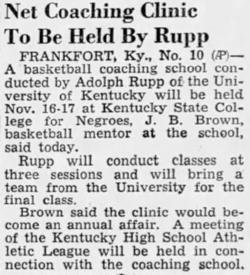 |
| Newspaper Clipping from Lexington Leader (November 10, 1945) |
Regardless of whether there were two separate clinics (one held at the Kentucky State campus in Frankfort and the other at the KNEA Convention in Louisville) or only one in 1938, it is reported that Rupp did hold clinics for black coaches and players both at home and on the road, including at Kentucky State which is a historically black college and was at the time the primary place in Kentucky for higher education available to black students.
"Adolph used to hold clinics for black coaches in Lexington." - by David Perlmutt, Charlotte Observer "Rupp Family Wants His Honor In Tact," March 15, 1997.
The article to the right illustrates one example of a clinic that Rupp held on the KSU campus in 1945, in which he also brought some of his players as demonstrators.
JPS Note: It bears repeating that these things were occurring during a time when the state Day Law was still in effect, which was a law barring blacks and whites from being in the same classroom. Yet here are examples of Rupp not only leading these clinics and assisting in the development of basketball within black athletic circles, but that he was bringing his players as active participants.
Interviews from players who played at Kentucky during these eras have revealed that they did attend these types of events and scrimmaged against black players at times etc., however it is very difficult to find evidence to verify it since none of these were sanctioned or official games and were not well publicized.
It it noteworthy that recently ESPN and others have made a big deal about a Duke intramural team (not even the actual Duke team) sneaking out one Sunday morning to scrimmage against a black team in Durham in secret during this era. Yet no one seems to want to acknowledge what Rupp and his teams were doing in broad daylight.
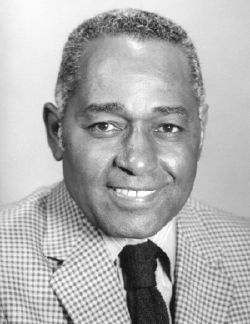 |
| The NCAA's First African-American Head Coach at a historically white university, Will Robinson of Illinois State University |
The first black head coach of any major sport at a predominantly white Division I university was Will Robinson at Illinois State in 1970. (Note John McLendon was reported to be the first black coach of a predominantly white school when he coached Cleveland State in 1966, however Cleveland State was not Division I at the time.) Robinson was helped during his career by Adolph Rupp, who held a coaching clinic which Robinson worked at Three Rivers Michigan in the late 1940s.
"Rupp was a great person to me," he said. "You hear certain things, and everybody has their likes and dislikes, but I really enjoyed him. He told good stories and jokes and he shared a lot of his coaching tips, which meant a lot to me since I was a young coach at that time." - by Chip Cosby, Lexington Herald Leader, "Pioneer Ways Robinson Blazed Trail for Black Hoops Coaches," July 18, 1997.
Another example of a legendary black coach taking advantage of a clinic given by Rupp was Clarence "Big House" Gaines who attended a coaching clinic with Rupp as the featured speaker at Southern Illinois University in the summer of 1950. Gaines (listed as C.E. Gaines of Teachers College, Winston-Salem, N.C.) appears on the roster of coaches attending in the fifth paragraph from the bottom of the following newspaper article describing the event.(article was published on August 22, 1950 in the Southern Illinoisan.)
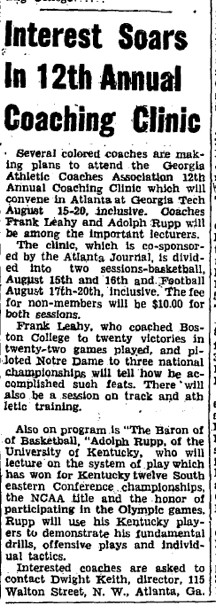 | 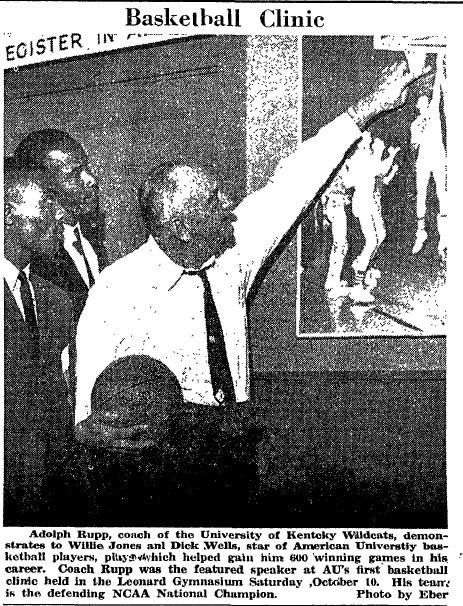 |
| Article from Atlanta Daily World, August 15, 1949 mentioning an upcoming Coaches clinic open to black coaches in which Rupp was a featured speaker | Article from American University Eagle, October 14, 1959 describing a recent AU-sponsored basketball clinic which attracted 125 coaches from six states. Photo shows Rupp instructing two black American U. players, Willie Jones and Dick Wells. |
Rupp was also known to have attended and been a featured speaker at Coaching clinics held on the campus of HBCU Tennessee State (formerly A&I) University in Nashville, TN. In the 1961 clinic Rupp lectured on basketball defenses and then later participated in a panel discussion with Vanderbilt coach Bob Polk and Cleveland Piper coach John McLendon. Rupp reportedly returned the following year for the 1962 coaching clinic as well.
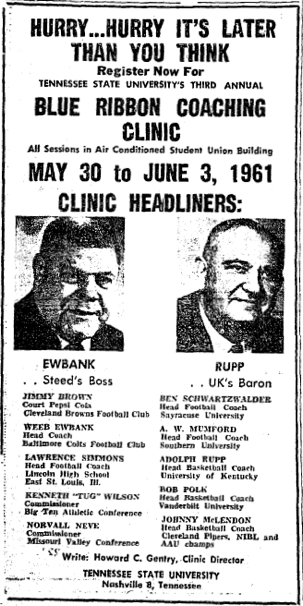 | 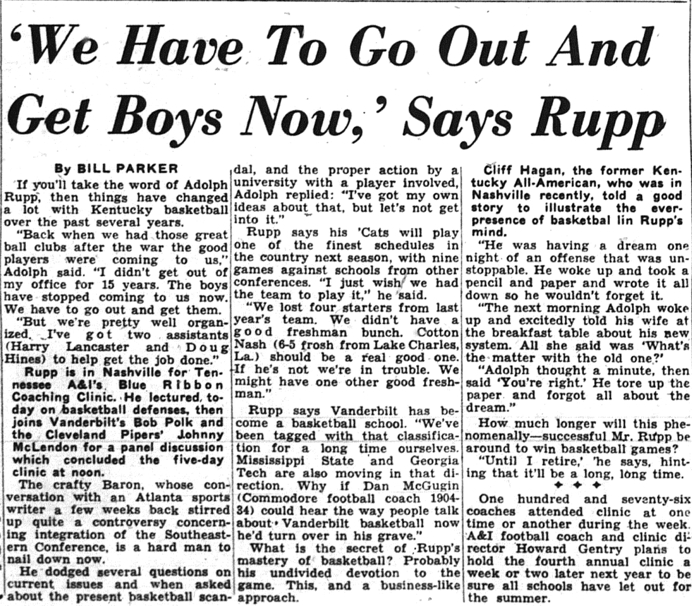 |
| Advertisement in Atlanta Daily World, May 16, 1961 promoting a coaching clinic held at the Historically Black College Tennessee State, with Rupp a featured speaker along with John McLendon. | Article in Nashville Banner (June 3, 1961) noting that Rupp not only provided lecture on basketball defense, but participated in clinic's closing panel discussion with Vanderbilt's Bob Polk and Cleveland Piper's 'Johnny' McLendon |
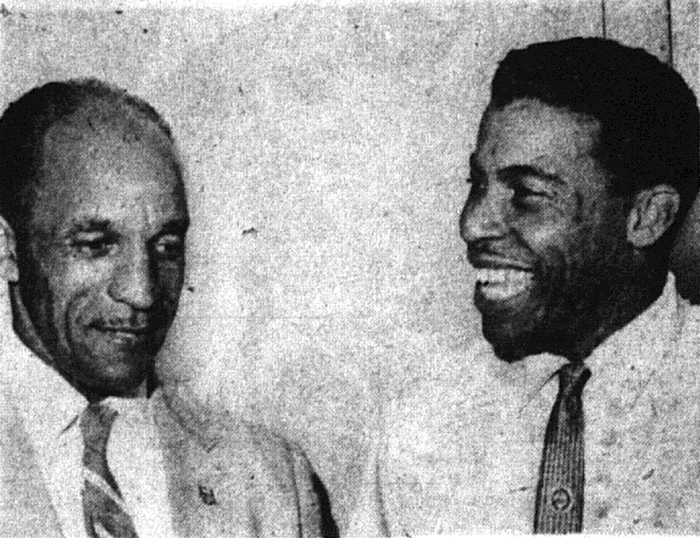 |
| John McLendon of the ABL's Cleveland Pipers talks with Tennessee A&I coach Harold Hunter, host of the 1961 Coaching Clinic held on the A&I campus. Adolph Rupp, among other basketball and football coaches and officials participated in the event. |
Another example of a coaching clinic held at a HCBU occurred in July of 1965 at Florida A & M University (FAMU) in Tallahassee. FAMU football coaching legend Jake Gaither organized the overall event, with Adolph Rupp put in charge of organizing the basketball session. According to news reports, Rupp "traced the evolution of modern basketball and presented several play patterns which won fame for him during his 35 years at Kentucky."
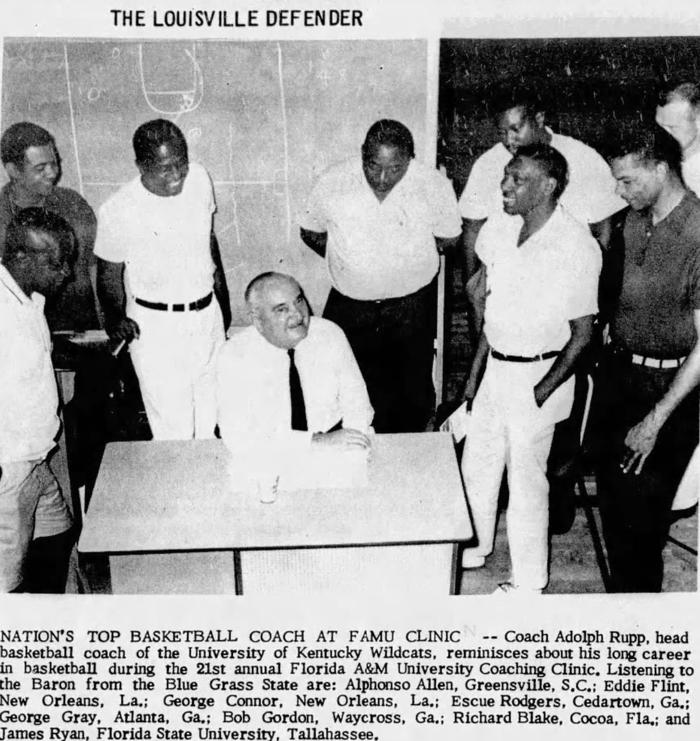 |
| Newspaper Clipping from Louisville Defender (July 8, 1965). Shown in the photo besides Rupp were Alphonso Allen, Greenville, S.C.; Eddie Flint, New Orleans, La.; George Connor, New Orleans, La.; Escue Rodgers, Cedartown, Ga.; George Gray, Atlanta, Ga.; Bob Gordon, Waycross, Ga.; Richard Blake, Cocoa, Fla.; and James Ryan, Florida State University, Tallahassee |
Rupp held and participated in countless coaching and instructional clinics all over the country and the world (including seven trip to Europe, three to the Far East and one to the Middle East for the US Government) during his many decades as coach at Kentucky. An example below of an event in 1967 for the US Army Europe (USAREUR).
| Caption: Adolph Rupp (with Assistant Harry Lancaster in the background) instruct two players (Marvin Coslett and Tyrone Parker) during a USAREUR (US Army Europe) Basketball Coaches Clinic at a military base in Bad Kreuznach, West Germany in September 1967. |
Alcorn State coaching legend Davey Whitney grew up in Midway Kentucky before attending Lexington's Dunbar High school and later Kentucky State before becoming a coach. "Legendary Kentucky coach Adolph Rupp used to let Whitney and a friend watch the Cats practice in old Alumni Gym. At other times Whitney would sneak in to watch the Cats practice. 'That was back in the 1940s. We were half scared to death considering the circumstances back then, but I loved watching basketball,' said Whitney, who earned athletic letters at Kentucky State in basketball, track, baseball and football and was inducted into the school's hall of fame in 1979." - by Larry Vaught, Danville Advocate Messenger, "Whitney knows playing in Rupp will be Special," January 3, 2003.
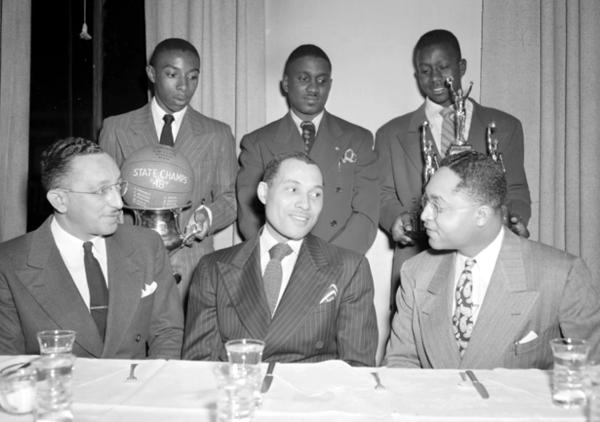 |
| 1948 Dunbar High School Basketball Championship Banquet. Shown seated are P.L. Guthrie, J.B. Brown and S.T. Roach. Standing are players Davey Whitney, M.L. Passmore and Lee Chenault |
But Lou's [Future Major League Baseball player Louis Brown Johnson] dream was wearing a University of Kentucky basketball uniform. He was a huge fan of Ralph Beard, the leader of the Wildcat's "Fabulous Five" teams that won back-to-back NCAA titles in 1948 and '49. He sometimes would sneak into UK's Alumni Gym to watch the Wildcats practice. Yet he knew he would never realize his dream because the members of the Southeastern Conference and Atlantic Coast Conference weren't recruiting black athletes in those days. - by Billy Reed, Transition Game: The Story of S.T. Roach, Host Communications, 2001, pg. 85.
The two [Rupp and Lexington Dunbar coach Sanford T. Roach] met only once, when Rupp congratulated Roach for winning his five hundredth game. Later Rupp would open the UK gym for Dunbar to practice. "He did that out of the goodness of his heart," Roach admitted. "That allowed us to work out for the various tournament games that we played there." - by Russell Rice, Adolph Rupp, Kentucky's Basketball Baron pg 154.
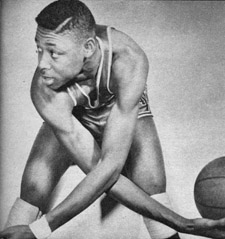 |
| Jim Tucker |
In 1950, Rupp attended the Kentucky black high school state tournament, where he noticed a talented black player by the name of Jim Tucker from nearby Paris. After Tucker's team lost in the tournament, Rupp asked for permission to speak with Tucker.
"I knew who he was, and he [Rupp] said to me, 'I'd like you to come to Kentucky, but you know our situation here. But what I'd like to do is contact some of my friends in the coaching community and see if they might have an interest in you because I think you have the ability to become an All-American and a good basketball player."
Rupp did follow through with the offer, and eventually Tucker signed with Duquesne University in Pittsburgh and their coach Donald Moore, who accepted Tucker sight unseen, based solely on Rupp's recommendation. "He said that if Adolph Rupp recommends you, that's the only reason we showed the interest, because if he couldn't have you, then we'd like to."
(All quotes from an interview between Dick Gabriel and Jim Tucker in video Adolph Rupp: Myth, Legend and Fact, WKYT, 2005)
JPS Note: Tucker went on to become an All-American at Duquesne. After his senior season, he was invited to participate in a 1954 exhibition game between the Kentucky and Indiana All-Stars alongside Kentucky greats Cliff Hagan, Frank Ramsey and Lou Tsioropoulos, Western Kentucky greats Tom Marshall, Jack Turner and Art Spoelstra among others on the Kentucky squad. This offer was made despite the fact that Tucker had not played collegiately for a Kentucky college or University. The coach of the Kentucky All-Star squad was Adolph Rupp, who selected Tucker to the squad. The players shared in the gate receipts from the game. As shown in the article below, some players chose to forego the game to maintain their amateur status.
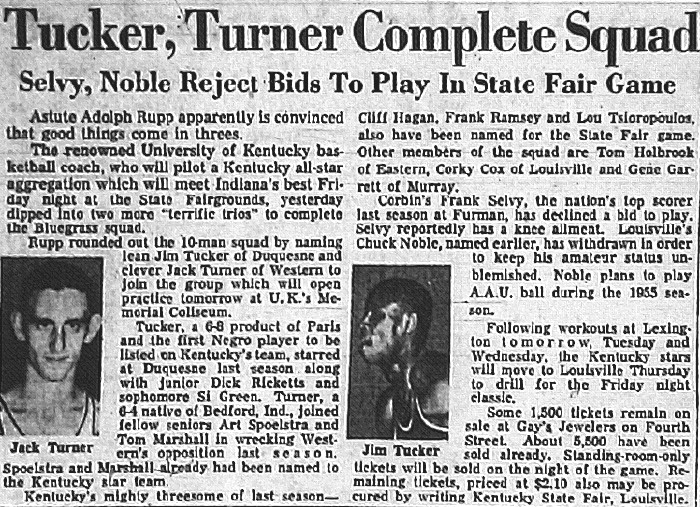 |
| Article from Louisville Courier-Journal, September 5, 1954 |
Later on Tucker joined the NBA and teamed with Earl Lloyd to become the first African-American teammates to win an NBA championship, which they did as members of the Syracuse Nationals.
Kareem Abdul-Jabbar wore the same number over a decade later. It is now retired and hangs in the rafters of the team's Los Angeles arena. A Florida native, Williams played one season at Florida A&M before enlisting in the Air Force. Later, legendary University of Kentucky men's basketball coach Adolph Rupp watched him play in a tournament and was impressed with his athletic ability. "He [Rupp] wanted to get me to go to school at Kentucky, but he said he had to get the regents to approve it. But they wouldn't approve a Black player at that time," recalls Williams. As a result, Rupp called Sid Hartman, who then worked for the Minneapolis Lakers, and recommended Williams, who signed his first pro contract for $6,500 during the summer of 1955. A month after he was honorably discharged from the service in September, Williams attended his first Lakers training camp in St. Peter's, Minnesota. - by Charles Hallman, Minnesota Spokesman-Recorder "NBA pioneer Bob Williams' legacy as Minneapolis Lakers' first Black player," February 17, 2010. |
Julius Berry, an aide to Lexington's mayor, said Rupp helped him get a scholarship to Dayton. "We happened to be sitting in the same airport," Berry said. "He said to me that they'd love to have me but that colored boys couldn't play in the SEC. He sounded genuine when he said it. "When I chose Dayton, (coach Tom Blackburn) there said to me that Rupp had told him that if he didn't recruit me, he was crazy." - by Rick Morrissey, Chicago Tribune, "New Faces Leads Kentucky These Days," November 30, 1997.
Rupp spent much of his spare time reading Forbes magazine and Kipling, visiting the Shriners Hospital for Crippled Children and handing out free passes to the Shriner's circus to inner-city children of all races. - by Robert Kaiser, Lexington Herald Leader, "Loyal to the Legend Coach Adolph Rupp's Family Strives to Return Luster to his Reputation Legacy Fades with Memories of Fans," March 13, 1993 pp. Page A1.
"My family and I went every summer to a black area of town called Pralltown. There, my grandfather would distribute Shrine Circus tickets to all the black children in the neighborhood." - by Carlyle Farren Rupp (granddaughter of Rupp), Lexington Herald Leader, January 23, 1992.
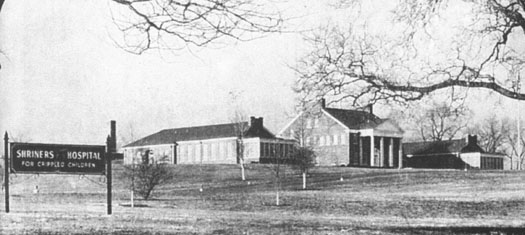 |
| This 50-bed satellite of Shriners Hospital was built in 1955 on Richmond Road in 1955. The Shriners was an institution set up to care for children up to 16 years old and was open to everyone regardless of race, color or creed. At the time, Adolph Rupp was one of the strongest advocates and fundraisers for the Shriners on a state and national level. |
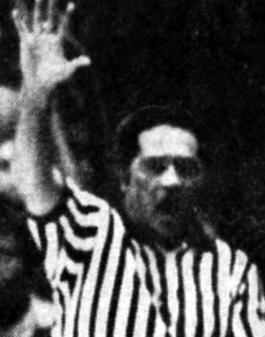 |
JPS Note - Art White was reportedly a letterwinner for the Loyola (Chicago) team that faced Kentucky in the 1949 NIT. From the boxscore it does not appear that White saw action, although black star Ben Bluitt did and scored 9 points for the Ramblers.
Thornton Jenkins, who officiated the 1966 national championship game, had a similar story about Rupp as White. Said Jenkins "Rupp told me, 'I sure like the way you call charging and blocking.' He said, 'Would you like to work my Christmas Tournament?' This was right after the (championship) game. It was either the night before or that night -- it was during that time. So I told him I would have to get with my supervisor. He sent me a contract -- I went back. I got four watches from him. I got four watches but I think I only worked three tournaments, I think. That was sheer delight to go down there." ("Denver Chevrolets, Chaffee Chatters and the Las Vegas Steelers?" by Mike Mitchell, SEMissourian.com, February 3, 2006.
The long time manager of his farm was black.
JPS Note - A reader commented to me that this is nothing more than saying this man was Rupp's farm hand. I tend to think that a manager of even a modest farm, much less a large operation, involves a high degree of responsibility, decision making latitude and supervisory roles. Rupp owned a number of farms including a 198-acre farm in Scott County, 240 acres in Harrison and when he died, a 500-acre farm in Bourbon County. The estimated worth of his land in the 1970's was approximately a quarter of a million dollars. Russell Rice describes the above facts and how when his farm manager died, Rupp did not have time to replace him very quickly and that led him to decide to spurn an offer from Duke University to coach the Blue Devils. (Russell Rice, Adolph Rupp As I Knew Him, Sagamore Publishers, 1994, pg. 202-203.)
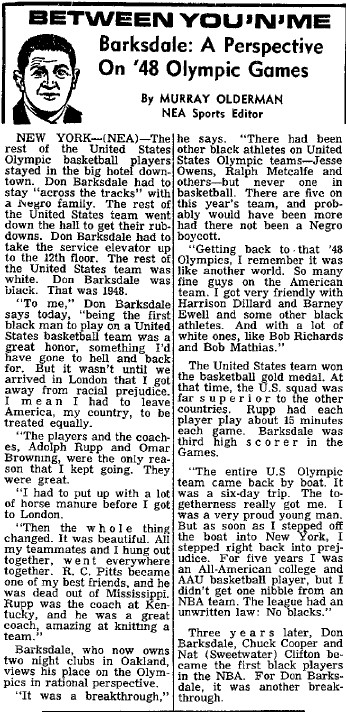 |
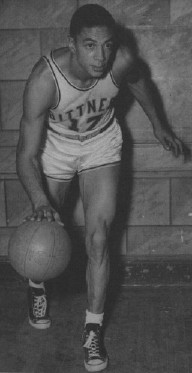 |
According to the rules as drawn up prior to the qualifying trials, Omar 'Bud' Browning, head coach of the champion Phillips 66 team, was named as the head coach of the Olympic team and Adolph Rupp was named the assistant.
Prior to the championship game, Rupp did recommend that his five Kentucky starters be named to the Olympic team. Bud Browning, however, refrained from doing the same for his Oilers starters, stating: I don't plan to make any recommendations to the committeee. . . I have too many good boys on my squad to pick out the five who should make the trip. I'll let the committee select them." (Abilene (TX) Reporter-News March 30, 1948).
It is not known how much if any say Browning and Rupp had in the selection of the at-large players, as the determination was designed beforehand to be in the hands of the basketball committee, which consisted of Chairman Lou Wilke, Vice-Chairman Eugene Lambert, Secretary Oswald Tower along with members Lew Andreas, J. Lyman Bingham, James Coogan, Willard Greim, Harry Henshel, Howard Hobson, Branch McCracken, Fred Maggiora, Norman Shepard and Albert Wheltle. Beyond that, the committee's selections were announced April 1, the day after the qualifying tournament was completed with the victory by the Oilers over the Wildcats. This left little time for the coaches to voice their opinion to a committee which had already been evaluating the entire field during the tournament.
Secretary Tower's comments, as found in Lou Wilke's report after the games were completed, stated: "The work of the Committee was characterized by harmony and teamwork, and a desire for the selection of the best possible team to represent the United States and to raise more than its share of funds for the U.S.O.C. The general procedure establishes a pattern which can be followed with little modification in future Olympic years. Chairman Wilke's leadership was efficient, tactful, and in every way satisfactory." The idea of perfect harmony among the committee is disputed in Ron Thomas' book They Cleared the Lane: The NBA's Black Pioneers. Thomas claims that Oakland native Fred Maggiora had to lobby very hard to gain Barksdale an invitation.
Barksdale, who had been playing with the AAU's Oakland Bittners, was given an at-large berth from the independent bracket, but not without heavy lobbying by Fred Maggiora, a member of the Olympic Basketball Committee and a politician in Oakland, which was adjacent to Barksdale's hometown. About eight years later Maggiora told Barksdale that some committee members' responses to the idea of having a black Olympian was "Hell no, that will never happen." But Maggiora wouldn't let the committee bypass Barksdale.
"This guy fought, fought, and fought," Barksdale said, "and I think finally the coach of Phillips 66 [Omar Browning] had said, 'That son of a bitch is the best basketball player in the country outside of Bob Kurland, so I don't know how we can turn him down.' So they picked me, but Maggiora said he went through holy hell for it - closed-door meetings and begging."
The 6-foot-6 Barksdale had left college in 1947 (UCLA) but had not played professionally in the NBA (or BAA) due to an unwritten rule in the league against signing black players. Being the 1944 National AAU hop, skip and jump (triple jump) competition champion, he could have attempted to qualify for the US track team, however he chose to try out for the US basketball team, despite the fact that no black player had ever been named to the squad before. Said Barksdale when questioned by a teammate why he chose that route, "You can't be a pro in hop, skip, and jump," he explained. "Watch it. When I make the team the rest of my life it will be 'ex-Olympic cager.'"
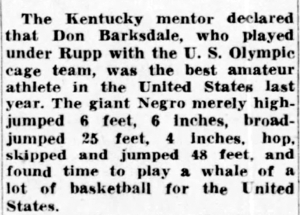 |
"[Rupp] turned out to be my closest friend," Barksdale said. "We went to London and won all 12 games and got the gold medal." But he had to brush off indignities just about every step of the way. . . Later, coach Rupp told Barksdale, "Son, I wish things weren't like that, but there's nothing you or I can do about it." Barksdale agreed. He lived by a very simple philosophy. He wasn't interested in protest; he was interested in playing basketball. He had faced prejudice before, and he knew that he would face it again. - by Charles Bricker, Knight-Ridder News Service, Philadelphia Inquirer, "Eventually, He Made it to the NBA," January 15, 1984.
For his part, the following year during an event in Rochester, N.Y., Rupp praised Don Barksdale, calling him "the best amateur athlete in the United States last year."
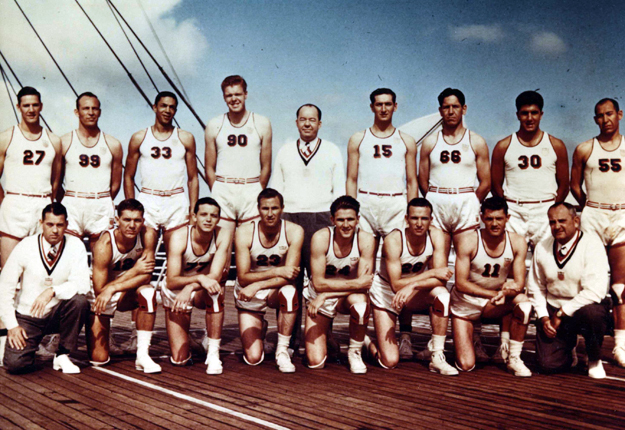
Only three years later was the NBA ready to start signing black players. Walter Brown of the Celtics signed Chuck Cooper and was soon followed by Nat Clifton with the New York Knicks and Don Barksdale with the Baltimore Bullets. At the time, Barksdale was 29 years old and well past his prime. Despite that, he played four seasons (two with Baltimore, two with the Boston Celtics) in the NBA, being among the league's top scorers each year and becoming the first black player to make an NBA All-Star team.
Early Games Against Black Players
The first known occasion that the Kentucky Wildcats played against a black opponent was when they played against the rest of the 1948 Olympic team (which included Don Barksdale) in an exhibition to raise money for their trip to London. In a unique setting, they placed a basketball floor outside over the football stadium's Stoll Field and were able to draw 14,000 fans, far exceeding the capacity of Alumni Gymnasium. This was the largest crowd to see a basketball game in the state at the time.
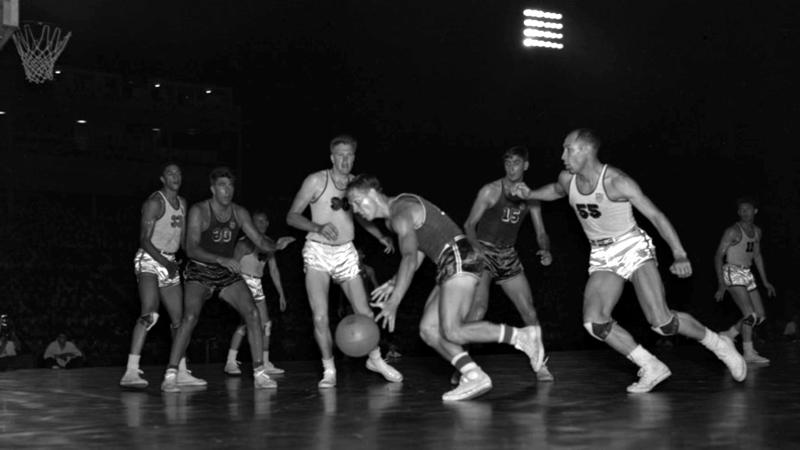 |
Barksdale scored 13 points, 12 of which came in the second half as he led a 10-point comeback for the Oilers team, winning the game 56-50. There was a mention of the significance of the occasion.
"And Barksdale, incidentally, was the first Negro to play opposite a Kentucky athletic team in Lexington. He received a big ovation when he was introduced before the game and another one when he left after the tilt ended." - by Larry Boeck, Louisville Courier Journal, "Oilers, Behind 10 Points, Rally to Tip UK 56-50," July 10, 1948.
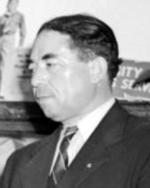 |
In Ron Thomas' book They Cleared the Lane: NBA's Black Pioneers, it is claimed by Olympian Jackie Robinson of Baylor that Rupp was resisting bringing Barksdale to the exhibition in Lexington and wouldn't allow him in the state. I haven't yet looked at this in detail, but from what I know of that time period, the game was one that was scheduled after the Olympic team players (including Barksdale) had already been named and the game was one that Rupp was intensely looking forward to (earlier in the 1930's, he had stated his dream of holding a basketball game outside on a football field at night, this game was a realization of those dreams). I don't doubt that Rupp had reservations about how he was going to accomodate Barksdale in a segregated city, but I highly doubt he would have risked cancelling the game over the issue. If anyone has additional information, I'd appreciate it.
Barksdale did, however, receive a death threat while in Lexington. He didn't tell anyone about it except the host family, but chose to play the exhibition game regardless. During the game, there was an especially tense moment for Barksdale where he was in the huddle and a water bottle was being passed between teammates during a break. When the bottle came to him, Barksdale thought about it before deciding to take a swig. He then gave it to his white teammate, 'Shorty' Carpenter who proceeded to take a drink and the episode was over. Said Barksdale later about the idea of drinking from the same bottle as whites in a place where there were still segregated drinking fountains, "If a black man went to a white fountain, they put his ass in jail. Segregation was segregation all down the line. If you went out with a white woman, they'd kill you. There's many a black kid dead for doing nothing because some ass just said, 'I'll kill a nigger,' and they didn't go to jail for it. No, I wasn't scared about getting arrested. I was scared I was going to be killed. I was scared to death." (quote above in Ron Thomas's book, They Cleared the Lane, University of Nebraska Press, 2002, pg. 123.)
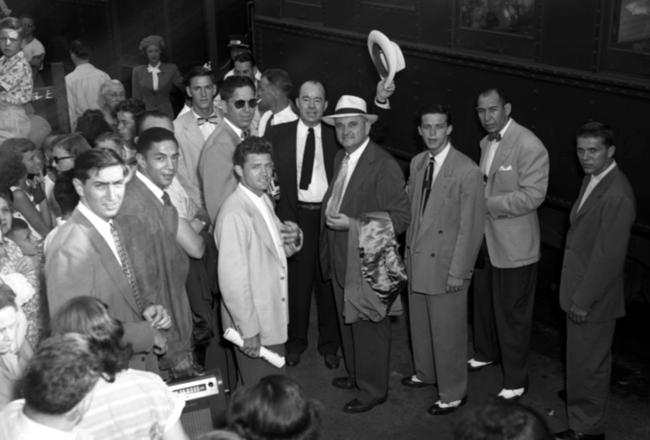
The first time Kentucky played an official game against a team with a black player is not clear. It may have occurred in a game against Loyola (Chicago) in March of 1949 when they faced Loyola reserve Ben Bluitt. Or it may have been before this time. Kentucky later played against integrated CCNY March 14, 1950 in the National Invitational Tournament. Ed Warner scored 26 points to help CCNY crush Kentucky 89-50. (Seldom used Leroy Watkins was put in the game to jump center against 7-footer Bill Spivey. Floyd Layne also saw action in the game.) Later, during the 1950-51 season, Kentucky played against St. John's and Solly Walker twice, winning the first contest in New York and the second 59-43 on the way to their third national championship.
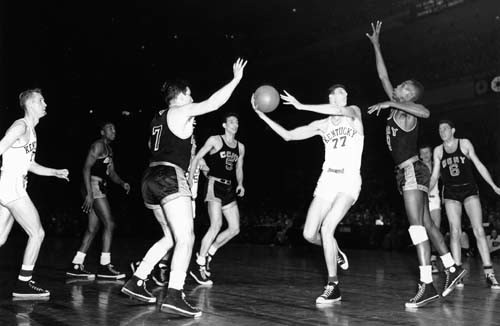 |
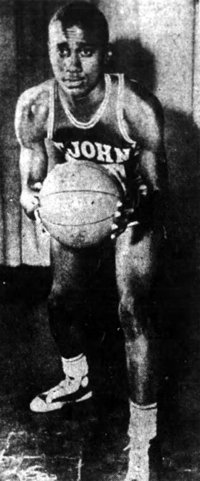 |
Frank McGuire phoned Rupp, questioning whether the player would be safe in Memorial Coliseum. Rupp declared that any fan causing trouble would be ejected and denied future admission. - by John McGill, Lexington Herald Leader, "Kentucky a Leader in Integrating SEC Sports," March 31, 1990, pp. D14.
Earl Cox has a story. He used to be my boss as sports editor of the Courier-Journal. He knew Rupp long before I did, both as a student at UK and as a reporter at the Herald-Leader.
"When Frank McGuire brought his St. John's team to Lexington in the early '50s, he had a black player named Solly Walker. Walker would be the first black ever to play in Memorial Coliseum. And Adolph called Ed Ashford at the Herald office. I was there at the time. Adolph got Ed to write a column asking people to be tolerant and hospitable to Solly Walker. I can still see Ed typing the story with two fingers. and the St. John's game went just fine." - by Dave Kindred, Lexington Herald Leader, "Calling Rupp a Racist Just Doesn't Ring True," December 22, 1991, pp. F2.
"The Kentucky fans were wild for their team," McGuire said, "but they treated us with great respect." - Frank McGuire, commenting on the St. John's-UK game, the first time a black player competed against a state university in the South. - by John McGill, Lexington Herald Leader, "Kentucky a Leader in Integrating SEC Sports," March 31, 1990, pp. D14.
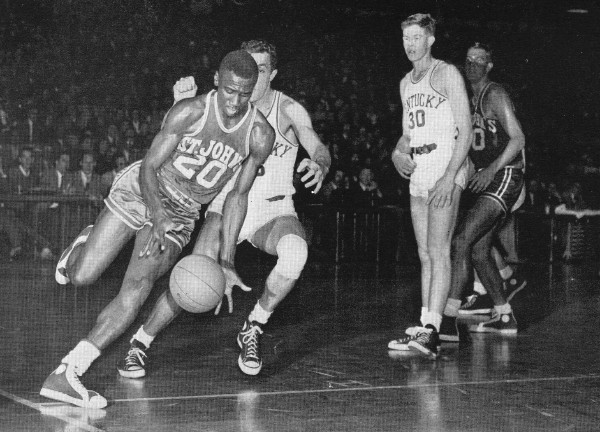 |
JPS Note - While Mike Douchant in his book completely fabricated the effects of the rough play [Douchant claimed Walker was sidelined for three weeks when in actuality he played most of the Kentucky game and started the next game for St. John's against Vanderbilt, with absolutely no report of an injury (Link 1, Link 2)], there is evidence that the play was indeed rough.
(Remembered St. John's coach Frank McGuire:) "We didn't run into any more trouble, although Solly wasn't welcomed with open arms ! The game started, and on the tip-off two Kentucky players sandwiched Solly and just about killed him. No foul ! but he managed to play the entire game, which we lost by about forty points !"
Walker, who scored six of St. John's first seven points, recalled that Kentucky was a great team with outstanding personnel, including Cliff Hagan, Bill Spivey and Frank Ramsey. "They were very aggressive -- played hard but there was no taunting or any bad comments. They gave a lot but they could also take it." Walker remembered. "In that game I hit a couple of shots and then I went to the middle and ended up in about the fifteenth row !" - Frank McGuire, The Life and Times of a Basketball Legend, by Don Barton and Don Fulton, Summerhouse Press, 1995.
 |
Rupp replied to the article through the national media, and took exception to some of the specific quotes and the overall tone of the Brooklyn article. Rupp, who seemed somewhat miffed that McGuire chose to discuss personal discussion to the media, acknowledged that during his discussions with McGuire, the issue did come up and Rupp was concerned about the arrangements and details, but went on to relate other details of the conversation which apparently weren't afforded by article, such as the fact that Rupp had made arrangements with a local Lexington hotel to accomodate the entire St. John's team. Said Rupp in his response to the article, "Then have him [McGuire] also tell the papers how we arranged for his entire team to stay at our leading hotel and all other arrangements we made for his comfort."
Noted Ed Ashford that June about the issue: "Although Negroes are not housed and cannot eat in any of the major hotels or hotel dining rooms in Lexington, arrangements have been made by the University of Kentucky for housing and feeding of any Negroes on visiting athletic teams at the Phoenix Hotel, Lexington's oldest hotel and one of the two leading hotels in the city. Discrimination on the Kentucky campus does not exist. There are several Negroes in the graduate schools at U.K. Concerts in the Memorial Coliseum (where basketball is played) have been open to Negroes with no segregation practiced. Negroes were also welcomed at the U.K. Coaching Clinic, featuring Adolph Rupp, Paul Bryant, Hank Iba and Bud Wilkinson, with no segregation." (Brooklyn Eagle "Cage Signs Point to L.I.U." June 13, 1951.) (JPS note: per the above the Phoenix Hotel was secured but in the end and was thereafter known to host visting integrated teams, however in this particular case it turned out that the Lafayette (Lexington's other leading hotel at that time) ended up hosting the St. John's contingent.)
Frank McGuire's biography (Frank McGuire, The Life and Times of a Basketball Legend written by Don Barton and Don Fulton, Summerhouse Press, 1995) discusses the game and takes an accusatory stance against Rupp. The book mentions a conversation between the Baron and McGuire the summer leading up to the game with Rupp reportedly saying "Now Frank you know you can't bring that boy here." and "We don't try to change the way you say Mass in church, and you shouldn't come down here and try to change our ways either." The book goes on to claim that McGuire didn't tell his team about potential controversy before they travelled to Lexington (JPS note: even though it was discussed in the national papers as early as that summer? Seems McGuire and his biographers have stepped away from reality.)
In the book, McGuire is quoted:
"When we arrived at Lexington, I called Rupp, who was a good man just caught in the rules and customs of his place and times. Rupp told me that I should stay out at the freight yard with Solly. Well, that isn't exactly how he said it ! I told him that, if Solly couldn't stay with the team, then we'd all get on the train and head back to New York. Otherwise, we're coming to the hotel.
"'All right,' Rupp told me, 'you're on your own.'" - (Frank McGuire, The Life and Times of a Basketball Legend by Don Barton and Don Fulton, Summerhouse Press, 1995 pg. 39)
JPS Note - As documented here above, there were discussions between Rupp and McGuire during the summer prior to the game discussing the situation and accommodations, and as with many things, different takes on the conversations became evident. Whether Rupp was trying to prevent Walker from coming or simply questioning the details of how it would be arranged is something that could easily be interpreted different ways by the different parties.
Also, according to a blurb in the Lexington Herald (shown at the left) McGuire didn't even accompany the St. John's team when they first arrived in Lexington. Per the article (December 17, 1951) McGuire was attending business in Washington and met up with the team later. The St. John's team had already checked into the Lafayette hotel on December 16. If McGuire had indeed been alarmed for the safety of his player as has been suggested in his biography, his actions at the time certainly didn't support this idea. It brings directly into question the accuracy of what McGuire related to the authors of his book.
Frankly, I chalk up the quotes found in this biography on this issue to be more the result of the effect of 40 years time on the accuracy of someone's memory, along with perhaps a natural tendency to exaggerate and sugarcoat one's own role in past events. Again, the remembrances in McGuire's biography don't square very well with the information at the time.
This, I think, is a very good example where too often journalists and biographers etc. tend to put too much credence into people's distant memory rather than doing the difficult leg-work to actually research the issues and events. If such leg-work had been done in advance of the interview, then most certainly the interview would have been a more valuable experience as it would have helped the biographer in terms of knowing what to ask, what specific issues to probe and as necessary, what remembrances to challenge or expand upon. Unfortunately, that doesn't happen nearly as much as it should in my opinion.
As far as the McGuire quotes in his book (which presumably were made in interviews with the authors), the specific claim about a last-minute change in lodging is not consistent with the other reports at the time. Rupp stated in June in national newspapers (including the Brooklyn Eagle) that Kentucky had already worked out hotel arrangements (which was not a trivial matter and probably unprecedented at the time in the city.) The idea that Rupp would interfere at the last minute with any arrangements that he himself set up doesn't make any sense whatsoever.
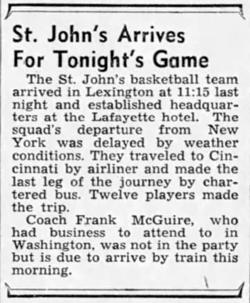
 |
"I was proud of the crowd's reaction to the appearance of St. John's Solly Walker, the first Negro to play in Memorial Coliseum. Walker was treated as any other St. John's player - in fact, he got a bigger ovation than any other visitor. New York papers were watching this game with interest but if they expected anything untoward to arise out of the playing of Walker, they were disappointed. Gotham scribes had been predicting trouble and New York papers requested Bill Hudson of the Lexington Associated Press Bureau to file a 250-word story on the crowd's reaction. Hudson reported that Walker was subjected to no embarrassment here, not only while in the game but during his entire visit in Lexington with the St. John's team." - by Ed Ashford, Lexington Herald, December 19, 1951.
It is known that some in the New York media were present at the game in Lexington, so that they could report on any 'incidents' that may occur. The New York Times had this to say after the game.
"The crowd treated Walker, the first Negro to play in the Coliseum, like any other player and he got a big hand when he went out for a rest in the second period." - New York Times, "Kentucky Routs St. John's in Lexington," December 18, 1951.
The Times also had an interesting comment in the pre-game article. They likely were referring to the Olympic exhibition held in Lexington which included Don Barksdale, although it's possible they were referring to someone else, such as a black football player from Michigan State who reportedly played in a game against UK on Stoll Field (November 2, 1946).
"The other starters are Jim Davis and Solly Walker, sophomores. Walker will be the first Negro to perform in Kentucky's Memorial Coliseum, but not the first to play on the Kentucky campus." - Associated Press, New York Times, "Kentucky, With Spivey Still Unable to Play, Faces St. John's Five at Lexington Tonight," December 17, 1951.
JPS Note - After all the media interest and concerns expressed publicly by McGuire and the Eastern media, it is noteworthy that Walker's appearance in Lexington was quickly followed up nine days later when John Wooden brought his UCLA Bruin team to Memorial Coliseum where black players John Moore and Bobby Pounds participated. This time, there was apparently no public angst about the situation from either side. Although reading Seth Davis' book Wooden: A Coach's Life may explain why. Davis notes that Wooden, believing that the Lexington hotel was segregated, opted to keep his team housed in Cincinnati, which was ninety miles away. The Bruins took a bus to Lexington to play the 4:00 PM game, which they lost 84-53, and then got back on the bus to return to Cincinnati. (Wooden: A Coach's Life by Seth Davis, Macmillan, 2014).
It's strange to me that this happened at all, as I'm sure that if Wooden had broached the topic with Rupp he would have learned that arrangements had already been made to accomodate St. John's the previous week, so UCLA could have benefitted as well. For whatever reason, that conversation did not happen before UCLA made their travel arrangements.
Kentucky continued to regularly play integrated teams throughout the remainder of the 1950's and beyond on their home court and in Louisville's Freedom Hall.
It is noteworthy that Kentucky actually faced so many integrated teams during the 1950's, at a time when very few if any other Southern teams did so, that there are a large number of black players whose first and only experience playing in the South was against Kentucky. As someone who runs a statistical website which provides boxscores etc. of virtually every game UK has ever played, I've been surprised by the number of inquiries through the years from former opposing players and those who knew them, who assume they were the first black players to face UK on their home court, when the reality is that they were one of literally dozens to the point that there's no definitive list available. To me it raises the question of what exactly their coaches were telling them when they arrived in Lexington to convince them they were trailblazers?
As mentioned numerous times on this page, Rupp was one of the first coaches in the nation to take his team out of its natural region on a regular basis to play against teams from all over the country. In today's world of airlines and national television, it may not seem like such a great leap forward to those who choose not to think about it, but it was a great step forward for Rupp to do this, where he played against the best competition, whether integrated or not. If he was a racist, he could just have as easily not scheduled these opponents, just as most of his contemporaries at other southern schools did at the time.
"[But] once Southern schools adjusted to the fact that Northern teams might include African-Americans, they sought to dodge such encounters through careful scheduling," wrote historian [Charles] Martin. "This technique usually proved successful but at the cost of avoiding intersectional play." - by Frank Fitzpatrick, And the Walls Came Tumbling Down, Simon & Schuster, 1999, pg. 56-57.
This avoidance of playing integrated teams by his contemporaries even extended into postseason play.
"Kentucky's overwhelming success in SEC basketball - the Wildcats won either the conference's regular-season or tournament championship in fifteen of the NCAA Tournament's first twenty years - had prevented race from becoming an issue in postseason basketball. The SEC's Deep South schools, who would have objected to integrated NCAA or NIT games, generally weren't good enough to confront that possibility." - by Frank Fitzpatrick, And the Walls Came Tumbling Down, Simon & Schuster, 1999, pg. 48.
UK replaced Mississippi State twice (in 1959 and 1961) and Alabama once (in 1956) in the NCAA Tournament when their state legislatures would not approve their appearances, since they might have to play teams with black athletes. Rupp didn't mind playing the best teams, no matter what their racial composition. - by Russell Rice, Big Blue Machine, Strode Publishers, 1976.- JNB
JPS Note: - Alabama's decline of the NCAA bid in 1956 was at least partially, if not fully due to an eligibility issue regarding some of the 'Rocket 8' players participating on the varsity as freshmen in 1953. Mississippi State also declined a bid in 1962, although Kentucky was not in line to replace them.
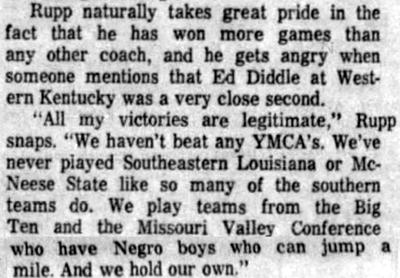 |
In an article by Jack Williams in 1966 Rupp was interviewed about his remembrances of playing Georgia and Georgia Tech. The subject of his record came up and Rupp boasted of the quality of the competition, including the fact that his team regularly played against integrated teams. According to Rupp: "We haven't beat any YMCA's. We've never played Southeastern Louisiana or McNeese State like so many of the southern teams do. We play teams from the Big Ten and the Missouri Valley Conference who have Negro boys who can jump a mile. And we hold our own."
JPS Note: - A few authors have taken the last lines of this quote out of context to argue that this somehow supports the idea the Rupp was defending the 'status quo', but the full quote shows this not to be the case. The point Rupp was clearly making was to praise the quality of his competition, and in doing so praising the qualities of the black players that UK was facing, as opposed to most of the other SEC schools at the time who weren't playing against integrated teams.
Attitudes During the 50's and early 60's
After Paris (KY) Western had finished a successful season it was a cause for great celebration. The coach of Paris, (Chief) William Reed, was a friend of Rupp and invited him to come to speak at a team event honoring the champions, which Rupp accepted.
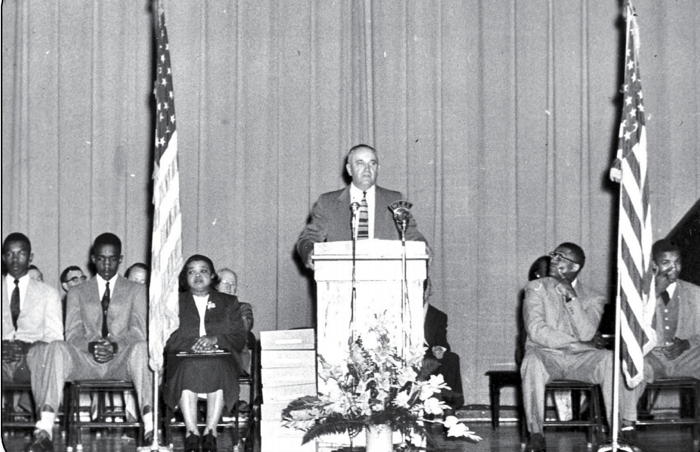 |
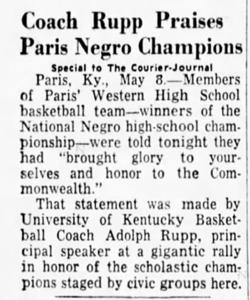 | 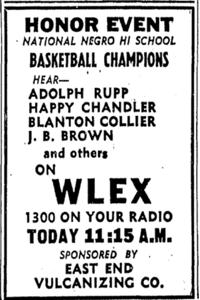 | 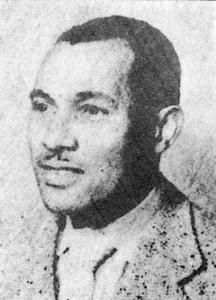 |
The banquet in 1953 for the Paris Western team was held April 10, whereas apparently the rally was held the following month on May 8, during which the team members and coach were to be presented with special jackets. For this event, Rupp attended as the principal speaker and per the Louisville Courier-Journal praised the team, telling them they "brought glory to yourselves and honor to the Commonwealth."
The following day, per the advertisement to the right, Rupp along with Happy Chandler, Blanton Collier and J.B. Brown (long-time principal and coach of Mayo-Underwood High School in Frankfort (and as mentioned earlier was an organizer of Rupp's clinics held at Kentucky State University in Frankfort), were participants in a radio program honoring the team.
(From Interview with William B. Keightley by Jeffrey Suchanek, November 8, 2005, as part of the University of Kentucky Oral History Collections.
JPS Note: UCLA was part of the UKIT field in 1953-54 although they didn't face Kentucky. They lost to LaSalle in the first round and beat Duke the following night. Kentucky won the four-team tournament, beating eventual national champion LaSalle. |
Once when Temple came to Lexington, his son said, Rupp got a call from Temple officials complaining their black player was banned from the dining room. "He could only eat in the kitchen," Herky Rupp said. Rupp was irate. He stormed into the hotel and confronted the manager. That night, the player ate with the rest of the team. - by David Perlmutt, Charlotte Observer "Rupp Family Wants His Honor In Tact," March 15, 1997.
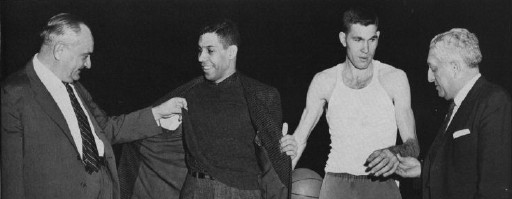 |
When asked about a upset win over Kentucky and Rupp in the NCAA Tournament in 1957, Michigan State All-American Johnny Green said. "You just didn't beat Kentucky at Kentucky. Adolph Rupp's teams were dominant there. But long before they had any black players, he came up to me at a function and said, 'Gee, I wish I had you on my team.'" - A Century of Spartan Basketball, Sleeping Bear Press, 1998, pg. 16.
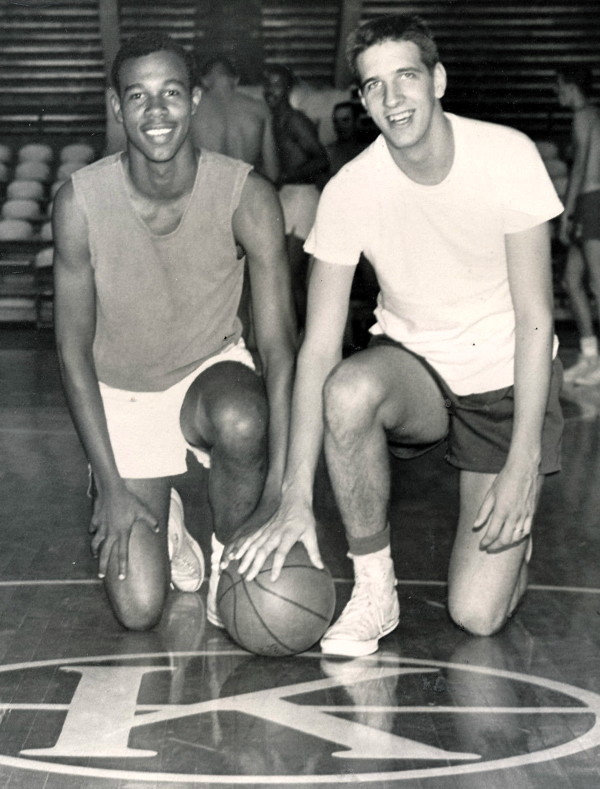 |
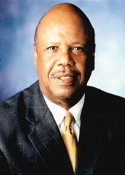 |
Rupp made a point of approaching the Grant High School star [Tom Thacker] after a 1959 all-star game at Memorial Coliseum. "I remember Rupp came out on the floor congratulating me on how high I could jump to be 6-2," recalled Thacker, who went on to play for two national champions at Cincinnati and make a few All-American teams. "He was saying, 'I wish we could take you at Kentucky, but we go down South and I don't think they'd like that,' Sure, I would have loved to go to Kentucky because I was a basketball player. It fascinated me. But the attitude was, we knew it wasn't highly possible. Everybody had that attitude about UK being racist. UK was South. It was a Southern school." - by Lonnie Wheeler, Blue Yonder, Orange Frazer Press, 1998, pg. 50-51.
After Rupp hired Ron Murray as a trainer for the UK basketball squad in the late 1950's, he learned that Murray had been the trainer for the minor league baseball team, the Knoxville Smokies.
Despite the above supportive acts that Rupp was involved in, the rest of the SEC was in no mood for any type of integration.
"Several Deep South states, including Mississippi, responded to the possibility [of integration] with laws prohibiting, or aimed at prohibiting, interracial athletic competition. 'When negroes and whites meet on the athletic fields on a basis of complete equality, it is only natural that this sense of equality carries into the daily living of these people,' warned Georgia State Senator Leon Butts in 1957 after submitting a bill to ban such activities." - by Frank Fitzpatrick, And the Walls Came Tumbling Down, Simon & Schuster, 1999, pg. 45.
In 1956, the state of Louisiana enacted Legislative Act 579 (later struck down in 1959 by the Supreme Court), which banned all interracial athletic competitions in the state. This most noticeably impacted the annual Sugar Bowl, which at the time was more than just a major college football game, it was also a multi-sport festival sponsored by the Mid-Winter Sports association. Included in the festivities was the annual Sugar Bowl Basketball Tournament, which invited four of the top college basketball teams from around the nation.
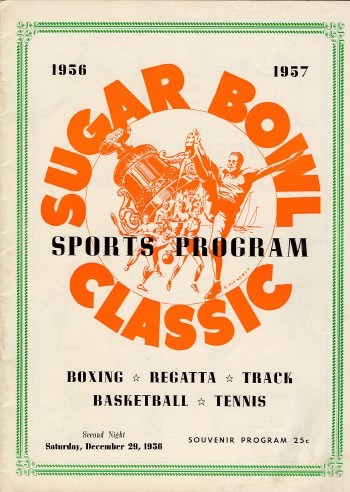 |
After some debate and letters by alumni suggesting UK also decline the tournament, Kentucky President Frank Dickey determined to abide by the existing contract between Kentucky and the Sugar Bowl. Said Dickey "I agree with you that the problem of the religious and moral implications in this situation is a difficult one. However feel that the moral values of integrity and honesty are also involved ... a moral obligation and a commitment to abide by the contract." (And the Walls Came Tumbling Down by Frank Fitzpatrick, pg. 131).
When asked about the situation, Rupp was quoted that "We will be there according to our contract with them." However, Paul DeBlanc (president of the Mid-Winter Sports Association) stated that Kentucky had informed the group that it's policy was "We do not make any racial discrimination either at our home games or games away." DeBlanc added that Kentucky was willing to play integrated teams in the tournament. ("Sugar Bowl Cage Tourney Staggered by Louisiana Segregation Law," Nevada State Journal July 29, 1956.)
JPS Note: In Fitzpatrick's book he criticizes Rupp and Kentucky for upholding the contract, saying that this was a "relatively painless stand against [segregation] by withdrawing his team too". There is some validity to this, as Kentucky did have an opportunity to make a positive stand against segregation in the South and passed on the chance. In their defense, however, at least they did make clear publicly that they were willing to face integrated teams.
Fitzpatrick's claim however is a bit simplistic from the fact that Kentucky not only was contracted to play in the Sugar Bowl but also contracted to face conference foes LSU and Tulane. The other schools could afford to spurn the Sugar Bowl without any residual effect because they didn't normally travel to Louisiana. Kentucky was in a different situation altogether. If they spurned the Sugar Bowl to take issue with the state law, then it would follow that they shouldn't be playing Louisiana State or Tulane at their homes either, nor any of the other schools in the South which may have enacted such laws.
Again, it can be argued that Kentucky should have taken this step, which following its logical conclusion in the end would have meant UK would be forced to leave the conference. And in hindsight that arguably would have been the right choice to make, from a purely moral standpoint. At the time, however, Kentucky was obviously not ready to take such a dramatic step. The point being that making such a decision for Kentucky was not 'painless' as Fitzpatrick suggests, but actually was a significant decision on the part of the administration with potentially far-reaching and important ramifications.
It also is noteworthy that when faced with the question of whether the NCAA would sanction the football game in light of the new law, that the NCAA did so, with Executive Director Walter Byers saying that it would have no bearing on NCAA approval. ("NCAA Approves Race Segregated Sugar Bowl Game," Fresno Bee October 29, 1956) Given Fitzpatrick's criticism of Rupp and Kentucky over their decision, one could also question the NCAA's decision (especially considering that the NCAA represents schools from all over the nation). Certainly pulling NCAA sanctioning from the lucrative bowl game would have sent a strong message, but again, would have led to dramatic consequences that the NCAA likely wasn't prepared to deal with at the time, either.
Fitzpatrick also claims that Rupp rounded up substitute teams which were segregated and willing to play in the Sugar Bowl (Alabama, Houston and Virginia Tech). That may have been, but I haven't confirmed what role, if any, Rupp had in doing what is in reality the job of the organizing committee.
There were numerous concerns about the possibility of Kentucky integrating their program at the time. Former UK sports information director Russell Rice said Rupp was concerned about taking black players on the road in the SEC. He worried that he wouldn't be able to find a place where they would be allowed to eat or sleep. - by Robert Kaiser, Lexington Herald Leader, "Loyal to the Legend Coach Adolph Rupp's Family Strives to Return Luster to his Reputation Legacy Fades with Memories of Fans," March 13, 1993 pp. Page A1.
"I've had them [black recruits] tell me, not once, not twice, but many times that they did not want to be the first to go into Mississippi and play basketball, and be right there confined in a small area, because at that time, at Mississippi State we were having plenty of trouble, and we were all white." - Adolph Rupp, The Rupp Tape (Audiocassette), WHAS Productions, 1992. (![]() Audio Link
Audio Link![]() )
)
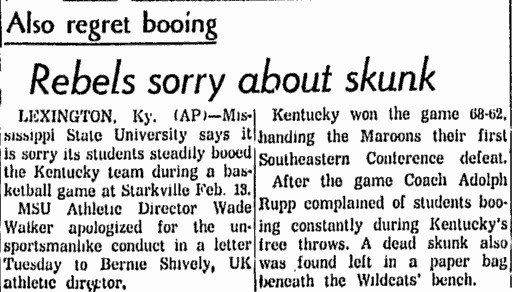 |
"I discussed it [integration] with him on a number of occasions. Always, his major concern was, what would we done in the South if we had black players? It was a legitimate concern at the time. You look at the Deep South states, would have been an issue. It was more of an issue of his time and the league he played in." - C.M. Newton by Paul McMullen, Baltimore Sun, "History in Black, White -- and Gray," December 10, 1999.
John McGill reinforces the idea that the decision to sign blacks was a major milestone.
Tom Payne was not signed until 1970, but it was generally agreed that it would have been unwise, even dangerous, to have taken a basketball player into most of the SEC cities before then. In 1963, a prominent coach gave me this quote: "If and when the SEC requires participation against blacks, some member schools will withdraw and form a rebel conference. I hope this does not happen, but I do not think that the schools in Mississipi will ever accept the idea." - by John McGill, Lexington Herald Leader, "Kentucky a Leader in Integrating SEC Sports," March 31, 1990, Pg D14.
In an article by Larry Boeck in January of 1963, Boeck asked the local college basketball coaches (such as Western's Ed Diddle, Louisville's Peck Hickman and UK's Rupp) about relatively poor basketball seasons. Adolph Rupp mentioned that talented local players were being lost to out-of-state schools, including some black stars.
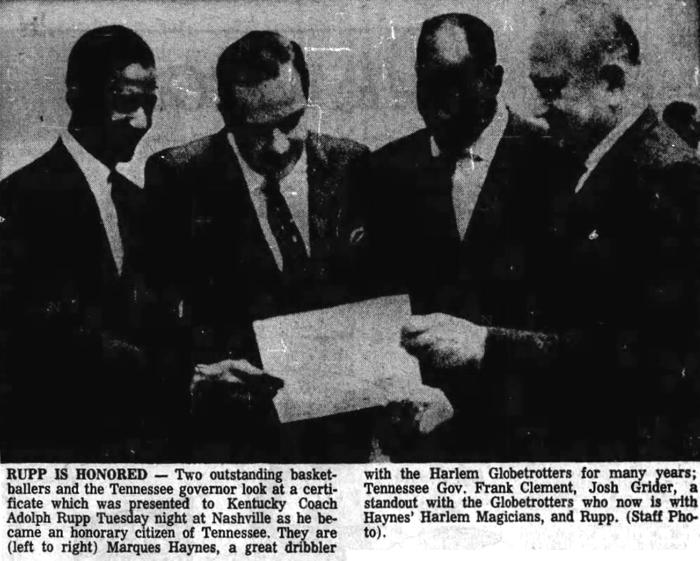 |
Observing [the Kentucky-Indiana High School All-Star game in Louisville] on the sideline was UK Coach Adolph Rupp, who like everyone else in the record crowd of 17,875, was impressed with [George] McGinnis. "He's one of the best I've ever seen," said Rupp. "I'd sure like to have him." Then he added, smiling almost wistfully, "I don't think he'd have a good future in college ...anywhere but our place." - by Mike Rehling, "McGinnis Pops 53 Points As Indiana Rolls, 114-83" Lexington Herald June 29, 1969.
In a chapter on Louisville Coach John Dromo, he mentions an encounter with Rupp.
"Whenever a coaching job came open in the Southeastern Conference [Rupp] would recommend me," said Dromo. "He wanted to get me out of the state because we were recruiting some of the boys he wanted. I really like Adolph and his assistant, Harry Lancaster. We had some great times together. I'll never forget seeing Mr. Rupp at a clinic one year near the end of his career. His teams had gone down some and John Wooden was stealing his thunder, winning the NCAA almost every year. Mr. Rupp said, 'John, where did I go wrong?' 'Coach,' I said, 'you made a mistake by not recruiting some black kids. You thought it was a fad that would pass, but you were wrong.' Dromo said Rupp had tears in his eyes. He just looked at me and said, 'John, if we had recruited blacks they would have burned a cross in my front yard.' It was sad." - interview with John Dromo by Gary Tuell, "Above the Rim: The History of Basketball at the University of Louisville, " University of Louisville Athletic Association, 1988, pp. 21-22.
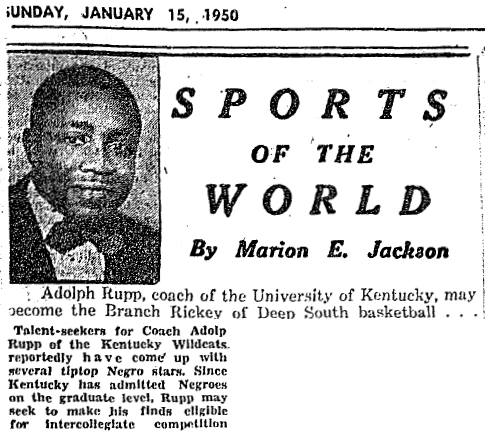 |
What this rumor was based on: i.e. actual evidence of Kentucky officials looking at black talent or simply wishful thinking on the part of the writer, is not provided, and there doesn't appear to be much that came out of this. The rumor may have started from Rupp or a representative themselves, as the article was published a day before UK was to face Georgia Tech in Atlanta, so presumably the team was available to the writer. Interestingly this rumor does presage similar rumors that came out over a decade later, as will be illustrated below.
The reality was that even though the UK graduate school had been opened to black students, the undergraduate school (from the ranks of which athletes came from) would not be opened to blacks until 1954. It was only then that it would have been possible for a black athlete to suit up for UK, and that's also ignoring the fact that such an event would have likely forced UK to leave the Southeastern Conference.
Despite these difficulties, as the fifties came to a close, it became a legitimate question of when the University of Kentucky would integrate its basketball team. Rupp did start dropping small hints that he would like to recruit black players but his words did not go far enough to satisfy those looking to him to take the first step.
"In fact, a national magazine article on Oscar Robertson sparked criticism of Rupp in Lexington when it mentioned that the coach had considered recruiting the black star. The coach felt obligated to deny the report publicly. 'How absurd can you get,' he sniffed." - by Frank Fitzpatrick, And the Walls Came Tumbling Down, Simon & Schuster, 1999, pg. 103)
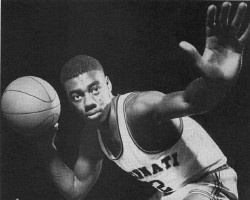 |
For the record, Robertson was interviewed for a story on him in the Saturday Evening Post ("Basketball's Moody Marvel", by Milton Gross, December 26, 1959). The article mentions that "In the annual Indiana-Kentucky all-star competition, he (Robertson) was voted the "Star of Stars" award. It was here, Robertson remembers, that Adolph Rupp, the University of Kentucky coach, first saw Oscar and offered him the chance to become Kentucky's first Negro player."
In an article in the Lexington Herald (shown below), sports editor Billy Thompson noted that he checked the newspaper files from the time period of the Kentucky-Indiana All-Star games from that year and confirmed that Rupp was not in the area, he was in Idaho at a coaching clinic. I have not seen, but would be interested in any Robertson responses to this.
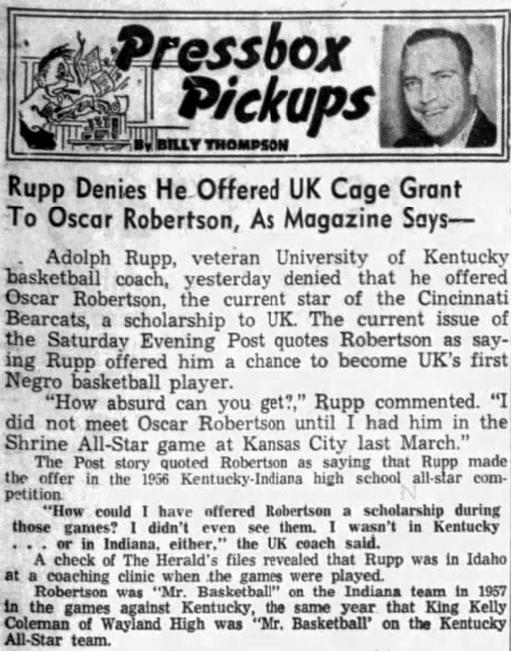 |
| Article from Lexington Herald, December 24, 1959 |
Adolph Rupp was once asked if he would have liked to have had Wilt Chamberlain, the Philadelphia sensation who played for Kansas in the late 1950s. "Sure," Rupp said, "but could I take him to Atlanta and New Orleans or Starkville?" - by Chip Alexander, Raleigh News and Observer, "Remembering Rupp," 1997.
JPS Note: Fitzpatrick as part of his research into his book actually did say that he found evidence the Rupp travelled to Philadelphia to see Wilt Chamberlain play in person.
Fitpzatrick notes it in Chamberlain's obituary [Philadelphia Inquirer October 13, 1999] among other places when he wrote: "His [Chamberlain's] graduation from Overbrook set off a massive recruiting war among some of the leading programs in college basketball. More than 200 coaches, including legends such as Kentucky's Adolph Rupp and Kansas' Phog Allen, came to Philadelphia to woo him."
What Rupp actually said or did during this trip is unknown, given that he hadn't been given the authority to extend a scholarship offer to a black player at that time, but it is interesting nevertheless, and puts to rest the idea that Rupp wasn't familiar or interested in the black talent which was around during that time.
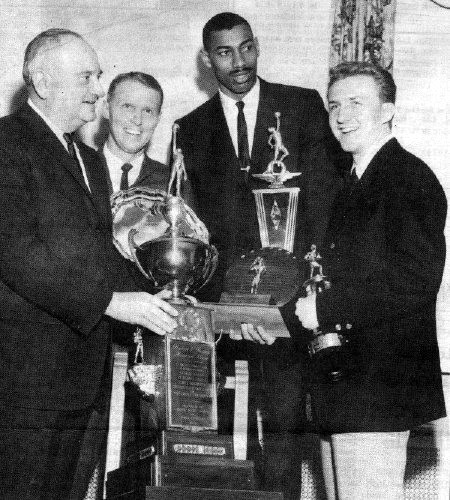 |
When he learned that Mississippi State Coach Babe McCarthy secretly snuck his team out of the state in order to attend the NCAA Tournament, against state regulations, Rupp said, "That took some nerve on his part. Maybe that will wise those people up down there." - Adolph Rupp, Kentucky's Basketball Baron, - JNB
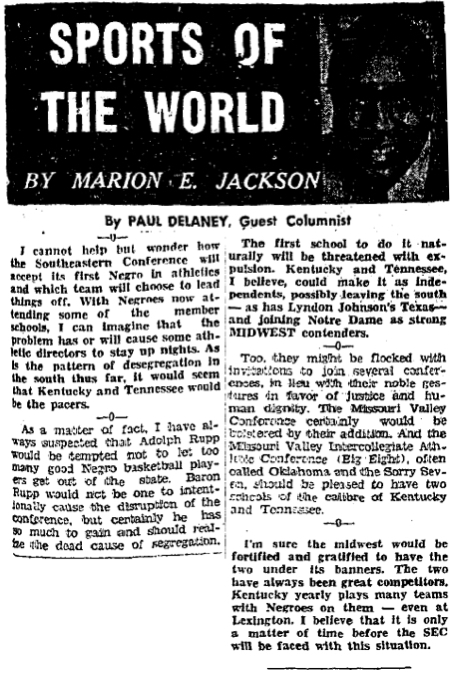 |
In a guest column written by Paul Delaney in August 1960 for the black newspaper the Atlanta Daily World, Delaney stated: "I have always suspected that Adolph Rupp would be tempted not to let too many good Negro basketball players get out of the state." But he went on to acknowledge that such a move would most likely involve expulsion from the Southeastern Conference.
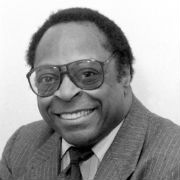 |
For his part, Rupp did become more vocal in public newspapers and magazines with positive comments regarding integration. These, along with other comments by the President of the University, Frank Dickey, at the time inflamed racists throughout the country leading both of them to reportedly receive death threats among other abuses.
The year 1961 saw some obscure but interesting developments in this regard. On March 9 of that year, sports columnist Fred Russell of the Nashville Banner newspaper mentioned an interesting rumor he had heard (a rumor which happened to be similar to another rumor noted previously which was published over a decade earlier in 1950 by Marion Jackson of the black newspaper The Atlanta Daily World.) This new rumor happened to be published the same day Vanderbilt faced Kentucky in an SEC-playoff game held in Knoxville TN.
The article contained daily musings of Russell, in this case the article was entirely concerned with the Kentucky-Vanderbilt game that night. Of particular interest was a rumor that two black athletes from Lincoln High in Louisville were preparing to enter the University of Kentucky (and thus upsetting the status quo of segregated athletic teams in the conference.)
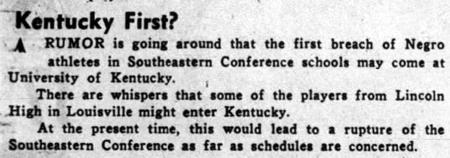 |
The fact that the school referred to is most certainly incorrect does call into question the accuracy of the entire rumor. This includes who had mentioned it, where it started and whether there was anything of substance to support it. In addition whether there might have been an alternative purpose (such as putting out a feeler as to the reaction). Unfortunately none of these things are answered in this snippet.
The timing of the remark [i.e. mentioned at a time when Kentucky and Vanderbilt (the school Russell covered)] along with the subject matter strongly suggests that it's likely the information came through Kentucky channels. Another blurb in the same article noted that both Kentucky and Vanderbilt were being housed in the same Knoxville hotel, the Farragut, which further supports this idea. Whether it was Rupp or someone else who provided the rumor, again is not answered.
If there was some substance to the rumor, if you only consider black players in high school in the state of Kentucky in 1961 as potential recruiting targets, there could be a few who might have been considered. Or the targets could have been from out of state. I should note that I had seen reference in the past to players in Illinois who claimed to have been recruited by Rupp during this particular time period but never put much stock into the claims since to my knowledge Rupp was not formally allowed by the school to recruit black players until mid-1963.
For example, Lonnie Lynn, who graduated from Chicago Du Sable High School in 1961 and played collegiately for Wilberforce (OH) then later played in the ABA, claimed in an interview in 1997 that Adolph Rupp recruited him but added "I didn't have those Jackie Robinson qualities," and never went far with it. ("The Education of Lonnie Lynn," Denver Westword News, August 21, 1997.)
Previously I didn't include this type of information on this page because I doubted its authenticity because it was prior to 1963 and found no corroborating evidence, however in light of the above, perhaps this was what was being referred to?
Fred Russell's comment seemed to pass by the general public's notice. But just over a month later in late April, another similar comment (this time attributed directly to Rupp) made national noise. This led to a strange series of events played out in Atlanta and Birmingham during spring of 1961.
"One of the oddest incidents concerning Rupp and integration occurred early in 1961 when he told the Atlanta Journal that the two best black high school players in Kentucky would be joining his team the following year. The stunning comment shook the segregated SEC. Rupp, who once claimed he'd "say anything for a column," at first denied making it, then said he merely had been testing the waters." - by Frank Fitzpatrick, And the Walls Came Tumbling Down, Simon & Schuster, 1999, pg. 133.
What Fitzpatrick was referring to was an article young Atlanta Journal reporter Gregory Favre wrote about Adolph Rupp as he was attending a basketball banquet for the local Oglethorpe team. Below is Favre's remembrance of the events, forty-five years later. ("The Real Glory Road, Coach Rupp as Source," Poynter Online January 13, 2006.)
|
Let's go back again. To 1961 in Atlanta. I was a young assistant sports editor of The Atlanta Journal, young enough to still have hair. Coach Rupp came to town to speak at the basketball banquet at Oglethorpe University, home to a small college team coached by a man named Garland Pinholster, who that same year would schedule a home game with the University of Rhode Island and play the first integrated college basketball game in Georgia's history. And when Charles Lee, an All-Yankee Conference player, fouled out late in the game, the Oglethorpe crowd gave him a standing ovation. But back to Rupp. In a conversation on the way to the banquet, I asked Coach Rupp when the end of segregated athletics would come to the Southeastern Conference. My story the next day quoted him as saying that it would happen "when I turn my hand." "Many schools in our league," Rupp said, "allow their teams to go off on strange grounds and play against Negroes, but they won't allow integrated competition on their home soil. What will these schools do if I bring an integrated team into their cities to play? If they refuse to play me, then they will just have to forfeit, according to the rule, and I will take all those easy victories I can get." "There may be some schools that will refuse to play Kentucky if we have an integrated team, but if they do, those schools don't belong in our league." You can imagine the wave of reaction that caused in the South. By the time Rupp arrived in Birmingham, Ala. for another speech the day of publication, he was met by a herd of reporters. And what did he do? In print he was quoted as saying, 'How ridiculous can you get? Why the kid [that's me] knew I didn't mean for him to write that. It's a ridiculous story. There's nothing to it. I absolutely deny such a story.' And his athletic director, Bernie Shively, said Kentucky was planning no change in its policy of not recruiting black athletes. But there's more. The phone rang that day and it was Coach Rupp. And what he said has never escaped from my memory bank. 'Kid, I know I told you those things, but I am catching heat. How about just telling people that you made a mistake and that you misquoted me?' This kid politely said no. Well, maybe not so politely. (by Gregory Favre, "The Real Glory Road, Coach Rupp as Source," Poynter Online January 13, 2006.)
|
Favre does a good job recounting the events leading up to the story. Below was the article, which was published in the April 26, 1961 Atlanta Journal.
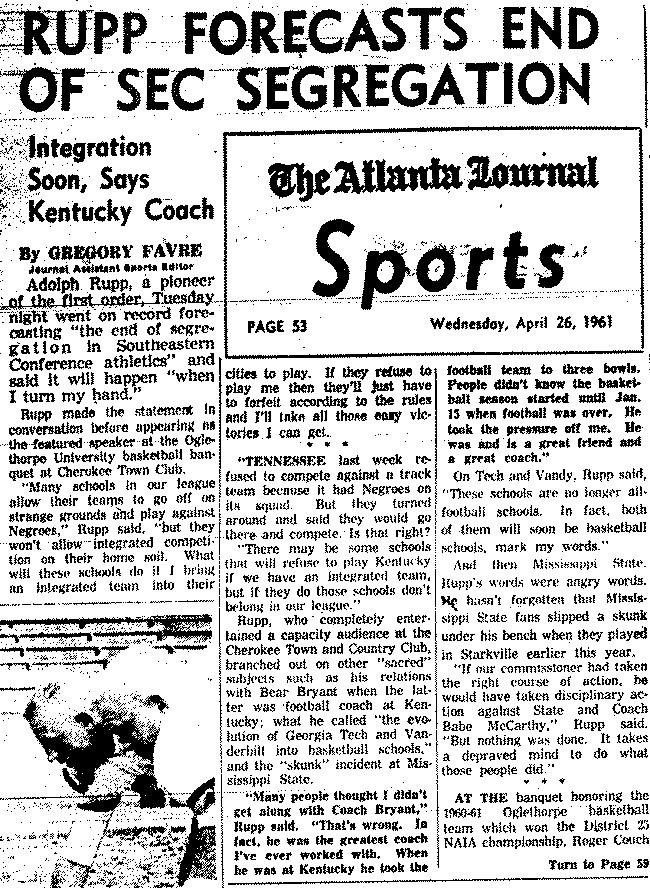 |
As mentioned, Rupp's next stop the following day was in Birmingham where he was met with a barrage of questions from reporters about the issue of potential integration of the league. (The reporters were apparently tipped off by the Atlanta Journal's newswire, because by the time the story was actually published in the paper on Wednesday the 26th, there were also two other stories in the same paper which were in response to it, one from Rupp and the other from UK President Frank Dickey.) Rupp clearly was not prepared for the firestorm (and also likely surprised that some of the comments that he mentioned which he assumed were 'off-the-record' made it into print) and his first impulse was to deny it happened (although specifically what he denied isn't exactly clear, per below).
It should be noted that in the Atlanta Journal article about Rupp's response (on April 26), they mention that Rupp denied the story and that he denied the mention of his use of "when I turn my hand". Other articles in other papers around the country at that time specify that Rupp's objections to the Favre article concerned the aspect of Kentucky planning on signing two black players. Apparently an earlier edition of the Journal suggested this to be the case, which Rupp denied, instead saying that UK having black players on its team was a hypothetical case. The second edition of the Journal that came out later that afternoon (and which apparently is what is provided above) removed the mention of Kentucky signing two black players.
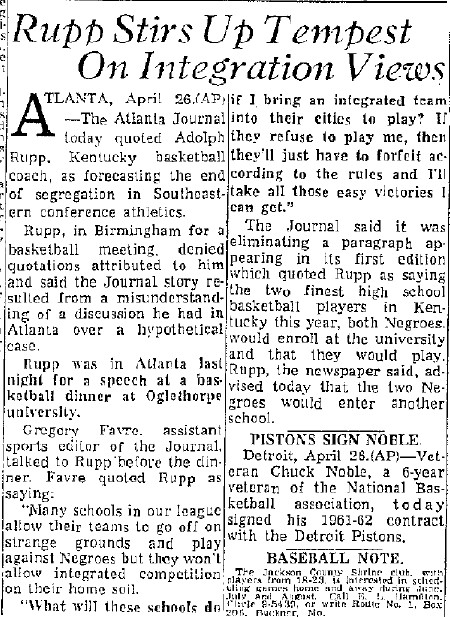 | 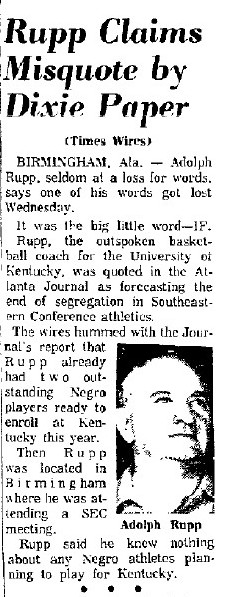 | 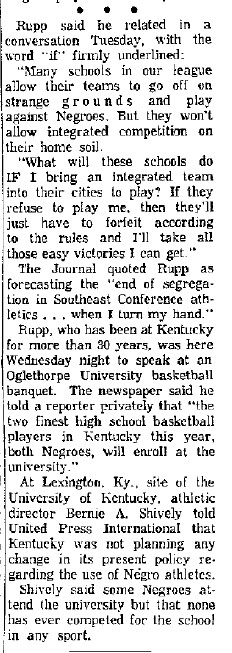 |
In Birmingham, Rupp said:
"The whole things is a big misunderstanding - an unfortunate misunderstand. We are not enrolling any colored boys in sports at the University of Kentucky.
"We were just sitting around doing a lot of talking at random - using a hypothetical case. We were talking about what would happen." - AP, Birmingham News, April 26, 1961.
The following day the New Orleans Times-Picayune sports editor, Benny Marshall, had interviewed Rupp and wrote a column about it. The first issue he brought up was the breaking story. Wrote Marshall:
Many of them come creeping, in quiet times, unsuspected, unbidden. A word, a sentence suddenly meaning much more. It was one of these that was here yesterday. ADOLPH RUPP had come to town for a meeting of Southeastern Conference basketball coaches. Whether you admit it or no, whether you admire him or the reverse, Rupp of Kentucky IS basketball. Thirty years, half of this man's lifetime, have been spent teaching the game, building victories, and carrying the message. So we sat yesterday, late, in the hotel room; Rupp to be interviewed, and the one who would interview him. "Come on over," he'd said. "It's Room 1103." Rupp learned long ago that if the message is to be gotten about, newspapers are the best carriers. - It was dropped In a sentence, he'd dismissed the business out of Atlanta - quickly denied - which had Kentucky breaking the color line in SEC athletics. "Let's drop that one," Rupp requested politely but firmly. Forthwith, it was dropped. (by Benny Marshall, "One great cheer and Rupp to go," Birmingham News April 27, 1961.) |
Below are some responses to the event, first by then-UK President Frank Dickey, who it was known had been working behind the scenes trying to bring about integration to the SEC, but had met resistance along the way. Dickey is said to have related that "if a Negro student-athlete wished to participate as a member of a Kentucky team, and was good enough to make the team, he would not be discouraged. We are talking about something that hasn't happened," Dr. Dickey said, "but should it happen, we would hope the other members of the conference would see fit to compete against our teams."
It is noteworthy to compare the responses of Dickey (who suggests that although UK was not actively trying to integrate at the time, they would be open to it) against that of Athletic Director Bernie Shively (above), who stated that UK did not have any intention of changing its policy regarding lack of integration of its athletic programs. Obviously not everyone in the athletic department and University were on the same page with regard to this issue.
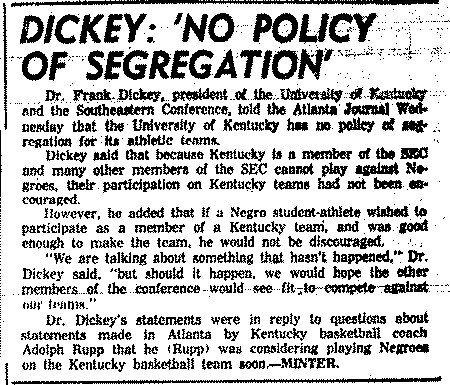 |
To be complete, below is Favre's response the following day commenting on Rupp's denials as compared to the comments by Dickey, along with standing behind the information in his earlier story.
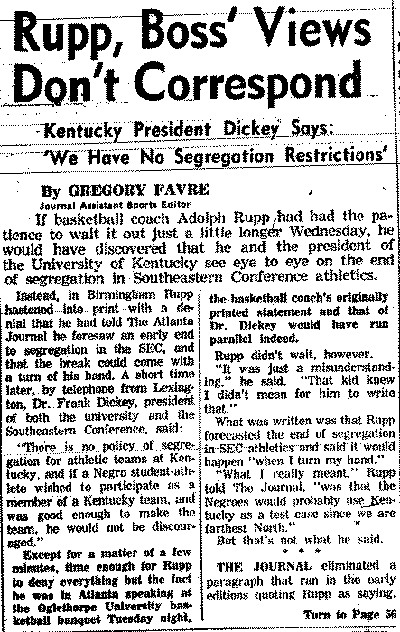 | 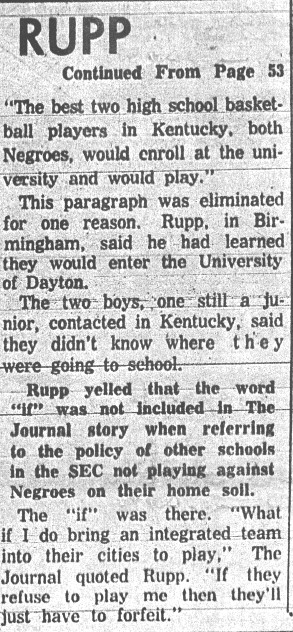 |
JPS Note - I think this whole episode was a very interesting one. Obviously Rupp could have handled it better, and was caught off-guard by the extent of information which was in Favre's original article and the after-effects. As mentioned previously, it is known that during this time period Rupp did receive a number of death threats over his suggestions regarding the integration of UK's basketball team; such threats likely happened in response to this particular episode.
Some certainly will look at this episode in a negative light as an example of Rupp shrinking from the fight at a time when he could have been a stronger leader. They certainly have a point. Conversely, some could look at the episode as a positive one for Rupp, in that at least he was actively discussing the issue (whether he intended for the discussion to be made public or not) at a time when his contemporaries weren't involved in the debate. In addition, at least to the national press Rupp was not denying that he was contemplating a scenario where UK had black players and brought them to the South to play. I think there's a little bit of both at play. As with many of these historical events, people can view it in different ways depending on their frame of reference.
Overall, I think I agree with the commentary by John Whitaker (below), where he suggests that Rupp was 'throwing out a feeler or trial balloon to check reaction in the deep south ... hoping, possibly that desegregation of sports in the SEC could be accomplished some time before the year 2,000 A.D.'
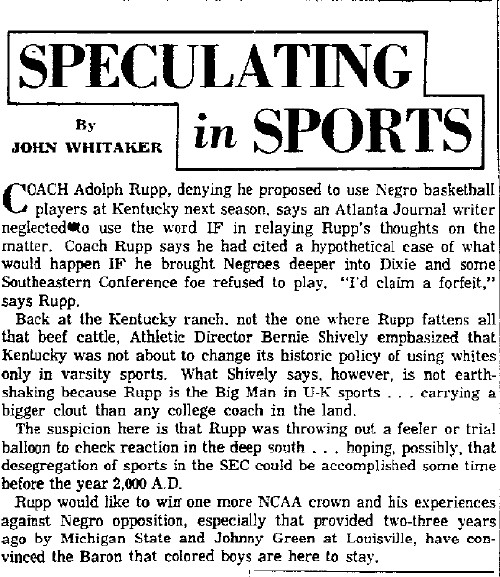 |
Regardless of the intent of the episode in the spring of 1961, the event did serve to at least open up some dialog and publicly revealed UK President Frank Dickey (and a lesser extent Rupp) as someone who was not adverse to the prospect of integration of the UK athletic teams. Later that year and in successive years, Dickey was able to further define UK's stance on the subject and set the stage for a formal initiative to accomplish just that.
The Lexington Leader, December 15, 1961 (by Larry Van Hoose) University of Kentucky President Frank G. Dickey today expressed interest in recruiting Negro players for Wildcat athletic teams, but said that the school should not drop out of the segregated Southeastern Conference. The president's remarks were published today in the Kentucky Kernel, the school's student publication. "It is just a matter of time" he said before Negro players participate in SEC athletics. Some Southern state prohibit, by law, their universities from engaging in athletic competition with teams that are integrated. The UK president obviously referred to this when he commented: "You know - and we do too - what the outcome would be if we had Negro athletes on our teams at the present time." Dickey said contracts with various schools in the SEC already have been made through 1966. "First, we should stay in the conference. Second, along with other institutions, it will be inevitable that we integrate our athletic teams, as well as other university programs," he said. Dickey's suggestion referring to Negro players was the first public statement by any school official that UK is willing to use Negro athletes. "The most effective method of bringing about integration of SEC teams would be through a joint movement of the SEC universities. I don't think it can be done by any one school." Dickey told the Kernel writer, adding that UK would not attempt to force the other schools to bring this about. Dickey's comments came during a meeting with a journalism class at UK. He told The Lexington Leader today that although the Board of Trustees met Tuesday this subject had not been discussed. Neither Dickey said, had he discussed this with the Athletic Board. |
The Kentucky Kernel, December 15, 1961 (by Kerry Powell (Kernel Managing Editor) It will be "just a matter of years" until Negroes begin competing on Southeastern Conference athletic teams, Dr. Frank G. Dickey, University president, said yesterday. "I hope the University can be one of the leaders in bring this about," the president added. His remarks were made during a press conference with News Reporting 501, a School of Journalism class. "The University has done one of the most outstanding jobs of integration in all the nation," President Dickey said. "Negroes were first admitted in 1948, long before any other Southern state made this move, and long before the 1954 Supreme Court decision," Dr. Dickey said. "We have moved slowly and quietly in order to eliminate difficulties experienced elsewhere," he added. "We have made real progress but now there is a pont beyond which we could knock out the props from everything we have done. "You know - and we do too - what the outcome would be if we had Negro athletes on our teams at the present time. "We have contracts with teams extending through 1966. Some of these teams will be extremely slow in integrating. And we can't just drop out of the Southeastern Conference - that would be a violation of contract." The president said he believed the most effective method of bringing about integration of SEC athletic teams would be through a joint movement among the SEC universities. "I don't think it can be done by any one school," Dr. Dickey said. "Still, it would not have to be unanimous. I should think five or six schools would have enough power to pull it off." President Dickey was also asked if he thought Medical Center expenses were hurting the growth and development of the rest of the University. . . . |
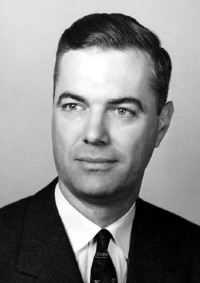 |
"I think there was only one school at that time that said 'yes we will go along with you on this.' The others said, 'if you do move in that direction, we're going to have to drop you from our schedule, because we cannot guarantee that when you come to our homecourt that you will be safe, or that you would be at any sort of welcome.' They said, obviously, Afro-Americans on their squad would have to sleep and eat someplace else, and they didn't think that was good; and we didn't either." - Frank Dickey, Adolph Rupp: Myth, Legend, Fact, WKYT, 2005.
"It was a time when we wanted to move faster than we were able to. Let's put it that way. And that's always a distressing sort of situation." - Frank Dickey, Adolph Rupp: Myth, Legend, Fact, WKYT, 2005.
In the spring of 1963, Dickey took advantage of editorials and a poll done by the UK student-run newspaper The Kentucky Kernel to formally bring up the issue of integration of Kentucky's athletic programs to the Board of Trustee's meeting. The editor of the paper, Jack Guthrie, was present to give a presentation of their poll which found that of 132 students questioned, 59 percent favored integration of UK's athletics, while 21 percent opposed and 20 percent offered no opinion. Of the 59 percent, 8 percent would change their minds if integrating UK's athletic programs resulted in a withdrawal from the Southeastern Conference.
A motion was passed to transmit to the Athletic Association Board of Directors to give 'full consideration' be given to integration and a recommendation be made.
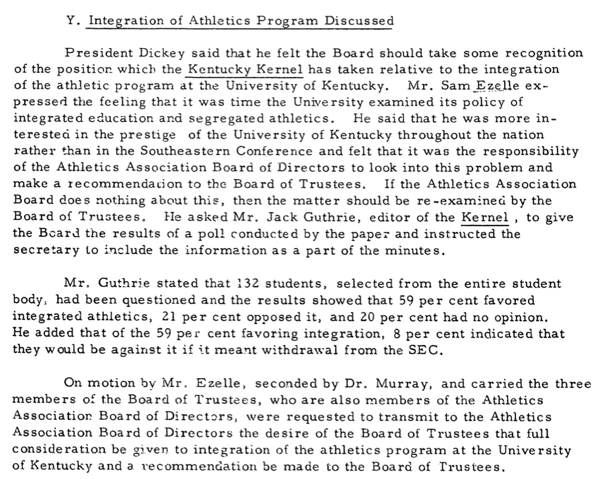 |
It was this step by Dr. Dickey which for the first time formally initiated the process towards formal integration of Kentucky's athletic programs. After that step, the pace picked up fairly quickly although Dickey himself was not present to witness the change. He resigned the office, effective July 1 1963, to become the first executive director of the Southern Association of Colleges and Schools.
Georgia Tech, Tulane Ease Racial Ban - Mississippi State Qualifies Reply LOUISVILLE, April 12 (AP) - Officials of two Southeastern Conference schools said today, in replies to questionnaires, that their athletic teams would be permitted to play against Negroes at home or away. Mississippi State, also a conference member, said it would not play against Negroes at home. It had no comment whether it would play against integrated teams on the road, although the Maroons' basketball team broke tradition this year and met integrated Loyola of Chicago in the National Collegiate tournament. Separate questionnaires were sent to all conference schools by the University of Kentucky, which is considering integration in athletics, and by the Louisville Courier-Journal. Georgia Tech and Tulane said they would play against integrated teams at home or away and would continue to schedule Kentucky if it desegregated athletically. Negroes have attended Kentucky for several years. Direct Answer Avoided Chancellor Alexander Heard of Vanderbilt would not answer the questions directly but said: "It is public knowledge that in recent years Vanderbilt has played against integrated teams." Howell Hollis, the acting athletic director at Georgia, said the questionnaires were referred to A.C. Aderholt, the university president, who was out of town. However, the State Board of Regents governs both Georgia and Georgia Tech, and Georgia's reply is expected to be the same as Tech's. Dr. Wayne Reitz, the president of the University of Florida, said, "It is impossible to comment on speculation about possible changes in policy." However, Florida played an integrated Penn State team in the Gator Bowl last season, winning 17-7. Officials at Louisiana State and Tennessee declined comment. No answers were received from Alabama, Auburn or Mississippi. Kentucky's questionnaire, which Athletic Director Bernie Shively said he ordered, asked: 1. Does your school play racially integrated schools on your campus? and The Courier-Journal's questionnaire asked: 1. Would your school have objections to playing against integrated Kentucky teams at Lexington? One Question Unanswered Mississippi State had no comment on the newspaper's third question. The school's basketball team was eligible for N.C.A.A. tournament play three times before this year as the conference champion but was kept home. This year, Dr. D.W. Colvard, the Mississippi State president, and the State Board of Athletics allowed the Maroons to compete against Loyola, which started four Negroes, despite opposition from Gov. Ross Barnett and other state officials. Loyola beat Mississippi State and went on to win the N.C.A.A. championship. Negroes have competed in all major football bowls in the South, although the Sugar Bowl at New Orleans is now segregated. There is no Southeastern Conference rule against integrated athletics. The issue of athletic integration at Kentucky came up after an editorial in the Kentucky Kernel, the student newspaper, advocated a change. The university's athletic board has been directed by the board of trustees to study the matter and has scheduled a meeting for April 29. (The New York Times, April 13, 1963.) |
LEXINGTON, Ky., April 29 (UPI) - Directors of the University of Kentucky Athletics Association today issued a formal statement saying they favored integration of athletics, but within the framework of the school's Southeastern Conference membership and obligations. Kentucky has had Negro students since 1954, in relatively small numbers, but none ever has competed in athletics. The statement issued by the board, after a meeting of more than three hours, contained these points: * The board favors equal opportunity for all students to take part in University of Kentucky athletics as a matter of principle and policy. * The board believes that the university, in implementing this policy, should make every effort possible to preserve its membership in the Southeastern Conference * The board believes integration of University of Kentucky teams can and should occur at the earliest possible time, taking into account her conference obligations. No interpretation was offered of such phrases as "every effort possible to preserve its membership in the Southeastern Conference," or "integration .. should occur at the earliest possible time, taking into account her conference obligations." The director of athletics, Bernie Shively, in recent weeks has been surveying the other 11 conference members to determine what attitude they would make toward integrated Kentucky teams. Results of this survey have not been disclosed. Several conference schools, including Georgia Tech, indicated publicly, however, they would not object to playing against Negro athletes. Others, including Mississippi and Mississippi State, were regarded as certain to have objections. (The New York Times, April 30, 1963.) |
ACTION FOLLOWS POLL OF LEAGUE Georgia Tech and Tulane of Southeastern Conference Offer No Opposition LEXINGTON, Ky., May 29 (AP) - The University of Kentucky today became the first school in the Southeastern Conference to open its athletic program to all races. The school's athletic board saids its athletic teams immediately "will be open to any student, regardless of race." Kentucky's student body has been integrated for a number of years, but no Negro ever has played on a S.E.C. team. Bernie Shively, Kentucky's athletic director said "that any student enrolled in school who wants to come out for an athletic team can come out." Kentucky's athletic scholarships already are committed, and it cannot recruit again under S.E.C. rules at least until next December. The board's announcement came after a three-hour meeting at which Dr. Frank G. Dickey, the university president, reported on his discussions with presidents of other conference schools. Last month, the board asked Dickey to poll other conference schools about integration of athletics. One board member said the announcement amount to "no change in university policy." He added: It is our feeling that the Supreme court decision called for integration of all facilities and ours have been open, in effect, all the time." School Paper's Stand The question of integrated athletics was raised two months ago by The Kernel, Kentucky's student newspaper, which called on the university to desegregate its athletic teams, even if it meant withdrawing from the conference. The other conference schools are Tennessee, Vanderbilt, Mississippi, Louisiana State, Tulane, Florida, Mississippi State, Georgia Tech, Alabama and Auburn. In questionnaires sent out last month by Kentucky and a Louisville newspaper, officials of Georgia Tech and Tulane said they would play against integrated teams at home or away. Mississippi State said would not play against Negroes on the Mississippi campus and had no comment about road games. Kentucky officials indicated they had received replies from other schools but declined to give their contents. (The New York Times, May 30, 1963.) |
JPS Note - Kentucky had hosted a black opposing player in an exhibition since 1948 (Don Barksdale) and had hosted a black opposing player in a regulation game since 1951 (starting with Solly Walker), with numerous other black opposing players coming to Lexington to face UK thereafter, including powerhouses such as Temple, DePaul, Notre Dame and Illinois. It is noteworthy that at the time these surveys were sent in 1963, no other SEC school had ever hosted an opposing black player on their campus. According to an article in the Dallas Morning News ("Carlisle Signs with Packers," January 14, 1964), the first time an SEC school other than Kentucky hosted an integrated basketball team on their campus was Tennessee, who met the Fort Knox (KY) squad in an exhibition game in 1964. The Volunteers lost the game 96-56. It is not clear when the first regulation game was held against an integrated team by any SEC school (again other than UK who was well ahead of their conference brethren in that regard by more than a decade). It is also noteworthy that these questionnaires went out in April 1963 while Frank Dickey was President at UK. Some have incorrectly assumed and stated that Kentucky didn't make any movement on race until Dr. John W. Oswald (who succeeded Dickey as President) came to Kentucky. In actuality, Oswald accepted the postion in late May of 1963 which came well after the questionnaires had been formulated and sent, and in fact Oswald didn't arrive in Lexington until September to begin the Fall term. The editorial in the Kentucky Kernel newspaper can be read here.
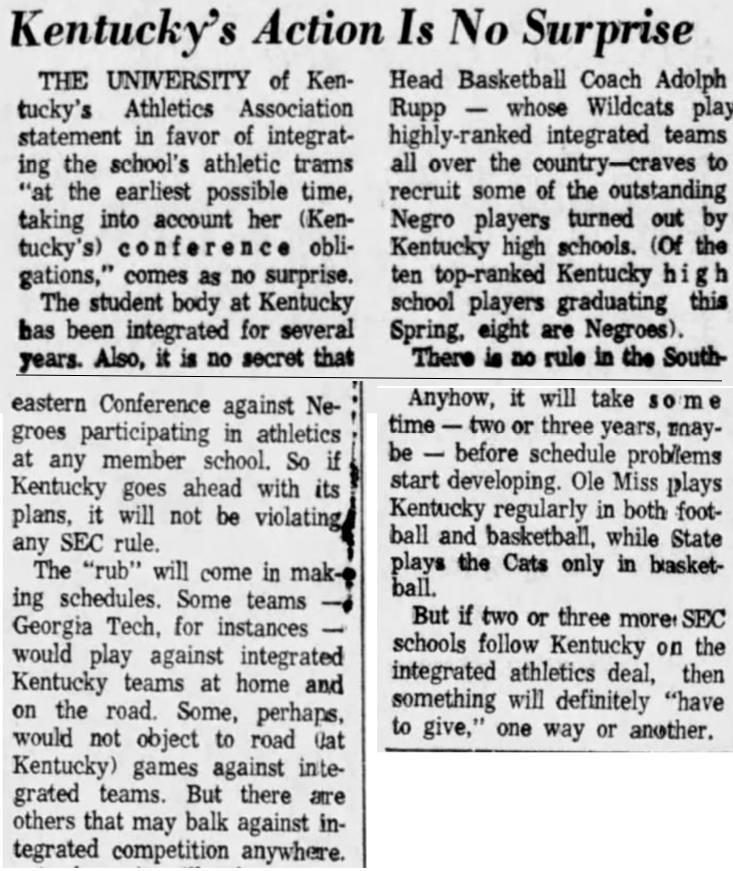 |
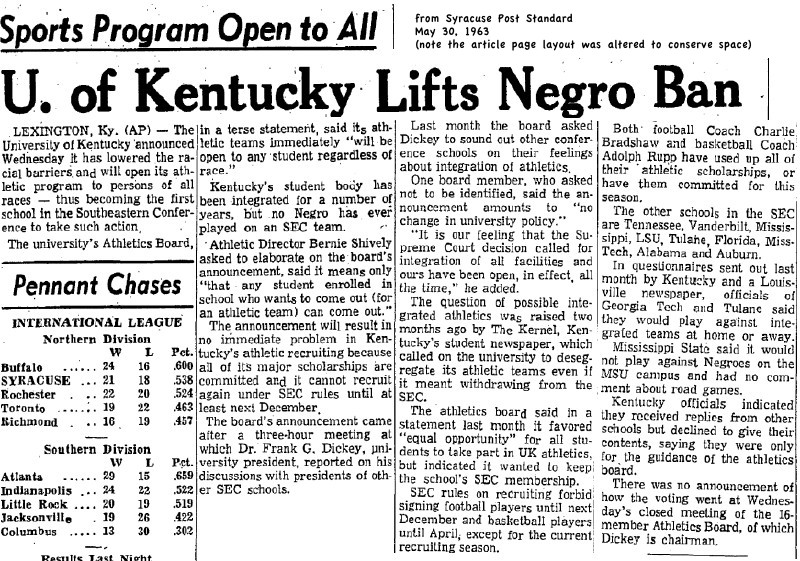 |
The Lexington Herald, April 1, 1963 by John McGill CONFERENCE PROBLEMS -- It seems improbable that the Southeastern Conference will be damaged seriously by the current investigation of Wallace Butts and Bear Bryant. The greater problem as far as the conference is concerned lies with integration of Negro athletes. Kentucky has signified willingness to take the lead in bringing about the revolutionary change. First will come explorations to determine what, if any, support is forthcoming. Then would come the task of negotiating with the schools that are known to opose the idea. Take the NCAA-AAU squabble, multiply it a few times and you have an idea of what will happen. The courage of Daniel Boone still lives in our fair Commonwealth ! The question has been discussed in the SEC ranks - but never formally. A prominent conference coach offers this guess: "If and when the SEC requires participation against negro athletes, eight members will withdraw and form a rebel conference. These schools would be Mississippi, Mississippi State, Alabama, Auburn, LSU, Tulane, Georgia and Georgia Tech. Tulane and Tech might be quuestionable. I hope this will not happen but it is my guess that it will. I don't think some of the schools, such as those in Mississippi, will ever accept the idea." The coach said that such a move would be particularly hard on Florida, removing traditional rivals. Such a withdrawal would pave the way for a "new" SEC, with Miami, Fla., Florida State and Memphis State among candidates for membership. Another high school in the SEC was asked. "What would be a good guess on the time it will take to integrate conference athletes?" The answer: "Ten years. That is, for complete adoption." SEC Commissioner Bernie Moore was asked the same question. He said he had no knowledge or information on which he could base an answer. He agreed that it would depend on individual initiative of members rather than the conference as a whole. After Kentucky's role in the proceedings is mapped by the athletic board, further action must come from university presidents. Basically, coaches and athletic directors will not make the decisions. It promises to be an interested situation. The SEC can lose national prestige only by continuing its present course, which until this season has included the unhealthy habit of the championship basketball team declining to play in the NCAA. This promises to be a year-to-year problem under the existing circumstances. Kentucky has placed the good of the SEC at least equal to its own interests. Now it remains to be seen whether schools such as Mississippi State will do the same. The coach previously mentioned also had this to say: "Aside from the issue of color, we are seriously limiting our recruiting program. We are losing good boys to other sections of the country. The colored athletes would help us more in basketball than in football. Really, basketball is the colored boy's game. He has the quick hands and springy legs. It also gives him a chance to excel and be somebody. You see the results. Seven of the 10 starters in the NCAA title game were colored. You know, they not only jump higher, but they seem to hang up there in the air!" UK's Adolph Rupp must have thought the same thing as he watched Tom Thacker, Jerry Harkness of Loyola and Bill Green of Colorado State work out prior to the East-West Game. He jokingly proposed a new rule: "If any of these boys jump and stay up more than three seconds, award the ball to the other team." Once the integration movement starts - and there would be no point in starting if it were not sincere - then it may become a question of whether the SEC is wiling to be dominated by certain schools. Not all Kentuckians favor the new move. And perhaps not all UK officials relish their task. But it is inevitable and perhaps the real questions are those of fairness to the individual and whether the SEC is to escape the tag of a "backward" conference. Rupp was in Huntington, W. Va., several years ago for a youth basketball convention and national tournament and delivered one of his highly entertaining talks. He also had a press conference which was attended by several writers from big city newspapers. A Philadelphia writer was telling the UK coach about a fellow named Wilt Chamberlain and how great he would be in college. Eventually it was suggested that Rupp should be interested in Wilt. "If we signed him, what then?" Rupp asked. "We couldn't take a colored player to New Orleans, Atlanta or Starkville." Kentucky is a member of a powerful conference. It has been correct in rejecting the idea of withdrawal. However, we've often wondered how many state universities could afford to ignore the possibility of signing a 7-foot phenomenon from the home state. How about Negro stars this season? Wichita's Dave Stallworth, who almost single-handedly dealt Cincinnati its only regular-season defeat, is from Texas; two starters on the championship Loyola team came from Tennessee; Cincinnati All-American Tom Thacker is from Covington, KY., and Colorado State standout Bill Green is from Alabama. There must be many other examples. |
In the fall of 1963, an Associated Press article (published in the Lexington Herald) mentioned that Rupp was looking at recent events in the Southwest Conference as further support for recruiting black players. While he was evasive and seemed to backtrack when asked about particulars, he obviously didn't have to say anything about promoting the signing of black players if he was against it as his critics claim. It's also noteworthy that this was an Associated Press article, not just a local Lexington story. So the story could potentially have been picked up nationwide, certainly where other schools in the South could see it.
By Kelso Sturgeon The decision of several Southwest Conference schools to integrate their athletic programs will make it much easier for Kentucky to begin recruiting Negro athletes, basketball coach Adolph Rupp said yesterday. Kentucky announced last May that it was opening its athletic teams to persons of all races but has taken a wait-and-see attitude to determine the reaction of other Southeastern Conference schools. Kentucky is one of the strongest members of the SEC, which is rigidly segregated. The conference includes such Deep South schools as Alabama, Auburn, Louisiana State, Mississippi and Mississippi State. Rupp said the decision by Texas, Baylor, Southern Methodist and Houston, an independent, could pave the way for Kentucky to recruit its first Negro athletes in the near future. "We'll just watch the things in Texas and see if they really follow through with this," Rupp said in an exclusive interview. Rupp, who built Kentucky into one of the nation's basketball powers, explained that he felt there is strength in numbers, regardless of how few. It's Rupp's belief that the southwest schools' decisions will lead other members of that conference to follow suit. He feels that because of the strong athletic ties between the two conferences that the few schools which have staunchly segregated athletic programs will have to give in -- possibly not to play Negroes, but to compete regularly against schools which do. Rupp's admission that he is interested in recruiting Negroes comes as somewhat of a surprise to many of his closest observers. Basically it's a matter of Rupp getting tired of seeing the state's fine crop of Negro basketball players go out of state and lead some other college to a championship. "If we can't win with these white boys, then we're going after the Negro athletes," Rupp said. "It's just as simple as that. We want somebody who can get the job done." When asked if he had any specific Negro athletes in mind, Rupp gave an evasive, "How do I know whether I'm interested in any right now. I don't know whether I could use them if I got them." When a reporter asked about the possibility of Wesley Unseld, a 6-foot-7 (1/2) inch Negro basketball star at Louisville Seneca, being the first of his race to play at Kentucky and in the SEC, Rupp said, "I told you I don't know." But the Baron left the impression that Unseld, brother of George Unseld, presently starring at Kansas University, would be a good place to start. Unseld, who was instrumental in leading Seneca to the Kentucky State High School Championship last year, is one of the finest cagers the basketball-strong state has produced in some time. |
JPS Note: A photocopy of this article was sent to me out of a scrapbook. Unfortunately the actual date is not provided, however it probably was in early December 1963, since here is an abbreviated form of the story which was published in the Charleston (WV) Daily Mail on December 7, 1963.
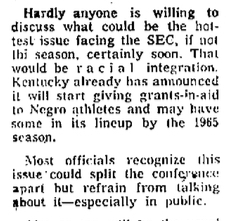 |
"For years he goaded and chafed every Southeastern Conference team that did not give his team a decent contest, and now the league he once called a laughingstock is tough and respected, and he is battling for his life almost every game. He is proud of it. 'Basketball is a good product and ought to be played that way,' he says. 'I believe in preaching the gospel.' An opponent of those 'silly people' at some SEC schools who 'hide behind segregation,' Rupp is not far away from setting another precedent by signing a Negro to a Kentucky scholarship. The reason is, to Rupp, the best possible reason: the Negro is an outstanding college prospect." - by John Underwood, Sports Illustrated, "The Urbane Baron Concocts Another Surprise," February 17, 1964.
The University's policy of actively recruiting players of all races was reaffirmed in a meeting of the Board of Trustees in December of 1965.
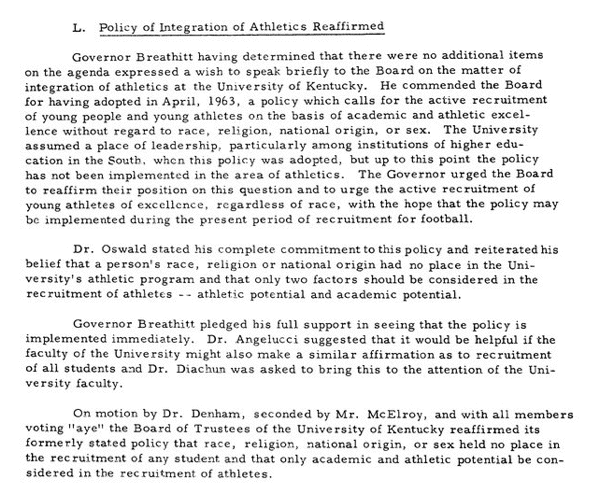 |
Many critics look to the 1966 Texas Western game as a turning point in UK fans and Rupp's attitudes and Kentucky's attempts at recruiting black players, but the truth is Kentucky had already been recruiting black players (albeit unsuccessfully) in the years leading up to the 1966 National Championship game.
If there was a turning point in attitudes towards recruitment of black players, it can more accurately be traced to the 1964 NCAA tournament when Kentucky was ranked #4 in the country and earned a bye into the Mideast Regional in Minneapolis. The Wildcats faced the unranked Ohio Bobcats, who had earlier dispatched the Louisville Cardinals in a tight, two-point victory 71-69. The other game in the regional matched the Michigan Wolverines against the defending national champion Loyola (Chicago) Ramblers, a team which won the 1963 national championship with four black starters.
In the game versus Ohio, the Bobcats raced out to a 10-3 early lead and despite a few flurries by Kentucky, were never threatened. Ohio controlled the boards while Kentucky shot poorly, resulting in a convincing 85-69 upset victory for the Bobcats.
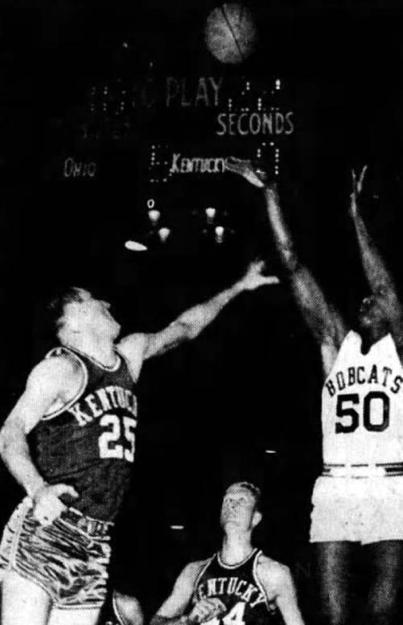 | 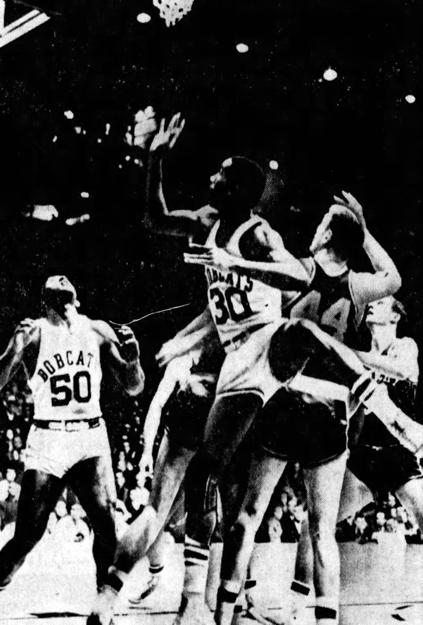 |
After the game, Lexington Leader sports editor Russell Rice directly addressed the elephant in the room which no doubt had been lingering in the minds of Kentucky fans. Wrote Rice:
|
Lip service has been given to integration of athletics at the University, but so far there is no evidence that the color line is about to be broken.
The prevailing attitude: If you're going to compete on a national level, you'd better get some boys who are not only tall, but big. The Negro is the quickest answer. A former Kentucky All-American Vernon Hatton said of the OU team: "They may not be much taller, but they jump about that much higher." His hand measured about 18 inches from the floor. There is no doubt that Kentucky, with its pattern offense, can hold its own with anybody when hitting its shots. In the last two outings - losses to St. Louis and Ohio U. - the Wildcats have got only one or two shots before losing the ball. Ohio U's two forwards and center completely blocked the smaller Cats from the Kentucky goal in the first half. The result: a 29-12 rebounding edge for the Bobcats. Kentucky fared better in the second half, but ended on the wrong side of a 45-38 rebounding ledger. These statistics only take in account individual rebounds. Ohio U. was way ahead in team rebounds. The Wildcats have faced larger teams this season, particularly Duke, but even the Blue Devils don't seem as powerful under the boards as Ohio U. The first name which popped into the mind of the UK fans here was Wesley Unseld, Seneca's 6-foot-8 Negro star. There has been some talk that perhaps Unseld is too slow to play on a Rupp-coached eam. Perhaps speed and savvy come with experience. On the other side of the ledger, Rupp definitely has an eye on two junior college boys with height, weight and go credentials. . . . Back to the integration question. Ohio U. started three Negroes; seven of the 10 Loyola and Michigan starters were Negroes. The more liberal thinking Kentucky fans feel its now or never, and if the coaching staff doesn't make a move to get Unseld or another good, big Negro, the matter might as well be forgotten. ("Upshot of Kentucky Loss: Possible Cracking of the Segregation Barrier" by Russell Rice, Lexington Leader March 14, 1964) |
The following night, Kentucky and Loyola (Chicago) were slated to meet in the consolation game to put a nightcap on the season. If there were concerns after the Ohio loss, they were only amplified after Loyola, as the Ramblers raced to a 100-91 victory. This was only the second time in UK (and Rupp's coaching) history that an opponent had scored 100 or more points agains the Wildcats. It was also the first time Kentucky had lost a NCAA consolation game. In fact the Loyola loss meant Kentucky had lost three games in a row, including a loss to St. Louis prior to the tournament. This was only the third time in Rupp's career that he had lost three straight games. An inglorious end to a once promising season.
During the game, Kentucky shot much better (in fact they outshot the Ramblers scoring 39 field goals on 46.4% versus 31 field goals on 38.3% shooting.) But the Wildcats were again out-rebounded and out-hustled by their opponents.
After the game, Russell Rice once again addressed the issue of integration and got quotes from Rupp directly. From the article:
|
Rupp revealed the (sic) UK in the past few days has written other Southeastern Conference universities, asking if they would provide housing and eating facilities for visiting Negro players. The plan suggested is to (house) athletes in dormitories on campus and feed them in school cafeterias. Rupp said a Negro would have to be treated exactly as a white boy in a Kentucky uniform. "If you couldn't take them where you took the others, it would be a tragedy and humiliation. We're not going to humiliate anybody." He pointed out that Kentucky was the first university in the South to let colored boys play on its floor. "We have a problem in the South, you know," he added. "It may not be solved unless a public accommodations law is passed." Rupp admitted the university doesn't have all the answers. "But it looks as if colored boys will be used in the South in the next few years." The subject was brought up after Rupp noted that Michigan's three big Negroes - forwards Cazzie Russell (6-foot-5-1/2) and Oliver Darden (6-foot-7) and center Bill Buntin (6-foot-7) - "seem to have been cast from the same mold." "If I could find that mold, I would be glad to use it," Rupp said. ("Negro Cagers To Be Sought, Rupp Explains" by Russell Rice, Lexington Herald-Leader March 15, 1964) |
 |
It was at this point when rumors started flying about Kentucky's interest in signing a black player, and in particular Wes Unseld from nearby Louisville, KY. As already described previously on this page, the Unseld recruitment was full of misunderstandings and in the end did not end in Kentucky's favor.
Regardless, the need for Kentucky to integrate in order to compete in the future was never more clear or urgent.
Kentucky was the first team in the SEC to sign black track and football players. Vanderbilt quickly followed suit, as did Florida and Tennessee later. UK attempted to sign Wes Unseld as its 1st black basketball player, but he committed to Louisville, saying, "There was much pressure brought to bear from the black community to do it [JNB note - sign with UK], but there was also pressure brought from many other people that I better not do it." Butch Beard also signed with UK, but he had earlier signed with Louisville and was held to his earliest commitment. - Adolph Rupp, Kentucky's Basketball Baron.- JNB
"He (Coach Rupp) made more trips to visit Westley Unseld, and tried to convince him to come to the University of Kentucky, than he had any ballplayer prior to that time." - Herky Rupp, "Glory in Black and White," CBS, April 2002.
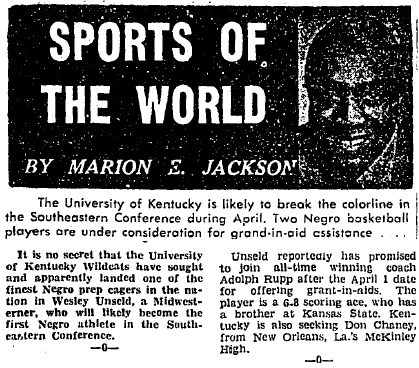 |
In the above article, published in March of 1964, Marion Jackson, sports editor of the Atlanta Daily World reported a rumor that Wes Unseld had agreed to join Kentucky. The article also noted that Kentucky was recruiting another black prep star, Don Chaney of Baton Rouge, Louisiana. Chaney would go on to join Elvin Hayes in integrating the basketball program at the University of Houston.
JPS Note: - Detailed information on the recruitment of Butch Beard and Wes Unseld is included in the sections above. The above is the only reference seen to UK recruiting Chaney as well.
The effort to recruit black players to Kentucky wasn't by Rupp alone, some powerful people, including the governor of the state, tried to assist.
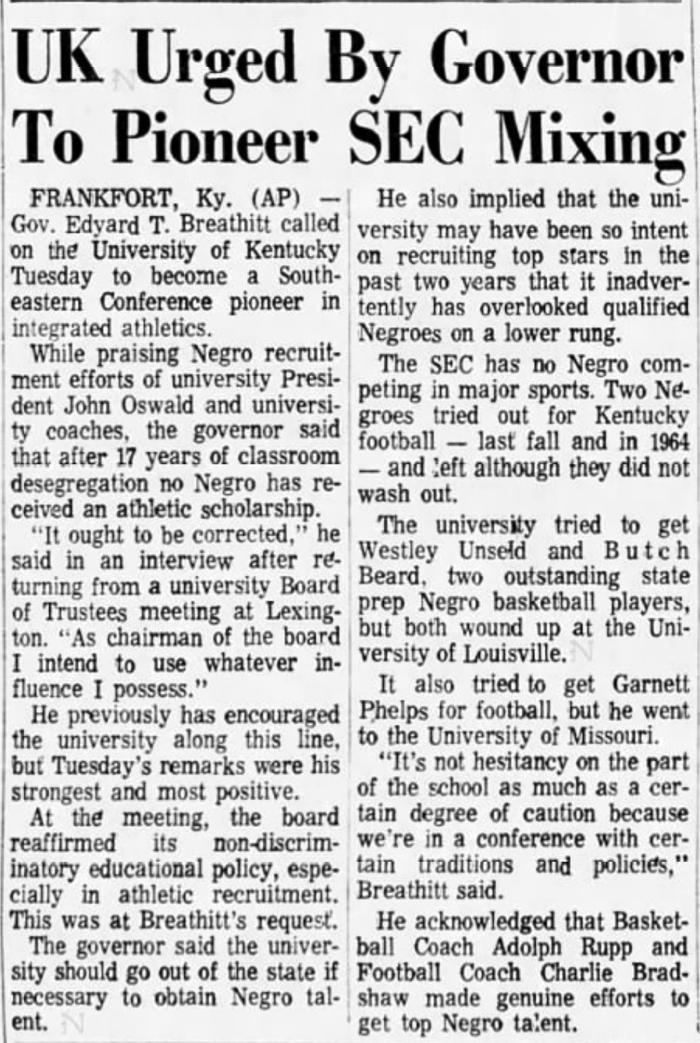 |
But there were also forces working against their efforts. Assistant Coach Neil Reed described a meeting of about a dozen UK boosters who confronted Rupp after he began recruiting Wes Unseld to try to convince him to cease in his efforts.
Another example of Rupp's mind-set during those years can be illustrated by a correspondance between a Kentucky fan and Rupp. In the Fall of 1965, the fan wrote to Rupp complaining about Kentucky's lack of height, and in particular the fact that Kentucky was planning on starting another 'short' center, 6-foot 5-inch Thad Jaracz for the upcoming 1965-66 season. The fan had suggested at least starting Cliff Berger, who had at least three inches on Jaracz.
Rupp personally replied in a letter, not only reinforcing the fact that Rupp himself knew best about who to start and who to not (which was evidenced by the success of the 1965-66 team), but also made it a point to ask for help among UK fans and alumni in terms of helping with recruiting, specifically mentioning Wes Unseld as one example of someone who this fan himself (who lived in Louisville) could have lent a hand in helping to recruit, yet failed in doing so.
|
Dear Mr. Jones: I was glad to get your letter because I want some of our great alumni to get a picture of our problems here at the University. You sign as a "disappointed UK fan". I, personally, am ashamed of you as is every other loyal Kentuckian because we still have a winning record of any team that has ever picked up a basketball. It is because of belly-achers like you that we haven't been able to do better in recent years. I think I know what we need here at the University possibly better than any other coach and one of those things is less criticism and an active participation by some of our alumni to help us get some of the material that you spoke about in your letter. How many boys who are athletes have you brought to the University of Kentucky campus at your expense? How many of their families have you entertained in Louisville and told them about the advantages of coming to the University? Some of the advantages you have apparently forgotten about. Please don't come from Louisville to Lexington to see us play. Go out and see U of L play because they have a boy by the name of Wesley Unseld on that team that we made 13 trips to Louisville to interest in coming to Kentucky. You never raised a hand and before you continue more belly-aching let's get something done on your part to make a contribution to the University that gave you a fine education. We only beat Tennessee three of the last four games in spite of the fact we didn't have a big center. You apparently overlooked this also. Sincerely, ADOLPH F. RUPP Basketball Coach |
JPS Note: Here is a link to the original letter.
"Rupp tried to sign Sarasota Booker star, Howard Porter the next [1966-67] season. Porter also chose not to become Kentucky's first black player. He became an All-America player at Villanova." - by Mike Mersch, Bradenton Herald, "With Luck, Rupp Would Have Been a Pioneer," March 16, 1997.
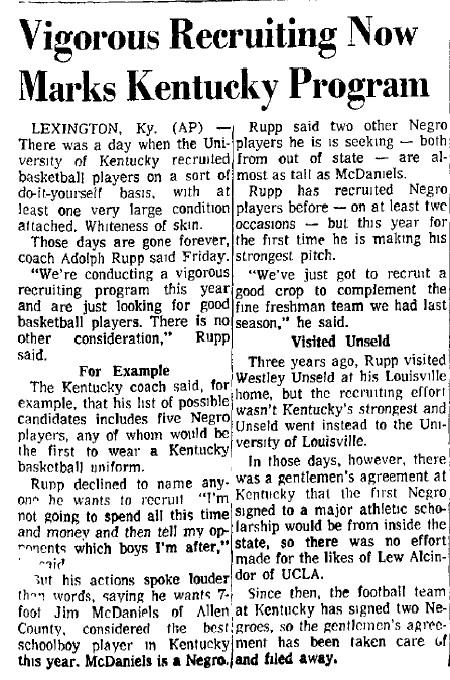 |
Rice said Rupp told him in 1967 that Felix Thruston of Owensboro was coming to Kentucky. But Rupp warned Rice "not to let the word out in case something happened" to change Thruston's mind". Something did happen, although Rice is not sure what. "He signed but ended up going out west. I don't know what happened to him." - by Robert Kaiser, Lexington Herald Leader, "Loyal to the Legend Coach Adolph Rupp's Family Strives to Return Luster to his Reputation Legacy Fades with Memories of Fans," March 13, 1993 pp. Page A1.
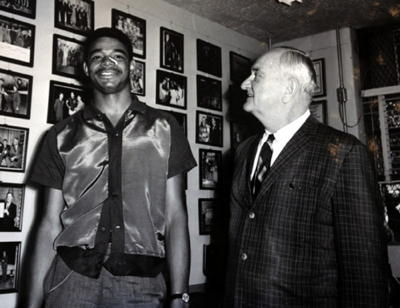 | 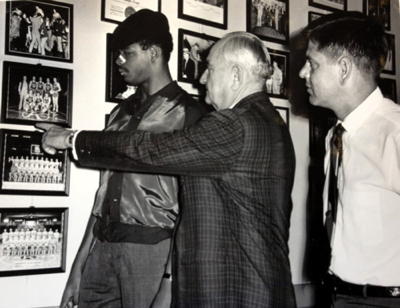 |
"We signed a boy [Thruston] from Owensboro Kentucky, and this boy agreed to come here but before ... ah... we ... as soon as they found out that we had signed him, a school from out of state came and got him. Took him out of the state and didn't bring him back into the state until after he had been at that school and enrolled in school and attended classes. So it was impossible to for us to get him to come here to the University, but that's exactly what happened." - Adolph Rupp, The Rupp Tape (Audiocassette), WHAS Productions, 1992. (![]() Audio Link
Audio Link![]() )
)
JPS Note: A search of Newspaper archives seems to confirm both Rice's and Rupp's remembrances. According to the Owensboro paper Rupp did personally come to Owensboro to recruit Thruston in July 1967. (Rupp Seeks to Recruit Thruston," Owensboro Messenger-Inquirer July 12, 1967). While there was no announcement of Thruston signing with Kentucky in August 1967, a letter to the editor to the Evansville (IN) papers by a Pete Swanson claimed that he did sign with Kentucky in August. (Evansville (IN) Courier, December 17, 1967). Although by that time Thruston had chosen to stick with his earlier commitment to Trinity University in San Antonio, TX where he played under former Vanderbilt coach Bob Polk. So actually if anyone has a trivia question asking who the first black player UK signed to a Letter of Intent, Felix Thurston is probably the answer. It would still be helpful if Felix Thurston or someone close to the family could verify.
"We had another boy [Jim Rose] that wanted to come here from Hazard Kentucky. I do know that he made a trip to Texas to visit a school, he came back to Louisville on a plane and called for the mayor of Hazard to come and get him. The mayor of Hazard went down there and got him, brought him into my office, he sat in here and agreed to come to the University of Kentucky. The mayor was the happiest man that you've ever seen. The next morning, the mayor called me and was beside himself, the boy had signed to go to Western Kentucky. Now tell me that I didn't make an effort to get these boys, we did. We made every effort that we could." - Adolph Rupp, The Rupp Tape (Audiocassette), WHAS Productions, 1992. (![]() Audio Link
Audio Link![]() )
)
As mentioned earlier concerning players Kentucky recruited who ended up going to Western Kentucky, Kentucky had difficulty getting players enrolled in school, both black and white. At the time the Southeastern Conference had internal academic standards in place which were higher than other universities along with the University itself increasing their academic standards, which put a burden on the athletic programs to recruit. Rupp in numerous letters to fans was very frank about the difficulties UK had not only enrolling qualified students, but keeping them eligible. Below are a few letters in response to questions about Kentucky's recruiting circa 1967. These responses by Rupp mention players Kentucky was considering but could not proceed due to academics.
|
Dear Mr. McKay: I was glad to get your letter in regard to prospects. [Howard] Porter has signed with Villanova. We were there to see him four times and spent considerable time and money but it takes more than that to get these good boys. Gene Phillips of Houston was here this past weekend. Rudy Benjamin's grades will not permit him to come. We think we are getting along nicely with out recruiting program. Sincerely Adolph F. Rupp Dear Mr. Harrington: I was glad to get your letter and enjoyed reading it. [Randy] Poole (sic) is not playing because he was ineligible last year and fell behind. [Bill] Busey is not playing because we have four guards bigger than he. Bobby Washington couldn't get into school here. A lot of these kids are turned down by the Registrar, not by us. It is nice hearing from you. Sincerely, Adolph F. Rupp |
|
According to Rupp, academics was an issue that was posed a difficult issue to crack. In an audio interview on October 28, 1971 Rupp noted about President Oswald his unwillingness to relax the increasing academic standards at the school for athletes, including black athletes and students:
"Now, remember the academic standards have been gradually going up here at the university. [Herman] Donovan was the first to suggest this, and [Frank] Dickey, of course, also wanted to raise the academic requirements, feeling that the university should, in a sense, be the model for the entire state of Kentucky. Now when Dr. Oswald came in, the Wildcat Club, and some of the others downtown, The Quarterback Club, I believe, was a club that was organized at that time, felt that we've got a man now that played football. And he certainly understands football better than these other fellows that never played football that have been presidents of the school. It was true that Dr. Oswald did play some football at DePauw University, but he got his greatest recognition by being selected by Sports Illustrated, twenty-five years after that, on the silver anniversary, I believe, for men who participated in football that were selected on the All-American team as having achieved great distinction. And, naturally they felt that they now had a man in there that they could go up to and say, "Listen, we've got to lower these standards, and we've got to get some football players in here from Pennsylvania, and some of these other coal mining areas, where they really have bigger football players." ..... And The Quarterback Club felt that the standards, the entrance requirements should be lowered, and that would be the way to build a football team. They had some support, too, out here on the campus. But, they didn't realize that Oswald was as tough on these academic requirements, because he came here with only one idea in mind, and that was to even increase the reputation of the university as an academic institution. In fact, he got in bad right away, and we might as well say some things here, because I'm not going to mince any words. . . .
...Now, I say he would not lower the standards but raise them. But--and, continued to do that.....
...Now, you're integrating, and you're allowing the Negroes to come to the university, but owing to the poor academics that you have furnished these people up until now, they couldn't pass these rigid entrance requirements that we have imposed on them here. Now, let's see, where does that leave us? We're making a bonafide effort to get these boys here, to play for us. But we can't get them in the school. And so the coaches are getting the blame for not integrating the teams."
JPS Note: It is noteworthy that today, even though most schools try to deny it, there are regularly allowances given to athletes who would not otherwise be admitted to the school under their normal admission requirements. In fact, it's been shown numerous times at nearly every school that the only admission requirement that matters is the one that the NCAA itself puts in place. This is true at Kentucky, at North Carolina, at Duke, and at nearly every other major school one cares to mention.
Many critics of Rupp like to cite President Oswald's influence in favor of integration of the school, even though by his own admission he quickly tired of making any personal efforts in terms of helping the coaching staffs in recruiting black players. The one area in which Oswald could have made a significant difference (by relaxing the academic requirements, which again whether you agree with it or not, is commonly done today at nearly every school), Oswald made no effort to do so.
The academic issue did not hamper just Kentucky, but other schools at the time as well. Noted Vanderbilt coach Roy Skinner years after Perry Wallace had signed with the school and was set to graduate without the Commodores successfully recruiting any black players to follow in his footsteps:
[Vanderbilt Coach Roy] Skinner said he has tried to recruit other Black players, but without any luck. "The ones that qualify aren't interested in our conference," he said. - Roy Skinner by Bill Carter, Alexandria (LA) Town Talk, "Sports Talk with Bill Carter: Vandy's Wallace was 'Spoiled'", March 11, 1970.
Tennessee coach Ray Mears was asked about recruiting black players and noted:
"...our biggest problem is getting them (blacks) in school academically. They were ready to play but you can't just take players from deprived areas to take tests (entrance exams) for the first times and expect them to pass." - by Steve Swift, Kentucky Kernel, "Integrated Athletics: A Progressive Cooling Off Period", May 3, 1973.
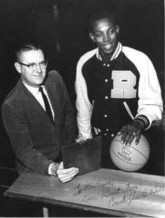 |
| Joe Hall with Regis star Cozel Walker |
"I recruited black players every year I was at Kentucky," said (UK coach Joe) Hall, who joined Rupp's staff in 1965. "The coaches were trying before I came here. We had failed on three of their (Western Kentucky's) players. Timing was the big thing. Something people don't realize is that most of our schedule was in the South, and that impeded our progress in recruiting black players. It was no lack of effort on our part. More than anything, the South eventually became ready for the black athlete. But it was a very gradual thing." - by Rick Bailey, Lexington Herald Leader, "Thrashing of UK in '71 was Top of the Hill," December 20, 1990.
"The racist tag on Coach Rupp is unfair," said Joe B. Hall, who came on board as an assistant in 1965 and succeeded Rupp in 1972. "I don't know what transpired in the past with him [Rupp], but when I got there in '65, we wanted to recruit black players." - by Paul McMullen, Baltimore Sun, "History in Black, White -- and Gray," December 10, 1999.
JPS Note #1: According to the biography of Hall by Russell Rice, after Hall accepted the assistant coaching position at UK he had asked one of his former standout players, Cozel Walker, to come with him to Kentucky but Walker refused. According to Hall Walker replied that did not want to fight 'that battle'. "That was the attitude among blacks back then," said Hall about the response.
JPS Note #2: Below is a listing of some of the black athletes who were offered scholarships by UK and Rupp in the 1960's. This list is not complete. There likely were others who may have been recruited but not formally received a scholarship offer. Any additional information, including the extent of their recruitment, visits to the school etc. is appreciated.
| Player | Year | Hometown | College Chosen |
|---|---|---|---|
| Westley Unseld | 1964 | Louisville, KY | Louisville |
| Butch Beard | 1965 | Breckinridge County, KY | Louisville |
| Perry Wallace | 1966 | Nashville, TN | Vanderbilt |
| Howard Porter | 1967 | Sarasota, Fl | Villanova |
| Jim McDaniels | 1967 | Allen County, KY | Western Kentucky |
| Jim Rose | 1967 | Hazard, KY | Western Kentucky |
| Jerome Perry | 1967 | Louisville, KY | Western Kentucky |
| Felix Thruston | 1967 | Owensboro, KY | Trinity (TX) |
| Joby Wright | 1968 | Savannah, GA | Indiana |
| Ron King | 1969 | Louisville, KY | Florida State |
| Tom Payne | 1969 | Louisville, KY | Kentucky |
"Rupp also tried to recruit Wes Unseld and Ron Thomas of Louisville and Jim McDaniels of Allen County, but all declined to become the traditionally white university's first black player." - by Merlene Davis, Lexington Herald Leader, "Herky Rupp is Still Attracted to the Game His Father Loved," March 29, 1985.
"[UK assistant coach Joe] Hall says that the effort to get Butch Beard was perhaps the biggest UK has made for any player in recent years. UK also tried to sign Westley Unseld and Jim McDaniels, actually spreading the grant-in-aid agreement before McDaniels in his home. Kentucky wanted Howard [sic, Harold] Sylvester, a good student, and seemed to have a good chance of getting him. But much pressure was applied to keep him in his home state of Louisiana and he eventually signed with Tulane. Last year, more of UK's recruiting money was spent on Georgia-born Joby Wright, than any other prospect. Coach Adolph Rupp made a strong personal plea that Wright enroll here, assuring him he would be happy at UK and would certainly have an All-America future. Wright chose Indiana then switched to Tulane.
Of course there are factors other than those mentioned here. But the door at UK is open to colored players. The ones UK has tried to recruit, and there are several, either have been blocked by the entrance exam or by their own decisions to go elsewhere." - by John McGill, Lexington Herald, "Time Out" April 16, 1969.
"Back when I was playing in high school in Savannah, I was the first black the University of Kentucky recruited (sic). It was still times of segregation in the Deep South and there was a lot of craziness - even lynchings - going on.
"I remember the 'White Only' lunch counters and drinking fountains for 'Coloreds.' I remember the white restaurant Joe B. Hall took me to. He was one of Adolph Rupp's assistants, and he came to Savannah and took me and my father to dinner.
"I remember looking at the menu and seeing escargot. I'd never heard of it before, but the name sounded fancy and it cost a lot, so I ordered it. Next thing I know they set a plate of snails down in front of me.
"Yeeech . . . I couldn't believe it, but my father just looked at me and said, 'You ordered it, you eat it.' Believe me, the next time I went to a place like that, I knew escargot." - Joby Wright in article "Basketball's the Twine of His Life," Dayton (OH) Daily News, December 6, 1990, pg. 1B.
Rupp: "Yes, we have two on our football team and we called on five or six basketball players last year, but we were not successful." Sport Magazine: Why not? Rupp: "I just think the whole thing has been a fear of traveling through the Deep South and probably being insulted or picked on. I know one of these boys got many letters from the south when it looked like we were going to get him, suggesting he not come here. But we do not draw the color line in any way." Published in Sport Magazine, "Sound Off! Adolph Rupp: I Don't Want To Be a Mean Old Man" by Fred Katz, March 1967, pp. 32-33, 92-94. |
When describing the events surrounding the post-season banquet after the Texas Western game where Lexington sports editor Billy Thompson made his unfortunate remark (mentioned previously on this page), Russell Rice mentioned "People applauded but not the administration, not Dr. Oswald, he was at the head table. And Rupp said to me later, 'By Gawd why'd he have to say that? I'm trying to recruit these boys.'" - Russell Rice, "Glory in Black and White," CBS, April 2002.
Support from Unexpected Places
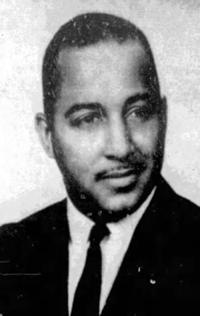 |
| Louisville Defender editor Frank Stanley Jr. |
Stanley Jr. was an active protester for Civil Rights in Kentucky participating in numerous boycotts, demonstration and sit-ins around the state, in particular in the city of Louisville. He also was instrumental in voting drives and became the head of the Allied Organizations for Civil Rights (AOCR), which was an umbrella organization of approximately 40 civil rights groups throughout the state. He was Kentucky's spokesman for the Kentucky delegation to the March on Washington in 1963 and was instrumental in organizing a March on Frankfort in 1964 which saw the Reverend Martin Luther King speak to a crowd of nearly 10,000 people.
Stanley was fully supportive of Rupp's recruitment of Wes Unseld and made his own efforts to convince Unseld. "We've tried to get everyone who we have reason to believe is close to him (Unseld) to talk with him about it (Kentucky's recruitment)." reportedly said Stanley in an Associated Press article which was published nationally in April 1964, including in the South which took notice. "The entire Negro community is anxious for him to go to Kentucky. But so far I don't think he's made up his mind." said Stanley - ("Negro Star Pressured Toward Ky." Jackson (MS) Clarion Ledger, April 22, 1964)
In later years, Rupp made use of student protesters to help him with recruitment. Most notably in 1967 Harlan Ky. native William H. Turner was a student at the University of Kentucky studying Sociology, having transferred there after attending Southeast Community College in Cumberland KY. Turner was a founding member of the UK Black Students Union and became involved in protests around campus and most notably was asked to step in to speak in place of Muhammad Ali at a rally in Memorial Coliseum before 11,000 people, after Ali cancelled after news of Martin Luther King being assassinated in Memphis.
Turner was active in student-led protests of the UK basketball team in December 1967, protesting the fact that the team was still not integrated by that point. Prior to that Turner had requested an in-person meeting with Coach Rupp, which Rupp agreed to along with athletic director Bernie Shively. While Turner has given varying accounts of how serious he thought Rupp was in recruiting black player in subsequent years, the immediate result of the meeting was that Rupp asked and Turner agreed to assist the athletics program in recruiting black players to the school.
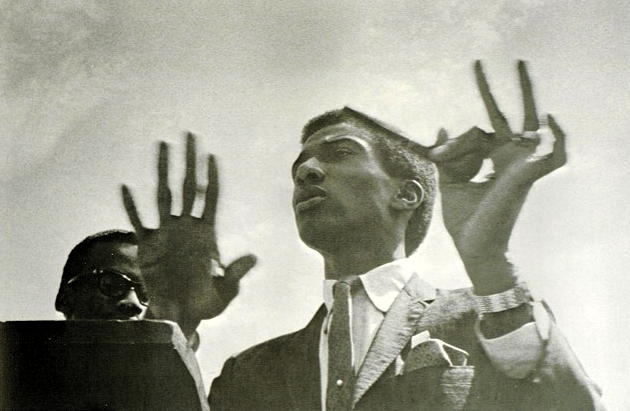 |
| Bill Turner giving a speech in the 1960s |
Per an article in December 1967 discussing the protests:
Bill Turner, a Negro and a senior, assisted Rupp and the Athletic Department last year in trying to recruit Negroes.
"The basic problem," Turner said, "is the image and impression which this school has with Negroes in high schools throughout the state. The feeling is that this school doesn't particularly want Negroes."
Turner said he aided an effort to woo the Allen County star, 7-foot Jim McDaniels, and several other promising Negro basketball players, all of whom signed to play with Western Kentucky University.
"There seemed to be something left out," Turner said of the recruitment, but added, "I don't know what it is, but it was just that you could see in these guys that they were uneasy while they were here visiting."
"Personally," he continues, "I was impressed with the efforts made in recruiting," Turner said he "had a lot of respect" for Rupp, though the coach was making a mistake in "looking for a 7-foot black athlete with an A average in high school."
The real problem though, in Turner's opinion, is not in the attitude of the coaches or the Athletic Department, but the failure of the Negro to be accepted socially at the university.
"Personally," he said, "I've found it rewarding as a student here, but as for social life, it's nil for the black student." - ("U.K. Negro Campus Group Protests All-White Team" by Ken Hoskins (AP), published in Park City (KY) Daily News December 14, 1967.)
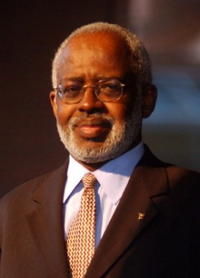 |
| Dr. George Hill |
The George Hill letter generated a lot of interest and responses, including by Rupp himself who penned a response to Earl Cox of the Louisville Courier-Journal. (Apparently Hill sent identical letters to both John McGill at the Lexington Herald which was published on May 23rd and to Earl Cox of the Louisville Courier-Journal which was published earlier on the May 18th.) Rupp was out of town and apparently didn't see either of the letters when published but was sent a clipping of a follow-up story by Cox in the Louisville Courier-Journal to which he chose to respond to.)
In his response, Rupp confirmed that Hill assisted in UK's recruiting efforts. Wrote Rupp:
"George Hill came here one year ago and offered to help us recruit. We welcomed his help. We turned him loose on what we considered the outstanding prospect that we had on our list, Joby Wright. We asked Mr. Hill to entertain this boy in his home and if possible keep him there and he agreed to do so. When the time came he [presumably Wright] chickened out. We sent him with others on a chartered plane to Savannah, Ga. [Joby Wright's hometown], to present to the family the advantages in coming to the University. He made a wonderful presentation but found immediately that there were other problems that he couldn't solve. Ask him to tell you about those. He helped us entertain others at Spindletop and he helped us entertain white boys also. We appreciated his help." - ("Coach Rupp Tells His Side of Recruitment of Negroes" conducted by Earl Cox, Louisville Courier-Journal June 1, 1969)
JPS Note: I do give people like Bill Turner and Dr. George Hill a lot of credit, as they were willing to set aside whatever differences they had with Rupp and made efforts to help recruit black players to the University of Kentucky, albeit unsuccessfully.
From some of the letters and subsequent comments made by them over the years, they were critical of Rupp (sometimes relying on what I consider to be inaccurate or at least unsubstantiated rumors and claims which were commonly repeated among the black community at the time) but they also realized and freely acknowledged that the difficulties in getting a black player to sign with Kentucky was one which was a far bigger issue than a single person could be expected to solve. It required the positive efforts of the entire community, university of athletic program to come about.
In other words I think it's fair to say they realized that recruiting wasn't simply a matter of Rupp snapping his fingers, as some of his later critics have implied.
In his letter, Hill had predicted that no black player would ever suit up for Rupp due to a myriad of issues, not all related to Rupp himself. As it turned out he was incorrect, within a few weeks of Hill's letter to the editor, Rupp signed Tom Payne of Louisville to a grant-in-aid.
Pushback from Unexpected Places
It was mentioned previously that during the Butch Beard recruitment, that then-chairman of the Louisville NAACP Lyman Johnson actually threatened to sue UK if they continued to recruit Beard.
That seemingly bizarre response was actually not that unusual for the time period. The truth is that there was not universal support from within the Black community in support of UK's and Rupp's efforts to integrate their program. Whether it was a preference for a local schools which had recently started recruiting black players like Louisville or Western Kentucky, or even a consideration that once formerly all-white programs started signing black players it could harm the long-term athletic fortunes of historically black colleges like Kentucky State University (many of which at the time were undergoing a renaissance of their athletic programs), there were alumni and fans of other programs actively working against Kentucky. Add in the people who simply were looking for retribution against either the school or someone in Rupp who for better or worse came to represent an all-white program for decades, and it's not surprising.
Once UK had failed with Wes Unseld, the stage was set. Unseld helped dissuade Butch Beard not just to come to Louisville but away from Kentucky. Both Unseld and Beard helped to dissuade Perry Wallace away from Kentucky as well.
Rival recruiters were happy to join in. According to Barry Jacobs in the book Across the Line: Profiles in Basketball Courage:
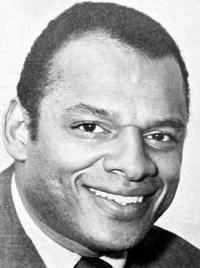 |
| Rival recruiter George Raveling |
JPS Note: I certainly understand the different motivations for why people would work to prevent Kentucky from signing a black player during that time period. Certainly Wes Unseld while at Louisville and even afterwards has a loyalty to his school to want recruits to attend U of L and not UK.
And certainly rival coaches are going to use anything and everything they can find (within their own moral boundaries) to try to dissuade recruits away from a powerhouse like UK and toward whatever school they represent.
But at the same time, I've always have found it a little hypocritical and a bit self-serving to turn around and criticize Adolph Rupp for not being more successful at recruiting black players, when they themselves were working as hard as they could at the time to prevent that very thing from happening.
The idea that Lyman Johnson, who successfully sued the University of Kentucky to allow him to attend graduate school in the 1940s, would later on sue to prevent UK from recruiting black athletes, I admit I don't quite understand the rationale behind that. But I'm sure he had reasons that he thought were valid at the time.
But it stands in stark contrast to other prominent black Civil Rights leaders in the state, such as Frank Stanley Jr., who were at the very same time supportive of UK's efforts to integrate its basketball program, even if they may have held personal animosity or grudges over Kentucky's failures at welcoming blacks in the past. Because I believe they recognized that the University of Kentucky making progress was far more important for providing opportunities for future black students and black athletes than settling personal scores would achieve. But these different approaches does illustrates that there were stark divides over people's views of whether UK should recruit black players, not just among Kentucky fans and others in the South, but among the local black community as well.
Exhibition Games with Black Players
Rupp throughout his career held many clinics and often coached all-star exhibitions. He travelled to Europe, the Middle East and the Far East and truly was an international ambassador of basketball. After World War II, one of his roles was to hold basketball exhibitions and clinics with the occupying troops in the newly-liberated Europe. There are likely many instances and opportunities for Rupp to have coached, worked with, competed against and instructed people of all colors. However because these were unofficial and do not show up in the record books, locating this type of information is difficult to find if not impossible.
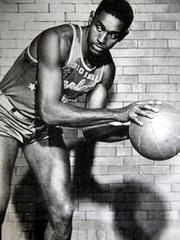 |
| Johnny Wilson |
Wilson ended up at nearby Anderson College where he excelled on the court, setting a school record in scoring and finished third in the nation in scoring, but ended up dropping out of school after three years due to a disagreement with the track coach. He later played a year of baseball in the Negro leagues before joining the Harlem Globetrotters to play basketball until 1954. But prior to joining the Globetrotters, Wilson was invited to participate in a basketball exhibition between former college All-Stars and the NBA World Champion Minneapolis Lakers with their All-Star center George Mikan. The College All-Star team was coached by Rupp (assisted by Loyola (Chicago) coach Tom Haggerty) and featured four of Rupp's Kentucky stars: Alex Groza, Ralph Beard, Cliff Barker and Wallace "Wah Wah" Jones among stars of other schools. Players reported to practice on October 22 at the Loyola gym where Rupp drilled his players in preparation of the game to be held on the 26th.
Prior to the game during warmups, Wilson who was just under 6-foot tall, wowed the crowd with pre-game dunks. Despite having four of his own UK players at his disposal, Rupp started Wilson along with his own All-American Ralph Beard to go along with Notre Dame's Vince Boryla, St. Louis center Ed Macauley and Kentucky's Wallace Jones. Reportedly Wilson "brought the crowd to its feet with some tricky ball handling early in the game and played most of the first quarter before giving away to some of his larger teammates." (DeKalb (IL) Daily Chronicle, "Bits by Sue", October 27, 1949.)
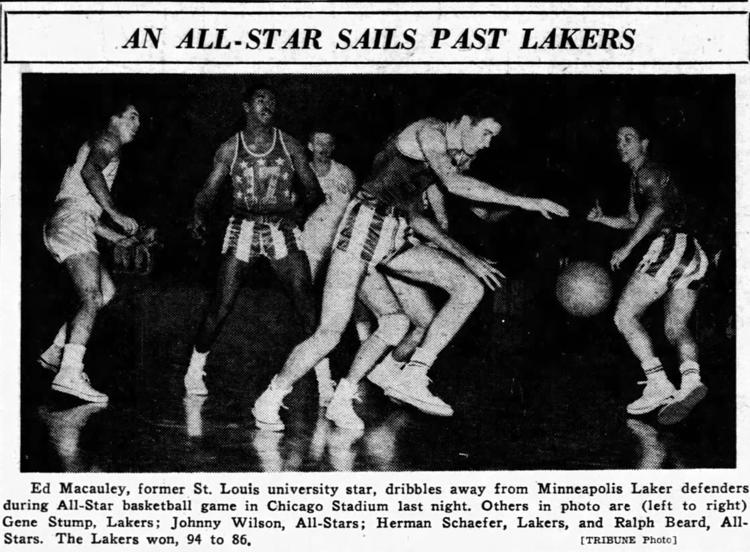 |
| Photo of Exhibition Game between Minneapolis Lakers and Collegiate All-Stars coached by Adolph Rupp in 1949. Shown in photo for the All-Stars are "Jumpin'" Johnny Wilson of Anderson (IN) College, Ed Macauley (St. Louis) and Ralph Beard (Kentucky) |
JPS Note: It is interesting to note that in Dick Burdette's book on Wilson "Jump, Johnny, Jump!", Authorhouse (2007), that a later encounter between Rupp and Wilson was made in 1961 when Rupp was in Indianapolis recruiting identical twins Tom and Dick Van Arsdale (who later played for Indiana). The Twins (who played for Indianapolis Manual) were playing Indianapolis Wood, a team that Wilson coached.
According to Burdette's book:
Adolph Rupp walked up wearing a big grin and extending his hand. 'Remember me?'
Johnny Wilson certainly did remember. Twelve years before, during a matchup between a select group of college all stars and the professional Minneapolis Lakers, Adolph Rupp had inserted him into the starting lineup. But Rupp, inexplicably, had started him at guard, instead of at center, his natural position. And, after two minutes, for no apparent reason, Rupp had taken him out and kept him on the bench the rest of the game.
Why? Johnny Wilson never found out. He also remembered that Adolph Rupp's biggest, most-bitter rival was Eddie Diddle, the towel-waving coach of the Western Kentucky Hilltoppers, a team Rupp refused to play. Johnny Wilson smiled and gripped The Baron's hand. 'Hey!' Johnny Wilson said. 'How you doin', Mr. Diddle?'
A couple of comments on this. First of all based on the account given in 1961, Rupp seemed to be gracious and friendly while Wilson acted dismissive and rude, even if it was a joke. Not a good look on Wilson's part, especially since as a high school coach it's in his best interests (and more particularly the best interests of his future players) to stay in good contact with college coaches who can provide college scholarships to his players.
Secondly, the claim that Wilson only played "two minutes" is directly disputed by the game summary at the time, which specifically states he played most of the first quarter. While granted that wasn't a lot of time, it was more than "two minutes" as Burdette incorrectly claims. [And keep in mind that Rupp was in a tough situation where he had to find time for each of his 15 men, which he did. With only 200 minutes to distribute among 15 players (avg. of 13.3 per player), it's not unexpected that every player did not see a lot of time in that game. Wilson played less than 13 minutes, but apparently not by a lot.]
Third, while Wilson may have played the center position at his small college in Anderson, it's not 'inexplicable' to think that a 5-foot-11-inch player would be slotted to play guard, given that along with Ralph Beard, he was one of the shortest players on the court. Certainly he was dwarfed by the listed Collegiate centers in the game such as 6-7 Alex Groza, 6-8 Ed Macauley, 6-10 Jim McIntyre, 6-6 Jack Kerris and 6-7 Vern Mikkelsen. (all of whom Rupp needed to find time for as well.) [Remember the College All-Stars were going against 6-10 George Mikan, who at the time was considered to be the top center in world, and indeed Mikan dominated the game with 31 points. Putting a 5-11 player on Mikan in such a situation truly would be an accurate use of the word 'inexplicable'.]
"After the game, as he was walking across the floor, Johnny Wilson heard someone call out: 'Hey, Weeeelson!'
As mentioned previously, it has been verified that Adolph Rupp coached Jim Tucker of Duquesne in a 1954 exhibition between the state of Kentucky and the state of Indiana collegiate all-stars. This despite Tucker not playing collegiately in the state of Kentucky, a technicality which could easily have been used if one was intent on preventing blacks from participating.
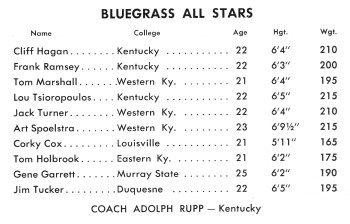 |
| Roster of the 1954 Kentucky Collegiate All-Stars. Jim Tucker was the only player on the squad who didn't play collegiately in Kentucky. |
In the two-game series (which ended with a victory by Indiana in Louisville and a victory by Kentucky in Indianapolis), Tucker started both games and scored 11 and 8 points respectively. Noted Angelo Angeolpolous of the Indianapolis News: "Tucker, who they say scratches his elbows on the basket ring, was uncontrollable on rebounds, tipping in four, and giving the best two-night performance." (Indianapolis News September 13, 1954).
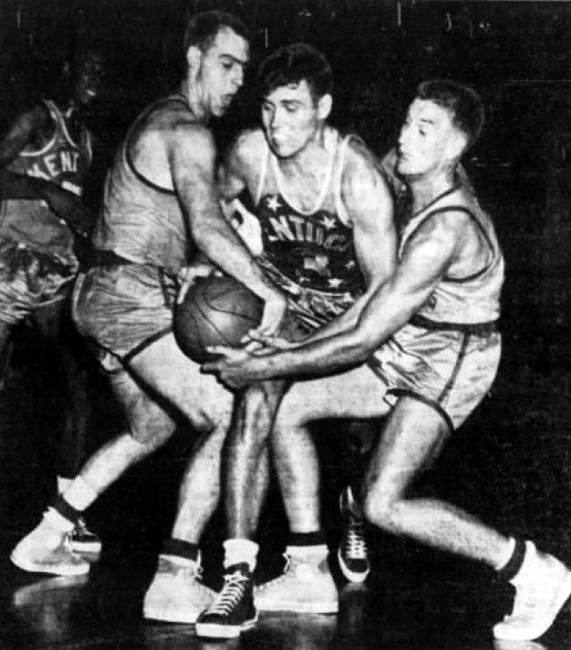 | 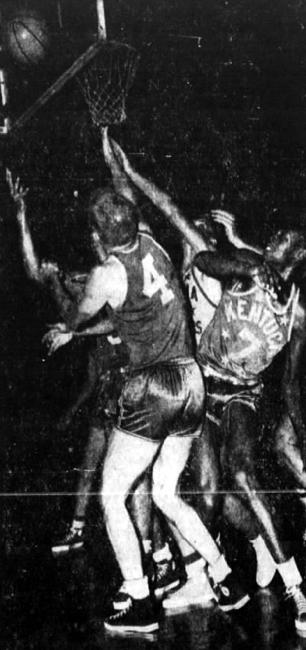 |
| Action from back-to-back games. The first photo (on left) from the game in Louisville (10-SEP-1954) shows Kentucky's Cliff Hagan getting tied up between Indiana's Dick Rosenthal and Dick Farley while Tucker looks on in the background. The second photo (right) from the game the following night in Indianapolis shows Tucker (#7) trying to clear the way for teammate Frank Ramsey's (#4) shot, which nevertheless was blocked by Indiana's Dick Farley. | |
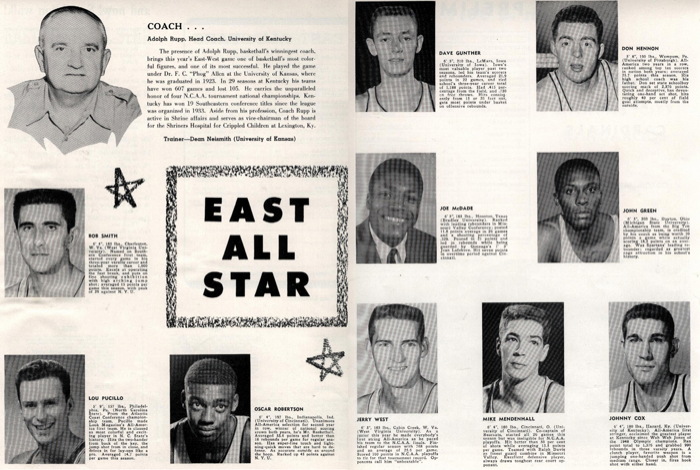 |
| Program from 1959 Ararat Shrine All-Star Basketball Game held in Kansas City, MO. |
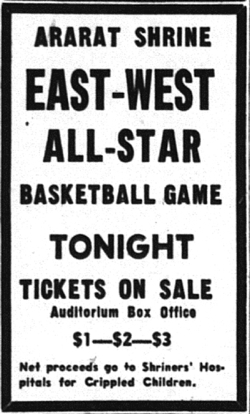 |
| Advertisment before 1959 Game |
Rupp said about his team prior to the game: "There's never been a collection of players like this for this game and there probably never will be again."
The East won the game 102-71, with Oscar Robertson (Cincinnati) leading the scoring with 22 point, nine rebounds and was named most valuable player. Johnny Green (Michigan State) contributed 7 points and 11 rebounds and as the Kansas City paper noted "combined with Robertson in a brilliant exhibition of blocking shots and intercepting passes." Later on it was noted: "With Robertson, Green and Bradley's Joe Billy McDade maintaining the superiority on the boards, the awesome power of the East showed in the final eight minutes. The East ran 13 consecutive points and moved to a 94-68 margin." (Note: The above quotes from Kansas City Times in preview and summary of game held on March 28, 1959.)
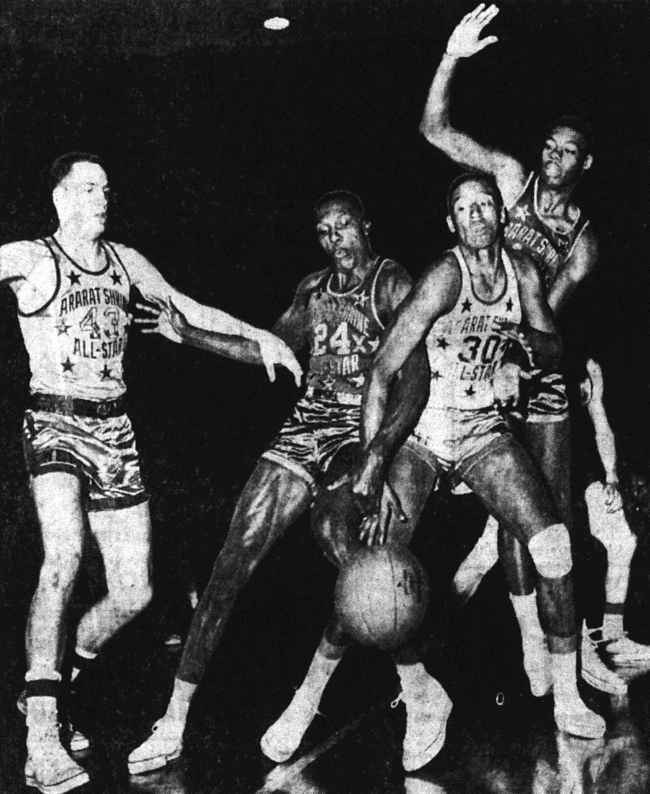 |
I recently asked one of these players, Joe Billy McDade (now a U.S. District Judge in Peoria Illinois), what he remembered of the exhibition, and in particular whether he noticed or experienced any slights or disadvantages on the part of Rupp toward him. This is what he wrote back:
|
Dear Mr. Scott: My participation in the 1959 Shriners All-Star basketball game as a member of the East squad was memorable because of the great players involved, some of whom I had played against as conference opponents, and because of Coach Rupp, whose reputation was legendary at that time. Outside of practice and of course the game itself, I had no contact with Rupp. I have no idea the degree of off-court contact he had with the white players. On the practice court, I do not recall any difference in treatment among the two groups. Coach Rupp, however, provided me with a most memorable coaching event that says something about him and his approach to that game. Having been favored to win, we were down 16-19 points at half-time. We were a quiet, sober bunch in the locker room awaiting Coach Rupp. Within the last minute of the half, he came and stood in the doorway and said in his Kentucky drawl: "Boys, you are 17 points down. You have the best damn coach in the country coaching you. It ain't my fault." He then abruptly left without another word. To my knowledge, he had no contact with us as a team after the game. In retrospect, this epitome of arrogance could have been a brilliant psychological play since we played great in the second half and won the game. Sincerely, Joe Billy McDade |
It is also known that Rupp coached in the 1967 Kentucky-Indiana collegiate all-star series. In those games (one held in Louisville on April 8th and the other in Indianapolis April 15th), Rupp coached black players in Western Kentucky's Dwight Smith, Kentucky Wesleyan's Sam Smith and the University of Louisville's Dave Gilbert. Western's Clem Haskins was also named to the team but could not compete due to an injury.
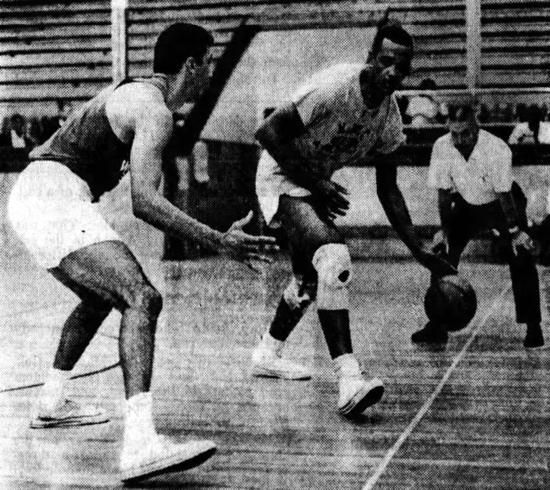 |
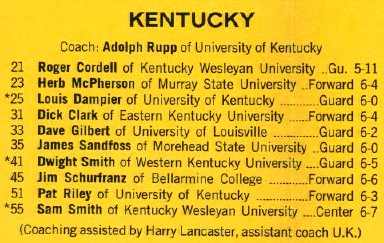 | 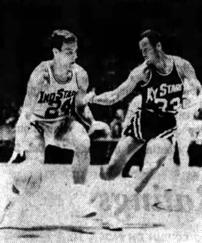 |
| 1967 Kentucky-Indiana All-Star Roster | IN's Bill Russell drives on KY's Dave Gilbert |
JPS Note: In the Kentucky-Indiana All-Star series, Western's Dwight Smith scored 19 and 16 points for the victorious Ky All-Stars. Unfortunately, a few weeks later on May 14, 1967 Dwight and his brother (and teammate at Western) Greg and sister Kay were returning from Princeton KY where they had celebrated Mother's Day with their family when their car struck high water and crashed into a water-filled ditch. Dwight and sister Kay both died in the accident while Greg barely avoided drowning thanks to the assistance of a by-stander who witnessed the crash.
On April 13, 1968 Rupp coached the Kentucky All-Stars in a game against the Tennessee All-Stars (coached by Vanderbilt's Roy Skinner) in Nashville. On the Kentucky roster were: Dick Cunningham and Billy Chumbler of Murray State; Thad Jaracz, Steve Clevenger and Jim LeMaster of Kentucky; Dallas Thornton of Kentucky Wesleyan, Larry Jordan of Morehead; Garfield Smith, Butch Kaufman and Greg Smith of Western Kentucky.
In the game Western's Kaufman led all scorers with 20 points and Dallas Thornton contributed 17 points and 15 rebounds for the Kentucky Stars, including the game winning basket in a 74-71 win. Reportedly the game was moved from it's original date on Friday night, April 12 to Saturday April 13 due to what the Nashville Tennessean described as "racial tension in town which had brought about early curfews in the first part of the week."
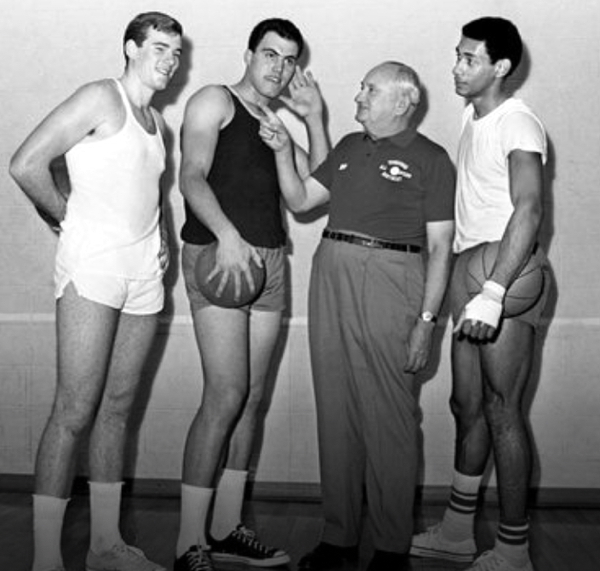 | Rupp talks with UK player Thad Jaracz, Murray State's Dick Cuningham and Western Kentucky's Greg Smith during practice in Nashville, April 12, 1968. |
According to the documentary Adolph Rupp: Myth, Legend and Fact, Rupp coached Perry Wallace in an exhibition after his career at Vanderbilt was complete. Said Wallace, "He was very, very nice. He offered to be helpful as he could about the draft and speaking to scouts. That was striking." I emailed Mr. Wallace about this and the exhibition. This is his reply:
|
Hi Jon, During my senior year at Vandy, Coach Rupp coached me in one of those post-season, college all-star games. I believe the game was played in Tennessee. I remember that Coach Rupp was very nice to me, even to the point of offering to help me in getting tryouts with pro teams. I understand that this adds to the considerable complexity in and around the myth of Adolph Rupp, but I always like to relate the story where I can--mainly because it is true and deserves to be told. Just as the South is more complex than the usual stereotypes, so also are its people and its institutions. And Coach Rupp, especially given his transcendent presence, deserves to be seen in all his complexity--however hard it makes people have to work to understand him and this amazing phenomenon called humanity. Best regards, Perry E. Wallace |
JPS Note: Unless Wallace is referring to another exhibition game that I'm unaware of, I don't know that Rupp technically coached in an exhibition. They did face each other twice in 1970 when Rupp was coaching the Kentucky All-Stars and Wallace was playing for the Tennessee All-Stars and his collegiate coach at Vanderbilt Roy Skinner. Regardless, obviously the two found time to talk at some point after Wallace's graduation during an All-Star event.
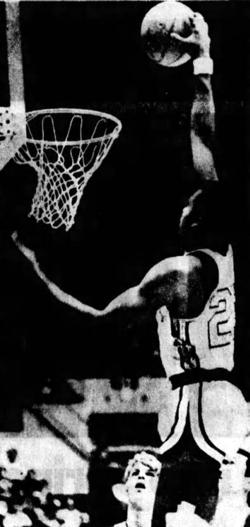 |
Besides 12-minute quarters and the mandatory use of man-to-man defense, the rules also allowed for the ability to dunk, something that had been taken away from Wallace in college. Mid-way through the first quarter, Wallace was on a fast break and sensing his chance rose to dunk the ball and missed spectacularly. The ball reportedly bounced off the rim 15 feet up in the air. Said Wallace afer the game: "I had intended to have some fun dunking the ball, but when the opportunity came I had to remember I could do it...The goal came up on me too fast and I thought the ball might go through the roof."
After that miss, Wallace settled down and got two dunks to go down as part of his 15 total points scored. Reportedly after each dunk, Rupp said "That boy has been around. He's smart. You can't give him that position."
(Note - All quotes above from articles in Nashville Tennessean, March 24, 1970.)
|
With a potential basketball future on his mind, Wallace participated in a college All-Star game in Kentucky, where his coach for the exhibition was none other than Adolph Rupp. It was the first time Wallace spent any time around the man who had been - always from a distance - a significant actor in his life, given Rupp's role in the banning of the dunk and his halfhearted efforts to recruit Wallace to Lexington. Wallace would take away only pleasant memories of his encounter with the legendary coach. "It was a very special meeting, out on the floor at the first practice. He was extremely welcoming and gracious. If you think about it, by that point it was clear that Texas Western, my efforts, all were part of a great flood of progress. And in our talks, I discovered something compelling that I knew many people would not understand," Wallace recalled. "For all of his reputation as a classic racist power figure, I hadn't the facts to decide whether or not that was true What I could see in those short talks and moments was an American man - yes, white, but more important, a product of all of America's good, bad, and ugly. And more curiously, I found myself comparing him with older partriarchal men, both black and white. My father, my high school coach, and many others all seemed eerily similar in certain basic ways. Tough, not hugely emotional. The good ones pushed you, goaded you, but toward honorable goals and good conduct. Tough love personified." (by Andrew Maraniss, Strong Inside, (2014) Vanderbilt University Press, pg 362.) |
JPS Note: I haven't really discussed this in detail on this page but the topic of Rupp's view on dunking is complicated. It is true that he was in favor of the ban on dunking at the time it was announced in 1967, although it's not clear that he lobbied for the rule change and he was not a member of the rules committee at the time the rule was passed. One thing people today don't seem to recognize is that at the time with exposed hooks for the basketball net, dunking was a potentially dangerous maneuver and the threat of seriously hurting your hand or even losing a finger was real. In addition, if the goal was damaged it often led to game postponements as most places didn't have backup goals readily available.
While Rupp generally was against the dunk through much of his career. Lou Tsioropoulos noted that Rupp allowed the players to dunk in practice but not in games. Despite this, his players did indeed dunk from time to time in the 1950's and 1960's at least, including a memorable break-away dunk by Bill Spivey in a game vs. Kansas and rival big man Clyde Lovellette. Marion Cluggish, 6-8 center who played for Rupp in the late 30's to early 40's, was known to dunk in pregame warmups at Rupp's request in order to intimidate opponents. In an interview after his retirement, Rupp was quoted as saying about the dunk: "I really think it should be a part of basketball," said Rupp. "I was violently opposed to it, but after thinking about it for two or three years, I think it has a spot in basketball." (Eugene (OR) Register-Guard, May 1, 1976)
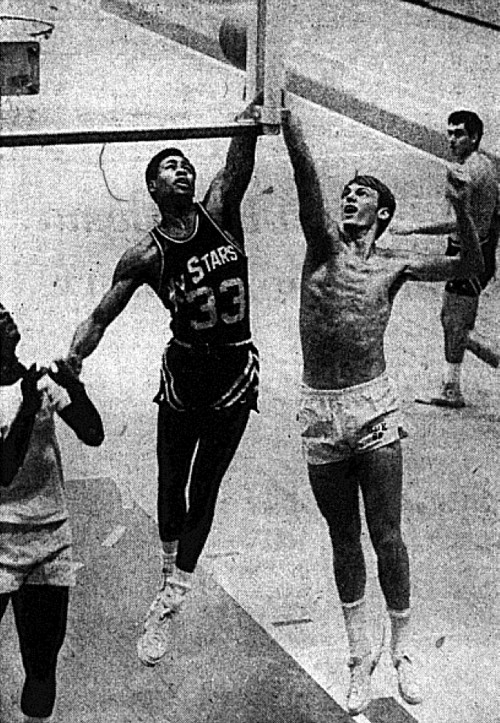 |
For the Kentucky-Tennessee All-Star series in the late 60's and early 70's, Adolph Rupp alternated with Western's Johnny Oldham as coach of the Kentucky stars. Rupp was the coach in 1968, in 1970 (both games), and in March of 1971 (second game).
In 1970, the roster included Bob Long (Cumberland), Toke Coleman (Eastern Kentucky), Mike Pratt (Kentucky), Jim Reid (Georgetown), Willie Woods (Eastern Kentucky), Ron Belton (Bellarmine), Bobby Hiles (Morehead), Claude Virden (Murray State) and Dan Issel (Kentucky).
The roster in 1971 included Jim McDaniels (Western Kentucky), Clarence Glover (Western Kentucky), Jim Rose (Western Kentucky), Jim Day (Morehead), Mike Casey (Kentucky), Larry Steele (Kentucky) and Jimmy Young (Murray).
Clarence Glover was interviewed years later about his interaction with Rupp as part of a oral history project and this is what Glover had to say:
And Coach Rupp and I sat down right after the tournament, where we had beaten the University of Kentucky, because I played for him in a college all-star game and he made his way around the room, sat down and spoke and talked with each of the players, and two of the players on there played for him, Pratt and Steele, played for UK, and they were on that team too. So he didn't have have to talk with them as long because he knew them. So he went to each of the guys and he was very cordial and shook their hand, and told them who he was and he was pleased to be coaching them. And then he came to me and he sat down. And it scared the heck out of me, because I was already, my heart was beating like crazy, I mean we'd beaten the University of Kentucky 20-some points, and here was the coach getting ready to talk to me and I'm thinking he was going to ream me out. And we really didn't talk very much basketball. We talked about other things, life and what makes the economy run for the United States, and just different things. And so, a week or two later I got a call from Red Auerbach. And he said: 'I talked with Adolph, and Adolph said you're one of the quickest big men in the country, and one of the smartest players he's ever worked with, although he only coached me that short time. 'And so he said we're going to draft you #1. So therefore, when I had the interview on one of the Lexington television stations I said: 'My meeting and talk with Coach Rupp went just fine, we had a good time.' And he was one of the prime reasons for me being drafted #1, so I didn't hold anything against Coach Rupp. But I did know that he felt, he did things he felt he needed to do during that time that he had to do them, because of segregation and because he felt he would lose funding for his team, if he had black players on his team. And, not saying that was right, I just said my connection, with him, my interaction with him was on a positive note, moreso than a negative note." (Oral History Interview with Clarence Glover, December 9, 2004) |
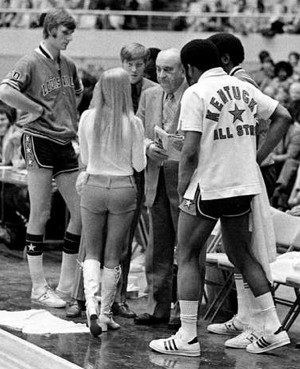 |
Rupp coached the East Squad in the All-Star Senior Basketball Classic held in Las Vegas, NV on April 18, 1972. Rupp's team came back from a three-point deficit on a field goal by Bob Morse (Penn) and the winning points came on two free throws by Bill Chamberlain (North Carolina). Other's on the squad included Jim Price (Louisville) who was the East MVP and scoring leader with 16 points and Bob Lackey (Marquette) among others.
Rupp coached the East squad in the 1973 NABC East-West All-Star game, which was played on March 31 in Dayton (OH). On that team were black players Mike Bantom (St. Joseph's), Jim Brewer (Minnesota), Dwight (Bo) Lamar (Southwest Louisiana) and Kermit Washington (American) among others.
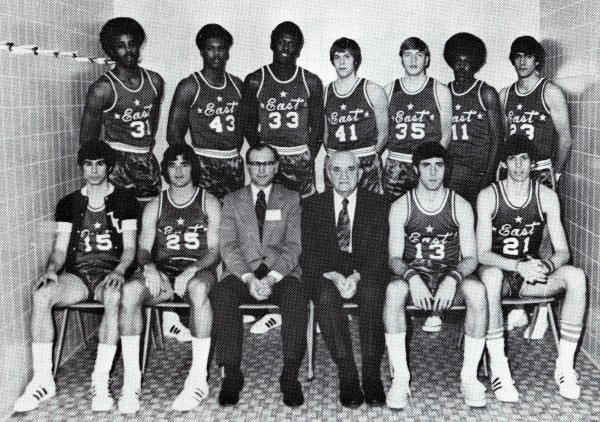 |
JPS Note:One interesting tidbit was that when it came time to name the Head Coach of the 1972 US Olympic basketball team, the AAU faction favored naming Adolph Rupp (although he was ailing physically at the time), while some in the collegiate faction were favoring a younger coach, such as North Carolina's Dean Smith. In the end, a compromise candidate was agreed upon, former Oklahoma State coach Henry Iba. The team went on to the Munich Olympics where they became the first US mens team not to capture a gold medal in the sport, losing to the Soviet Union on a last-second disputed play.
On April 13 1976, Rupp coached the South All-Star team in the Mid-America All-America Classic held at Market Square Arena in Indianapolis. The opposing coach was Tony Hinkle, retired from Butler. On the South squad (which lost 121-95) was: Robert Paige (Houston Baptist), Tim Sisneros (Middle Tennessee), Alex English (South Carolina), Mike Dunleavy (South Carolina), Phil Spence (North Carolina State), Charlie Fishback (Austin Peay), Marion Hilliard (Memphis State) and Butch Feher (Vanderbilt).
Other Events Rupp was Involved With
There were a number of integrated events and exhibitions which Rupp was directly involved with, although he didn't coach the teams. Oftentimes he was on the selection committee who actually determined which players would be invited. Other times, he was on the organizing committee, as many of these events were held in Lexington.
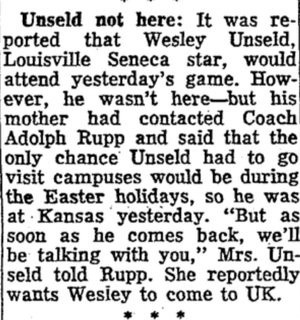 |
As part of the event, the 1964 East-West All-Star game was also held in Lexington on March 28, 1964, with many of the same players trying out for the Olympic team involved. The players who participated in the East-West game were as follows:
West Squad - Jim Barnes (Texas Western), Joe Caldwell (Arizona State), Ray Carey (Missouri), Mel Counts (Oregon State), Wayne Estes (Utah State), Bud Koper (Oklahoma City), Bennie Lenox (Texas A&M), Dave Stallworth (Wichita), Willie Murrell (Kansas State), Doug Moon (Utah). Coach Slats Gill (Oregon State).
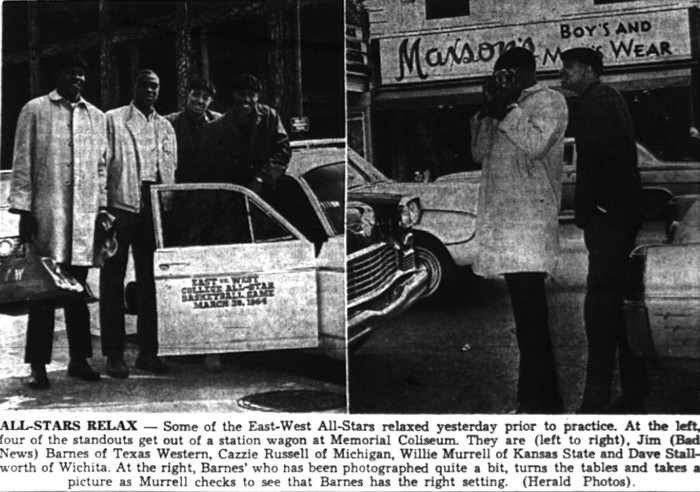 | |
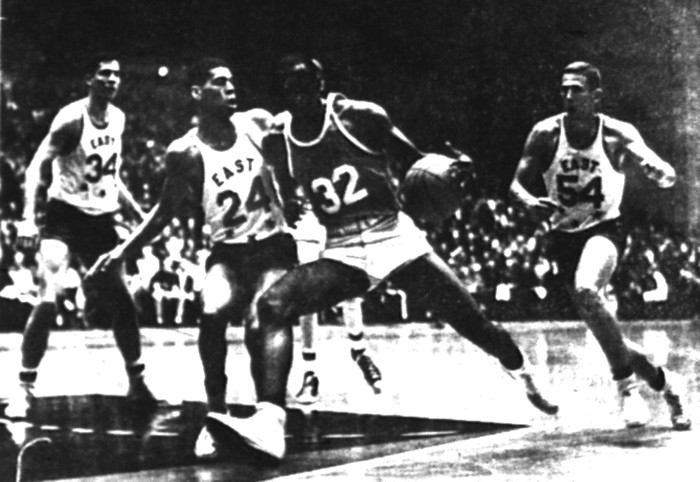 | |
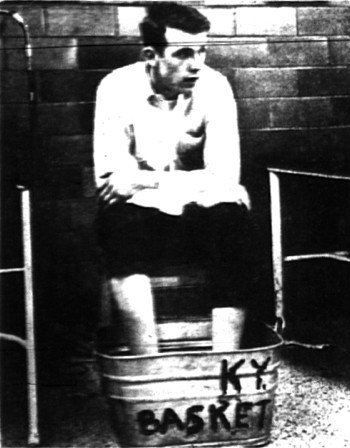 | 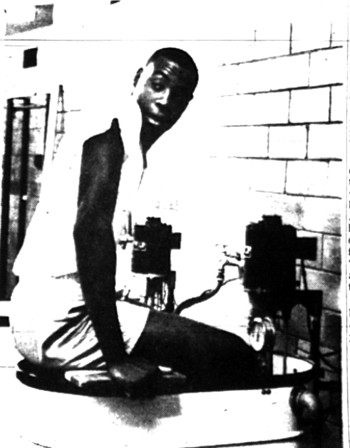 |
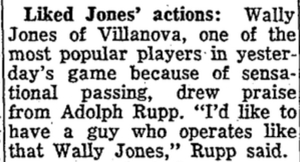 |
Although Rupp didn't coach the game, it is noteworthy that the 1966 NABC All-Star game was held at Memorial Coliseum in Lexington on March 26th, just a week after the National title game between UK and Texas Western was held. In that game were black stars Jerry Chambers (Utah), Dave Bing (Syracuse) and MVP Cazzie Russell (Michigan) among others. Kentucky seniors Larry Conley and Tommy Kron were also on the team.
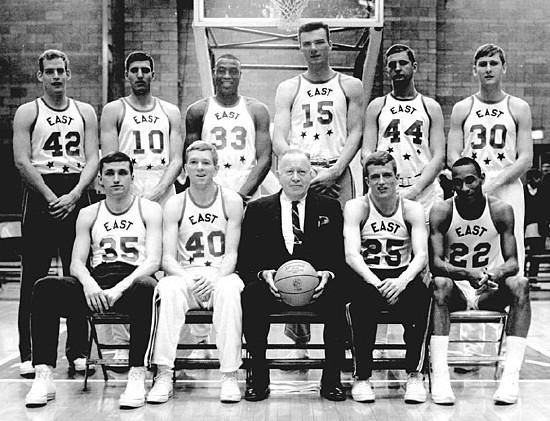 |
In fact, the NABC All-Star game was held in Lexington from 1963 until 1967, a time period when other southern campuses and gymnasiums still chose not to host integrated teams. Rupp (along with Henry Iba and N.A.B.C. President Harold Anderson) were credited with being the prime motivators behind making the NABC All-Star game a reality.
As mentioned above, in 1964 (a year that saw black stars such as Texas Western's Jim Barnes, Michigan's Cazzie Russell and Providence College's John Thompson among others), Rupp not only was on the N.A.B.C. All Star game committee, but he in addition served as the chairman of the player selection committee. Other years he likely served those functions also, as his list of accomplishments in the 1971-72 Media Guide (Rupp's last year at UK), it lists the fact that he "heads the group that selects players to appear in East-West All-Star Game benefitting the Hall of Fame" without any restriction on the years.
Below are lists of players who participated in the NABC event in Lexington during those years, many of whom were black stars of the day.
| Year | Coaches | Players |
|---|---|---|
| 1963 | Harold Anderson (East) Cliff Wells (West) | Willie Brown (Texas Western), Bruce Burton (Brigham Young), Ken Charlton (Colorado), Dave Downey (Illinois), Nolen Ellison (Kansas), Bill Green (Colorado State, Lyle Harger (Houston), Jerry Harkness (Loyola-Chicago), Art Heyman (Duke), Gary Hill (Oklahoma City), Layton Johns (Auburn), Jim King (Tulsa), Gordon Martin (Southern Cal), Jimmy Rayl (Indiana), Ken Siebel (Wisconsin), Dave Siegmund (Southern Methodist), W.D. Stroud (Mississippi State), Tom Thacker (Cincinnati), Rod Thorn (West Virginia), Nate Thurmond (Bowling Green) |
| 1964 | Jack Gardner (East) Slats Gill (West) | Jim Barnes (Texas Western), Ron Bonham (Cincinnati), Bill Bradley (Princeton), Ray Bob Carey (Missouri), Mel Counts (Oregon State), Barry Cramer (NYU), Waynes Estes (Utah State), Fred Hetzel (Davidson), Wally Jones (Villanova), Bud Koper (Oklahoma City), Bennie Lenox (Texas A & M), Doug Moon (Utah), Jeff Mullins (Duke), Willie Murrell (Kansas State), Cotton Nash (Kentucky), Cazzie Russell (Michigan), Dave Stallworth (Wichita State), John Thompson (Providence) |
| 1965 | Joe Lapchick (East) Doggie Julian (West) | Rick Barry (Miami, Fl), Bill Buntin (Michigan), Billy Cunningham (North Carolina), A.W. Davis (Tennessee), Harold Denny (Texas Tech), Keith Erickson (UCLA), John Fairchild (Brigham Young), Gail Goodrich (UCLA), Fred Hetzel (Davidson), Jim Jarvis (Oregon State), Ollie Johnson (San Francisco), Tony Kimball (Connecticut), Jim King (Oklahoma State), Ken McIntyre (St. John's), Ron Reed (Notre Dame), Flynn Robinson (Wyoming), Jerry Sloan (Evansville), Dave Stallworth (Wichita State), Tom Van Arsdale (Indiana) |
| 1966 | Taps Gallagher (East) Forrest Twogood (West) | Jim Barnett (Oregon), John Beasley (Texas A & M), Dave Bing (Syracuse), John Block (Southern Cal), Jerry Chambers (Utah), Larry Conley (Kentucky), Joe Ellis (San Francisco), Henry Finkel (Dayton), Carroll Hooser (Southern Methodist), Tommy Kron (Kentucky), John "Dub" Malasise (Texas Tech), Bob McIntyre (St. John's), Bill Melchionni (Villanova), Dick Nemelka (Brigham Young), Cazzie Russell (Michigan), Dave Schellhase (Purdue), Dick Snyder (Davidson), Steve Vacendak (Duke), Walt Wesley (Kansas), Lonnie Wright (Colorado State) |
| 1967 | Ben Carnevale (East) Everett Shelton (West) |
Charles Beasley (Southern Methodist), Jim Burns (Northwestern), Ron Coleman (Missouri), Louie Dampier (Kentucky), Mel Daniels (New Mexico), Sonny Dove (St. John's), Mike Gervasoni (Santa Clara), Gary Gray (Oklahoma City), Gary Keller (Florida), Bob Lewis (North Carolina), Bob Lloyd (Rutgers), Craig Raymond (Brigham Young), Pat Riley (Kentucky), Keith Swagerty (Pacific), Jamie Thompson (Wichita State), Bob Verga (Duke), Ron Widby (Tennessee), Tom Workman (Seattle) |
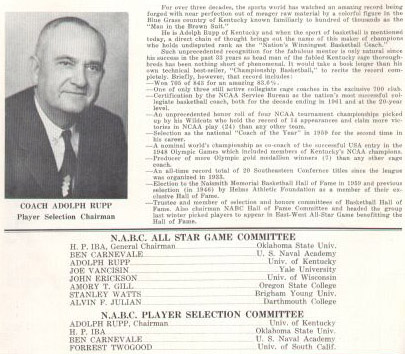 |
| From 1964 NABC Program |
The 1965 East-West game was held in Lexington (March 27 1965) was televised nationally and according to Rupp, raised approximately $15,000 for the National Association of Basketball Coaches.
Joe Lapchick, in his final game ever as a coach, led the East All-Stars. On the East squad was Fred Hetzel (Davidson), Rick Barry (Miami), A.W. Davis (Tennessee), Ron Reed (Notre Dame), Billy Cunningham (North Carolina), Tom Van Arsdale (Indiana), Bill Buntin (Michigan), Toby Kimball (Connecticut), Ken McIntyre (St. John's), and Jerry Sloan (Evansville).
Dartmouth's Doggie Julian led the winning West All-Stars. That team was comprised of Gail Goodrich (UCLA), Flynn Robinson (Wyoming), Dave Stalworth (Wichita), Keith Erickson (UCLA), Warren Rustland (Arizona), Ollie Johnson (San Francisco), Harold Denny (Texas Tech), John Fairchild (Brigham Young), Jim Jarvis (Oregon State) and Jim King (Oklahoma State).
JPS Note: Generally discovery of this type of information is by pure chance since exhibition dates and results are generally not well recorded. If anyone has any type of information such as this, I'd greatly appreciate if you let me know.
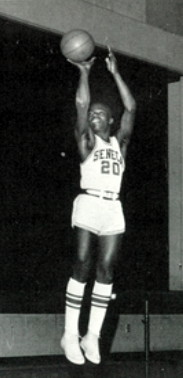 |
Bishop says he has fun playing basketball: he calls it "more of a thrill" than football. And he's grateful for the reception he has received from coaches Rupp and Hall, and the freshman team. "The coaches have been real nice and coach Hall is always helping me," he says. "I really feel at home out here. The players have been helping me get the plays down." - by Tev Laudeman, Louisville Courier Journal, "Ex-Seneca Star Could realize Double Stardom," December 14, 1969.
Despite the emphasis on football, Bishop wanted to keep his options open.
"I don't even know if I will be out for basketball next season," he says. "It depends on how I do this year. Really, I just came here for football. I didn't know if I could play college basketball. I'm just trying to see how I make out." - by Tev Laudeman, Louisville Courier Journal, "Ex-Seneca Star Could realize Double Stardom," December 14, 1969.
Bishop was not able to return to play on the varsity until later in his career when he played briefly on Rupp's last squad. On the gridiron, he was named first-team All-SEC in 1973 as a defensive back and holds the UK career record for interceptions (14), three of which were returned for touchdowns.
Rupp signed his first black player on June 9, 1969, when 7' center Tom Payne of Shawnee High School in Louisville agreed to play for UK. Payne played 2 seasons at Kentucky (JPS Note - actually, his first was with a local AAU team while still attending UK), then made himself available for the hardship NBA draft and was taken by the Atlanta Hawks. - by Russell Rice, Big Blue Machine, Strode Publishers, 1976.- JNB
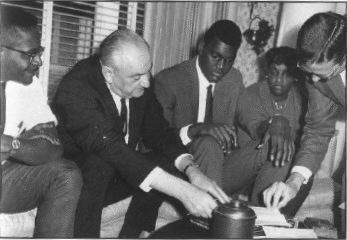 | 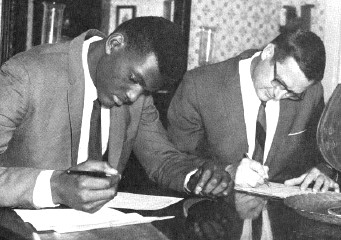 |
Russell Rice describes the day that Payne was signed.
We arrived early at the home of retired Army Sergeant and Mrs. Thomas R. Payne Sr. Rupp told [Joe B.] Hall to drive around the block - he didn't want to seem overeager. Ten seconds before the appointed time, we knocked on the door. Members of the media were waiting, along with Mr. and Mrs. Payne, who were gracious hosts. Their son was shy, and Rupp glowed. ... Mr. Payne wanted the best for his son, and he was convinced that it didn't get any better than Rupp. While everybody else beamed, Tom showed no emotion. Over a pot of his mothers coffee, we sealed the bargain. "Yes sir, Tom is farther along than Bill Spivey was," Rupp said. "He will fit into our plans perfectly." - by Russell Rice, Adolph Rupp As I Knew Him, Sagamore Publishers, 1994, pg. 194.
The Lexington Herald, June 10, 1969 Tom Payne, 7-foot-1 All-American center from Louisville Shawnee High School, has become the first Negro to accept a basketball grant-in-aid at the University of Kentucky. Payne, who had been sought by more than 100 colleges and universities, was signed in Louisville yesterday by Coach Adolph Rupp, who remarked "this is a pretty good way to start the week." Rupp, whose teams have won more games than any other coach, predicted that Payne has a future as great as that of Lew Alcindor, who led UCLA to three straight national championships. He is the first 7-footer signed by UK since Bill Spivey, who led the Wildcats to the national crown in 1951 and made All-American. "We wanted a big man and we got one," Rupp commented. Payne was offered an opportunity to sign when he visited the campus last weekend. Payne, who weighs 215 pounds, said that he chose Kentucky for two reasons: "First of all the educational program, I think it was my best bet. I will be going to a big school, but I can get individual attention. I won't be just a number. "And I felt Coach Rupp could develop my potential better than any other coach." Payne said he was skeptical at first about attending Kentucky because of the racial discussion. But he declared that he had no reservations about being the first Negro basketball players at the school after visiting the campus. "I visited Kentucky three times," he said. "I found out that some of the stuff I had heard wasn't true. I liked what I saw at UK." Payne averaged 25.8 points and 29 rebounds as a senior. He also hit 61 per cent of his field goal attempts and had a single game high of 40 points. Payne had been actively recruited by Joe Hall, UK assistant coach, for quite some time. "We're real happy to sign him," Hall said. This may mark the end of UK's recruiting this year, although Rupp could sign two more if he wished. In addition to Payne, the UK basketball signees are 6-11 Jim Andrews, 6-8 Dan Perry, 6-6 Larry Stamper, 6-4 Steve Penhorwood and 6-1 Rick Derrickson. |
As mentioned previously, Payne did not have the necessary entering test scores and could neither practice nor play on the freshman team. In fact, Kentucky could not offer a scholarship to him that year because of this. To Payne's credit, he enrolled anyway and paid his own way that first year, while at the same time getting the necessary grades to gain eligibility the next season.
Coach Adolph Rupp has been getting good reports on Payne. "Wait until his grades come out and they'll shock some people," said Rupp. "We have a tutor with him and he's working hard. He's a fine boy." - by Dean Eagle, Louisville Courier-Journal, "AAU Basketball Toughens Payne for UK Varsity Role," December 21, 1969.
The question of how Payne felt about his situation that first year was posed to him by Dave Kindred.
"Yeah, they've [opposing coaches] been calling me, asking if I'm happy, if I'm sure I want to be the first Negro at Kentucky," Payne said. "I tell them all the same thing. Yes." - by Dave Kindred, Louisville Courier Journal, "UK Freshman Payne is Bigger, Better and Happier Than Ever," December 28, 1969.
In a April 1970 article in Sport Magazine, Rupp had been asked for his input concerning the All-Time team of All-Americans in college basketball history. The list, which had been put together by a group of college coaches included a first team of Oscar Robertson, Bill Russell, Lew Alcindor, Jerry West and Elgin Baylor. At the end of the article the following comment was made which indicated Rupp's interest level in his soon-to-be sophomore:
Adolph Rupp, who has coached more than 1000 games for Kentucky since 1930, put it all in perspective for SPORT when he said over the telephone, "You may want to know that there's a 7-1 student here, Tom Payne, who just walked past my office and he may be better than all of them." That was the future marching. Would you believe the Alcindors, Russells, Robertsons, Wests and Baylors as second- and third-teamers 15 years from now? Better be prepared. - by Dave Sendler SPORT Magazine, "College Basketball's All-Time All-Americas," April 1970.
As his sophomore season began, the New York Times ran an article marking the occasion.
By George Vecsey LEXINGTON, Ky., Dec. 5 - When Tom Payne strides onto the basketball court, he attracts enough attention just by being 7 feet 2 inches tall. However, millions of University of Kentucky fans are probably just as aware that the tall sophomore is the first black man ever to play varsity basketball for Kentucky. The young man from Louisville wanted to play at Kentucky so badly that he paid his own way as a freshman, something very few high school heroes ever do in this basketball-crazy state. And he was willing to go through the pressure of being a "first" in order to play for his state university. Integration does not seem to be much of an issue these days in this northerly southern state. The schools were integrated after the war, most of them before the Supreme Court decision of 1954. Nobody seems to notice when a Negro sits down in most diners or fancy restaurants - at least not in the urban areas. And integration may be a fading issue in the Southeastern Conference, too. Vanderbilt has already graduated a black basketball player, and at least three other schools have black players this year. Kentucky has had black football and track performers in the past. For Whites Only But in 67 seasons of basketball - 40 of them under Adolph Frederick Rupp himself - no black man had ever been part of the 25 conference titles, the four national championships, the 37 all-America awards and the 85 all-conference selections. "I don't think there's any color angle to it," said a rather knowledgeable Lexington woman the other day, "Coach Rupp isn't a prejudiced man. He just goes for the best players. I can guarantee you that Tom Payne isn't on this team because of his color. He's on this team because he's the best damn player we could find." The university "found" Payne at Louisville's Shawnee High, where he made the all-state team twice. the basketball department made overtures to him, as it had apparently done to several recent black high school superstars. "Let's start by saying my parents wanted me to come here," Payne said. "This was a big college in the state. It was good academically. I didn't want to get lost in Los Angeles, so far from home. And Coach Rupp is such a hero around this state." "Yes, I've got to admit it, I would have preferred at that time to go where there were a lot of brothers [blacks]. You always like to be around your own kind. And there was a lot of talk in the black community about why I should play for Kentucky when they never had a black player. But this was my decision." The young man qualified to enter the university (as many Negroes do), but then the athletic department said it couldn't pay his way because he fell slightly below the academic level for a scholarship. "That boy's mother sat in this office - in that chair, right next to you - and she took out her checkbook," Rupp recalled. "She asked how much one semester would cost." "She was a bright woman, you could tell that. Heck they were an Army family. They lived all over the world, in Germany. Heck, those Germans make you smarter by being there." Tom's father had been a career first sergeant, and the $2,000 for the first year was not an unsubstantial sum. But they paid it, and Tom worked on his grades, starred for an amateur team in Lexington, found time for his wife and baby daughter and tried to acclimate to the university. "Most people have been fine," he said the other day. "But there's always some who just don't want me here." Payne doesn't believe that Rupp doesn't want him here. The coach is 70 years old this season, eligible for retirement, but still looking for his fifth national championship. He hasn't won a national title since 1958, and John Wooden of the University of California, Los Angeles, won six in the last seven years. Call Him Ahab Many people expect Rupp to pursue that fifth title, like Ahab after the white whale, and there don't seem to be any Starbucks in the state willing to publicly advise the defied Old Man to set sail for a quiet port. "I told Tom there was no black or white as far as I'm concerned," Rupp said. "I don't even know if God is black or white. Heck, I'll probably never find that out." "Heck, I had colored players when I coached high school back in Freeport, Ill. I coached a black player, Don Barksdale, on the 1948 Olympic team. There's nothing unusual about me coaching a black player." Rupp says he is not even conscious of Payne's color when he addresses him. "I get mad at him and really let him have it," Rupp said. "But then I realize he didn't play much basketball before college and then he didn't get any freshman coaching here. Dammit, I can't expect him to know as much as these other boys, so I apologize to him and I think he understands." Payne says he understands and says he is willing to accept the lectures because he is a raw sophomore. He also says he has not felt any racial pressure from Rupp and he says he appreciates Mike Casey and Kent Hollenbeck, two older teammates who have made him feel comfortable. Payne may not yet feel that close to the entire student body or to the Bluegrass Country around Lexington, but he is glad to be playing only 90 minutes down the Pike from Louisville. "This is my home state," he said. "I guess you could say that the University of Kentucky was my sentimental choice." |
Later on during the season, Rupp was still upbeat about his big man's future:
During Tom Payne's first game at Tennessee for the Cats, he was roundly booed by UT fans and one of them wrote a racial slur on the bulletin board in the visitor's locker room. By 1971-72, Auburn, Florida, Vanderbilt, Ole Miss, Mississippi State, LSU, UK, and Tennessee all had black basketball players on their roster. - by Russell Rice, Big Blue Machine, Strode Publishers, 1976.- JNB

Tom Payne (#54) defends against a Tenneess shot attempt in Knoxville
At Tennessee, he had endured racial slurs on the blackboard and such vicious booing that Mike Casey and Larry Steele had told officials the Wildcats would walk of the court if it didn't stop. - by Russell Rice, Adolph Rupp As I Knew Him, Sagamore Publishing, 1994, pg. 197.
"After going through my senior year with Payne, the way they treated us, especially at Tennessee and Ole Miss, if I was black, I probably wouldn't have gone to Kentucky either. Tennessee was awful. When we came out, every other word was the 'N' word. It was brutal." - Mike Casey in interview by Mark Story, "A Big Blue What-If Story," Lexington Herald Leader, December 24, 2004.
Mark Soderberg, a reserve center, quit the team during Payne's sophomore year at UK because he said Rupp was trying to bend over backwards to prove he was not prejudiced by playing Payne even when the substitutes could have expected playing time. - by Russell Rice, Big Blue Machine, Strode Publishers, 1976.- JNB
JPS Note - Soderberg also gave a number of other reasons for quitting including the criticism that "Rupp had very little rapport with the team; he was cold to his players, made no effort to get to know them, and regularly forgot their names" (by Russell Rice, Adolph Rupp As I Knew Him, Sagamore Publishers, 1994, pg. 195.)
In late June 1971 the NBA announced that in light of fall-out from the Spencer Haywood anti-trust case they scheduled a supplementary "hardship" draft on September 10th for underclassmen who were economically disadvantaged to apply for the NBA draft. Rupp was upset with the NBA because of how it impacted college teams, "You can't plan anything any more." lamented Rupp who also noted regarding the NBA's rival ABA which had already started poaching underclassmen "The discouraging thing is that this will intensify and encourage that other league (the ABA) to continue its practice."
But when it came to his own player who was considering applying for the special draft (Payne), Rupp was supportive, even though it meant a hardship of it's own to the UK basketball program.
JPS Note - This attitude of being supportive of player's decision to turn pro is similar to future UK coach John Calipari who dealt extensively with underclassmen leaving early for the NBA draft decades later.
Said Rupp in support of his player applying for the draft: "If Tom isn't a hardship case there isn't one in America. The young man is married, and his family lives off welfare stamps." Rupp continued, "I will call him into the office tomorrow and insist that, if he does want to turn professional, he have a lawyer to represent him in negotiations. Too many of these kids today are signing big contracts and not keeping their money. There is one kid up here who signed with them and now he's driving one of those $20,000 English cars around. I can't think of the name of it. But if Tom wants to sign, I want him to be sure to keep his money. And I will never stand in the way of a boy if he feels he can improve himself." (all quotes above from article by George Cunningham and Richard Hyatt "Rupp Upset at NBA Move" Atlanta Constitution June 26, 1971.)
"Rupp had been fair with him, Payne said - the coach, a counselor, and a lawyer were the only persons he could believe. No one else offered a helping hand without expecting something in return." - by Russell Rice, Adolph Rupp As I Knew Him, Sagamore Publishing, 1994, pg. 197.
The season after Payne had left the team for the NBA, Rupp was upset that he had lost his best center and didn't hesitate to let his team know they weren't as good. After getting beat by Michigan State, Rupp lamented to his team, "If we had Tom Payne, we'd be undefeated," he said. The pros don't care whether they destroy a good college team or not. They sure ruined us by drafting my center." - by Russell Rice, Big Blue Machine, Strode Publishers, 1976, pg. 350.
After a game against Indiana in which IU's Steve Downing exploded for 47 points and 25 rebounds, Rupp complained about his current big men, "Payne never let that happen." ("Just about out of players," by Dick Fenlon, Louisville Courier Journal, December 13, 1971)
In a 2004 interview in prison, Payne (who had been moved back to Kentucky after having his sentence reduced in California, was still looking for another chance) was more reflective of his time at the University of Kentucky and what might have been. "If I would have appreciated the opportunity to play for U of K. The great opportunity God had given me and used it the right way. That I could have run for Senator. I could have been the first black man to run for mayor of Louisville. I think like that." - by Alan Cutler, "First Black Player in UK Basketball History, Serving Time for Rape, Talks to LEX 18 Part 1," WLEX 18, November 10, 2004.
Walk-ons During the Final Season
Rupp left coaching in 1972 due to a rule mandating his retirement by the State. As mentioned, late in that season, Rupp coached two more black players, Darryl Bishop and Elmore Stephens who walked-on from the football team. As mentioned previously, Bishop had been a Parade 5th team All-American and 1st-team All-State player in basketball while playing at Louisville Seneca high school. Stephens had been an All-State football and basketball player (named 2nd team All-State in both 1969 and 1970) from Louisville's Thomas Jefferson High School.
 |
The pair joined the team after back-to-back December losses to Indiana and Michigan State and made their first appearance later that month in a win against Notre Dame.
The 1971-72 Kentucky squad had lost many of their starters from the year before and were riddled with injuries early in the season. When Tom Parker was sidelined with a severely sprained ankle in the Indiana game, this left Kentucky with no starters from the year before. Kent Hollenbeck had not yet played due to injury and Stan Key had also been injured in the Indiana game. Before the Michigan State game, Rupp lamented, "I'm just almost afraid to look ahead. Where can I turn? Where should I go? Why, I can scarcely get enough players together for practice." (by Dick Fenlon, Louisville Courier Journal, "Just About Out of Players," December 13, 1971)
Rupp's mood didn't get any more cheerful. After the loss, "he threatened afterward to go out and recruit some junior-college players for the second semester. ... The forwards? 'What'd we get out of [Dan] Perry? No points. And out of [Rick] Drewitz? Three points. We finally had to move guard [Stan] Key, up there and he didn't want to do it because he didn't know how to play forward and didn't want to be criticized.' The center? 'There's nothing I can do about the center situation.' said Rupp. 'I just don't have anyone else I wonder if all the people around here still think Andrews is better than Payne after watching tonight?'" - by Dick Fenlon, Louisville Courier Journal, "Michigan State's 'mini-guys' hand UK 2nd Big Ten loss in a row 91-85," December 14, 1971
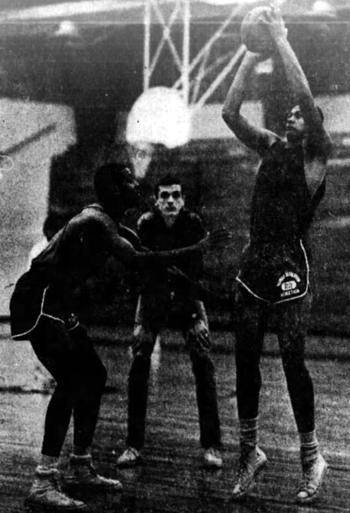 |
"If this kid makes up his mind to play (he pointed to Elmore Stephens, a football linebacker) he can help us a lot." - by Dean Eagle, Louisville Courier Journal, 'If We Had Tom Payne, We'd be Unbeaten,' Moans Rupp," December 29, 1971
Rupp did make use of his new players. In a critical game against Louisiana State, Stephens was inserted into the lineup to guard Al Sanders who was dominating the boards.
The crowd cheered wildly as Stephens, who had seen only seven minutes of playing time in three previous games, trotted onto the court with a big smile on his face. UK led 50-43 at the time [15:13] and when the high-jumping Stephens left with 6:09 to go, the advantage had increased to 75-57. "I've got confidence in that boy," Rupp said of Stephens. "He's a big, strong boy and I knew he wouldn't be afraid to mix it up with Sanders. When he (Stephens) was in there, Sanders got damn little done." - by Jim Bolus, Louisville Courier Journal, "UK Cuffs LSU as Stephens Slows Sanders," January 30, 1972.
Said Rupp after the game about Stephens. "I only regret that he waited so long to come out for practice. If he had been there three weeks earlier he might be our starting forward now." (Associated Press, published in Danville Advocate-Messenger, January 31, 1972.)
Rupp had run short of players, and Stephens, a black football player jumped at the opportunity to play basketball for the Wildcats. "People thought he was racist," Stephens said. "But playing under him, I can't really say he was a racist. He was hard, but he was fair. He treated all his players the same when I was there."
"When the conversation comes up at times, I tell people my side of it and how I felt about it. They say, 'I don't know, man. There were statements he made. He made a statement that he didn't want monkeys playing for him.' I don't know if that's true or not. But that's the type of rumor that was bouncing through the black neighborhoods." - by Rick Morrissey, Chicago Tribune, "New Face Leads Kentucky These Days," November 30, 1997.
JPS Note: As has been illustrated many times on this page, there is a wide gulf of contrast between the comments of those black players and persons who personally knew and interacted with Rupp and the many 'rumors' and unsubstantiated claims making their way through black communities about Adolph Rupp at the time made by people who didn't know and often had never met him.
The fact that you have a black player who was given an opportunity and played for Rupp and considered him "fair", who then questions what he knows about Rupp based of what others in his community (sometimes well-meaning, sometimes not) "think" about Rupp based on wild (and usually false) claims is a sad testament. But goes a long way into explaining where we are today.
It should go without saying but just for the record, there is no evidence that Rupp ever stated he didn't want "monkeys" playing for him. That's complete and utter misinformation.
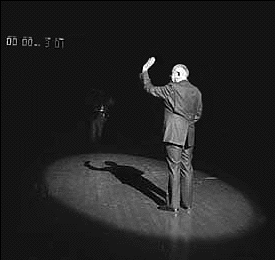
Rupp bids Farewell to the fans at Memorial Coliseum
After the 1971-72 season, Joe B. Hall formally assumed the position as head coach. At the time Kentucky had been recruiting Kentucky Mr. Basketball Jerry Thruston of Owensboro (younger brother of Felix). Thruston originally signed with Marshall but after Marshall coach Carl Tacy left for Wake Forest, he reopened his recruitment and ended up choosing Jack Hartman and Kansas State over Kentucky. Thruston played a year for KSU but then transferred to Mercer where he played under former Kentucky player and fellow Owensboro alum Bill Bibb to finish his career. (JPS Note: Bibb had actually been an assistant coach at Trinity from 1966 to 1969, where he coached Jerry's older brother Felix.)
Meanwhile, Joe Hall was able to sign lightly recruited Reggie Warford of Drakesboro, a small town in South Central Kentucky, when Hall came to speak at Warford's team banquet in April 1972.
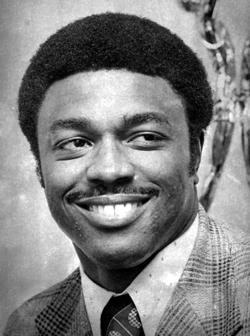 |
Hall contacted Kelly and pled the case for bringing Warford to the Wildcats, something that apparently Kelly and Hamilton recognized. According to Warford in a October 19, 2018 Oral History Interview, it was Leonard Hamilton who convinced Warford to go to Kentucky:
"Later on, after I committed, my understanding was that Coach Hall and Lake Kelly eventually had a conversation about me committing to Kentucky and this is the part where I think that: It wasn't my value as a player, it wasn't my talent level, but it was my character level, that you know I'd been raised the right way, that I was going to do the right things because I had directed by a good coach and a good family." "So I think that Coach Hall wanted me to be as much a person who would be here, would do the right things, wouldn't mess up, and attract other African American players after that. And that's exactly what happened. My understanding was, there was a conversation, I don't know what was said, but I know that Coach Hamilton came to me, and as I said we were very close. And his words to me were 'Reggie, you've got to go to Kentucky'... while he was at Austin Peay." - (Oral History Interview with Reggie Warford by Dennis Emery, October 19, 2018)
JPS Note - Leonard Hamilton was hired two years later by Joe Hall a few years later as an assistant coach for the Wildcats. And Hamilton was a key recruiter for many highly recruited black and white recruits who came to Kentucky through the 1970's and 1980's, before leaving to become a successful head coach himself. Hall later hired Lake Kelly as an assistant as well, beginning in the 1983-84 season.
The Drakesboro team banquet was set up with Joe Hall as the featured speaker, with the plan for Warford to sign with Kentucky afterwards, which he did on April 17, 1972. Warford came to Lexington as a freshman, the first year that freshmen were once again eligible to play varsity. However, Kentucky still retained a Junior Varsity team and that's where he saw most of his action his first year, leading the team by scoring 17.5 points per game in 12 games. He saw action in only one varsity game that year, going scoreless.
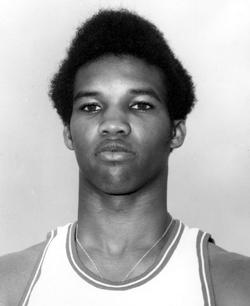 |
More critically, Reggie's 21-year old older brother Billy died in a car wreck on January 27, 1973, a few months prior to his planned wedding. After the season Warford was diagnosed with a heart condition, which nearly led him to quit basketball altogether, but he chose to continue on.
Reggie's impact on the program was immense, even if he didn't always appreciate it until later in life:
"I used to say, that I was the wrong guy to integrate Kentucky, fully. And the reason I used to say that, was because whenever you see the story of the first African American to go someplace. He had to be super special. He had to be beyond the pale. The Jackie Robinsons, the Perry Wallacea at Vanderbilt. You had to be extraordinary for your story to be told."
"And I made this comment and one of the guys said, 'Wait a minute, that wasn't what needed to be told. Great players will come and go, black, white, whatever but you have to be a person to be able to withstand the bigotry.'"
There were people, when I first came to Kentucky who didn't want Kentucky to be integrated. Great Kentucky fans, not all of them, but there were some. And you don't hear the people that support you, you hear the people who don't support you. And that's what it was like when I first came. So my value to the University of Kentucky was not by how well I dribbled the basketball or how well I shot the basketball, my purpose was to show other men of my ethnicity what was possible here. Goose was the first great African American player, and there's been many more since." - (Oral History Interview with Reggie Warford by Dennis Emery, October 19, 2018)
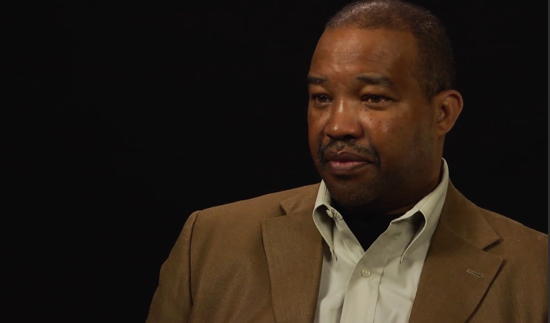 |
Later on in the interview Warford spoke more to the legacy of Coach Hall and the place in history he held in terms of helping to bring about integration in the Kentucky basketball Program:
"And that's the tribute, that when you look at all the things that Coach Hall did. That's one of the biggest, because I can tell you that there were boosters and people fighting him the whole way. Now this is a part of, and I don't say Kentucky's history, because I'm a part of Kentucky. It's a part of OUR history."
"People may say 'why do you have to bring it up now?' If you don't remember how you got there, you're not going to understand where you're going?"
"We got there because a poor kid from Drakesboro Kentucky came to the University of Kentucky and brought in Larry Johnson and Merion Haskins, that brought in James Lee and Jack Givens, that brought in LaVon Williams and Truman Claytor, that brought in Kenny Walker. (Interviewer: Jamal Mashburn?) Right. That's the process. Would it have happened? Somebody would have done it, but nobody else did. Somebody could have done it. Nobody stepped up, but I did. Remember me however you want to, but I came here with that. And that's part of my heritage." - (Oral History Interview with Reggie Warford by Dennis Emery, October 19, 2018)
As mentioned, despite the stumble with Tom Payne, Reggie Warford was key in restarting the process under Joe Hall. This led to the signing of Larry Johnson and Merion Haskins for the 1973-74 season, forwards Jack Givens and James Lee for 1974-75 and guards Dwane Casey and Truman Claytor for 1975-76 season. During this time and up until his death in 1977, Rupp was very vocal about wanting to continue coaching the team, something that would seem contradictory if Rupp was the racist some people believe.
JPS Note - On February 23 1979 (thirteen years after the 1966 championship game), Kentucky dressed an all-black starting lineup when Dwane Casey was inserted instead of All-American Kyle Macy for senior day. According to Reggie Warford in the interview above, the occurrence of five black players coming into the game and playing for Kentucky at the same time occurred sometime during his junior season (1974-75), however he didn't remember the particular game.

Rupp bids Farewell to the fans at Memorial Coliseum
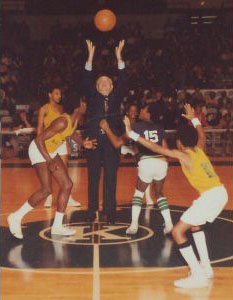 |
JPS Note - A appropriate example of a coach who possibly escaped the stigma due to being able to coach in both periods is Alabama legend [and former Kentucky football coach] Paul "Bear" Bryant. Much like basketball programs looked to Rupp for guidance, "the Deep Southern schools awaited a sign from the chieftain, Paul William 'Bear' Bryant of the University of Alabama. Bryant's powerful Crimson Tide teams had begun to play intersectional games more often than the sister schools of the SEC. There, the lily-whiteness of the Tide became more obvious to the nation. Sportswriter Jim Murray of the Los Angeles Times began a steady barrage of columns blasting Bryant. In the fall of 1970, in Birmingham, Southern Cal routed Alabama on the strength of three touchdowns scored by black Trojan fullback Sam Cunningham."
Bryant later found out from John McKay, the coach of the Trojans, that they [USC] were recruiting a Junior College player, John Mitchell, who was originally from Alabama. Bryant got the name of the recruit and set out to sign him himself, which he did. Not until 1971 did a black player step on the gridiron in an Alabama uniform [Mitchell] and was followed the next year by sophomore running back Wilbur Jackson.
(All above quotes from article by Ed Hinton, Atlanta Journal and Constitution, "Run for Respect," September 7, 1986.)
|
There is little doubt, however that in each era, someone comes along and takes basketball to a higher level. Some of the advances are so fascinating because of the historical extremes they connect. One occurred in the early 1970s when Julius Erving was playing in the ABA. After a typically brilliant high-flying performance, Erving, who was born in 1950, encountered legendary Kentucky coach Adolph Rupp in a hallway near the locker room. Rupp, who was born in 1901, was the essence of basketball conservatism and the flamboyant Erving was the polar opposite of wht Rupp wanted, and what he taught. That, however, was before Rupp watched Erving play a game in Louisville. After the game, Rupp told Erving, "You made me realize that there's something I've been teaching all these years that I need to re-think. And that's that a player cannot leave his feet and not have his mind made up. I have always coached that any time you leave your feet, know exactly what you're going to do. But I have to re-think that." Erving still smiles at the memory. "That left him open to thinking about leaving your feet and letting things happen," Erving said, and then added proudly: "That's changing a purist." (The Official NBA Encyclopedia 3rd Edition, 2000 pg. 14.) |
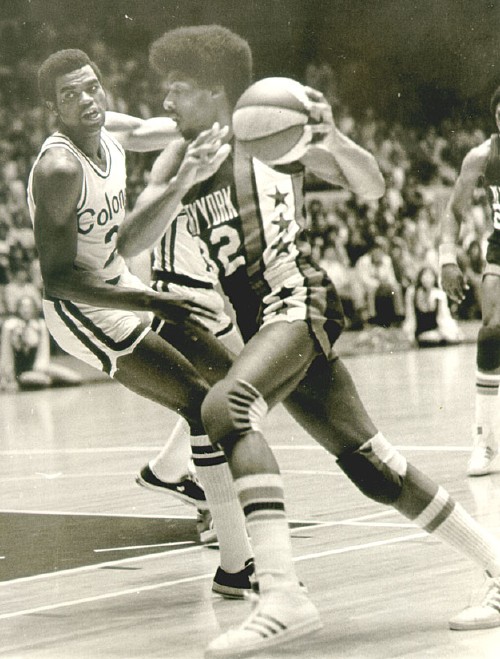 |
That game may have also been the source of an article written about Erving after he and the Nets defeated the Kentucky Colonels in the 1974 ABA playoffs. In the article, Rupp is quoted extensively about Erving, and he has nothing but glowing praise for the man.
|
Erving has the confidence that only the greats have. Rupp compared him to a baseball great. "He's a basketball Babe Ruth," Rupp said. "The Babe pointed to the stands and said he would hit a home run there. Julius is the same way. Everybody in the house knew he was going to take the last shot in the third game of the playoffs against us. He wanted to do it because he knew he could do it." Rupp never tires of talking about Erving. "A lot of guys pour in points and you know it," The Baron observed. "But Julius surprises you with the final stats. One game against us he had five points in the first half. When I checked the final score sheet he had 41. He's music personified. I'll bet if you gave him a Stradivarius violin, he'd play it for you." |
(Above quotes in article by Charles Morey "Mr. Basketball Says: 'Julius Erving is the Greatest Player of All Time !', Pro Basketball Stars of 1975)
In 1972, the Commonwealth Athletic Club of Kentucky began to award the most outstanding college basketball player with the "Adolph F. Rupp Trophy". The award was one that Rupp took great personal interest in and hoped would be his legacy. "Son, more than anything, I want that trophy to be what I'm remembered for. Every year, I want them to know that the award for the best player in the country is named after me," said Rupp to a reporter in 1977, months before he died. (Burlington (NC) Daily-Times, December 13, 1977.)
Despite dying of cancer and diabetes, Rupp made it a point to travel to New York City in 1977 to award the trophy in his name to the season's winner, Marques Johnson of UCLA, just as he had in years past. It would be his last hurrah and public appearance for many in the media who had covered him during his career. "Have you seen the trophy?" Rupp asked a visitor, puffing out his chest and pointing to a copper-colored piece standing in the corner of the crowded hotel room. "They're going to have to have four guys carry it back for Marques. It's too heavy for any one man." (Long Beach (CA) Press-Telegram, December 13, 1977, C-2).
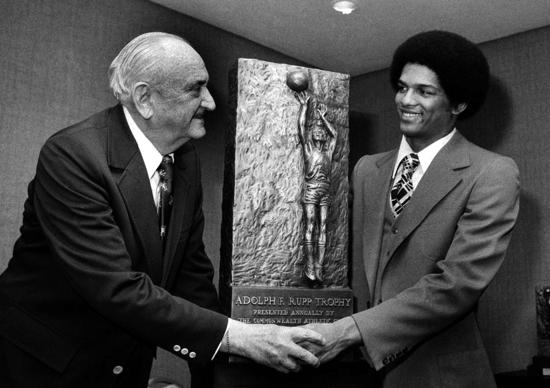 |
Around that time, Rupp was in Atlanta at the 1977 NCAA Final Four where he gave an emotional and memorable farewell speech. Author Dan Doyle was in attendance and remembers Rupp saying that basketball created "this wonderful tapestry that brought people together from different creeds and colors . . ." - ("Black History Month: Shades of Gray" by Vahe Gregorian, St. Louis Post-Dispatch, February 13, 2005)
Later that year back in Lexington, Rupp would die in the hospital, after listening to his beloved Wildcats beat his alma mater, the Kansas Jayhawks on Adolph Rupp Night, December 10, 1977.
UK Sports Information Director, Russell Rice, asked Rupp on his deathbed how he would like his life to be summed up. Reportedly replied Rupp, "Just say he did the best he could. That's good enough for me." (from Adolph Rupp: Kentucky's Basketball Baron, by Russell Rice, Sagarmore Publishing (1994), page 205.)
Commenting on the black-white situation, Rupp did say: "You have to consider a player's eligibility not whether he's colored or white." Rupp added: "The positive side is determined by the Supreme Court. The negative side is by the old diehards who want the traditional policy. But the younger generation has gotten away from it. And until the older generation is gone, It'll take us that long to catch up with the rest of the country." - "A Black Will Lead KU Five," Los Angeles Sentinel, July 2, 1970.
"I never heard him say one bad comment about blacks." Vernon Hatton, member of the 1958 National Champions. - by Chip Alexander, Raleigh News and Observer, "Remembering Rupp," 1997.
"It's very wrong to put that burden on Adolph Rupp. Adolph Rupp was not responsible for discrimination. Our society was responsible for creating an environment which was conducive to accept that." - John Thompson, "Glory in Black and White," CBS, April 2002.
"Adolph Rupp was a man of his times - that's all he was. There were no African-American athletes playing in the South. And we couldn't find anything that he said on the record that was racist - ever. Even though I've read books that claimed he was a racist and said these things, we couldn't find them." - Jerry Bruckheimer, producer of the movie Glory Road (Disney 2006) in article "On the Road to Glory: Disney Retells a Texas Legend," by Annabelle Robertson, crosswalk.com.
"My real serious meeting with Coach Rupp, was after he had already retired. He still had an office in the Coliseum. He called me into his office as I was walking by. I said and 'Hey coach how are you?' He said 'I'm fine.' He said 'I just want you to know one thing.' He said 'I want you to know I'm glad you're here.' I had no doubt he was 100% serious about that. He said 'I'm really glad you're here.'" - Jack Givens on Southern Hoops: A History of SEC Basketball Part Three (1971-1979), (February 2023).
"All I know is that he helped me get an opportunity to play ball at a school where I was an All-American. I can always say I'm eternally grateful to that guy. . . I only know what he did for me. And I only judge people by the way they are with me, not how they may be with someone else. He helped me get where I am." - Jim Tucker, Paris (KY) native, All-American at Duquesne and former Harlem Globetrotter in article "Paris Native Remembers a Different Rupp," by Tom Leach, Cawood on the Cats, Vol. 9, September 7, 1991.
"Let me tell you something about Rupp. All I ever hear from people is that he was a racist. You know what? He did hate black guys - who couldn't play ! He also hated white guys who couldn't play, blue guys who couldn't play, and green guys who couldn't play, and Muslims who couldn't play. That was it. All these people who never met the guy said he was a racist. I knew the guy. I traveled with him, I spent time with him. I never saw any sign from him or heard anything from him that indicated to me that he was a racist or a bigot in any way. Now cheap, that was another story. . ." Let Me Tell You a Story: A Lifetime in the Game by Red Auerbach and John Feinstein, Little-Brown, 2004 pp. 83-84.
"I knew him (Rupp) for a long time and nothing he ever did or said made me think this guy was prejudiced." - Cawood Ledford, by David Perlmutt, Charlotte Observer, "Rupp Family Wants His Honor In Tact," March 15, 1997.
"I know Rupp's reputation and what he's said and what other people have said. I don't think he was a racist at all. I think he was a man of his own mind." Thornton Jenkins (basketball official who refereed the 1966 UK-Texas Western Championship game), "Denver Chevrolets, Chaffee Chatters and the Las Vegas Steelers?" by Mike Mitchell, SEMissourian.com, February 3, 2006.
"People who didn't know him, went through the myth, and the legend and all the rumors more than anything else, and did not go directly to the people who knew Adolph, because if you talk to those people that were close to him, he was very concerned about race. He was very concerned about, you know, segregation, he was very concerned about when is it going to happen in the South." Pat Riley in interview with Dick Gabriel, Adolph Rupp: Myth, Legend and Fact, WKYT, 2005.
"I've never heard that Adolph Rupp was racist. That is such a carelessly used term that I'm not sure that people who use it understand what they mean. No discussion of that nature ever came up in our conversation. I do recall that he was sorely opposed to lazy cows, as he pointed to one lying on the ground in the field and said, 'That heifer would be sitting on the end of the bench.'" - Furman Bisher, 2002.
"I was with Lancaster and Hall when they went to Scottsville to recruit Jim McDaniels. I was with Rupp, Lancaster and Joe B. when they went to Louisville to recruit Jerome Perry. I was in Rupp's office when Jim Rose stopped by on his way home to Hazard from a visit to Western Kentucky University and said he wouldn't sign with any school until he got back in touch with Rupp. . . .
In retrospect, I often wonder why any of those people writing bad things about Rupp never contact me. I have the Rupp tapes telling the story of his life, in his own words. He leaves out nothing, including the point-shaving scandals and the loss to Texas Western. Perhaps they are afraid I and the tapes won't, or is it will, reveal the truth?" - by Russell Rice in article "Racist label a bum rap for Adolph Rupp", The Cats Pause, date unknown (approx. late December 1991 or early 1992).
"In conversations professional and personal from our introduction in 1966 until his death in 1977, I never heard him say a racist word. The late University of Kentucky basketball coach needs no defense by a sportswriter who knew him only in his last years. His decades of fund-raising work for the Shriners Children's Hospital is all the evidence anyone needs of his good-heartedness. But the race thing keeps coming up, and it bothers me because it doesn't ring true. Not the Rupp I knew." - by Dave Kindred, Lexington Herald Leader, "Calling Rupp a Racist Just Doesn't Ring True," December 22, 1991.
"I think he would look at me and say, 'You've hired a heck of a basketball coach.' There are a lot of misunderstandings about Coach Rupp. The one thing I know about Coach Rupp is that he was not a racist. That is one thing I know. Coach Rupp was a man of his times, he was a product of his times. But I know for a fact and I know him as well as anyone." - C.M. Newton, questioned by Curry Kirkpatrick on Rupp's reaction to Kentucky hiring Orlando Smith as head coach at UK in 1997. ESPN cover story "Mr. Smith Goes to Lexington," May 12, 1997.
"The kids in the community would surround us, and he'd hand out tickets to the circus," said Farren Rupp-Hill, who was 9 when Rupp died in 1977 of cancer. "And near the end, even when he was sick, he'd get out of bed and go see a kid who he promised he'd visit before an operation. He had a big heart. That's the man I remember." - by David Perlmutt, Charlotte Observer, "Rupp Family Wants His Honor In Tact," March 15, 1997.
In a post-game press conference after his team was beaten by Florida State in the NCAA Tournament, Rupp's last game as a head coach, he sarcastically said to the reporters "I want to thank you for all your kindness through the years. I'm not nearly the mean old man you fellows have led me to believe I am." - Russell Rice, Big Blue Machine The Last Hurrah.
Rupp's all-time all-opponent squad includes six black players. - Lexington Herald Leader, "Kentucky a Leader in Integrating SEC Sports," March 31, 1990, Pg D14.
JPS Note: These players were Elgin Baylor (Seattle), Cazzie Russell (Michigan), Guy Rodgers (Temple), Austin Carr (Notre Dame), Dean Meminger (Marquette) and Artis Gilmore (Jacksonville). Twenty players were named in total, the complete list is found in John McGill's book Kentucky Sports, Jim Host Associates, 1978.
Below is what Rupp said about each one:
![]()
Return to top
![]()
Return to Kentucky Wildcat Basketball Page.
Jon Scott